Pulmonary arterial hypertension (PAH) is a rare, life-threatening disorder characterized by elevated pressure in the pulmonary arteries that quickly progresses to right ventricular failure and premature death. Expert consensus recommends early diagnosis and immediate treatment to improve survival in this mostly younger adult patient population. In addition to knowing how to recognize and diagnose PAH, physicians must also be able to initiate appropriate therapeutic strategies (generally combination therapies using multiple drug classes) and be aware of emerging treatment modalities to optimize outcomes.
In 2022, updates to the European Society of Cardiology (ESC)/European Respiratory Society (ERS) guidelines included recommending combination therapy based on World Health Organization Functional Class (WHO-FC) and other factors, outlined below, in making decisions about treating PAH.

In treating patients with PAH, most should be initiated on an endothelin receptor antagonist (ERA) and phosphodiesterase-5 inhibitor (PDE-5i) therapy and some might need triple therapy.
Listen to insights from experts Dr. John Ryan and Dr. Vallerie McLaughlin about the decision-making process for treating patients with PAH.

This activity is provided by Integrity CE, LLC.
This activity is supported by educational grants from AstraZeneca Pharmaceuticals and Merck Sharp & Dohme LLC.
Pathogenic germline BRCA mutations profoundly influence breast cancer risk, with carriers facing lifetime penetrance exceeding 60% and heightened vulnerability to subsequent malignancies. Genetic testing is crucial for informing prophylactic measures, surgical decisions, and therapeutic strategies, yet remains severely underutilized. This expert-led, evidence-based webinar provides surgeons and advanced practice providers with essential skills to identify testing candidates, provide comprehensive patient counseling, and offer personalized therapy – ultimately improving outcomes for patients with hereditary breast cancer predisposition. Join Drs. Hunt, Mamounas, and Robson to hear their insights on integrating updated testing guidelines into practice, optimizing surgical and therapeutic care, and emerging strategies and clinical trials.
This educational activity has been designed to meet the needs of breast and general surgeons and surgical advanced practice professionals who treat and manage patients with breast cancer.
Upon completion of this educational activity, participants should be able to:
 |
Kelly K. Hunt, MD, FACS, FSSO Olla Stribling Distinguished Chair for Cancer Research Chair, Department of Breast Surgical Oncology The University of Texas MD Anderson Cancer Center Houston, Texas |
 |
Eleftherios Mamounas, MD, MPH, FACS Medical Director, Breast Program and Research Activities AdventHealth Cancer Institute Professor of Surgery University of Central Florida Clinical Professor of Clinical Sciences Florida State University College of Medicine Tallahassee, Florida |
 |
Mark Robson, MD Chief, Breast Medicine Service Attending Physician Breast Medicine and Clinical Genetics Services Department of Medicine Memorial Sloan Kettering Cancer Center Professor of Medicine Weill Cornell Medical College New York, New York |
Integrity CE, LLC requires instructors, planners, managers, and other individuals who are in a position to control the content of this activity to disclose any financial relationships with ineligible companies. All identified relevant financial relationships are thoroughly vetted by Integrity CE, LLC for fair balance, scientific objectivity of studies mentioned in the materials or used as the basis for content, and appropriateness of patient care recommendations. All relevant financial relationships have been mitigated.
The following faculty/planners reported the financial relationships or relationships to products or devices they have with ineligible companies related to the content of this CME activity:
Kelly K. Hunt, MD, FACS, FSSO
Advisory Board: ArmadaHealth
Editor-in-Chief Current Breast Cancer Reports: Springer Nature
Honorarium: AstraZeneca
Research Funding: Cairn Surgical, Lumicell
Eleftherios Mamounas, MD, MPH, FACS
Consultant: Biotheranostics, Delphi Diagnostics, Exact Sciences, GE Healthcare, Merck, Novartis, Provapharm
Speaker: Exact Sciences, Merck, Novartis
Stock Ownership: Moderna
Mark Robson, MD
Advisory Boards: Artios Pharma, AstraZeneca, Change Healthcare, Daiichi Sankyo, Epic Sciences, GlaxoSmithKline, Merck, Pfizer, Tempus Lab, Zenith Pharma
Consultant: Artios Pharma, AstraZeneca, Change Healthcare, Daiichi Sankyo, Epic Sciences, GlaxoSmithKline, Merck, Pfizer, Tempus Lab, Zenith Pharma
Research Funding: AstraZeneca, Merck, Pfizer
The Integrity CE, LLC planners and managers do not have any financial relationships or relationships to products or devices with ineligible companies.
There are no fees for participating and receiving CME credit for this activity. During the period of April 15, 2025 through April 15, 2026, participants must:
A statement of credit will be issued only upon receipt of a completed posttest with a score of 60% or better and a completed activity evaluation form.
Integrity CE, LLC is accredited by the Accreditation Council for Continuing Medical Education (ACCME) to provide continuing medical education for physicians.
Integrity CE, LLC designates this enduring material for a maximum of 0.75 AMA PRA Category 1 CreditTM. Physicians should claim only the credit commensurate with the extent of their participation in the activity.
For information about ACCME accreditation of this activity, please contact Integrity CE, LLC at (855) 835-4004 or cme@integrityce.com.
This educational activity may contain discussion of published and/or investigational uses of agents that are not indicated by the FDA. Integrity CE, LLC does not recommend the use of any agent outside of the labeled indications.
The opinions expressed in the educational activity are those of the faculty and do not necessarily represent the views of any organization associated with this activity. Please refer to the official prescribing information for each product for discussion of approved indications, contraindications, and warnings.
Internet
When you participate in an online educational activity sponsored by Integrity CE, LLC, you will be asked for your name, degree(s), affiliation(s), street address, telephone number and…(continued)
Minimum Processor: Intel Pentium 4, 2.33 + GHz (or equivalent)
Operating Systems: Windows XP, Windows 2000, Windows Vista, Windows 7, Windows 10, and Mac OS
Plug-in: Adobe® Flash® Player 10
For optimal performance, the use of Internet Explorer below 8 is not recommended
For a full listing of recommended operating systems, browsers, and system configurations, please click on the link below:
Click here for more information on minimum system requirements
The information provided at this activity is for continuing education purposes only and is not meant to substitute for the independent medical judgment of a physician relative to diagnostic and treatment options of a specific patient’s medical condition.

This activity is provided by Integrity CE, LLC.
This activity is supported by an educational grant from ALK-Abello, Inc.
Allergic rhinitis with or without conjunctivitis (AR/C) in children and adolescents is a commonly misunderstood, misdiagnosed, and mistreated condition. AR/C exerts a significant effect on quality of life and has deleterious effects on sleep, academic performance, family functioning, and involvement in outdoor activities. Fortunately, there have been advances in the diagnosis and treatment of AR/C that support improved diagnosis and care of patients with inadequate relief from symptom-relieving therapies, including broadly available specific immunoglobulin E (lgE) tests, advances in understanding of immune mechanisms, and newer allergen immunotherapies including oral tablet immunotherapy.
This program will review these important updates to provide clinicians with the knowledge and skills to provide care to children and adolescents with AR/C that is aligned with the latest evidence and best practices.
This educational activity has been designed for pediatricians, pediatric nurse practitioners, and pediatric physician assistants.
Upon completion of this educational activity, participants should be able to:
 |
Michelle Yasharpour, MD Allergy and Immunology Cedars Sinai Medical Center Beverly Hills, California |
Integrity CE, LLC requires instructors, planners, managers, and other individuals who are in a position to control the content of this activity to disclose any financial relationships with ineligible companies. All identified relevant financial relationships are thoroughly vetted by Integrity CE, LLC for fair balance, scientific objectivity of studies mentioned in the materials or used as the basis for content, and appropriateness of patient care recommendations. All relevant financial relationships have been mitigated.
The following faculty/planners reported the financial relationships or relationships to products or devices they have with ineligible companies related to the content of these CME activities:
Michelle Yasharpour, MD does not have any financial relationships or relationships to products or devices with ineligible companies.
The Integrity CE, LLC planners and managers do not have any financial relationships or relationships to products or devices with ineligible companies.
There are no fees for participating and receiving CME/CE credit for this activity. During the period of June 27, 2024 through May 31, 2025, participants must:
A statement of credit will be issued only upon receipt of a completed posttest with a score of 65% or better and a completed activity evaluation form.
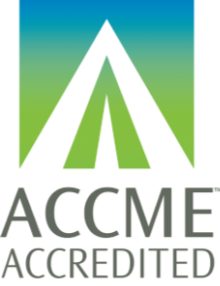 |
Integrity CE, LLC is accredited by the Accreditation Council for Continuing Medical Education (ACCME) to provide continuing medical education for physicians. |
Integrity CE, LLC designates this enduring material for a maximum of 0.75 AMA PRA Category 1 Credit™. Physicians should claim only the credit commensurate with the extent of their participation in the activity.
For information about ACCME accreditation of this activity, please contact Integrity CE, LLC at (855) 835-4004 or cme@integrityce.com.
This educational activity may contain discussion of published and/or investigational uses of agents that are not indicated by the FDA. Integrity CE, LLC does not recommend the use of any agent outside of the labeled indications.
The opinions expressed in the educational activity are those of the faculty and do not necessarily represent the views of any organization associated with this activity. Please refer to the official prescribing information for each product for discussion of approved indications, contraindications, and warnings.
Internet
When you participate in an online educational activity sponsored by Integrity CE, LLC, you will be asked for your name, degree(s), affiliation(s), street address, telephone number and…(continued)
Minimum Processor: Intel Pentium 4, 2.33 + GHz (or equivalent)
Operating Systems: Windows XP, Windows 2000, Windows Vista, Windows 7, Windows 10, and Mac OS
Plug-in: Adobe® Flash® Player 10
For optimal performance, the use of Internet Explorer below 8 is not recommended
For a full listing of recommended operating systems, browsers, and system configurations, please click on the link below:
Click here for more information on minimum system requirements
The information provided at this activity is for continuing education purposes only and is not meant to substitute for the independent medical judgment of a physician relative to diagnostic and treatment options of a specific patient’s medical condition.

This activity is provided by Integrity CE, LLC.
This activity is supported by an independent medical education grant from Regeneron Pharmaceuticals, Inc and Sanofi.
During this interactive webcast, our esteemed faculty will discuss unmet needs in the management of patients with chronic rhinosinusitis with nasal polyps (CRSwNP). Key topics will include patient evaluation, treatment planning and patient selection criteria for surgical or biologic treatment, and strategies for the appropriate use of biologics in patients with CRSwNP.
This educational activity has been designed for US otolaryngologists, otolaryngic allergists, and otolaryngology nurse practitioners and physician assistants.
Upon completion of this educational activity, participants should be able to:
 |
Joseph K. Han, MD, FARS, FAAOA Professor of OtoHNS Vice Chair Old Dominion University Eastern Virginia Medical School Norfolk, Virginia |
 |
Stella Lee, MD Section Chief Rhinology Brigham and Women’s Hospital Harvard Medical School Boston, Massachusetts |
Integrity CE, LLC requires instructors, planners, managers, and other individuals who are in a position to control the content of this activity to disclose any financial relationships with ineligible companies. All identified relevant financial relationships are thoroughly vetted by Integrity CE, LLC for fair balance, scientific objectivity of studies mentioned in the materials or used as the basis for content, and appropriateness of patient care recommendations. All relevant financial relationships have been mitigated.
The following faculty/planners reported the financial relationships or relationships to products or devices they have with ineligible companies related to the content of these CME activities:
Joseph K. Han, MD, FARS, FAAOA
Research Consultant: AstraZeneca, GlaxoSmithKline, Regeneron, Sanofi
Stella Lee, MD
Consultant: AstraZeneca, Genentech, GlaxoSmithKline, Lyra Therapeutics, Optinose, Regeneron, Sanofi
Equity: Diceros Therapeutics
The Integrity CE, LLC planners and managers do not have any financial relationships or relationships to products or devices with ineligible companies.
There are no fees for participating and receiving CME credit for this activity. During the period of November 27, 2024 through November 27, 2025, participants must:
A statement of credit will be issued only upon receipt of a completed posttest with a score of 75% or better and a completed activity evaluation form.

Integrity CE, LLC is accredited by the Accreditation Council for Continuing Medical Education (ACCME) to provide continuing medical education for physicians.
Integrity CE, LLC designates this enduring material for a maximum of 1.0 AMA PRA Category 1 CreditTM. Physicians should claim only the credit commensurate with the extent of their participation in the activity.
For information about ACCME accreditation of this activity, please contact Integrity CE, LLC at (855) 835-4004 or cme@integrityce.com.
This educational activity may contain discussion of published and/or investigational uses of agents that are not indicated by the FDA. Integrity CE, LLC does not recommend the use of any agent outside of the labeled indications.
The opinions expressed in the educational activity are those of the faculty and do not necessarily represent the views of any organization associated with this activity. Please refer to the official prescribing information for each product for discussion of approved indications, contraindications, and warnings.
Internet
When you participate in an online educational activity sponsored by Integrity CE, LLC, you will be asked for your name, degree(s), affiliation(s), street address, telephone number and…(continued)
Minimum Processor: Intel Pentium 4, 2.33 + GHz (or equivalent)
Operating Systems: Windows XP, Windows 2000, Windows Vista, Windows 7, Windows 10, and Mac OS
Plug-in: Adobe® Flash® Player 10
For optimal performance, the use of Internet Explorer below 8 is not recommended
For a full listing of recommended operating systems, browsers, and system configurations, please click on the link below:
Click here for more information on minimum system requirements
The information provided at this activity is for continuing education purposes only and is not meant to substitute for the independent medical judgment of a physician relative to diagnostic and treatment options of a specific patient’s medical condition.

This activity is provided by Integrity CE, LLC.
This activity is supported by an independent medical education grant from Regeneron Pharmaceuticals, Inc and Sanofi.
During this series of case-based challenges, our esteemed faculty will discuss guidelines and supporting evidence related to contemporary management of patients with chronic rhinosinusitis with nasal polyps (CRSwNP). Key topics will include assessment of patient quality of life (QOL) and strategies to incorporate current management recommendations and recent clinical trial data into clinical practice.
This educational program is designed for allergists, immunologists, otolaryngologists, and specialty nurse practitioners and physician assistants that manage patients with CRSwNP.
Upon completion of this educational activity, participants should be able to:
 |
Gregory W. Bensch, MD Physician, Allergy Immunology & Asthma Medical Group Stockton, California |
 |
Nicholas C. Kolinsky, DO Clinical Adjunct Faculty Allergy and Immunology Lincoln Memorial University-DeBusk College of Osteopathic Medicine Harrogate, Tennessee |
 |
Hannah Neuhaus, MD Clinical Allergist and Immunologist Allergy, Asthma, and Immunology Associates Lincoln, Nebraska |
 |
Amber Patterson, MD, FAAAAI, ACAAI Clinical Assistant Professor College of Medicine University of Toledo Toledo, Ohio |
 |
Anju T. Peters, MD Professor of Medicine Director of Clinical Research Division of Allergy/Immunology and Otolaryngology Northwestern University Feinberg School of Medicine Chicago, Illinois |
 |
Dar Siri, MD, FAAAAI, FACAAI, FISAAI Assistant Professor of Otolaryngology Head & Neck Surgery Southern Illinois University School of Medicine CEO, Midwest Allergy Sinus Asthma CEO, SWIA Clinical Research Springfield, Illinois |
Integrity CE, LLC requires instructors, planners, managers, and other individuals who are in a position to control the content of this activity to disclose any financial relationships with ineligible companies. All identified relevant financial relationships are thoroughly vetted by Integrity CE, LLC for fair balance, scientific objectivity of studies mentioned in the materials or used as the basis for content, and appropriateness of patient care recommendations. All relevant financial relationships have been mitigated.
The following faculty/planners reported the financial relationships or relationships to products or devices they have with ineligible companies related to the content of this CME activity:
Gregory W. Bensch, MD
Consultant/Speaker: AstraZeneca, Blueprint, Dermavant, GlaxoSmithKline, Incyte, Regeneron, Sanofi
Nicholas C. Kolinsky, DO
Advisory Boards: ADMA Biologics, AstraZeneca, Hikma Pharmaceuticals, KalVista Pharmaceuticals, Novartis Pharmaceuticals, Pharming
Speaker: Amgen, AstraZeneca, CSL Behring, GlaxoSmithKline, Hikma Pharmaceuticals, Sanofi Pharmaceuticals
Hannah Neuhaus, MD does not have any relevant financial relationships or relationships to products or devices with ineligible companies.
Amber Patterson, MD, FAAAAI, ACAAI
Speaker: GlaxoSmithKline
Anju Peters, MD
Advisory Boards: AstraZeneca, GlaxoSmithKline, Merck, Regeneron, Sanofi
Consulting: OptiNose
Research: AstraZeneca, Merck, Regeneron, Sanofi
Dar Siri, MD, FAAAAI, FACAAI, FISAAI
Clinical Research: AbbVie, Aclaris, Aimmune, ALK, Alladapt, Allakos, Amgen, Apollo Therapeutics, Areteia, AstraZeneca, Cour, DBV, Dermira (Lilly), Igenix, Galderma, GlaxoSmithKline, Jasper, Incyte, Merck, Novartis, Optinose, Q32, Regeneron, Pfizer, Sanofi, Shiniogi, Takeda
Consultancy/Advisory Boards/Speakers’ Bureaus: AbbVie, Aimmune, Allergenis, DBV, Genentech, GlaxoSmithKline, Incyte, Optinose, Regeneron, Sanofi
Stock: AbbVie, Merck
Part Time CMO: Novear
The Integrity CE, LLC planners and managers do not have any financial relationships or relationships to products or devices with ineligible companies.
There are no fees for participating and receiving CME credit for this activity. During the period of February 28, 2025 through February 28, 2026, participants must:
A statement of credit will be issued only upon receipt of a completed posttest with a score of 60% or better and a completed activity evaluation form.
Integrity CE, LLC is accredited by the Accreditation Council for Continuing Medical Education (ACCME) to provide continuing medical education for physicians.
Integrity CE, LLC designates this enduring material for a maximum of 1.0 AMA PRA Category 1 Credit™. Physicians should claim only the credit commensurate with the extent of their participation in the activity.
For information about ACCME accreditation of this activity, please contact Integrity CE, LLC at (855) 835-4004 or cme@integrityce.com.
This educational activity may contain discussion of published and/or investigational uses of agents that are not indicated by the FDA. Integrity CE, LLC does not recommend the use of any agent outside of the labeled indications.
The opinions expressed in the educational activity are those of the faculty and do not necessarily represent the views of any organization associated with this activity. Please refer to the official prescribing information for each product for discussion of approved indications, contraindications, and warnings.
Internet
When you participate in an online educational activity sponsored by Integrity CE, LLC, you will be asked for your name, degree(s), affiliation(s), street address, telephone number and…(continued)
Minimum Processor: Intel Pentium 4, 2.33 + GHz (or equivalent)
Operating Systems: Windows XP, Windows 2000, Windows Vista, Windows 7, Windows 10, and Mac OS
Plug-in: Adobe® Flash® Player 10
For optimal performance, the use of Internet Explorer below 8 is not recommended
For a full listing of recommended operating systems, browsers, and system configurations, please click on the link below:
Click here for more information on minimum system requirements
The information provided at this activity is for continuing education purposes only and is not meant to substitute for the independent medical judgment of a physician relative to diagnostic and treatment options of a specific patient’s medical condition.

This CME activity for ACCME and MOC credit is provided by Integrity CE, LLC.
This CE activity for ACPE and ANCC credit is jointly provided by Global Education Group and Integrity CE, LLC.
This activity is supported by an educational grant from Salix Pharmaceuticals.
This video-based activity will discuss improving inpatient hospital care along with reducing rehospitalizations for patients with hepatic encephalopathy (HE). Our expert faculty will present current guideline recommendations to achieve accurate diagnosis and summarize clinical trial evidence regarding the efficacy and safety of therapies for treatment of acute episodes of overt HE and prevention of their recurrence. Transitional care strategies to prevent future hospitalizations among patients with HE will also be examined.
This educational initiative has been designed for hospitalists, general internists, subspecialists, and family practitioners caring for hospitalized patients.
Upon completion of this educational activity, participants should be able to:
 |
Jasmohan S. Bajaj, MBBS, MD, MS, FACG Professor of Medicine Division of Gastroenterology, Hepatology, and Nutrition Virginia Commonwealth University Richmond VA Medical Center Richmond, Virginia |
Integrity CE, LLC and Global Education Group require instructors, planners, managers, and other individuals who are in a position to control the content of this activity to disclose any financial relationships with ineligible companies. All identified relevant financial relationships are thoroughly vetted by Integrity CE, LLC and Global Education Group for fair balance, scientific objectivity of studies mentioned in the materials or used as the basis for content, and appropriateness of patient care recommendations. All relevant financial relationships have been mitigated.
The following faculty/planners reported the relevant financial relationships or relationships to products or devices they have with ineligible companies related to the content of these CME activities:
Jasmohan S. Bajaj, MBBS, MD, MS, FACG
Research Grants: Bausch, Mallinckrodt, Grifols, Sequana
The Integrity CE, LLC and Global Education Group planners and managers do not have any relevant financial relationships or relationships to products or devices with ineligible companies.
There are no fees for participating and receiving CME credit for this activity. During the period of February 27, 2025 through February 27, 2026, participants must:
A statement of credit will be issued only upon receipt of a completed posttest with a score of 75% or better and a completed activity evaluation form. For pharmacist/ACPE learners, please check the CPE monitor for your CE credit within 60 days of the activity. Credit cannot be issued after 60 days.
Physician Continuing Education

Integrity CE, LLC is accredited by the Accreditation Council for Continuing Medical Education (ACCME) to provide continuing medical education for physicians.
Integrity CE, LLC designates this enduring material for a maximum of 0.75 AMA PRA Category 1 Credit™. Physicians should claim only the credit commensurate with the extent of their participation in the activity.
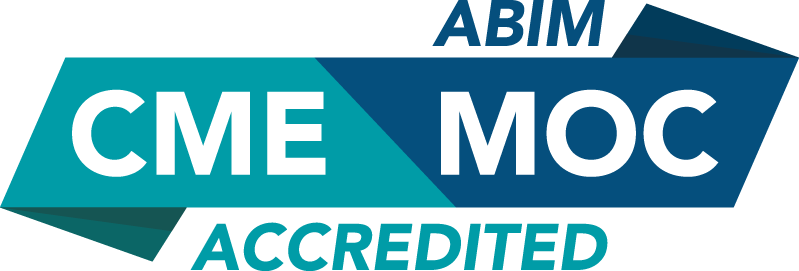
Successful completion of this CME activity, which includes participation in the evaluation component, enables the participant to earn up to 0.75 MOC point in the American Board of Internal Medicine’s (ABIM) Maintenance of Certification (MOC) program. Participants will earn MOC points equivalent to the amount of CME credits claimed for the activity. It is the CME activity provider’s responsibility to submit participant completion information to ACCME for the purpose of granting ABIM MOC credit.
Nursing Continuing Education
Global Education Group is accredited as a provider of nursing continuing professional development by the American Nurses Credentialing Center’s Commission on Accreditation.
This educational activity for 0.75 contact hour including 0.0 pharmacotherapeutic contact hour is provided by Global Education Group. Nurses should claim only the credit commensurate with the extent of their participation in the activity.
Pharmacist Continuing Education
Accreditation Statement
 |
Global Education Group is accredited by the Accreditation Council for Pharmacy Education as a provider of continuing pharmacy education with Commendation. |
Credit Designation
Global Education Group designates this continuing education activity for 0.75 contact hour (0.075 CEU) of the Accreditation Council for Pharmacy Education. (Universal Activity Number – 0530-9999-25-003-H01-P.)
This is a knowledge-based activity.
For information about ACCME accreditation of this activity, please contact Integrity CE, LLC at (855) 835-4004 or cme@integrityce.com.
For information about ACPE or ANCC approval of this activity, please contact Global Education Group at (303) 395-1782 or cme@globaleducationgroup.com.
This educational activity may contain discussion of published and/or investigational uses of agents that are not indicated by the FDA. Integrity CE, LLC and Global Education Group do not recommend the use of any agent outside of the labeled indications.
The opinions expressed in the educational activity are those of the faculty and do not necessarily represent the views of any organization associated with this activity. Please refer to the official prescribing information for each product for discussion of approved indications, contraindications, and warnings.
Internet
When you participate in an online educational activity sponsored by Integrity CE, LLC, you will be asked for your name, degree(s), affiliation(s), street address, telephone number and…(continued)
Minimum Processor: Intel Pentium 4, 2.33 + GHz (or equivalent)
Operating Systems: Windows XP, Windows 2000, Windows Vista, Windows 7, Windows 10, and Mac OS
Plug-in: Adobe® Flash® Player 10
For optimal performance, the use of Internet Explorer below 8 is not recommended
For a full listing of recommended operating systems, browsers, and system configurations, please click on the link below:
Click here for more information on minimum system requirements
The information provided at this activity is for continuing education purposes only and is not meant to substitute for the independent medical judgment of a physician relative to diagnostic and treatment options of a specific patient’s medical condition.

This activity is provided by Integrity CE, LLC.
This activity is supported by educational grants from AstraZeneca Pharmaceuticals and Merck Sharp & Dohme LLC.
Pathogenic germline BRCA mutations profoundly influence breast cancer risk, with carriers facing lifetime penetrance exceeding 60% and heightened vulnerability to subsequent malignancies. Genetic testing is crucial for informing prophylactic measures, surgical decisions, and therapeutic strategies, yet remains severely underutilized. This expert-led, evidence-based social media series provides surgeons and advanced practice providers with essential skills to identify testing candidates, provide comprehensive patient counseling, and offer personalized therapy – ultimately improving outcomes for patients with hereditary breast cancer predisposition. This clinical brief focuses on emerging strategies and clinical trials.
This educational activity was designed for breast and general surgeons and surgical advanced practice professionals who treat and manage patients with breast cancer.
Upon completion of this educational activity, participants should be able to:
 |
Eleftherios Mamounas, MD, MPH, FACS Medical Director, Breast Program and Research Activities AdventHealth Cancer Institute Professor of Surgery University of Central Florida Clinical Professor of Clinical Sciences Florida State University College of Medicine Tallahassee, Florida |
 |
Stephanie L. Graff, MD, FACP, FASCO Director, Breast Oncology Lifespan Cancer Institute Co-Lead, Breast Cancer Translational Disease Research Group Legorreta Cancer Center at Brown University Associate Professor of Medicine Warren Alpert Medical School of Brown University Providence, Rhode Island |
 |
Kelly K. Hunt, MD, FACS, FSSO Olla Stribling Distinguished Chair for Cancer Research Chair, Department of Breast Surgical Oncology The University of Texas MD Anderson Cancer Center Houston, Texas |
Integrity CE, LLC requires instructors, planners, managers, and other individuals who are in a position to control the content of this activity to disclose any financial relationships with ineligible companies. All identified relevant financial relationships are thoroughly vetted by Integrity CE, LLC for fair balance, scientific objectivity of studies mentioned in the materials or used as the basis for content, and appropriateness of patient care recommendations. All relevant financial relationships have been mitigated.
The following faculty/planners reported the financial relationships or relationships to products or devices they have with ineligible companies related to the content of this CME activity:
Stephanie Graff, MD, FACP, FASCO
Consultant: AstraZeneca, Daiichi Sankyo, Genentech, Gilead Sciences, Lilly, Novartis, Pfizer, SeaGen, Stemline/Menarini
Research Funding: AstraZeneca, Daiichi Sankyo, Lilly, Novartis
Stock: HCA Healthcare
Kelly K. Hunt, MD, FACS, FSSO
Advisory Board: ArmadaHealth
Editor-in-Chief Current Breast Cancer Reports: Springer Nature
Honorarium: AstraZeneca
Research Funding: Cairn Surgical, Lumicell
Eleftherios Mamounas, MD, MPH, FACS
Consultant: Biotheranostics, Delphi Diagnostics, Exact Sciences, GE Healthcare, Merck, Novartis, Provapharm
Speaker: Exact Sciences, Merck, Novartis
Stock Ownership: Moderna
The Integrity CE, LLC planners and managers do not have any financial relationships or relationships to products or devices with ineligible companies.
There are no fees for participating and receiving CME credit for this activity. During the period of February 12, 2025 through May 12, 2025, participants must:
A statement of credit will be issued only upon receipt of a completed posttest with a score of 100% and a completed activity evaluation form.
Integrity CE, LLC is accredited by the Accreditation Council for Continuing Medical Education (ACCME) to provide continuing medical education for physicians.
Integrity CE, LLC designates this enduring material for a maximum of 0.25 AMA PRA Category 1 CreditTM. Physicians should claim only the credit commensurate with the extent of their participation in the activity.
For information about ACCME accreditation of this activity, please contact Integrity CE, LLC at (855) 835-4004 or cme@integrityce.com.
This educational activity may contain discussion of published and/or investigational uses of agents that are not indicated by the FDA. Integrity CE, LLC does not recommend the use of any agent outside of the labeled indications.
The opinions expressed in the educational activity are those of the faculty and do not necessarily represent the views of any organization associated with this activity. Please refer to the official prescribing information for each product for discussion of approved indications, contraindications, and warnings.
Internet
When you participate in an online educational activity sponsored by Integrity CE, LLC, you will be asked for your name, degree(s), affiliation(s), street address, telephone number and…(continued)
Minimum Processor: Intel Pentium 4, 2.33 + GHz (or equivalent)
Operating Systems: Windows XP, Windows 2000, Windows Vista, Windows 7, Windows 10, and Mac OS
Plug-in: Adobe® Flash® Player 10
For optimal performance, the use of Internet Explorer below 8 is not recommended
For a full listing of recommended operating systems, browsers, and system configurations, please click on the link below:
Click here for more information on minimum system requirements
The information provided at this activity is for continuing education purposes only and is not meant to substitute for the independent medical judgment of a physician relative to diagnostic and treatment options of a specific patient’s medical condition.

This activity is provided by Integrity CE, LLC.
This activity is supported by an independent educational grant from Regeneron Pharmaceuticals, Inc and Sanofi.
Unfortunately, few clinicians, including gastroenterology specialists, are able to recognize the signs and symptoms of eosinophilic esophagitis (EoE) in children and young adults. This educational activity features expert faculty and case-based vignettes designed to improve clinician knowledge and competence in the diagnosis and management of patients with EoE. This will allow clinicians to provide personalized treatment based on current recommendations and evidence, leading to improved patient outlook and quality of life.
Join our esteemed faculty as they discuss key strategies to improve the outcomes of pediatric patients with EoE. Topics will include early diagnosis, recent clinical trial data regarding new and emerging therapies, and evolving evidence-based recommendations for treatment.
This educational activity has been designed to meet the needs of pediatric gastroenterologists, pediatricians, and specialty and pediatric advanced practice providers.
Upon completion of this educational activity, participants should be able to:
 |
Mirna Chehade, MD, MPH, AGAF, FAAAAI Professor of Pediatrics and Medicine Founding Director, Mount Sinai Center for Eosinophilic Disorders Icahn School of Medicine at Mount Sinai New York, New York |
 |
Evan S. Dellon, MD, MPH Professor, Department of Medicine Division of Gastroenterology and Hepatology Director, Center for Esophageal Diseases and Swallowing University of North Carolina School of Medicine Chapel Hill, North Carolina |
Integrity CE, LLC requires instructors, planners, managers, and other individuals who are in a position to control the content of this activity to disclose any financial relationships with ineligible companies. All identified relevant financial relationships are thoroughly vetted by Integrity CE, LLC for fair balance, scientific objectivity of studies mentioned in the materials or used as the basis for content, and appropriateness of patient care recommendations. All relevant financial relationships have been mitigated.
The following faculty/planners reported the financial relationships or relationships to products or devices they have with ineligible companies related to the content of these CME activities:
Mirna Chehade, MD, MPH, AGAF, FAAAAI
Consultant: Adare/Ellodi, Allakos, AstraZeneca, Bristol Myers Squibb, Nexstone Immunology/Uniquity Bio, Phathom, Recludix Pharma, Regeneron, Sanofi, Shire/Takeda
Research Funding: Adare/Ellodi, Allakos, AstraZeneca, Bristol Myers Squibb, Danone, Regeneron, Shire/Takeda
Evan S. Dellon, MD, MPH
Consultant: AbbVie, Adare/Ellodi, Akesobio, Alfasigma, ALK, Allakos, Amgen, Apollo, Aqilion, Arena/Pfizer, Aslan, AstraZeneca, Avir, Biocryst, Bryn, Calypso, Celgene/Receptos/Bristol Myers Squibb, Celldex, EsoCap, Eupraxia, Dr. Falk Pharma, Ferring, GI Reviewers, GSK, Holoclara, Invea, Knightpoint, LucidDx, Morphic, Nexstone Immunology/Uniquity, Nutricia, Parexel/Calyx, Phathom, Regeneron, Revolo, Robarts/Alimentiv, Sanofi, Shire/Takeda, Target RWE, Upstream Bio
Educational Grants: Allakos, Aqilion, Holoclara, Invea
Research Funding: Adare/Ellodi, Allakos, Arena/Pfizer, AstraZeneca, Celgene/Receptos, Celldex, Eupraxia, Ferring, GSK, Meritage, Miraca, Nutricia, Regeneron, Revolo, Sanofi, Shire/Takeda
The Integrity CE, LLC planners and managers do not have any financial relationships or relationships to products or devices with ineligible companies.
There are no fees for participating and receiving CME credit for this activity. During the period of February 6, 2025 through February 6, 2026, participants must:
A statement of credit will be issued only upon receipt of a completed posttest with a score of 60% or better and a completed activity evaluation form.

Integrity CE, LLC is accredited by the Accreditation Council for Continuing Medical Education (ACCME) to provide continuing medical education for physicians.
Integrity CE, LLC designates this enduring material for a maximum of 0.75 AMA PRA Category 1 CreditTM. Physicians should claim only the credit commensurate with the extent of their participation in the activity.
For information about ACCME accreditation of this activity, please contact Integrity CE, LLC at (855) 835-4004 or cme@integrityce.com.
This educational activity may contain discussion of published and/or investigational uses of agents that are not indicated by the FDA. Integrity CE, LLC does not recommend the use of any agent outside of the labeled indications.
The opinions expressed in the educational activity are those of the faculty and do not necessarily represent the views of any organization associated with this activity. Please refer to the official prescribing information for each product for discussion of approved indications, contraindications, and warnings.
Internet
When you participate in an online educational activity sponsored by Integrity CE, LLC, you will be asked for your name, degree(s), affiliation(s), street address, telephone number and…(continued)
Minimum Processor: Intel Pentium 4, 2.33 + GHz (or equivalent)
Operating Systems: Windows XP, Windows 2000, Windows Vista, Windows 7, Windows 10, and Mac OS
Plug-in: Adobe® Flash® Player 10
For optimal performance, the use of Internet Explorer below 8 is not recommended
For a full listing of recommended operating systems, browsers, and system configurations, please click on the link below:
Click here for more information on minimum system requirements
The information provided at this activity is for continuing education purposes only and is not meant to substitute for the independent medical judgment of a physician relative to diagnostic and treatment options of a specific patient’s medical condition.

This activity is provided by Integrity CE, LLC.
This activity is supported by educational grants from AstraZeneca Pharmaceuticals and Merck Sharp & Dohme LLC.
Pathogenic germline BRCA mutations profoundly influence breast cancer risk, with carriers facing lifetime penetrance exceeding 60% and heightened vulnerability to subsequent malignancies. Genetic testing is crucial for informing prophylactic measures, surgical decisions, and therapeutic strategies, yet remains severely underutilized. This expert-led, evidence-based social media series provides surgeons and advanced practice providers with essential skills to identify testing candidates, provide comprehensive patient counseling, and offer personalized therapy – ultimately improving outcomes for patients with hereditary breast cancer predisposition. This clinical brief focuses on optimizing surgical and therapeutic care.
This educational activity was designed for breast and general surgeons and surgical advanced practice professionals who treat and manage patients with breast cancer.
Upon completion of this educational activity, participants should be able to:
 |
Eleftherios Mamounas, MD, MPH, FACS Medical Director, Breast Program and Research Activities AdventHealth Cancer Institute Professor of Surgery University of Central Florida Clinical Professor of Clinical Sciences Florida State University College of Medicine Tallahassee, Florida |
 |
Stephanie L. Graff, MD, FACP, FASCO Director, Breast Oncology Lifespan Cancer Institute Co-Lead, Breast Cancer Translational Disease Research Group Legorreta Cancer Center at Brown University Associate Professor of Medicine Warren Alpert Medical School of Brown University Providence, Rhode Island |
 |
Kelly K. Hunt, MD, FACS, FSSO Olla Stribling Distinguished Chair for Cancer Research Chair, Department of Breast Surgical Oncology The University of Texas MD Anderson Cancer Center Houston, Texas |
Integrity CE, LLC requires instructors, planners, managers, and other individuals who are in a position to control the content of this activity to disclose any financial relationships with ineligible companies. All identified relevant financial relationships are thoroughly vetted by Integrity CE, LLC for fair balance, scientific objectivity of studies mentioned in the materials or used as the basis for content, and appropriateness of patient care recommendations. All relevant financial relationships have been mitigated.
The following faculty/planners reported the financial relationships or relationships to products or devices they have with ineligible companies related to the content of this CME activity:
Stephanie Graff, MD, FACP, FASCO
Consultant: AstraZeneca, Daiichi Sankyo, Genentech, Gilead Sciences, Lilly, Novartis, Pfizer, SeaGen, Stemline/Menarini
Research Funding: AstraZeneca, Daiichi Sankyo, Lilly, Novartis
Stock: HCA Healthcare
Kelly K. Hunt, MD, FACS, FSSO
Advisory Board: ArmadaHealth
Editor-in-Chief Current Breast Cancer Reports: Springer Nature
Honorarium: AstraZeneca
Research Funding: Cairn Surgical, Lumicell
Eleftherios Mamounas, MD, MPH, FACS
Consultant: Biotheranostics, Delphi Diagnostics, Exact Sciences, GE Healthcare, Merck, Novartis, Provapharm
Speaker: Exact Sciences, Merck, Novartis
Stock Ownership: Moderna
The Integrity CE, LLC planners and managers do not have any financial relationships or relationships to products or devices with ineligible companies.
There are no fees for participating and receiving CME credit for this activity. During the period of February 5, 2025 through May 5, 2025, participants must:
A statement of credit will be issued only upon receipt of a completed posttest with a score of 100% and a completed activity evaluation form.
Integrity CE, LLC is accredited by the Accreditation Council for Continuing Medical Education (ACCME) to provide continuing medical education for physicians.
Integrity CE, LLC designates this enduring material for a maximum of 0.25 AMA PRA Category 1 CreditTM. Physicians should claim only the credit commensurate with the extent of their participation in the activity.
For information about ACCME accreditation of this activity, please contact Integrity CE, LLC at (855) 835-4004 or cme@integrityce.com.
This educational activity may contain discussion of published and/or investigational uses of agents that are not indicated by the FDA. Integrity CE, LLC does not recommend the use of any agent outside of the labeled indications.
The opinions expressed in the educational activity are those of the faculty and do not necessarily represent the views of any organization associated with this activity. Please refer to the official prescribing information for each product for discussion of approved indications, contraindications, and warnings.
Internet
When you participate in an online educational activity sponsored by Integrity CE, LLC, you will be asked for your name, degree(s), affiliation(s), street address, telephone number and…(continued)
Minimum Processor: Intel Pentium 4, 2.33 + GHz (or equivalent)
Operating Systems: Windows XP, Windows 2000, Windows Vista, Windows 7, Windows 10, and Mac OS
Plug-in: Adobe® Flash® Player 10
For optimal performance, the use of Internet Explorer below 8 is not recommended
For a full listing of recommended operating systems, browsers, and system configurations, please click on the link below:
Click here for more information on minimum system requirements
The information provided at this activity is for continuing education purposes only and is not meant to substitute for the independent medical judgment of a physician relative to diagnostic and treatment options of a specific patient’s medical condition.
Please provide the following to be added to the on-site check-in list for the 2025 Johns Hopkins Updates in Gastrointestinal Cancers Conference.

This activity is provided by Integrity CE, LLC.
This activity is supported by an independent medical educational grant from Boehringer Ingelheim Pharmaceuticals, Inc.
Schizophrenia is a psychiatric continuum that is now viewed as a complex neurobiologic disease involving a variety of neural networks that go beyond the well-studied dopaminergic pathways. It is now known that the hallmark and easily recognizable positive symptoms of schizophrenia — delusions, hearing voices — are often accompanied by equally devastating but less recognized symptoms in the cognitive and negative symptom domains. While excessive or dysregulated dopamine is still seen to be fundamental to the pathophysiology of this disease, recent research suggests the key to treating symptoms across all domains may lie in developing therapeutics that target different neurotransmitters.
These agents are now being tested in ongoing phase 3 clinical trials, and at least one may be approved this year. But most clinicians are unaware of the data that are emerging from these trials and are uncertain about how these agents work to target neurotransmitters and transform neurobiology. This MOA Challenge activity based on recently published articles and presentations at key psychiatry meetings will give psychiatrists and other clinicians who manage patients with schizophrenia the insight they need to understand and use these emerging treatments.
This educational activity has been designed to meet the needs of psychiatrists, primary care and internal medicine physicians, and other clinicians who specialize in managing patients with schizophrenia, including nurse practitioners and physician assistants.
Upon completion of this educational activity, participants should be able to:
 |
Daniel C. Javitt, MD, PhD Professor and Director, Division of Experimental Therapeutics Department of Psychiatry Columbia University Irving Medical Center New York, New York Director, Schizophrenia Research Nathan Kline Institute for Psychiatric Research Orangeburg, New York |
Integrity CE, LLC requires instructors, planners, managers, and other individuals who are in a position to control the content of this activity to disclose any financial relationships with ineligible companies. All identified relevant financial relationships are thoroughly vetted by Integrity CE, LLC for fair balance, scientific objectivity of studies mentioned in the materials or used as the basis for content, and appropriateness of patient care recommendations. All relevant financial relationships have been mitigated.
The following faculty/planners reported the financial relationships or relationships to products or devices they have with ineligible companies related to the content of these CME activities:
Daniel C. Javitt, MD, PhD
Consultant: SK Life Science
Internal Speaker: Boehringer Ingelheim
Major Shareholder: NRx Pharmaceuticals
Monitoring Board Member: Biogen
The Integrity CE, LLC planners and managers do not have any financial relationships or relationships to products or devices with ineligible companies.
There are no fees for participating and receiving CME credit for this activity. During the period of August 30, 2024 through August 30, 2025, participants must:
A statement of credit will be issued only upon receipt of a completed posttest with a score of 66% or better and a completed activity evaluation form.

Integrity CE, LLC is accredited by the Accreditation Council for Continuing Medical Education (ACCME) to provide continuing medical education for physicians.
Integrity CE, LLC designates this enduring material for a maximum of 1.0 AMA PRA Category 1 Credit™. Physicians should claim only the credit commensurate with the extent of their participation in the activity.
For information about ACCME accreditation of this activity, please contact Integrity CE, LLC at (855) 835-4004 or cme@integrityce.com.
This educational activity may contain discussion of published and/or investigational uses of agents that are not indicated by the FDA. Integrity CE, LLC does not recommend the use of any agent outside of the labeled indications.
The opinions expressed in the educational activity are those of the faculty and do not necessarily represent the views of any organization associated with this activity. Please refer to the official prescribing information for each product for discussion of approved indications, contraindications, and warnings.
Internet
When you participate in an online educational activity sponsored by Integrity CE, LLC, you will be asked for your name, degree(s), affiliation(s), street address, telephone number and…(continued)
Minimum Processor: Intel Pentium 4, 2.33 + GHz (or equivalent)
Operating Systems: Windows XP, Windows 2000, Windows Vista, Windows 7, Windows 10, and Mac OS
Plug-in: Adobe® Flash® Player 10
For optimal performance, the use of Internet Explorer below 8 is not recommended
For a full listing of recommended operating systems, browsers, and system configurations, please click on the link below:
Click here for more information on minimum system requirements
The information provided at this activity is for continuing education purposes only and is not meant to substitute for the independent medical judgment of a physician relative to diagnostic and treatment options of a specific patient’s medical condition.

Provided by Integrity CE, LLC.
This activity is supported by educational grants from AstraZeneca Pharmaceuticals and Merck Sharp & Dohme LLC.
Pathogenic germline BRCA mutations profoundly influence breast cancer risk, with carriers facing lifetime penetrance exceeding 60% and heightened vulnerability to subsequent malignancies. Genetic testing is crucial for informing prophylactic measures, surgical decisions, and therapeutic strategies, yet remains severely underutilized. This expert-led, evidence-based webcast series provides surgeons and advanced practice providers with essential skills to identify testing candidates, provide comprehensive patient counseling, and offer personalized therapy – ultimately improving outcomes for patients with hereditary breast cancer predisposition. Hear insights from Dr. Mark Robson, Dr. Stephanie Graff, and Dr. Kelly Hunt on integration of updated germline testing guidelines into clinical practice.
This educational activity was designed for breast and general surgeons and surgical advanced practice professionals who treat and manage patients with breast cancer.
Upon completion of this educational activity, participants should be able to:
 |
Mark Robson, MD Chief, Breast Medicine Service Attending Physician Breast Medicine and Clinical Genetics Services Department of Medicine Memorial Sloan Kettering Cancer Center Professor of Medicine Weill Cornell Medical College New York, New York |
 |
Stephanie L. Graff, MD, FACP, FASCO Director, Breast Oncology Lifespan Cancer Institute Co-Lead, Breast Cancer Translational Disease Research Group Legorreta Cancer Center at Brown University Associate Professor of Medicine Warren Alpert Medical School of Brown University Providence, Rhode Island |
 |
Kelly K. Hunt, MS, FACS, FSSO Olla Stribling Distinguished Chair for Cancer Research Chair, Department of Breast Surgical Oncology The University of Texas MD Anderson Cancer Center Houston, Texas |
Integrity CE, LLC requires instructors, planners, managers, and other individuals who are in a position to control the content of this activity to disclose any financial relationships with ineligible companies. All identified relevant financial relationships are thoroughly vetted by Integrity CE, LLC for fair balance, scientific objectivity of studies mentioned in the materials or used as the basis for content, and appropriateness of patient care recommendations. All relevant financial relationships have been mitigated.
The following faculty/planners reported the financial relationships or relationships to products or devices they have with ineligible companies related to the content of this CME activity:
Stephanie Graff, MD, FACP, FASCO
Consultant: AstraZeneca, Daiichi Sankyo, Genentech, Gilead Sciences, Lilly, Novartis, Pfizer, SeaGen, Stemline/Menarini
Research Funding: AstraZeneca, Daiichi Sankyo, Lilly, Novartis
Stocks: HCA Healthcare
Kelly K. Hunt, MD FACS, FSSO
Advisory Board: ArmadaHealth
Editor-in-Chief Current Breast Cancer Reports: Springer Nature
Honorarium: AstraZeneca
Research Funding: Cairn Surgical, Lumicell
Mark Robson, MD
Advisory Boards: Artios Pharma, AstraZeneca, Change Healthcare, Daiichi Sankyo, Epic Sciences, GlaxoSmithKline, Merck, Pfizer, Tempus Lab, Zenith Pharma
Consultant: Artios Pharma, AstraZeneca, Change Healthcare, Daiichi Sankyo, Epic Sciences, GlaxoSmithKline, Merck, Pfizer, Tempus Lab, Zenith Pharma
Research Funding: AstraZeneca, Merck, Pfizer
The Integrity CE, LLC planners and managers do not have any financial relationships or relationships to products or devices with ineligible companies.
There are no fees for participating and receiving CME credit for this activity. During the period of January 23, 2025 through April 23, 2025, participants must:
A statement of credit will be issued only upon receipt of a completed posttest with a score of 100% and a completed activity evaluation form.
Integrity CE, LLC is accredited by the Accreditation Council for Continuing Medical Education (ACCME) to provide continuing medical education for physicians.
Integrity CE, LLC designates this enduring material for a maximum of 0.25 AMA PRA Category 1 CreditTM. Physicians should claim only the credit commensurate with the extent of their participation in the activity.
For information about ACCME accreditation of this activity, please contact Integrity CE, LLC at (855) 835-4004 or cme@integrityce.com.
This educational activity may contain discussion of published and/or investigational uses of agents that are not indicated by the FDA. Integrity CE, LLC does not recommend the use of any agent outside of the labeled indications.
The opinions expressed in the educational activity are those of the faculty and do not necessarily represent the views of any organization associated with this activity. Please refer to the official prescribing information for each product for discussion of approved indications, contraindications, and warnings.
Internet
When you participate in an online educational activity sponsored by Integrity CE, LLC, you will be asked for your name, degree(s), affiliation(s), street address, telephone number and…(continued)
Minimum Processor: Intel Pentium 4, 2.33 + GHz (or equivalent)
Operating Systems: Windows XP, Windows 2000, Windows Vista, Windows 7, Windows 10, and Mac OS
Plug-in: Adobe® Flash® Player 10
For optimal performance, the use of Internet Explorer below 8 is not recommended
For a full listing of recommended operating systems, browsers, and system configurations, please click on the link below:
Click here for more information on minimum system requirements
The information provided at this activity is for continuing education purposes only and is not meant to substitute for the independent medical judgment of a physician relative to diagnostic and treatment options of a specific patient’s medical condition.

Provided by Integrity CE, LLC.
Supported by educational grants from Janssen Biotech, Inc., administered by Janssen Scientific Affairs, LLC and Sanofi.
The treatment of myeloma has changed dramatically over the last decade, including integration of a gentler approach and an emphasis on achieving deep and durable responses to primary therapy. Today, anti-CD38 monoclonal antibody (mAb)-based quadruplet therapy is a standard of care. New data on quadruplet regimens offer more therapeutic options to patients. Topics discussed include the role of minimal residual disease, trial results (eg, CEPHEUS, PERSEUS, IMROZ, and IsKia), and quality of life.
This educational activity was designed for medical oncologists, hematologists, advanced practice professionals, and nurses who treat and manage patients with multiple myeloma.
Upon completion of this educational activity, participants should be able to:
 |
Saad Z. Usmani, MD, MBA, FACP Chief, Myeloma Service Memorial Sloan Kettering Cancer Center (MSK) Member, Memorial Sloan Kettering Cancer Center Attending Physician, Myeloma, Cellular Therapy and Adult BMT Memorial Sloan Cancer Center New York, New York |
 |
Ajay Chari, MD Director of Multiple Myeloma Program Professor of Clinical Medicine University of California, San Francisco San Francisco, California |
 |
Luciano Costa, MD, PhD Professor, Hematology & Oncology School of Medicine The University of Alabama at Birmingham Birmingham, Alabama |
Integrity CE, LLC requires instructors, planners, managers, and other individuals who are in a position to control the content of this activity to disclose any financial relationships with ineligible companies. All identified relevant financial relationships are thoroughly vetted by Integrity CE, LLC for fair balance, scientific objectivity of studies mentioned in the materials or used as the basis for content, and appropriateness of patient care recommendations. All relevant financial relationships have been mitigated.
The following faculty/planners reported the financial relationships or relationships to products or devices they have with ineligible companies related to the content of this CME activity:
Ajay Chari, MD
Consultant: AbbVie, Adaptive, Amgen, Antengene, Bristol Myers Squibb, Forus, Genentech/Roche, GlaxoSmithKline, Janssen, Karyopharm Therapeutics, Millenium/Takeda, Sanofi/Genzyme
Researcher: Janssen
Luciano Costa, MD, PhD
Consultant: AbbVie, Amgen, Bristol Myers Squibb, Johnson & Johnson
Honorarium: Adaptive Biotechnologies
Research Grants: AbbVie, Amgen, Bristol Myers Squibb, Johnson & Johnson
Saad Z. Usmani, MD, MBA, FACP
Consultant: AbbVie, Amgen, Bristol Myers Squibb, EdoPharma, Genentech, Gilead, GlaxoSmithKline, Janssen, Karyopharm Therapeutics, Merck, Oncopeptides, Sanofi, Seagen, Secura
Research: Amgen, Array Biopharma, Bristol Myers Squibb, EdoPharm
The Integrity CE, LLC planners and managers do not have any financial relationships or relationships to products or devices with ineligible companies.
There are no fees for participating and receiving CME credit for this activity. During the period of January 17, 2025 through January 17, 2026, participants must:
A statement of credit will be issued only upon receipt of a completed posttest with a score of 100% and a completed activity evaluation form.
Integrity CE, LLC is accredited by the Accreditation Council for Continuing Medical Education (ACCME) to provide continuing medical education for physicians.
Integrity CE, LLC designates this enduring material for a maximum of 0.75 AMA PRA Category 1 CreditTM. Physicians should claim only the credit commensurate with the extent of their participation in the activity.
For information about ACCME accreditation of this activity, please contact Integrity CE, LLC at (855) 835-4004 or cme@integrityce.com.
This educational activity may contain discussion of published and/or investigational uses of agents that are not indicated by the FDA. Integrity CE, LLC does not recommend the use of any agent outside of the labeled indications.
The opinions expressed in the educational activity are those of the faculty and do not necessarily represent the views of any organization associated with this activity. Please refer to the official prescribing information for each product for discussion of approved indications, contraindications, and warnings.
Internet
When you participate in an online educational activity sponsored by Integrity CE, LLC, you will be asked for your name, degree(s), affiliation(s), street address, telephone number and…(continued)
Minimum Processor: Intel Pentium 4, 2.33 + GHz (or equivalent)
Operating Systems: Windows XP, Windows 2000, Windows Vista, Windows 7, Windows 10, and Mac OS
Plug-in: Adobe® Flash® Player 10
For optimal performance, the use of Internet Explorer below 8 is not recommended
For a full listing of recommended operating systems, browsers, and system configurations, please click on the link below:
Click here for more information on minimum system requirements
The information provided at this activity is for continuing education purposes only and is not meant to substitute for the independent medical judgment of a physician relative to diagnostic and treatment options of a specific patient’s medical condition.

This activity is provided by Integrity CE, LLC.
This activity is supported by an educational grant from Actelion Pharmaceuticals US, Inc., a Janssen Pharmaceutical Company of Johnson & Johnson.
While pulmonary arterial hypertension (PAH) is still an incurable, deadly disease, significant progress has been made in recent years to more effectively manage this disease. Clinical guidelines have been updated that advocate practice-changing actions that may result in earlier, more effective intervention to keep patients at low or intermediate risk for many more years than was previously thought possible.
This activity will incorporate artificial intelligence (AI) into a case-based learning scenario of PAH, comparing and contrasting AI management and adherence recommendations with those from the updated ESC/ERS guidelines and expert faculty.
This educational activity is designed for cardiologists, pulmonologists, rheumatologists, and other physicians including those in primary care and internal medicine, as well as physician assistants, nurse practitioners, and other healthcare providers who may be involved in managing care for patients with PAH.
Upon completion of this educational activity, participants should be able to:
 |
John J. Ryan, MD, MB, BCh, BAO Professor, University of Utah Director, Cardiovascular Medicine Fellowship Program Interim Chief of General Cardiology University of Utah School of Medicine Salt Lake City, Utah |
Integrity CE, LLC requires instructors, planners, managers, and other individuals who are in a position to control the content of this activity to disclose any financial relationships with ineligible companies. All identified relevant financial relationships are thoroughly vetted by Integrity CE, LLC for fair balance, scientific objectivity of studies mentioned in the materials or used as the basis for content, and appropriateness of patient care recommendations. All relevant financial relationships have been mitigated.
The following faculty/planners reported the financial relationships or relationships to products or devices they have with ineligible companies related to the content of this CME activity:
John J. Ryan, MD, MB, BCh, BAO
Advisor, Researcher, Speaker: Johnson & Johnson, Kiniksa Pharmaceuticals, Merck, United Therapeutics
The Integrity CE, LLC planners and managers do not have any financial relationships or relationships to products or devices with ineligible companies.
There are no fees for participating and receiving CME credit for this activity. During the period of January 31, 2025 through January 31, 2026 participants must:
A statement of credit will be issued only upon receipt of a completed posttest with a score of 66% or better and a completed activity evaluation form.

Integrity CE, LLC is accredited by the Accreditation Council for Continuing Medical Education (ACCME) to provide continuing medical education for physicians.
Integrity CE, LLC designates this enduring material for a maximum of 0.75 AMA PRA Category 1 CreditTM. Physicians should claim only the credit commensurate with the extent of their participation in the activity.
For information about ACCME accreditation of this activity, please contact Integrity CE, LLC at (855) 835-4004 or cme@integrityce.com.
This educational activity may contain discussion of published and/or investigational uses of agents that are not indicated by the FDA. Integrity CE, LLC does not recommend the use of any agent outside of the labeled indications.
The opinions expressed in the educational activity are those of the faculty and do not necessarily represent the views of any organization associated with this activity. Please refer to the official prescribing information for each product for discussion of approved indications, contraindications, and warnings.
Internet
When you participate in an online educational activity sponsored by Integrity CE, LLC, you will be asked for your name, degree(s), affiliation(s), street address, telephone number and…(continued)
Minimum Processor: Intel Pentium 4, 2.33 + GHz (or equivalent)
Operating Systems: Windows XP, Windows 2000, Windows Vista, Windows 7, Windows 10, and Mac OS
Plug-in: Adobe® Flash® Player 10
For optimal performance, the use of Internet Explorer below 8 is not recommended
For a full listing of recommended operating systems, browsers, and system configurations, please click on the link below:
Click here for more information on minimum system requirements
The information provided at this activity is for continuing education purposes only and is not meant to substitute for the independent medical judgment of a physician relative to diagnostic and treatment options of a specific patient’s medical condition.

This activity is provided by Integrity CE, LLC.
This activity is supported by an independent medical education grant from Regeneron Pharmaceuticals, Inc and Sanofi.
This interactive case study activity will discuss strategies to improve the care of patients with chronic rhinosinusitis with nasal polyps (CRSwNP). Key topics will include patient evaluation, selection criteria for surgical or biologic treatment, and current evidence on comparative safety and efficacy of available treatments.
This activity addresses the needs of allergists, otolaryngologists, nurse practitioners, and physician assistants involved in the management of patients with CRSwNP.
Upon completion of this educational activity, participants should be able to:
 |
Christine Franzese, MD Professor of Clinical Otolaryngology Director of Allergy Department of Otolaryngology – Head and Neck Surgery University of Missouri Columbia, Missouri |
 |
Joseph K. Han, MD Professor of Medicine Chief, Division of Rhinology & Endoscopic Sinus and Skull Base Surgery Eastern Virginia Medical School Norfolk, Virginia |
Integrity CE, LLC requires instructors, planners, managers, and other individuals who are in a position to control the content of this activity to disclose any financial relationships with ineligible companies. All identified relevant financial relationships are thoroughly vetted by Integrity CE, LLC for fair balance, scientific objectivity of studies mentioned in the materials or used as the basis for content, and appropriateness of patient care recommendations. All relevant financial relationships have been mitigated.
The following faculty/planners reported the financial relationships or relationships to products or devices they have with ineligible companies related to the content of these CME activities:
Christine Franzese, MD
Research Support: AstraZeneca, Eli Lilly, GlaxoSmithKline, Lyra, Regeneron, Sanofi, Upstream Bio
Speakers’ Bureaus: AstraZeneca, GlaxoSmithKline, Optinose, Regeneron, Sanofi
Joseph K. Han, MD
Research Consultant: AstraZeneca, GlaxoSmithKline, Sanofi Regeneron
The Integrity CE, LLC planners and managers do not have any financial relationships or relationships to products or devices with ineligible companies.
There are no fees for participating and receiving CME credit for this activity. During the period of January 6, 2025 through July 6, 2025 participants must:
A statement of credit will be issued only upon receipt of a completed posttest with a score of 75% or better and a completed activity evaluation form.

Integrity CE, LLC is accredited by the Accreditation Council for Continuing Medical Education (ACCME) to provide continuing medical education for physicians.
Integrity CE, LLC designates this enduring material for a maximum of 0.5 AMA PRA Category 1 CreditTM. Physicians should claim only the credit commensurate with the extent of their participation in the activity.
For information about ACCME accreditation of this activity, please contact Integrity CE, LLC at (855) 835-4004 or cme@integrityce.com.
This educational activity may contain discussion of published and/or investigational uses of agents that are not indicated by the FDA. Integrity CE, LLC does not recommend the use of any agent outside of the labeled indications.
The opinions expressed in the educational activity are those of the faculty and do not necessarily represent the views of any organization associated with this activity. Please refer to the official prescribing information for each product for discussion of approved indications, contraindications, and warnings.
Internet
When you participate in an online educational activity sponsored by Integrity CE, LLC, you will be asked for your name, degree(s), affiliation(s), street address, telephone number and…(continued)
Minimum Processor: Intel Pentium 4, 2.33 + GHz (or equivalent)
Operating Systems: Windows XP, Windows 2000, Windows Vista, Windows 7, Windows 10, and Mac OS
Plug-in: Adobe® Flash® Player 10
For optimal performance, the use of Internet Explorer below 8 is not recommended
For a full listing of recommended operating systems, browsers, and system configurations, please click on the link below:
Click here for more information on minimum system requirements
The information provided at this activity is for continuing education purposes only and is not meant to substitute for the independent medical judgment of a physician relative to diagnostic and treatment options of a specific patient’s medical condition.

Provided by Integrity CE, LLC.
Supported by educational grants from Janssen Scientific Affairs, LLC and Seagen, Inc.
Urothelial cancer (UC) has entered the era of precision medicine, transitioning from a landscape of limited options to one with emerging targeted therapies. About 30% of patients with locally advanced or metastatic UC exhibit potentially targetable HER2 expression. In this immersive, case-driven activity, expert faculty delve into cutting-edge therapeutic strategies, emerging molecular classifications, and innovative antibody-drug conjugates (ADCs) targeting HER2. Follow a patient’s journey through targeted therapies such as disitamab vedotin and trastuzumab deruxtecan, while examining the latest clinical trial data for novel agents and combinations poised to expand the HER2 therapeutic armamentarium. Although HER2-targeting ADCs show promising efficacy, they also present unique toxicity challenges, including peripheral neuropathy and interstitial lung disease/pneumonitis. Dr. Galsky and Dr. Miller navigate these issues by integrating safety measures aligned with current evidence, best practices, and guideline recommendations, offering a comprehensive look at real-world clinical decision-making in UC treatment.
This educational activity has been designed to meet the needs of medical and surgical oncologists, urologists, physician assistants, nurse practitioners, nurses, and other healthcare providers involved in treatment and management of patients with genitourinary cancer.
Upon completion of this educational activity, participants should be able to:
 |
Matt Galsky, MD Professor of Medicine Department of Tisch Cancer Institute Icahn School of Medicine at Mount Sinai New York, New York |
 |
Eric Miller, MD Clinical Fellow Hematology and Medical Oncology Icahn School of Medicine at Mount Sinai New York, New York |
Integrity CE, LLC requires instructors, planners, managers, and other individuals who are in a position to control the content of this activity to disclose any financial relationships with ineligible companies. All identified relevant financial relationships are thoroughly vetted by Integrity CE, LLC for fair balance, scientific objectivity of studies mentioned in the materials or used as the basis for content, and appropriateness of patient care recommendations. All relevant financial relationships have been mitigated.
The following faculty/planners reported the financial relationships or relationships to products or devices they have with ineligible companies related to the content of these CME activities:
Matt Galsky, MD
Advisory Boards: AbbVie, Alligator, Analog Devices, Asieris, AstraZeneca, Basilea, Bicycle, Bristol Myers Squibb, Curis, Dragonfly, EMD Serono, Fujifilm, Genentech, Gilead, GlaxoSmithKline, Janssen, Merck, Numab, Pfizer, Rappta Therapeutics, Seagen, Silverback, UroGen, Veracyte
Research: AstraZeneca, Bristol Myers Squibb, Dendreon, Genentech, Merck, Novartis
Eric Miller, MD does not have any financial relationships or relationships to products or devices with ineligible companies.
The Integrity CE, LLC planners and managers do not have any financial relationships or relationships to products or devices with ineligible companies.
There are no fees for participating and receiving CME credit for this activity. During the period of December 20, 2024 through March 20, 2025, participants must:
A statement of credit will be issued only upon receipt of a completed posttest with a score of 50% or better and a completed activity evaluation form.
Integrity CE, LLC is accredited by the Accreditation Council for Continuing Medical Education (ACCME) to provide continuing medical education for physicians.
Integrity CE, LLC designates this enduring material for a maximum of 0.5 AMA PRA Category 1 CreditTM. Physicians should claim only the credit commensurate with the extent of their participation in the activity.
For information about ACCME accreditation of this activity, please contact Integrity CE, LLC at (855) 835-4004 or cme@integrityce.com.
This educational activity may contain discussion of published and/or investigational uses of agents that are not indicated by the FDA. Integrity CE, LLC does not recommend the use of any agent outside of the labeled indications.
The opinions expressed in the educational activity are those of the faculty and do not necessarily represent the views of any organization associated with this activity. Please refer to the official prescribing information for each product for discussion of approved indications, contraindications, and warnings.
Internet
When you participate in an online educational activity sponsored by Integrity CE, LLC, you will be asked for your name, degree(s), affiliation(s), street address, telephone number and…(continued)
Minimum Processor: Intel Pentium 4, 2.33 + GHz (or equivalent)
Operating Systems: Windows XP, Windows 2000, Windows Vista, Windows 7, Windows 10, and Mac OS
Plug-in: Adobe® Flash® Player 10
For optimal performance, the use of Internet Explorer below 8 is not recommended
For a full listing of recommended operating systems, browsers, and system configurations, please click on the link below:
Click here for more information on minimum system requirements
The information provided at this activity is for continuing education purposes only and is not meant to substitute for the independent medical judgment of a physician relative to diagnostic and treatment options of a specific patient’s medical condition.

This activity is provided by Integrity CE, LLC.
This activity is supported by an educational grant from Sanofi and Regeneron Pharmaceuticals.
Rashes…pediatric nurse practitioners (PNPs) see them all the time. However, atopic dermatitis (AD), also known as eczema, is not just any rash. It is a disease caused by an inflammatory immune response that affects much more than just the skin. It can have severe, lifelong consequences in all aspects of children’s lives. Fortunately, there are now many effective treatments for even the most severe cases and youngest children — down to 6 months of age. This gives PNPs an important role to play in the therapeutic management of infants, children, and adolescents who are affected by AD. Join pediatric AD expert Dr. Peter Lio for the latest advancements in treatment, curated specifically for PNPs.
This educational activity is designed for pediatric nurse practitioners and other healthcare providers involved in managing care for children and adolescents with AD, including primary care physicians, family physicians, and physician assistants.
Upon completion of this educational activity, participants should be able to:
 |
Peter Lio, MD, FAAD Clinical Professor of Dermatology Icahn School of Medicine at Mount Sinai Clinical Assistant Professor of Dermatology & Pediatrics Northwestern University Feinberg School of Medicine Founding Director, Chicago Integrative Eczema Center Founding Partner, Medical Dermatology Associates of Chicago Chicago, Illinois |
Integrity CE, LLC requires instructors, planners, managers, and other individuals who are in a position to control the content of this activity to disclose any financial relationships with ineligible companies. All identified relevant financial relationships are thoroughly vetted by Integrity CE, LLC for fair balance, scientific objectivity of studies mentioned in the materials or used as the basis for content, and appropriateness of patient care recommendations. All relevant financial relationships have been mitigated.
The following faculty/planners reported the financial relationships or relationships to products or devices they have with ineligible companies related to the content of this CME activity:
Peter Lio, MD, FAAD
Advisory Boards: AbbVie, Almirall, Altus Labs, Amyris, AOBiome, Arbonne, ASLAN Pharmaceuticals, Bodewell, Boston Skin Science (KPAway), Burt’s Bees, Castle Biosciences, Concerto Biosciences, Dermavant, Dermira, Eli Lilly, Galderma, IntraDerm, Janssen, Johnson & Johnson, Kaleido Biosciences, Kimberly-Clark, LEO, Level Ex, Lipidor AB, L’Oréal, Menlo Therapeutics, Micreos, My-Or Diagnostics, Pfizer, Pierre-Fabre, Realm Therapeutics, Regeneron/Sanofi Genzyme, SkinFix, Theraplex, Unilever, Verrica, YobeeCare
Patent Holder: Theraplex AIM (patent pending)
Research: AbbVie, AOBiome, Regeneron/Sanofi Genzyme
Speaker: AbbVie, Eli Lilly, Galderma, Incyte, LEO, L’Oréal, Pfizer, Regeneron/Sanofi Genzyme
Stock Options: Altus Labs, Boston Skin Science (KPAway), Concerto Biosciences, LearnSkin, Micreos, YobeeCare
The Integrity CE, LLC planners and managers do not have any financial relationships or relationships to products or devices with ineligible companies.
There are no fees for participating and receiving CME credit for this activity. During the period of December 20, 2024 through December 20, 2025, participants must:
A statement of credit will be issued only upon receipt of a completed posttest with a score of 60% or better and a completed activity evaluation form.

Integrity CE, LLC is accredited by the Accreditation Council for Continuing Medical Education (ACCME) to provide continuing medical education for physicians.
Integrity CE, LLC designates this enduring material for a maximum of 0.75 AMA PRA Category 1 CreditTM. Physicians should claim only the credit commensurate with the extent of their participation in the activity.
For information about ACCME accreditation of this activity, please contact Integrity CE, LLC at (855) 835-4004 or cme@integrityce.com.
This educational activity may contain discussion of published and/or investigational uses of agents that are not indicated by the FDA. Integrity CE, LLC does not recommend the use of any agent outside of the labeled indications.
The opinions expressed in the educational activity are those of the faculty and do not necessarily represent the views of any organization associated with this activity. Please refer to the official prescribing information for each product for discussion of approved indications, contraindications, and warnings.
Internet
When you participate in an online educational activity sponsored by Integrity CE, LLC, you will be asked for your name, degree(s), affiliation(s), street address, telephone number and…(continued)
Minimum Processor: Intel Pentium 4, 2.33 + GHz (or equivalent)
Operating Systems: Windows XP, Windows 2000, Windows Vista, Windows 7, Windows 10, and Mac OS
Plug-in: Adobe® Flash® Player 10
For optimal performance, the use of Internet Explorer below 8 is not recommended
For a full listing of recommended operating systems, browsers, and system configurations, please click on the link below:
Click here for more information on minimum system requirements
The information provided at this activity is for continuing education purposes only and is not meant to substitute for the independent medical judgment of a physician relative to diagnostic and treatment options of a specific patient’s medical condition.

Provided by Integrity CE, LLC.
Supported by educational grants from Janssen Biotech, Inc., administered by Janssen Scientific Affairs, LLC and Sanofi.
TBD
This educational activity was designed for medical oncologists, hematologists, advance practice professionals, and nurses who treat and manage patients with multiple myeloma.
Upon completion of this educational activity, participants should be able to:
 |
Saad Z. Usmani, MD, MBA, FACP Chief, Myeloma Service Memorial Sloan Kettering Cancer Center (MSK) Member, Memorial Sloan Kettering Cancer Center Attending Physician, Myeloma, Cellular Therapy and Adult BMT Memorial Sloan Cancer Center New York, New York |
| Joshua Richter, MD Associate Professor of Medicine Icahn School of Medicine at Mount Sinai New York, New York |
| Gurbakhash Kaur TBD |
Integrity CE, LLC requires instructors, planners, managers, and other individuals who are in a position to control the content of this activity to disclose any financial relationships with ineligible companies. All identified relevant financial relationships are thoroughly vetted by Integrity CE, LLC for fair balance, scientific objectivity of studies mentioned in the materials or used as the basis for content, and appropriateness of patient care recommendations. All relevant financial relationships have been mitigated.
The following faculty/planners reported the financial relationships or relationships to products or devices they have with ineligible companies related to the content of this CME activity:
Joshua Richter, MD
Consultant: Abbvie, BMS, Janssen, Forus, Genentech, Karyopharm, Menarini, Pfizer, Regeneron, Sanofi, Takeda
Advisory Board: Abbvie, BMS, Janssen, Forus, Genentech, Karyopharm, Menarini, Pfizer, Regeneron, Sanofi, Takeda
Speakers Bureau: Adaptive Biotechnologies, BMS, Janssen, Sanofi
Gurbakhash Kaur, MD
DISCLOSURES TBD
Saad Z. Usmani, MD, MBA, FACP, FRCP, FASCO
Consultant: AbbVie, Amgen, Bristol Myers Squibb, EdoPharma, Genentech, Gilead, GlaxoSmithKline, Janssen, Karyopharm Therapeutics, Merck, Oncopeptides, Sanofi, Seagen, Secura
Research: Amgen, Array Biopharma, Bristol Myers Squibb, EdoPharm
The Integrity CE, LLC planners and managers do not have any financial relationships or relationships to products or devices with ineligible companies.
There are no fees for participating and receiving CME credit for this activity. During the period of January 8, 2025 through April 8, 2025, participants must:
A statement of credit will be issued only upon receipt of a completed posttest with a score of 100% and a completed activity evaluation form.
Integrity CE, LLC is accredited by the Accreditation Council for Continuing Medical Education (ACCME) to provide continuing medical education for physicians.
Integrity CE, LLC designates this enduring material for a maximum of 0.25 AMA PRA Category 1 CreditTM. Physicians should claim only the credit commensurate with the extent of their participation in the activity.
For information about ACCME accreditation of this activity, please contact Integrity CE, LLC at (855) 835-4004 or cme@integrityce.com.
This educational activity may contain discussion of published and/or investigational uses of agents that are not indicated by the FDA. Integrity CE, LLC does not recommend the use of any agent outside of the labeled indications.
The opinions expressed in the educational activity are those of the faculty and do not necessarily represent the views of any organization associated with this activity. Please refer to the official prescribing information for each product for discussion of approved indications, contraindications, and warnings.
Internet
When you participate in an online educational activity sponsored by Integrity CE, LLC, you will be asked for your name, degree(s), affiliation(s), street address, telephone number and…(continued)
Minimum Processor: Intel Pentium 4, 2.33 + GHz (or equivalent)
Operating Systems: Windows XP, Windows 2000, Windows Vista, Windows 7, Windows 10, and Mac OS
Plug-in: Adobe® Flash® Player 10
For optimal performance, the use of Internet Explorer below 8 is not recommended
For a full listing of recommended operating systems, browsers, and system configurations, please click on the link below:
Click here for more information on minimum system requirements
The information provided at this activity is for continuing education purposes only and is not meant to substitute for the independent medical judgment of a physician relative to diagnostic and treatment options of a specific patient’s medical condition.

This activity is provided by Integrity CE, LLC.
This activity is supported by an independent medical educational grant from Boehringer Ingelheim Pharmaceuticals, Inc.
Cognitive impairment associated with schizophrenia (CIAS) is a core symptom domain of schizophrenia that can impose even greater long-term damage than the delusions and hallucinations this psychiatric disorder is known for. CIAS, which is marked by impairments in neurocognition and social cognition, can start in early childhood — long before any signs of psychosis. For many patients, functional outcomes are so compromised that performing activities of daily life and living independently are impossible. One therapy in late-phase development is showing promise for CIAS as an add-on treatment to standard-of-care antipsychotics.
This educational activity has been designed to meet the needs of psychiatrists, psychiatry mental health therapists (eg, psychologists, social workers, case managers), nurse practitioners, physician assistants, pharmacists, primary care providers, and other clinicians involved in the management of patients with CIAS.
Upon completion of this educational activity, participants should be able to:
 |
John H. Krystal, MD Robert L. McNeil, Jr. Professor of Translational Research Chair, Yale Department of Psychiatry Chief of Psychiatry, Yale-New Haven Hospital Co-Director, Yale Center for Clinical Investigation New Haven, Connecticut |
 |
Stephen R. Marder, MD Distinguished Professor of Psychiatry Semel Institute for Neuroscience at UCLA Director, VA Desert Pacific Mental Illness Research, Education, and Clinical Center Los Angeles, California |
Integrity CE, LLC requires instructors, planners, managers, and other individuals who are in a position to control the content of this activity to disclose any financial relationships with ineligible companies. All identified relevant financial relationships are thoroughly vetted by Integrity CE, LLC for fair balance, scientific objectivity of studies mentioned in the materials or used as the basis for content, and appropriateness of patient care recommendations. All relevant financial relationships have been mitigated.
The following faculty/planners reported the financial relationships or relationships to products or devices they have with ineligible companies related to the content of this CME activity:
John H. Krystal, MD
Consultant: AbbVie, Inc, Biogen, Idec, MA, Bionomics, Limited (Australia), BioXcel Therapeutics, Boehringer Ingelheim International, Cerevel Therapeutics, LLC, Clearmind Medicine, Inc., Cybin IRL, EpiVario, Inc., Janssen Pharmaceutical, Jazz Pharmaceuticals, Inc., Leal Therapeutics, Inc., Manifest Technologies, MycoMedica Life Sciences, PBC, Neurocrine Biosciences, Inc., Novartis Pharmaceuticals, Otsuka America Pharmaceutical, Inc., Praxis Precision Medicines, Inc., Psylo PTY LTD., Response Pharmaceuticals, Inc., Reunion Neuroscience, Spring Care, Inc., Takeda Pharmaceuticals, International, Terran Biosciences, Inc., Tetricus, Inc., WebMD/Medscape, LLC
Scientific Advisory Board: Biogen, Idec, MA, Biohaven Pharmaceuticals, BioXcel Therapeutics, Inc. (Clinical Advisory Board), Cerevel Therapeutics, LLC, Certigo Therapeutics, Inc, Clearmind Medicine, Inc., Coalition for Aligning Science, Delix Therapeutics, Inc., EpiVario, Inc., Freedom Biosciences, Inc., Mindset Admin, LLC (DBA Being Health), MycoMedica Life Sciences, PBC (PMDD Advisory Board), Neumora Therapeutics, Inc., Neurocrine Biosciences, Inc., Novartis Pharmaceuticals Corporation, Praxis Precision Medicines, Inc., PsychoGenics, Inc., Response Pharmaceuticals, Inc., ReST Therapeutics, Takeda Industries, Terran Biosciences, Inc., Tetricus, Inc.
Stock: Biohaven Pharmaceuticals, Spring Care, Inc.
Stock Options: Biohaven Pharmaceuticals Medical Sciences, Clearmind Medicine, Inc., Delix Therapeutics, Inc., EpiVario, Inc., Manifest Technologies, Neumora Therapeutics, Inc., Psylo PTY LTD., ReST Therapeutics, Spring Care, Tempero Bio, Inc., Terran Biosciences, Inc., Tetricus, Inc.
Steven R. Marder, MD
Consultation: Boehringer Ingelheim, Karuna, Merck, Newron, Sunovion
Research: Boehringer Ingelheim
The Integrity CE, LLC planners and managers do not have any financial relationships or relationships to products or devices with ineligible companies.
There are no fees for participating and receiving CME credit for this activity. During the period of December 18, 2024 through December 18, 2025, participants must:
A statement of credit will be issued only upon receipt of a completed posttest with a score of 60% or better and a completed activity evaluation form.

Integrity CE, LLC is accredited by the Accreditation Council for Continuing Medical Education (ACCME) to provide continuing medical education for physicians.
Integrity CE, LLC designates this enduring material for a maximum of 1.0 AMA PRA Category 1 CreditTM. Physicians should claim only the credit commensurate with the extent of their participation in the activity.
For information about ACCME accreditation of this activity, please contact Integrity CE, LLC at (855) 835-4004 or cme@integrityce.com.
This educational activity may contain discussion of published and/or investigational uses of agents that are not indicated by the FDA. Integrity CE, LLC does not recommend the use of any agent outside of the labeled indications.
The opinions expressed in the educational activity are those of the faculty and do not necessarily represent the views of any organization associated with this activity. Please refer to the official prescribing information for each product for discussion of approved indications, contraindications, and warnings.
Internet
When you participate in an online educational activity sponsored by Integrity CE, LLC, you will be asked for your name, degree(s), affiliation(s), street address, telephone number and…(continued)
Minimum Processor: Intel Pentium 4, 2.33 + GHz (or equivalent)
Operating Systems: Windows XP, Windows 2000, Windows Vista, Windows 7, Windows 10, and Mac OS
Plug-in: Adobe® Flash® Player 10
For optimal performance, the use of Internet Explorer below 8 is not recommended
For a full listing of recommended operating systems, browsers, and system configurations, please click on the link below:
Click here for more information on minimum system requirements
The information provided at this activity is for continuing education purposes only and is not meant to substitute for the independent medical judgment of a physician relative to diagnostic and treatment options of a specific patient’s medical condition.

This activity is provided by Integrity CE, LLC.
This activity is supported by an educational grant from Bristol Myers Squibb.
Before the voices, before the hallucinations — easily identifiable symptoms of the psychosis that is common in schizophrenia — people with this psychiatric disorder often show signs of having difficulty with learning, problem solving, remembering details, or expressing thoughts. These are often unrecognized early harbingers of schizophrenia. Referred to as cognitive impairment associated with schizophrenia (CIAS), difficulty learning and problem solving is now believed to be a prodromal phase that can appear many years before the psychotic symptoms that are the hallmark of schizophrenia. Sadly, there are no treatments to address CIAS as all currently available antipsychotics show efficacy only for the “positive” signs of schizophrenia (eg, delusions, paranoia).
Join schizophrenia expert Dr. Daniel C. Javitt as he discusses this unmet need, along with ways that artificial intelligence may or may not assist in lessening the burdens associated with the management of schizophrenia.
This activity addresses the needs of psychiatrists, psychiatry mental health therapists (eg, psychologists, social workers, case managers), nurse practitioners, physician assistants, pharmacists, primary care providers and other clinicians involved in the management of patients with CIAS.
Upon completion of this educational activity, participants should be able to:
 |
Daniel C. Javitt, MD, PhD Professor and Director, Division of Experimental Therapeutics Department of Psychiatry Columbia University Irving Medical Center New York, New York Director, Schizophrenia Research Nathan Kline Institute for Psychiatric Research Orangeburg, New York |
Integrity CE, LLC requires instructors, planners, managers, and other individuals who are in a position to control the content of this activity to disclose any financial relationships with ineligible companies. All identified relevant financial relationships are thoroughly vetted by Integrity CE, LLC for fair balance, scientific objectivity of studies mentioned in the materials or used as the basis for content, and appropriateness of patient care recommendations. All relevant financial relationships have been mitigated.
The following faculty/planners reported the financial relationships or relationships to products or devices they have with ineligible companies related to the content of this CME activity:
Daniel C. Javitt, MD, PhD
Consultant: SK Life Science
Data, Safety, Monitoring Board Member: Biogen
Major Shareholder: NRx Pharmaceuticals
Speaker: Boehringer Ingelheim
The Integrity CE, LLC planners and managers do not have any financial relationships or relationships to products or devices with ineligible companies.
There are no fees for participating and receiving CME credit for this activity. During the period of December 18, 2024 through December 18, 2025, participants must:
A statement of credit will be issued only upon receipt of a completed posttest with a score of 66% or better and a completed activity evaluation form.

Integrity CE, LLC is accredited by the Accreditation Council for Continuing Medical Education (ACCME) to provide continuing medical education for physicians.
Integrity CE, LLC designates this enduring material for a maximum of 1.0 AMA PRA Category 1 CreditTM. Physicians should claim only the credit commensurate with the extent of their participation in the activity.
For information about ACCME accreditation of this activity, please contact Integrity CE, LLC at (855) 835-4004 or cme@integrityce.com.
This educational activity may contain discussion of published and/or investigational uses of agents that are not indicated by the FDA. Integrity CE, LLC does not recommend the use of any agent outside of the labeled indications.
The opinions expressed in the educational activity are those of the faculty and do not necessarily represent the views of any organization associated with this activity. Please refer to the official prescribing information for each product for discussion of approved indications, contraindications, and warnings.
Internet
When you participate in an online educational activity sponsored by Integrity CE, LLC, you will be asked for your name, degree(s), affiliation(s), street address, telephone number and…(continued)
Minimum Processor: Intel Pentium 4, 2.33 + GHz (or equivalent)
Operating Systems: Windows XP, Windows 2000, Windows Vista, Windows 7, Windows 10, and Mac OS
Plug-in: Adobe® Flash® Player 10
For optimal performance, the use of Internet Explorer below 8 is not recommended
For a full listing of recommended operating systems, browsers, and system configurations, please click on the link below:
Click here for more information on minimum system requirements
The information provided at this activity is for continuing education purposes only and is not meant to substitute for the independent medical judgment of a physician relative to diagnostic and treatment options of a specific patient’s medical condition.

Provided by Integrity CE, LLC.
Supported by educational grants from AstraZeneca, Lilly, Novartis, and Seagen, Inc.
Antibody-drug conjugates (ADCs) represent an innovative technology that has rapidly gained traction in the treatment of advanced breast cancer, allowing targeted treatment of HR-positive tumors previously classified as HER2-negative. This initiative brings evidence-based perspectives on HER2 classification, approved and emerging indications, and optimal sequencing strategies to improve patient outcomes.
This educational activity has been designed to meet the needs of medical, surgical, and radiation oncologists, physician assistants, nurse practitioners, nurses, and other healthcare providers involved in treatment and management of patients with breast cancer.
Upon completion of this educational activity, participants should be able to:
 |
Paolo Tarantino, MD Clinical Fellow Dana-Farber Cancer Institute Harvard Medical School Boston, Massachusetts |
 |
Stefania Morganti, MD Research Fellow Dana-Farber Cancer Institute Harvard Medical School Broad Institute of MIT and Harvard Boston, Massachusetts |
Integrity CE, LLC requires instructors, planners, managers, and other individuals who are in a position to control the content of this activity to disclose any financial relationships with ineligible companies. All identified relevant financial relationships are thoroughly vetted by Integrity CE, LLC for fair balance, scientific objectivity of studies mentioned in the materials or used as the basis for content, and appropriateness of patient care recommendations. All relevant financial relationships have been mitigated.
The following faculty/planners reported the financial relationships or relationships to products or devices they have with ineligible companies related to the content of this CME activity:
Paolo Tarantino, MD
Consultant: AstraZeneca, BioNTech, Daiichi Sankyo, Genentech, Gilead, Menarini, Novartis, Roche, Stemline
Research Funding: AstraZeneca
Stefania Morganti, MD does not have any financial relationships or relationships to products or devices with ineligible companies.
The Integrity CE, LLC planners and managers do not have any financial relationships or relationships to products or devices with ineligible companies.
There are no fees for participating and receiving CME credit for this activity. During the period of December 13, 2024 through March 13, 2025, participants must:
A statement of credit will be issued only upon receipt of a completed posttest with a score of 50% or better and a completed activity evaluation form.
Integrity CE, LLC is accredited by the Accreditation Council for Continuing Medical Education (ACCME) to provide continuing medical education for physicians.
Integrity CE, LLC designates this enduring material for a maximum of 0.75 AMA PRA Category 1 CreditTM. Physicians should claim only the credit commensurate with the extent of their participation in the activity.
For information about ACCME accreditation of this activity, please contact Integrity CE, LLC at (855) 835-4004 or cme@integrityce.com.
This educational activity may contain discussion of published and/or investigational uses of agents that are not indicated by the FDA. Integrity CE, LLC does not recommend the use of any agent outside of the labeled indications.
The opinions expressed in the educational activity are those of the faculty and do not necessarily represent the views of any organization associated with this activity. Please refer to the official prescribing information for each product for discussion of approved indications, contraindications, and warnings.
Internet
When you participate in an online educational activity sponsored by Integrity CE, LLC, you will be asked for your name, degree(s), affiliation(s), street address, telephone number and…(continued)
Minimum Processor: Intel Pentium 4, 2.33 + GHz (or equivalent)
Operating Systems: Windows XP, Windows 2000, Windows Vista, Windows 7, Windows 10, and Mac OS
Plug-in: Adobe® Flash® Player 10
For optimal performance, the use of Internet Explorer below 8 is not recommended
For a full listing of recommended operating systems, browsers, and system configurations, please click on the link below:
Click here for more information on minimum system requirements
The information provided at this activity is for continuing education purposes only and is not meant to substitute for the independent medical judgment of a physician relative to diagnostic and treatment options of a specific patient’s medical condition.

This activity is provided by Integrity CE, LLC.
This activity is supported by an educational grant from AstraZeneca Pharmaceuticals.
Despite a broad range of available treatments, many patients with inflammatory airway diseases experience frequent respiratory symptoms and remain vulnerable to poor outcomes, indicating an unmet need for additional management options. A potential strategy that has recently emerged is the use of therapies that target the alarmin interleukin (IL)-33. IL-33 is a nuclear cytokine that plays a crucial role in the activation of a broad range of immune cells and the release of pro-inflammatory cytokines and chemokines in response to infection or environmental insult. Based on these observations, IL-33 is being investigated for the treatment of persistent exacerbation of respiratory symptoms in patients with conditions such as chronic obstructive pulmonary disease (COPD), acute viral respiratory infections, and other related respiratory conditions. Join our esteemed clinician faculty for a review of the role of IL-33 in the pathophysiology of these diseases, along with a discussion of current evidence regarding the efficacy and safety of emerging anti-IL-33 therapies and an exploration of their therapeutic potential.
This educational activity has been designed for pulmonologists and other clinicians involved in the management of patients with acute respiratory infections.
Upon completion of this educational activity, participants should be able to:
 |
Gerard J. Criner, MD, FACP, FACCP Chair and Professor Thoracic Medicine and Surgery Lewis Katz School of Medicine Director, Temple Lung Center Temple University Philadelphia, Pennsylvania |
 |
Nicola A. Hanania, MD, MS, FCCP, FACP, FRCP(C), FERS Professor of Medicine, Section of Pulmonary and Critical Care Medicine Director, Airways Clinical Research Center Baylor College of Medicine Chief, Section of Pulmonary and Critical Care Medicine Ben Taub Hospital Houston, Texas |
Integrity CE, LLC requires instructors, planners, managers, and other individuals who are in a position to control the content of this activity to disclose any financial relationships with ineligible companies. All identified relevant financial relationships are thoroughly vetted by Integrity CE, LLC for fair balance, scientific objectivity of studies mentioned in the materials or used as the basis for content, and appropriateness of patient care recommendations. All relevant financial relationships have been mitigated.
The following faculty/planners reported the financial relationships or relationships to products or devices they have with ineligible companies related to the content of this CME activity:
Gerard J. Criner, MD, FACP, FACCP
Consultant: Apreo, AstraZeneca, Boehringer Ingelheim, GSK, Olympus, Pulmonx, Sanofi/Regeneron
Nicola A. Hanania, MD, MS, FCCP, FACP, FRCP(C), FERS
Advisor/Consultant: AstraZeneca, Boehringer Ingelheim, Genentech, GSK, Sanofi/Regeneron
Research Grant Support (to institution): American Lung Association, AstraZeneca, Genentech, GSK, National Heart, Lung, & Blood Institute, Sanofi
The Integrity CE, LLC planners and managers do not have any relevant financial relationships or relationships to products or devices with ineligible companies.
There are no fees for participating and receiving CME credit for this activity. During the period of December 9, 2024 through December 9, 2025, participants must:
A statement of credit will be issued only upon receipt of a completed posttest with a score of 60% or better and a completed activity evaluation form.

Integrity CE, LLC is accredited by the Accreditation Council for Continuing Medical Education (ACCME) to provide continuing medical education for physicians.
Integrity CE, LLC designates this enduring material for a maximum of 1.0 AMA PRA Category 1 CreditTM. Physicians should claim only the credit commensurate with the extent of their participation in the activity.
For information about ACCME accreditation of this activity, please contact Integrity CE, LLC at (855) 835-4004 or cme@integrityce.com.
This educational activity may contain discussion of published and/or investigational uses of agents that are not indicated by the FDA. Integrity CE, LLC does not recommend the use of any agent outside of the labeled indications.
The opinions expressed in the educational activity are those of the faculty and do not necessarily represent the views of any organization associated with this activity. Please refer to the official prescribing information for each product for discussion of approved indications, contraindications, and warnings.
Internet
When you participate in an online educational activity sponsored by Integrity CE, LLC, you will be asked for your name, degree(s), affiliation(s), street address, telephone number and…(continued)
Minimum Processor: Intel Pentium 4, 2.33 + GHz (or equivalent)
Operating Systems: Windows XP, Windows 2000, Windows Vista, Windows 7, Windows 10, and Mac OS
Plug-in: Adobe® Flash® Player 10
For optimal performance, the use of Internet Explorer below 8 is not recommended
For a full listing of recommended operating systems, browsers, and system configurations, please click on the link below:
Click here for more information on minimum system requirements
The information provided at this activity is for continuing education purposes only and is not meant to substitute for the independent medical judgment of a physician relative to diagnostic and treatment options of a specific patient’s medical condition.

This activity is provided by Integrity CE, LLC.
This activity is supported by an independent medical education grant from Sanofi and Regeneron Pharmaceuticals.
A rare neuroinflammatory, immune-mediated skin disease, prurigo nodularis (PN) causes a relentless itch that no amount of scratching will satisfy. It can destroy a patient’s quality of life and ability to sleep, and sadly, going to a doctor often provides no relief as PN is frequently misdiagnosed and inadequately treated.
Watch, listen, and learn as our world-renowned PN experts engage in a lively conversation about the triumphs and turmoil of diagnosing and treating PN from both the patient and dermatologist peer perspectives.
This educational activity has been designed to meet the needs of dermatologists, family practice physicians, nurse practitioners, physician assistants, and members of the healthcare team who manage patients with PN.
Upon completion of this educational activity, participants should be able to:
 |
Shawn G. Kwatra, MD (Program Moderator) Joseph W. Burnette Professor and Chairman of Dermatology Dermatology Chief of Service University of Maryland School of Medicine Baltimore, Maryland |
 |
Sarina B. Elmariah, MD, PhD, MPH Associate Professor Dermatology Director University of California San Francisco UCSF Center for Itch and Neurosensory Disorders University of California San Francisco, California |
 |
Gil Yosipovitch, MD Professor of Dermatology Stiefel Chair of Medical Dermatology Dr. Phillip Frost Department of Dermatology and Cutaneous Surgery Miller School of Medicine at University of Miami Director, Miami Itch Center Miami, Florida |
Integrity CE, LLC requires instructors, planners, managers, and other individuals who are in a position to control the content of this activity to disclose any financial relationships with ineligible companies. All identified relevant financial relationships are thoroughly vetted by Integrity CE, LLC for fair balance, scientific objectivity of studies mentioned in the materials or used as the basis for content, and appropriateness of patient care recommendations. All relevant financial relationships have been mitigated.
The following faculty/planners reported the relevant financial relationships or relationships to products or devices they have with ineligible companies related to the content of these CME activities:
Shawn G. Kwatra, MD
Consultant: AbbVie, Arcutis Biotherapeutics, Aslan Pharmaceuticals, Castle Biosciences, Celldex Therapeutics, Incyte, Novartis, Pfizer, Regeneron, Sanofi
Investigator: Incyte, Pfizer, Regeneron, Sanofi
Sarina B. Elmariah, MD, PhD, MPH
Advisory Boards: Bellus Health, Galderma, Lilly, Pfizer, Regeneron, Sanofi, Trevi Therapeutics
Co-founder, Shares, and Stocks: New Frontier Bio
Gil Yosipovitch, MD
Consultant: AbbVie, Amgen, Celldex Therapeutics, Galderma, Incyte, Pfizer, Regeneron, Sanofi
Grant Support: Regeneron, Sanofi
Investigator: AbbVie, Amgen, Celldex, Galderma, Incyte, Regeneron
The Integrity CE, LLC planners and managers do not have any relevant financial relationships or relationships to products or devices with ineligible companies.
There are no fees for participating and receiving CME credit for this activity. During the period of December 9, 2024 through December 9, 2025, participants must:
A statement of credit will be issued only upon receipt of a completed posttest with a score of 57% or better and a completed activity evaluation form.

Integrity CE, LLC is accredited by the Accreditation Council for Continuing Medical Education (ACCME) to provide continuing medical education for physicians.
Integrity CE, LLC designates this enduring material for a maximum of 0.75 AMA PRA Category 1 Credit™. Physicians should claim only the credit commensurate with the extent of their participation in the activity.
For information about ACCME accreditation of this activity, please contact Integrity CE, LLC at (855) 835-4004 or cme@integrityce.com.
This educational activity may contain discussion of published and/or investigational uses of agents that are not indicated by the FDA. Integrity CE, LLC does not recommend the use of any agent outside of the labeled indications.
The opinions expressed in the educational activity are those of the faculty and do not necessarily represent the views of any organization associated with this activity. Please refer to the official prescribing information for each product for discussion of approved indications, contraindications, and warnings.
Internet
When you participate in an online educational activity sponsored by Integrity CE, LLC, you will be asked for your name, degree(s), affiliation(s), street address, telephone number and…(continued)
Minimum Processor: Intel Pentium 4, 2.33 + GHz (or equivalent)
Operating Systems: Windows XP, Windows 2000, Windows Vista, Windows 7, Windows 10, and Mac OS
Plug-in: Adobe® Flash® Player 10
For optimal performance, the use of Internet Explorer below 8 is not recommended
For a full listing of recommended operating systems, browsers, and system configurations, please click on the link below:
Click here for more information on minimum system requirements
The information provided at this activity is for continuing education purposes only and is not meant to substitute for the independent medical judgment of a physician relative to diagnostic and treatment options of a specific patient’s medical condition.

This activity is provided by Integrity CE, LLC.
This activity is supported by an independent medical educational grant from Boehringer Ingelheim Pharmaceuticals, Inc.
TBD
This educational activity has been designed to meet the needs of US-based psychiatrists, primary care and internal medicine physicians, and other clinicians who specialize in managing patients with schizophrenia, including nurse practitioners and physician assistants.
Upon completion of this educational activity, participants should be able to:
 |
Daniel C. Javitt, MD, PhD Professor and Director, Division of Experimental Therapeutics Director, Schizophrenia Research Department of Psychiatry Columbia University Irving Medical Center New York, New York |
Integrity CE, LLC requires instructors, planners, managers, and other individuals who are in a position to control the content of this activity to disclose any financial relationships with ineligible companies. All identified relevant financial relationships are thoroughly vetted by Integrity CE, LLC for fair balance, scientific objectivity of studies mentioned in the materials or used as the basis for content, and appropriateness of patient care recommendations. All relevant financial relationships have been mitigated.
The following faculty/planners reported the financial relationships or relationships to products or devices they have with ineligible companies related to the content of this CME activity:
Daniel C. Javitt, MD, PhD
Consultant: SK Life Science
Internal Speaker: Boehringer Ingelheim
Major Shareholder: NRx Pharmaceuticals
Monitoring Board Member: Biogen
The Integrity CE, LLC planners and managers do not have any financial relationships or relationships to products or devices with ineligible companies.
There are no fees for participating and receiving CME credit for this activity. During the period of December 20, 2024 through December 20, 2025, participants must:
A statement of credit will be issued only upon receipt of a completed posttest with a score of 66% or better and a completed activity evaluation form.

Integrity CE, LLC is accredited by the Accreditation Council for Continuing Medical Education (ACCME) to provide continuing medical education for physicians.
Integrity CE, LLC designates this enduring material for a maximum of 0.75 AMA PRA Category 1 CreditTM. Physicians should claim only the credit commensurate with the extent of their participation in the activity.
For information about ACCME accreditation of this activity, please contact Integrity CE, LLC at (855) 835-4004 or cme@integrityce.com.
This educational activity may contain discussion of published and/or investigational uses of agents that are not indicated by the FDA. Integrity CE, LLC does not recommend the use of any agent outside of the labeled indications.
The opinions expressed in the educational activity are those of the faculty and do not necessarily represent the views of any organization associated with this activity. Please refer to the official prescribing information for each product for discussion of approved indications, contraindications, and warnings.
Internet
When you participate in an online educational activity sponsored by Integrity CE, LLC, you will be asked for your name, degree(s), affiliation(s), street address, telephone number and…(continued)
Minimum Processor: Intel Pentium 4, 2.33 + GHz (or equivalent)
Operating Systems: Windows XP, Windows 2000, Windows Vista, Windows 7, Windows 10, and Mac OS
Plug-in: Adobe® Flash® Player 10
For optimal performance, the use of Internet Explorer below 8 is not recommended
For a full listing of recommended operating systems, browsers, and system configurations, please click on the link below:
Click here for more information on minimum system requirements
The information provided at this activity is for continuing education purposes only and is not meant to substitute for the independent medical judgment of a physician relative to diagnostic and treatment options of a specific patient’s medical condition.

Provided by Integrity CE, LLC.
Supported by educational grants from Janssen Biotech, Inc., administered by Janssen Scientific Affairs, LLC and Sanofi.
The treatment of myeloma has changed dramatically over the last decade, including integration of a gentler approach and an emphasis on achieving deep and durable responses to primary therapy. Today, anti-CD38 monoclonal antibody (mAb)-based quadruplet therapy is a standard of care. New data on quadruplet regimens offer more therapeutic options to patients. Additionally, the roles of minimal residual disease (MRD) assessment in multiple myeloma have been developing. This clinical reviews methods for MRD assessment and offers expert perspectives on its use in clinical practice.
This educational activity was designed for medical oncologists, hematologists, advance practice professionals, and nurses who treat and manage patients with multiple myeloma.
Upon completion of this educational activity, participants should be able to:
 |
Saad Z. Usmani, MD, MBA, FACP Chief, Myeloma Service Memorial Sloan Kettering Cancer Center (MSK) Member, Memorial Sloan Kettering Cancer Center Attending Physician, Myeloma, Cellular Therapy and Adult BMT Memorial Sloan Cancer Center New York, New York |
 |
Rahul Banerjee, MD, FACP Assistant Professor, Clinical Research Division Fred Hutchinson Cancer Center Seattle, Washington |
Integrity CE, LLC requires instructors, planners, managers, and other individuals who are in a position to control the content of this activity to disclose any financial relationships with ineligible companies. All identified relevant financial relationships are thoroughly vetted by Integrity CE, LLC for fair balance, scientific objectivity of studies mentioned in the materials or used as the basis for content, and appropriateness of patient care recommendations. All relevant financial relationships have been mitigated.
The following faculty/planners reported the financial relationships or relationships to products or devices they have with ineligible companies related to the content of this CME activity:
Rahul Banerjee, MD, FACP
Consultant: Adaptive, Bristol Myers Squibb, Caribou, Genentech, GlaxoSmithKline, Johnson and Johnson, Karyopharm Legend, Sanofi
Research: AbbVie, Bristol Myers Squibb, Johnson and Johnson, Novartis, Pack Health, Prothena, Sanofi
Saad Z. Usmani, MD, MBA, FACP, FRCP, FASCO
Consultant: AbbVie, Amgen, Bristol Myers Squibb, EdoPharma, Genentech, Gilead, GlaxoSmithKline, Janssen, Karyopharm Therapeutics, Merck, Oncopeptides, Sanofi, Seagen, Secura
Research: Amgen, Array Biopharma, Bristol Myers Squibb, EdoPharm
The Integrity CE, LLC planners and managers do not have any financial relationships or relationships to products or devices with ineligible companies.
There are no fees for participating and receiving CME credit for this activity. During the period of November 20, 2024 through February 20, 2025, participants must:
A statement of credit will be issued only upon receipt of a completed posttest with a score of 100% and a completed activity evaluation form.
Integrity CE, LLC is accredited by the Accreditation Council for Continuing Medical Education (ACCME) to provide continuing medical education for physicians.
Integrity CE, LLC designates this enduring material for a maximum of 0.25 AMA PRA Category 1 CreditTM. Physicians should claim only the credit commensurate with the extent of their participation in the activity.
For information about ACCME accreditation of this activity, please contact Integrity CE, LLC at (855) 835-4004 or cme@integrityce.com.
This educational activity may contain discussion of published and/or investigational uses of agents that are not indicated by the FDA. Integrity CE, LLC does not recommend the use of any agent outside of the labeled indications.
The opinions expressed in the educational activity are those of the faculty and do not necessarily represent the views of any organization associated with this activity. Please refer to the official prescribing information for each product for discussion of approved indications, contraindications, and warnings.
Internet
When you participate in an online educational activity sponsored by Integrity CE, LLC, you will be asked for your name, degree(s), affiliation(s), street address, telephone number and…(continued)
Minimum Processor: Intel Pentium 4, 2.33 + GHz (or equivalent)
Operating Systems: Windows XP, Windows 2000, Windows Vista, Windows 7, Windows 10, and Mac OS
Plug-in: Adobe® Flash® Player 10
For optimal performance, the use of Internet Explorer below 8 is not recommended
For a full listing of recommended operating systems, browsers, and system configurations, please click on the link below:
Click here for more information on minimum system requirements
The information provided at this activity is for continuing education purposes only and is not meant to substitute for the independent medical judgment of a physician relative to diagnostic and treatment options of a specific patient’s medical condition.
This CME activity for ACCME credit is provided by Integrity CE, LLC.
This CE activity for ANCC and AANP credit is jointly provided by Global Education Group and Integrity CE, LLC.
This activity is supported by an educational grant from Merck Sharp & Dohme, LLC.
It’s still a deadly disease and there’s still no cure, but with treatment, survival for patients with pulmonary arterial hypertension (PAH) can be significantly extended. Although rare, nurse practitioners are likely to encounter this cardiopulmonary disorder throughout their careers, and need to be familiar with the multiple drug classes and combinations thereof that are used to target the molecular drivers of this disease. They will also need to be able to recognize PAH in patients they might never suspect of having this disease, namely children and adults exposed to illicit stimulant drugs.
Premiere clinical guidelines on diagnosing and managing PAH were recently updated and in March 2024, two new treatment choices were approved by the FDA — a first-in-class add-on treatment that can enhance therapeutic response and a fixed-dose, single-tablet combination of the two drug classes that the guidelines recommend as initial treatment for most patients. Join PAH expert Dr. John J. Ryan for this Nurse Practitioners’ Summit special course on recent guideline changes, newly approved treatments, and more.
This activity is designed for nurse practitioners, nurses, and physician assistants who manage patients with or at risk for PAH.
Upon completion of this educational activity, participants should be able to:
 |
John J. Ryan, MD, MB, BCh, BAO Professor, University of Utah Director, Pulmonary Hypertension Comprehensive Care Center Director, Cardiovascular Medicine Fellowship Program Chief of General Cardiology University of Utah School of Medicine Salt Lake City, Utah |
Integrity CE, LLC and Global Education Group require instructors, planners, managers, and other individuals who are in a position to control the content of this activity to disclose any financial relationships with ineligible companies. All identified relevant financial relationships are thoroughly vetted by Integrity CE, LLC and Global Education Group for fair balance, scientific objectivity of studies mentioned in the materials or used as the basis for content, and appropriateness of patient care recommendations. All relevant financial relationships have been mitigated.
The following faculty/planners reported the relevant financial relationships or relationships to products or devices they have with ineligible companies related to the content of these CME activities:
John J. Ryan, MD, MB, BCh, BAO
Advisor, researcher, speaker for: Bayer, Johnson & Johnson, Kiniksa Pharmaceuticals, Merck, United Therapeutics
The Integrity CE, LLC and Global Education Group planners and managers do not have any relevant financial relationships or relationships to products or devices with ineligible companies.
There are no fees for participating and receiving CME/CE credit for this activity. During the period of November 7, 2024 through November 7, 2025 participants must:
A statement of credit will be issued only upon receipt of a completed posttest with a score of 66% or better and a completed activity evaluation form.
Physician Continuing Education

Integrity CE, LLC is accredited by the Accreditation Council for Continuing Medical Education (ACCME) to provide continuing medical education for physicians.
Integrity CE, LLC designates this enduring material for a maximum of 0.75 AMA PRA Category 1 Credit™. Physicians should claim only the credit commensurate with the extent of their participation in the activity.
Nurse Practitioner Continuing Education
This activity has been planned and implemented in accordance with the Accreditation Standards of the American Association of Nurse Practitioners (AANP) through the joint providership of Global Education Group and Integrity CE, LLC. Global Education Group is accredited by the American Association of Nurse Practitioners as an approved provider of nurse practitioner continuing education. Provider number: 110121. This activity is approved for 0.75 contact hour(s) (which includes 0.1 hour(s) of pharmacology).
Nursing Continuing Education
Global Education Group is accredited as a provider of nursing continuing professional development by the American Nurses Credentialing Center’s Commission on Accreditation.
This educational activity for 0.75 contact hour including 0.0 pharmacotherapeutic contact hour is provided by Global Education Group. Nurses should claim only the credit commensurate with the extent of their participation in the activity.
For information about ACCME accreditation of this activity, please contact Integrity CE, LLC at (855) 835-4004 or cme@integrityce.com.
For information about AANP and ANCC approval of this activity, please contact Global Education Group at (303) 395-1782 or cme@globaleducationgroup.com.
This educational activity may contain discussion of published and/or investigational uses of agents that are not indicated by the FDA. Integrity CE, LLC and Global Education Group do not recommend the use of any agent outside of the labeled indications.
The opinions expressed in the educational activity are those of the faculty and do not necessarily represent the views of any organization associated with this activity. Please refer to the official prescribing information for each product for discussion of approved indications, contraindications, and warnings.
Internet
When you participate in an online educational activity sponsored by Integrity CE, LLC, you will be asked for your name, degree(s), affiliation(s), street address, telephone number and…(continued)
Minimum Processor: Intel Pentium 4, 2.33 + GHz (or equivalent)
Operating Systems: Windows XP, Windows 2000, Windows Vista, Windows 7, Windows 10, and Mac OS
Plug-in: Adobe® Flash® Player 10
For optimal performance, the use of Internet Explorer below 8 is not recommended
For a full listing of recommended operating systems, browsers, and system configurations, please click on the link below:
Click here for more information on minimum system requirements
The information provided at this activity is for continuing education purposes only and is not meant to substitute for the independent medical judgment of a physician relative to diagnostic and treatment options of a specific patient’s medical condition.

Provided by Integrity CE, LLC.
Supported by educational grants from Janssen Biotech, Inc., administered by Janssen Scientific Affairs, LLC and Sanofi.
The treatment of myeloma has changed dramatically over the last decade, including integration of a gentler approach and an emphasis on achieving deep and durable responses to primary therapy. Today, anti-CD38 monoclonal antibody (mAb)-based quadruplet therapy is a standard of care. New data on quadruplet regimens offer more therapeutic options to patients. This clinical brief reviews recent results from the phase 3 PERSEUS and IsKia clinical trials of anti-CD38 mAb-based quadruplet therapy for patients with newly diagnosed multiple myeloma who are eligible for transplant. The clinical relevance of these results will be discussed.
This educational activity was designed for medical oncologists, hematologists, advance practice professionals, and nurses who treat and manage patients with multiple myeloma.
Upon completion of this educational activity, participants should be able to:
 |
Saad Z. Usmani, MD, MBA, FACP Chief, Myeloma Service Memorial Sloan Kettering Cancer Center (MSK) Member, Memorial Sloan Kettering Cancer Center Attending Physician, Myeloma, Cellular Therapy and Adult BMT Memorial Sloan Cancer Center New York, New York |
 |
Rahul Banerjee, MD, FACP Assistant Professor, Clinical Research Division Fred Hutchinson Cancer Center Seattle, Washington |
 |
Surbhi Sidana, MD Associate Professor of Medicine Stanford University Stanford, California |
Integrity CE, LLC requires instructors, planners, managers, and other individuals who are in a position to control the content of this activity to disclose any financial relationships with ineligible companies. All identified relevant financial relationships are thoroughly vetted by Integrity CE, LLC for fair balance, scientific objectivity of studies mentioned in the materials or used as the basis for content, and appropriateness of patient care recommendations. All relevant financial relationships have been mitigated.
The following faculty/planners reported the financial relationships or relationships to products or devices they have with ineligible companies related to the content of this CME activity:
Rahul Banerjee, MD, FACP
Consultant: Adaptive, Bristol Myers Squibb, Caribou, Genentech, GlaxoSmithKline, Johnson and Johnson, Karyopharm Legend, Sanofi
Research: AbbVie, Bristol Myers Squibb, Johnson and Johnson, Novartis, Pack Health, Prothena, Sanofi
Surbhi Sidana, MD
Advisory Boards: AbbVie, BiolineRx, Bristol Myers Squibb, Janssen, Legend, Magenta Therapeutics, Oncopeptides, Pfizer, Regeneron, Sanofi, Takeda
Consultant: Abbvie, BiolineRx, Bristol Myers Squibb, Janssen, Legend, Oncopeptides, Pfizer, Regeneron, Sanofi, Takeda
Research: Allogene, Bristol Myers Squibb, Janssen, Magenta Therapeutics, Novartis
Saad Z. Usmani, MD, MBA, FACP, FRCP, FASCO
Consultant: AbbVie, Amgen, Bristol Myers Squibb, EdoPharma, Genentech, Gilead, GlaxoSmithKline, Janssen, Karyopharm Therapeutics, Merck, Oncopeptides, Sanofi, Seagen, Secura
Research: Amgen, Array Biopharma, Bristol Myers Squibb, EdoPharm
The Integrity CE, LLC planners and managers do not have any financial relationships or relationships to products or devices with ineligible companies.
There are no fees for participating and receiving CME credit for this activity. During the period of October 30, 2024 through January 30, 2025, participants must:
A statement of credit will be issued only upon receipt of a completed posttest with a score of 100% and a completed activity evaluation form.
Integrity CE, LLC is accredited by the Accreditation Council for Continuing Medical Education (ACCME) to provide continuing medical education for physicians.
Integrity CE, LLC designates this enduring material for a maximum of 0.25 AMA PRA Category 1 CreditTM. Physicians should claim only the credit commensurate with the extent of their participation in the activity.
For information about ACCME accreditation of this activity, please contact Integrity CE, LLC at (855) 835-4004 or cme@integrityce.com.
This educational activity may contain discussion of published and/or investigational uses of agents that are not indicated by the FDA. Integrity CE, LLC does not recommend the use of any agent outside of the labeled indications.
The opinions expressed in the educational activity are those of the faculty and do not necessarily represent the views of any organization associated with this activity. Please refer to the official prescribing information for each product for discussion of approved indications, contraindications, and warnings.
Internet
When you participate in an online educational activity sponsored by Integrity CE, LLC, you will be asked for your name, degree(s), affiliation(s), street address, telephone number and…(continued)
Minimum Processor: Intel Pentium 4, 2.33 + GHz (or equivalent)
Operating Systems: Windows XP, Windows 2000, Windows Vista, Windows 7, Windows 10, and Mac OS
Plug-in: Adobe® Flash® Player 10
For optimal performance, the use of Internet Explorer below 8 is not recommended
For a full listing of recommended operating systems, browsers, and system configurations, please click on the link below:
Click here for more information on minimum system requirements
The information provided at this activity is for continuing education purposes only and is not meant to substitute for the independent medical judgment of a physician relative to diagnostic and treatment options of a specific patient’s medical condition.

This activity is provided by Integrity CE, LLC.
This activity is supported by an independent medical education grant from Regeneron Pharmaceuticals, Inc and Sanofi.
During this case-based interactive video, our esteemed faculty will discuss strategies to improve the care of patients with chronic rhinosinusitis with nasal polyps (CRSwNP). Key topics will include patient evaluation, selection criteria for surgical or biologic treatment, and current evidence on comparative safety and efficacy of available treatments.
This activity addresses the needs of allergists, otolaryngologists, nurse practitioners, and physician assistants involved in the management of patients with CRSwNP.
Upon completion of this educational activity, participants should be able to:
 |
Christine Franzese, MD Professor of Clinical Otolaryngology Director of Allergy Department of Otolaryngology – Head and Neck Surgery University of Missouri Columbia, Missouri |
 |
Joseph K. Han, MD Professor of Medicine Chief, Division of Rhinology & Endoscopic Sinus and Skull Base Surgery Chief, Division of Allergy Eastern Virginia Medical School Norfolk, Virginia |
Integrity CE, LLC requires instructors, planners, managers, and other individuals who are in a position to control the content of this activity to disclose any financial relationships with ineligible companies. All identified relevant financial relationships are thoroughly vetted by Integrity CE, LLC for fair balance, scientific objectivity of studies mentioned in the materials or used as the basis for content, and appropriateness of patient care recommendations. All relevant financial relationships have been mitigated.
The following faculty/planners reported the financial relationships or relationships to products or devices they have with ineligible companies related to the content of these CME activities:
Christine Franzese, MD
Research Support: AstraZeneca, Eli Lilly, GlaxoSmithKline, Lyra, Regeneron, Sanofi, Upstream Bio
Speakers’ Bureau: AstraZeneca, GlaxoSmithKline, Optinose, Regeneron, Sanofi
Joseph K. Han, MD
Research Consultant: AstraZeneca, GlaxoSmithKline, Sanofi Regeneron
The Integrity CE, LLC planners and managers do not have any financial relationships or relationships to products or devices with ineligible companies.
There are no fees for participating and receiving CME credit for this activity. During the period of October 24, 2024 through October 24, 2025 participants must:
A statement of credit will be issued only upon receipt of a completed posttest with a score of 66% or better and a completed activity evaluation form.

Integrity CE, LLC is accredited by the Accreditation Council for Continuing Medical Education (ACCME) to provide continuing medical education for physicians.
Integrity CE, LLC designates this enduring material for a maximum of 1.0 AMA PRA Category 1 CreditTM. Physicians should claim only the credit commensurate with the extent of their participation in the activity.
For information about ACCME accreditation of this activity, please contact Integrity CE, LLC at (855) 835-4004 or cme@integrityce.com.
This educational activity may contain discussion of published and/or investigational uses of agents that are not indicated by the FDA. Integrity CE, LLC does not recommend the use of any agent outside of the labeled indications.
The opinions expressed in the educational activity are those of the faculty and do not necessarily represent the views of any organization associated with this activity. Please refer to the official prescribing information for each product for discussion of approved indications, contraindications, and warnings.
Internet
When you participate in an online educational activity sponsored by Integrity CE, LLC, you will be asked for your name, degree(s), affiliation(s), street address, telephone number and…(continued)
Minimum Processor: Intel Pentium 4, 2.33 + GHz (or equivalent)
Operating Systems: Windows XP, Windows 2000, Windows Vista, Windows 7, Windows 10, and Mac OS
Plug-in: Adobe® Flash® Player 10
For optimal performance, the use of Internet Explorer below 8 is not recommended
For a full listing of recommended operating systems, browsers, and system configurations, please click on the link below:
Click here for more information on minimum system requirements
The information provided at this activity is for continuing education purposes only and is not meant to substitute for the independent medical judgment of a physician relative to diagnostic and treatment options of a specific patient’s medical condition.

This activity is provided by Integrity CE, LLC.
This activity is supported by an independent medical education grant from Regeneron Pharmaceuticals, Inc and Sanofi.
Primary care providers are on the front lines of managing asthma. They play a crucial role in identifying uncontrolled asthma and considering biologic therapies as alternatives to high-dose inhaled corticosteroids or oral medications. This can significantly reduce the disease burden. However, biologics aren’t a one-size-fits-all solution. Careful selection and individualization are essential, and a multidisciplinary approach is highly beneficial. Effective referral pathways and strong communication and collaboration between primary care providers and specialists are now more critical than ever.
Join our esteemed faculty as they discuss assessing asthma control, indicators for and evidence supporting biologics, and strategies for optimal patient evaluation and co-management through effective referrals and communication.
This educational activity has been designed to meet the needs of family medicine physicians, nurse practitioners, physician assistants, and other healthcare professionals involved in the management of patients with asthma.
Upon completion of this educational activity, participants should be able to:
 |
Nicola Hanania, MD, MS Associate Professor of Pulmonary Medicine Director, Airways Clinical Research Center Baylor College of Medicine Houston, Texas |
 |
Tara F. Carr, MD Physician Professor of Medicine, University of Arizona Banner University Medical Center Tucson, Arizona |
Integrity CE, LLC requires instructors, planners, managers, and other individuals who are in a position to control the content of this activity to disclose any financial relationships with ineligible companies. All identified relevant financial relationships are thoroughly vetted by Integrity CE, LLC for fair balance, scientific objectivity of studies mentioned in the materials or used as the basis for content, and appropriateness of patient care recommendations. All relevant financial relationships have been mitigated.
The following faculty/planners reported the financial relationships or relationships to products or devices they have with ineligible companies related to the content of this CME activity:
Tara F. Carr, MD, MS
Author/Peer Reviewer: Wolters Kluwer (UpToDate)
Speaker: GlaxoSmithKline
Nicola Hanania, MD
Consultant: Amgen, AstraZeneca, Boehringer Ingelheim, Genentech, GlaxoSmithKline, Regeneron, Sanofi
Research Grant Support to Institution: AstraZeneca, Chiesi, Genentech, GlaxoSmithKline, Sanofi
The Integrity CE, LLC planners and managers do not have any financial relationships or relationships to products or devices with ineligible companies.
There are no fees for participating and receiving CME credit for this activity. During the period of October 1, 2024 through October 1, 2025, participants must:
A statement of credit will be issued only upon receipt of a completed posttest with a score of 66% or better and a completed activity evaluation form.

Integrity CE, LLC is accredited by the Accreditation Council for Continuing Medical Education (ACCME) to provide continuing medical education for physicians.
Integrity CE, LLC designates this enduring material for a maximum of 1.0 AMA PRA Category 1 CreditTM. Physicians should claim only the credit commensurate with the extent of their participation in the activity.
For information about ACCME accreditation of this activity, please contact Integrity CE, LLC at (855) 835-4004 or cme@integrityce.com.
This educational activity may contain discussion of published and/or investigational uses of agents that are not indicated by the FDA. Integrity CE, LLC does not recommend the use of any agent outside of the labeled indications.
The opinions expressed in the educational activity are those of the faculty and do not necessarily represent the views of any organization associated with this activity. Please refer to the official prescribing information for each product for discussion of approved indications, contraindications, and warnings.
Internet
When you participate in an online educational activity sponsored by Integrity CE, LLC, you will be asked for your name, degree(s), affiliation(s), street address, telephone number and…(continued)
Minimum Processor: Intel Pentium 4, 2.33 + GHz (or equivalent)
Operating Systems: Windows XP, Windows 2000, Windows Vista, Windows 7, Windows 10, and Mac OS
Plug-in: Adobe® Flash® Player 10
For optimal performance, the use of Internet Explorer below 8 is not recommended
For a full listing of recommended operating systems, browsers, and system configurations, please click on the link below:
Click here for more information on minimum system requirements
The information provided at this activity is for continuing education purposes only and is not meant to substitute for the independent medical judgment of a physician relative to diagnostic and treatment options of a specific patient’s medical condition.

Provided by Integrity CE, LLC.
Supported by educational grants from Janssen Scientific Affairs, LLC and Seagen, Inc.
There is no clear standard-of-care treatment for patients with metastatic urothelial carcinoma following progression on enfortumab vedotin and pembrolizumab, although multiple regimens are available, including platinum-based chemotherapy, sacituzumab govitecan, and erdafitinib for selected patients. This case focuses on a patient with FGFR3 wild-type, HER2 IHC 2+, metastatic urothelial cancer following progression on enfortumab vedotin plus pembrolizumab.
This educational activity has been designed to meet the needs of medical and surgical oncologists, urologists, physician assistants, nurse practitioners, nurses and other healthcare providers involved in treatment and management of patients with genitourinary cancer.
Upon completion of this educational activity, participants should be able to:
 |
Shilpa Gupta, MD Director, Genitourinary Oncology Hematology and Oncology Department Cleveland Clinic Taussig Cancer Institute Cleveland, Ohio |
 |
Jonathan Anker, MD, PhD Clinical and Research Fellow Department of Hematology and Medical Oncology The Tisch Cancer Institute Icahn School of Medicine at Mount Sinai New York, New York |
Integrity CE, LLC requires instructors, planners, managers, and other individuals who are in a position to control the content of this activity to disclose any financial relationships with ineligible companies. All identified relevant financial relationships are thoroughly vetted by Integrity CE, LLC for fair balance, scientific objectivity of studies mentioned in the materials or used as the basis for content, and appropriateness of patient care recommendations. All relevant financial relationships have been mitigated.
The following faculty/planners reported the financial relationships or relationships to products or devices they have with ineligible companies related to the content of this CME activity:
Jonathan Anker, MD, PhD does not have any financial relationships or relationships to products or devices with ineligible companies.
Shilpa Gupta, MD does not have any financial relationships or relationships to products or devices with ineligible companies.
The Integrity CE, LLC planners and managers do not have any financial relationships or relationships to products or devices with ineligible companies.
There are no fees for participating and receiving CME credit for this activity. During the period of September 20, 2024 through December 20, 2024, participants must:
A statement of credit will be issued only upon receipt of a completed posttest with a score of 50% or better and a completed activity evaluation form.
Integrity CE, LLC is accredited by the Accreditation Council for Continuing Medical Education (ACCME) to provide continuing medical education for physicians.
Integrity CE, LLC designates this enduring material for a maximum of 0.5 AMA PRA Category 1 CreditTM. Physicians should claim only the credit commensurate with the extent of their participation in the activity.
For information about ACCME accreditation of this activity, please contact Integrity CE, LLC at (855) 835-4004 or cme@integrityce.com.
This educational activity may contain discussion of published and/or investigational uses of agents that are not indicated by the FDA. Integrity CE, LLC does not recommend the use of any agent outside of the labeled indications.
The opinions expressed in the educational activity are those of the faculty and do not necessarily represent the views of any organization associated with this activity. Please refer to the official prescribing information for each product for discussion of approved indications, contraindications, and warnings.
Internet
When you participate in an online educational activity sponsored by Integrity CE, LLC, you will be asked for your name, degree(s), affiliation(s), street address, telephone number and…(continued)
Minimum Processor: Intel Pentium 4, 2.33 + GHz (or equivalent)
Operating Systems: Windows XP, Windows 2000, Windows Vista, Windows 7, Windows 10, and Mac OS
Plug-in: Adobe® Flash® Player 10
For optimal performance, the use of Internet Explorer below 8 is not recommended
For a full listing of recommended operating systems, browsers, and system configurations, please click on the link below:
Click here for more information on minimum system requirements
The information provided at this activity is for continuing education purposes only and is not meant to substitute for the independent medical judgment of a physician relative to diagnostic and treatment options of a specific patient’s medical condition.

This activity is jointly provided by Integrity CE, LLC and Unbiased Science LLC.
This activity is supported by an educational grant from CSL Seqirus.
The overarching goals of this activity are to address potential gaps in clinician knowledge and improve clinician confidence to recommend and administer flu vaccines (ultimately improving the uptake of flu vaccines in the population). This program focuses on commonly asked questions about the flu vaccine with a goal of helping healthcare providers communicate effectively to reduce vaccine hesitancy.
This educational activity has been designed to meet the needs of pharmacists and primary care physicians.
Upon completion of this educational activity, participants should be able to:
 |
Jessica Steier, DrPH, MPH, PMP Public Health Scientist CEO, Vital Statistics Consulting Founder & Host, Unbiased Science Pelham, Massachusetts |
Integrity CE, LLC requires instructors, planners, managers, and other individuals who are in a position to control the content of this activity to disclose any financial relationships with ineligible companies. All identified relevant financial relationships are thoroughly vetted by Integrity CE, LLC for fair balance, scientific objectivity of studies mentioned in the materials or used as the basis for content, and appropriateness of patient care recommendations. All relevant financial relationships have been mitigated.
The following faculty/planners reported the financial relationships or relationships to products or devices they have with ineligible companies related to the content of these CME activities:
Jessica Steier, DrPH, MPH, PMP
Consultant: Moderna
Grant for Educational Materials: CSL Seqirus
The Integrity CE, LLC and Unbiased Science LLC planners and managers do not have any financial relationships or relationships to products or devices with ineligible companies.
There are no fees for participating and receiving CME credit for this activity. During the period of September 18, 2024 through September 18, 2025 participants must:
A statement of credit will be issued only upon receipt of a completed posttest with a score of 66% or better and a completed activity evaluation form.

This activity has been planned and implemented in accordance with the accreditation requirements and policies of the Accreditation Council for Continuing Medical Education through the joint sponsorship of Integrity CE, LLC and Unbiased Science LLC. Integrity CE, LLC is accredited by the ACCME to provide continuing medical education for physicians.
Integrity CE, LLC designates this enduring material for a maximum of 1.0 AMA PRA Category 1 Credit™. Physicians should claim only the credit commensurate with the extent of their participation in the activity.
For information about ACCME accreditation of this activity, please contact Integrity CE, LLC at (855) 835-4004 or cme@integrityce.com.
This educational activity may contain discussion of published and/or investigational uses of agents that are not indicated by the FDA. Integrity CE, LLC does not recommend the use of any agent outside of the labeled indications.
The opinions expressed in the educational activity are those of the faculty and do not necessarily represent the views of any organization associated with this activity. Please refer to the official prescribing information for each product for discussion of approved indications, contraindications, and warnings.
Internet
When you participate in an online educational activity sponsored by Integrity CE, LLC, you will be asked for your name, degree(s), affiliation(s), street address, telephone number and…(continued)
Minimum Processor: Intel Pentium 4, 2.33 + GHz (or equivalent)
Operating Systems: Windows XP, Windows 2000, Windows Vista, Windows 7, Windows 10, and Mac OS
Plug-in: Adobe® Flash® Player 10
For optimal performance, the use of Internet Explorer below 8 is not recommended
For a full listing of recommended operating systems, browsers, and system configurations, please click on the link below:
Click here for more information on minimum system requirements
The information provided at this activity is for continuing education purposes only and is not meant to substitute for the independent medical judgment of a physician relative to diagnostic and treatment options of a specific patient’s medical condition.

This activity is jointly provided by Integrity CE, LLC and Unbiased Science LLC.
This activity is supported by an educational grant from CSL Seqirus.
The overarching goals of this activity are to address potential gaps in clinician knowledge and improve clinician confidence to recommend and administer flu vaccines (ultimately improving the uptake of flu vaccines in the population), particularly for special populations. This program will focus on key considerations for pregnant and breastfeeding individuals, travelers, children, the elderly, healthcare workers, and others.
This educational activity has been designed to meet the needs of pharmacists and primary care physicians.
Upon completion of this educational activity, participants should be able to:
 |
Jessica Steier, DrPH, MPH, PMP Public Health Scientist CEO, Vital Statistics Consulting Founder & Host, Unbiased Science Pelham, Massachusetts |
Integrity CE, LLC requires instructors, planners, managers, and other individuals who are in a position to control the content of this activity to disclose any financial relationships with ineligible companies. All identified relevant financial relationships are thoroughly vetted by Integrity CE, LLC for fair balance, scientific objectivity of studies mentioned in the materials or used as the basis for content, and appropriateness of patient care recommendations. All relevant financial relationships have been mitigated.
The following faculty/planners reported the financial relationships or relationships to products or devices they have with ineligible companies related to the content of these CME activities:
Jessica Steier, DrPH, MPH, PMP
Consultant: Moderna
Grant for Educational Materials: CSL Seqirus
The Integrity CE, LLC and Unbiased Science LLC planners and managers do not have any financial relationships or relationships to products or devices with ineligible companies.
There are no fees for participating and receiving CME credit for this activity. During the period of September 18, 2024 through September 18, 2025 participants must:
A statement of credit will be issued only upon receipt of a completed posttest with a score of 66% or better and a completed activity evaluation form.

This activity has been planned and implemented in accordance with the accreditation requirements and policies of the Accreditation Council for Continuing Medical Education through the joint sponsorship of Integrity CE, LLC and Unbiased Science LLC. Integrity CE, LLC is accredited by the ACCME to provide continuing medical education for physicians.
Integrity CE, LLC designates this enduring material for a maximum of 1.0 AMA PRA Category 1 Credit™. Physicians should claim only the credit commensurate with the extent of their participation in the activity.
For information about ACCME accreditation of this activity, please contact Integrity CE, LLC at (855) 835-4004 or cme@integrityce.com.
This educational activity may contain discussion of published and/or investigational uses of agents that are not indicated by the FDA. Integrity CE, LLC does not recommend the use of any agent outside of the labeled indications.
The opinions expressed in the educational activity are those of the faculty and do not necessarily represent the views of any organization associated with this activity. Please refer to the official prescribing information for each product for discussion of approved indications, contraindications, and warnings.
Internet
When you participate in an online educational activity sponsored by Integrity CE, LLC, you will be asked for your name, degree(s), affiliation(s), street address, telephone number and…(continued)
Minimum Processor: Intel Pentium 4, 2.33 + GHz (or equivalent)
Operating Systems: Windows XP, Windows 2000, Windows Vista, Windows 7, Windows 10, and Mac OS
Plug-in: Adobe® Flash® Player 10
For optimal performance, the use of Internet Explorer below 8 is not recommended
For a full listing of recommended operating systems, browsers, and system configurations, please click on the link below:
Click here for more information on minimum system requirements
The information provided at this activity is for continuing education purposes only and is not meant to substitute for the independent medical judgment of a physician relative to diagnostic and treatment options of a specific patient’s medical condition.

This activity is jointly provided by Integrity CE, LLC and Unbiased Science LLC.
This activity is supported by an educational grant from CSL Seqirus.
The overarching goals of this activity are to address potential gaps in clinician knowledge and improve clinician confidence to recommend and administer flu vaccines (ultimately improving the uptake of flu vaccines in the population). This program will examine the safety and efficacy of flu vaccines, addressing common misconceptions and other concerns held by patients and healthcare providers alike.
This educational activity has been designed to meet the needs of pharmacists and primary care physicians.
Upon completion of this educational activity, participants should be able to:
 |
Jessica Steier, DrPH, MPH, PMP Public Health Scientist CEO, Vital Statistics Consulting Founder & Host, Unbiased Science Pelham, Massachusetts |
Integrity CE, LLC requires instructors, planners, managers, and other individuals who are in a position to control the content of this activity to disclose any financial relationships with ineligible companies. All identified relevant financial relationships are thoroughly vetted by Integrity CE, LLC for fair balance, scientific objectivity of studies mentioned in the materials or used as the basis for content, and appropriateness of patient care recommendations. All relevant financial relationships have been mitigated.
The following faculty/planners reported the financial relationships or relationships to products or devices they have with ineligible companies related to the content of these CME activities:
Jessica Steier, DrPH, MPH, PMP
Consultant: Moderna
Grant for Educational Materials: CSL Seqirus
The Integrity CE, LLC and Unbiased Science LLC planners and managers do not have any financial relationships or relationships to products or devices with ineligible companies.
There are no fees for participating and receiving CME credit for this activity. During the period of September 17, 2024 through September 17, 2025 participants must:
A statement of credit will be issued only upon receipt of a completed posttest with a score of 66% or better and a completed activity evaluation form.

This activity has been planned and implemented in accordance with the accreditation requirements and policies of the Accreditation Council for Continuing Medical Education through the joint sponsorship of Integrity CE, LLC and Unbiased Science LLC. Integrity CE, LLC is accredited by the ACCME to provide continuing medical education for physicians.
Integrity CE, LLC designates this enduring material for a maximum of 1.0 AMA PRA Category 1 Credit™. Physicians should claim only the credit commensurate with the extent of their participation in the activity.
For information about ACCME accreditation of this activity, please contact Integrity CE, LLC at (855) 835-4004 or cme@integrityce.com.
This educational activity may contain discussion of published and/or investigational uses of agents that are not indicated by the FDA. Integrity CE, LLC does not recommend the use of any agent outside of the labeled indications.
The opinions expressed in the educational activity are those of the faculty and do not necessarily represent the views of any organization associated with this activity. Please refer to the official prescribing information for each product for discussion of approved indications, contraindications, and warnings.
Internet
When you participate in an online educational activity sponsored by Integrity CE, LLC, you will be asked for your name, degree(s), affiliation(s), street address, telephone number and…(continued)
Minimum Processor: Intel Pentium 4, 2.33 + GHz (or equivalent)
Operating Systems: Windows XP, Windows 2000, Windows Vista, Windows 7, Windows 10, and Mac OS
Plug-in: Adobe® Flash® Player 10
For optimal performance, the use of Internet Explorer below 8 is not recommended
For a full listing of recommended operating systems, browsers, and system configurations, please click on the link below:
Click here for more information on minimum system requirements
The information provided at this activity is for continuing education purposes only and is not meant to substitute for the independent medical judgment of a physician relative to diagnostic and treatment options of a specific patient’s medical condition.

This activity is jointly provided by Integrity CE, LLC and Unbiased Science LLC.
This activity is supported by an educational grant from CSL Seqirus.
The overarching goals of this activity are to address potential gaps in clinician knowledge and improve clinician confidence to recommend and administer flu vaccines (ultimately improving the uptake of flu vaccines in the population). This program will provide an overview of what the flu vaccine is, what it does, and how it works. By breaking down the science of vaccination in the case of flu vaccines, the aim is to demystify the vaccination process and ease the concerns of those hesitant to receive them because of anxiety or misinformation.
This educational activity has been designed to meet the needs of pharmacists and primary care physicians.
Upon completion of this educational activity, participants should be able to:
 |
Jessica Steier, DrPH, MPH, PMP Public Health Scientist CEO, Vital Statistics Consulting Founder & Host, Unbiased Science Pelham, Massachusetts |
Integrity CE, LLC requires instructors, planners, managers, and other individuals who are in a position to control the content of this activity to disclose any financial relationships with ineligible companies. All identified relevant financial relationships are thoroughly vetted by Integrity CE, LLC for fair balance, scientific objectivity of studies mentioned in the materials or used as the basis for content, and appropriateness of patient care recommendations. All relevant financial relationships have been mitigated.
The following faculty/planners reported the financial relationships or relationships to products or devices they have with ineligible companies related to the content of these CME activities:
Jessica Steier, DrPH, MPH, PMP
Consultant: Moderna
Grant for Educational Materials: CSL Seqirus
The Integrity CE, LLC and Unbiased Science LLC planners and managers do not have any financial relationships or relationships to products or devices with ineligible companies.
There are no fees for participating and receiving CME credit for this activity. During the period of September 16, 2024 through September 16, 2025 participants must:
A statement of credit will be issued only upon receipt of a completed posttest with a score of 66% or better and a completed activity evaluation form.

This activity has been planned and implemented in accordance with the accreditation requirements and policies of the Accreditation Council for Continuing Medical Education through the joint sponsorship of Integrity CE, LLC and Unbiased Science LLC. Integrity CE, LLC is accredited by the ACCME to provide continuing medical education for physicians.
Integrity CE, LLC designates this enduring material for a maximum of 1.0 AMA PRA Category 1 Credit™. Physicians should claim only the credit commensurate with the extent of their participation in the activity.
For information about ACCME accreditation of this activity, please contact Integrity CE, LLC at (855) 835-4004 or cme@integrityce.com.
This educational activity may contain discussion of published and/or investigational uses of agents that are not indicated by the FDA. Integrity CE, LLC does not recommend the use of any agent outside of the labeled indications.
The opinions expressed in the educational activity are those of the faculty and do not necessarily represent the views of any organization associated with this activity. Please refer to the official prescribing information for each product for discussion of approved indications, contraindications, and warnings.
Internet
When you participate in an online educational activity sponsored by Integrity CE, LLC, you will be asked for your name, degree(s), affiliation(s), street address, telephone number and…(continued)
Minimum Processor: Intel Pentium 4, 2.33 + GHz (or equivalent)
Operating Systems: Windows XP, Windows 2000, Windows Vista, Windows 7, Windows 10, and Mac OS
Plug-in: Adobe® Flash® Player 10
For optimal performance, the use of Internet Explorer below 8 is not recommended
For a full listing of recommended operating systems, browsers, and system configurations, please click on the link below:
Click here for more information on minimum system requirements
The information provided at this activity is for continuing education purposes only and is not meant to substitute for the independent medical judgment of a physician relative to diagnostic and treatment options of a specific patient’s medical condition.

This activity is provided by Integrity CE, LLC.
This activity is supported by an educational grant from AstraZeneca Pharmaceuticals.
With the accelerated expansion of the treatment landscape of intermediate and advanced hepatocellular carcinoma (HCC), several practical challenges have emerged in clinical practice. An example of this is the challenge of identifying patients with intermediate HCC who would benefit from local-regional treatment with TACE/TARE or a combination approach with TACE/TARE + IO. Multidisciplinary care is critical to optimize outcomes for these patients.
This program features a moderated discussion among a panel of experts: a surgeon, a hepatologist, and a medical oncologist, all involved in the management and treatment of patients with HCC.
This educational activity has been designed to meet the professional educational needs of medical, surgical, and radiation oncologists, gastroenterologists, interventional radiologists, and advanced practice professionals who treat and manage patients with gastrointestinal cancers.
Upon completion of this educational activity, participants should be able to:
 |
Michael Pishvaian, MD, PhD Director of Gastrointestinal, Developmental Therapeutics, and Clinical Research Programs Johns Hopkins Kimmel Cancer Center at Sibley Memorial Hospital Johns Hopkins University School of Medicine Washington, District of Columbia |
 |
Richard S. Finn, MD Professor of Medicine, Hematology/Oncology Geffen School of Medicine at UCLA Director, Signal Transduction and Therapeutics Program Jonsson Comprehensive Cancer Center at UCLA Los Angeles, California |
 |
Riad Salem, MD Professor of Radiology, Medicine, and Surgery Vice-Chair, Image-Guided Therapy Chief, Vascular and Interventional Radiology Northwestern University Chicago, Illinois |
 |
Amit Singal, MD, MS Professor of Medicine Chief of Hepatology and Director of Liver Tumor Program UT Southwestern Medical Center Dallas, Texas |
Integrity CE, LLC requires instructors, planners, managers, and other individuals who are in a position to control the content of this activity to disclose any financial relationships with ineligible companies. All identified relevant financial relationships are thoroughly vetted by Integrity CE, LLC for fair balance, scientific objectivity of studies mentioned in the materials or used as the basis for content, and appropriateness of patient care recommendations. All relevant financial relationships have been mitigated.
The following faculty/planners reported the financial relationships or relationships to products or devices they have with ineligible companies related to the content of this CME activity:
Richard S. Finn, MD
Consultant: AstraZeneca, Bayer, CStone, Eisai, Eli Lilly, Exelixis, Merck, Novartis, Pfizer, Roche/Genentech, Zai Labs
Research Grants: Bayer, Eisai, Eli Lilly, Pfizer, Merck, Roche/Genentech
Michael Pishvaian, MD, PhD
Ad Hoc Advisory Boards: AstraZeneca, Ideaya, Merck, Merus, Seattle Genetics
Steering Committees: Astellas, Merck, Renovo Rx
CME Activity: Astellas
Travel: Astellas, Renovo Rx
Stock: Perthera
Riad Salem, MD
Consultant: AstraZeneca, Becton Dickinson, Boston Sciences, Cook, Eisai, Genentech, Siemens, Sirtex, Terumo
Amit Singal, MD, MS
Consultant: AstraZeneca, Bayer, Boston Scientific, Eisai, Exact Sciences, Exelixis, FujiFilm Medical Sciences, Glycotest, HistoSonics, Merck Genentech, Sirtex
The Integrity CE, LLC planners and managers do not have any financial relationships or relationships to products or devices with ineligible companies.
There are no fees for participating and receiving CME credit for this activity. During the period of September 16, 2024 through September 16, 2025, participants must:
A statement of credit will be issued only upon receipt of a completed posttest with a score of 75% or better and a completed activity evaluation form.
Integrity CE, LLC is accredited by the Accreditation Council for Continuing Medical Education (ACCME) to provide continuing medical education for physicians.
Integrity CE, LLC designates this enduring material for a maximum of 1.0 AMA PRA Category 1 CreditTM. Physicians should claim only the credit commensurate with the extent of their participation in the activity.
For information about ACCME accreditation of this activity, please contact Integrity CE, LLC at (855) 835-4004 or cme@integrityce.com.
This educational activity may contain discussion of published and/or investigational uses of agents that are not indicated by the FDA. Integrity CE, LLC does not recommend the use of any agent outside of the labeled indications.
The opinions expressed in the educational activity are those of the faculty and do not necessarily represent the views of any organization associated with this activity. Please refer to the official prescribing information for each product for discussion of approved indications, contraindications, and warnings.
Internet
When you participate in an online educational activity sponsored by Integrity CE, LLC, you will be asked for your name, degree(s), affiliation(s), street address, telephone number and…(continued)
Minimum Processor: Intel Pentium 4, 2.33 + GHz (or equivalent)
Operating Systems: Windows XP, Windows 2000, Windows Vista, Windows 7, Windows 10, and Mac OS
Plug-in: Adobe® Flash® Player 10
For optimal performance, the use of Internet Explorer below 8 is not recommended
For a full listing of recommended operating systems, browsers, and system configurations, please click on the link below:
Click here for more information on minimum system requirements
The information provided at this activity is for continuing education purposes only and is not meant to substitute for the independent medical judgment of a physician relative to diagnostic and treatment options of a specific patient’s medical condition.

Provided by Integrity CE, LLC.
Supported by educational grants from AstraZeneca, Lilly, Novartis, and Seagen, Inc.
Judith, a 57-year-old post-menopausal woman, is diagnosed with HR+, HER2+ (IHC3+ FISH ratio 11) metastatic breast cancer. She receives frontline THP (taxane, trastuzumab, and pertuzumab) and now presents with central nervous system (CNS) progression despite stereotactic radiosurgery (SRS). Which treatment will you choose?
Trials discussed include: EMILIA, DESTINY-Breast03, HER2CLIMB, and HER2CLIMB-02.
This educational activity has been designed to meet the needs of medical, surgical, and radiation oncologists, physician assistants, nurse practitioners, nurses, and other healthcare providers involved in treatment and management of patients with breast cancer.
Upon completion of this educational activity, participants should be able to:
 |
Laura Huppert, MD Assistant Professor University of California San Francisco, California |
 |
Kelsey Natsuhara, MD Hematology & Oncology Fellow University of California San Francisco, California |
Integrity CE, LLC requires instructors, planners, managers, and other individuals who are in a position to control the content of this activity to disclose any financial relationships with ineligible companies. All identified relevant financial relationships are thoroughly vetted by Integrity CE, LLC for fair balance, scientific objectivity of studies mentioned in the materials or used as the basis for content, and appropriateness of patient care recommendations. All relevant financial relationships have been mitigated.
The following faculty/planners reported the financial relationships or relationships to products or devices they have with ineligible companies related to the content of this CME activity:
Laura Huppert, MD
Advisory Boards: AstraZeneca, Pfizer
Kelsey Natsuhara, MD does not have any financial relationships or relationships to products or devices with ineligible companies.
The Integrity CE, LLC planners and managers do not have any financial relationships or relationships to products or devices with ineligible companies.
There are no fees for participating and receiving CME credit for this activity. During the period of September 6, 2024 through December 6, 2024, participants must:
A statement of credit will be issued only upon receipt of a completed posttest with a score of 50% or better and a completed activity evaluation form.
Integrity CE, LLC is accredited by the Accreditation Council for Continuing Medical Education (ACCME) to provide continuing medical education for physicians.
Integrity CE, LLC designates this enduring material for a maximum of 0.75 AMA PRA Category 1 CreditTM. Physicians should claim only the credit commensurate with the extent of their participation in the activity.
For information about ACCME accreditation of this activity, please contact Integrity CE, LLC at (855) 835-4004 or cme@integrityce.com.
This educational activity may contain discussion of published and/or investigational uses of agents that are not indicated by the FDA. Integrity CE, LLC does not recommend the use of any agent outside of the labeled indications.
The opinions expressed in the educational activity are those of the faculty and do not necessarily represent the views of any organization associated with this activity. Please refer to the official prescribing information for each product for discussion of approved indications, contraindications, and warnings.
Internet
When you participate in an online educational activity sponsored by Integrity CE, LLC, you will be asked for your name, degree(s), affiliation(s), street address, telephone number and…(continued)
Minimum Processor: Intel Pentium 4, 2.33 + GHz (or equivalent)
Operating Systems: Windows XP, Windows 2000, Windows Vista, Windows 7, Windows 10, and Mac OS
Plug-in: Adobe® Flash® Player 10
For optimal performance, the use of Internet Explorer below 8 is not recommended
For a full listing of recommended operating systems, browsers, and system configurations, please click on the link below:
Click here for more information on minimum system requirements
The information provided at this activity is for continuing education purposes only and is not meant to substitute for the independent medical judgment of a physician relative to diagnostic and treatment options of a specific patient’s medical condition.

Provided by Integrity CE, LLC.
Supported by educational grants from Janssen Scientific Affairs, LLC and Seagen, Inc.
This case will focus on a 69-year-old male who presents with lower back pain and urinary dribbling. His total PSA is elevated at 58 ng/mL. The physical exam showed a KPS of 80, with no other significant findings. He has a history of atrial fibrillation. A bone scan reveals diffuse metastases, while CT shows liver lesions and an enlarged prostate. TRUS-guided biopsy confirms prostate adenocarcinoma with a Gleason score of 9 (5+4).
Treatment options discussed include doublet and triplet therapy combinations.
This educational activity has been designed to meet the needs of medical and surgical oncologists, urologists, physician assistants, nurse practitioners, nurses and other healthcare providers involved in treatment and management of patients with genitourinary cancer.
Upon completion of this educational activity, participants should be able to:
 |
Yüksel Ürün, MD Professor of Medicine Ankara University School of Medicine Department of Medical Oncology Ankara, Turkey |
 |
Emre Yekedüz, MD Medical Oncologist Research Fellow Dana-Farber Cancer Institute Boston, Massachusetts |
Integrity CE, LLC requires instructors, planners, managers, and other individuals who are in a position to control the content of this activity to disclose any financial relationships with ineligible companies. All identified relevant financial relationships are thoroughly vetted by Integrity CE, LLC for fair balance, scientific objectivity of studies mentioned in the materials or used as the basis for content, and appropriateness of patient care recommendations. All relevant financial relationships have been mitigated.
The following faculty/planners reported the financial relationships or relationships to products or devices they have with ineligible companies related to the content of these CME activities:
Yüksel Ürün, MD
Consultation: Astellas, Bristol Myers Squibb, GlaxoSmithKline Pharmaceuticals, Janssen, Merck, MSD, Pfizer
Emre Yekedüz, MD does not have any financial relationships or relationships to products or devices with ineligible companies.
The Integrity CE, LLC planners and managers do not have any financial relationships or relationships to products or devices with ineligible companies.
There are no fees for participating and receiving CME credit for this activity. During the period of August 16, 2024 through November 16, 2024, participants must:
A statement of credit will be issued only upon receipt of a completed posttest with a score of 50% or better and a completed activity evaluation form.
Integrity CE, LLC is accredited by the Accreditation Council for Continuing Medical Education (ACCME) to provide continuing medical education for physicians.
Integrity CE, LLC designates this enduring material for a maximum of 0.5 AMA PRA Category 1 CreditTM. Physicians should claim only the credit commensurate with the extent of their participation in the activity.
For information about ACCME accreditation of this activity, please contact Integrity CE, LLC at (855) 835-4004 or cme@integrityce.com.
This educational activity may contain discussion of published and/or investigational uses of agents that are not indicated by the FDA. Integrity CE, LLC does not recommend the use of any agent outside of the labeled indications.
The opinions expressed in the educational activity are those of the faculty and do not necessarily represent the views of any organization associated with this activity. Please refer to the official prescribing information for each product for discussion of approved indications, contraindications, and warnings.
Internet
When you participate in an online educational activity sponsored by Integrity CE, LLC, you will be asked for your name, degree(s), affiliation(s), street address, telephone number and…(continued)
Minimum Processor: Intel Pentium 4, 2.33 + GHz (or equivalent)
Operating Systems: Windows XP, Windows 2000, Windows Vista, Windows 7, Windows 10, and Mac OS
Plug-in: Adobe® Flash® Player 10
For optimal performance, the use of Internet Explorer below 8 is not recommended
For a full listing of recommended operating systems, browsers, and system configurations, please click on the link below:
Click here for more information on minimum system requirements
The information provided at this activity is for continuing education purposes only and is not meant to substitute for the independent medical judgment of a physician relative to diagnostic and treatment options of a specific patient’s medical condition.

Provided by Integrity CE, LLC.
Supported by educational grants from AstraZeneca, Lilly, Novartis, and Seagen, Inc.
This case will focus on a 68-year-old postmenopausal woman who presents with new palpable axillary lymphadenopathy and severe back pain. After workup and testing, she receives a diagnosis of HR+, HER2- metastatic breast cancer.
The discussion will cover the selection of the optimal treatment from the available Cyclin-dependent kinase 4 and 6 (CDK 4/6i) combinations. Trials included are MONARCH-3, PALOMA-2, and MONALEESA-2.
This educational activity has been designed to meet the needs of medical, surgical, and radiation oncologists, physician assistants, nurse practitioners, nurses, and other healthcare providers involved in treatment and management of patients with breast cancer.
Upon completion of this educational activity, participants should be able to:
 |
Yara Abdou, MD Assistant Professor Breast Medical Oncologist University of North Carolina at Chapel Hill Lineberger Comprehensive Cancer Center Chapel Hill, North Carolina |
 |
Prarthna Bhardwaj, MD, FACP Fellow University of Massachusetts Chan Medical School – Baystate Springfield, Massachusetts |
Integrity CE, LLC requires instructors, planners, managers, and other individuals who are in a position to control the content of this activity to disclose any financial relationships with ineligible companies. All identified relevant financial relationships are thoroughly vetted by Integrity CE, LLC for fair balance, scientific objectivity of studies mentioned in the materials or used as the basis for content, and appropriateness of patient care recommendations. All relevant financial relationships have been mitigated.
The following faculty/planners reported the financial relationships or relationships to products or devices they have with ineligible companies related to the content of these CME activities:
Yara Abdou, MD
Advisor: AstraZeneca
Consultant: Exact Sciences
Prarthna Bhardwaj, MD, FACP does not have any financial relationships or relationships to products or devices with ineligible companies.
The Integrity CE, LLC planners and managers do not have any financial relationships or relationships to products or devices with ineligible companies.
There are no fees for participating and receiving CME credit for this activity. During the period of August 23, 2024 through November 23, 2024, participants must:
A statement of credit will be issued only upon receipt of a completed posttest with a score of 50% or better and a completed activity evaluation form.
Integrity CE, LLC is accredited by the Accreditation Council for Continuing Medical Education (ACCME) to provide continuing medical education for physicians.
Integrity CE, LLC designates this enduring material for a maximum of 0.5 AMA PRA Category 1 CreditTM. Physicians should claim only the credit commensurate with the extent of their participation in the activity.
For information about ACCME accreditation of this activity, please contact Integrity CE, LLC at (855) 835-4004 or cme@integrityce.com.
This educational activity may contain discussion of published and/or investigational uses of agents that are not indicated by the FDA. Integrity CE, LLC does not recommend the use of any agent outside of the labeled indications.
The opinions expressed in the educational activity are those of the faculty and do not necessarily represent the views of any organization associated with this activity. Please refer to the official prescribing information for each product for discussion of approved indications, contraindications, and warnings.
Internet
When you participate in an online educational activity sponsored by Integrity CE, LLC, you will be asked for your name, degree(s), affiliation(s), street address, telephone number and…(continued)
Minimum Processor: Intel Pentium 4, 2.33 + GHz (or equivalent)
Operating Systems: Windows XP, Windows 2000, Windows Vista, Windows 7, Windows 10, and Mac OS
Plug-in: Adobe® Flash® Player 10
For optimal performance, the use of Internet Explorer below 8 is not recommended
For a full listing of recommended operating systems, browsers, and system configurations, please click on the link below:
Click here for more information on minimum system requirements
The information provided at this activity is for continuing education purposes only and is not meant to substitute for the independent medical judgment of a physician relative to diagnostic and treatment options of a specific patient’s medical condition.
Release date: August 2, 2024
Expiration date: November 2, 2024
Estimated time to complete activity: 30 minutes

Provided by Integrity CE, LLC.
Supported by educational grants from Janssen Scientific Affairs, LLC and Seagen, Inc.
This case will focus on a 68-year-old man with FGFR3 S249C mutation-positive metastatic urothelial cancer (mUC) and comorbid stage 3b chronic kidney disease (CKD). The discussion will address frontline and subsequent therapies, featuring data from EV-302, CheckMate 901, BLC2001, THOR, NORSE, and FORT-2.
This educational activity has been designed to meet the needs of medical and surgical oncologists, urologists, physician assistants, nurse practitioners, nurses, and other healthcare providers involved in treatment and management of patients with genitourinary cancer.
Upon completion of this educational activity, participants should be able to:
 |
Guru P. Sonpavde, MD Director of Genitourinary Medical Oncology & Phase I Clinical Research Christopher K. Glanz Chair for Bladder Cancer Research AdventHealth Cancer Institute Professor of Medicine, University of Central Florida Orlando, Florida |
 |
Jonathan Anker, MD, PhD Clinical and Research Fellow Department of Hematology and Medical Oncology The Tisch Cancer Institute Icahn School of Medicine at Mount Sinai |
Integrity CE, LLC requires instructors, planners, managers, and other individuals who are in a position to control the content of this activity to disclose any financial relationships with ineligible companies. All identified relevant financial relationships are thoroughly vetted by Integrity CE, LLC for fair balance, scientific objectivity of studies mentioned in the materials or used as the basis for content, and appropriateness of patient care recommendations. All relevant financial relationships have been mitigated.
The following faculty/planners reported the financial relationships or relationships to products or devices they have with ineligible companies related to the content of these CME activities:
Guru P. Sonpavde, MD
Advisory Boards: Atkis, Bicycle Therapeutics, Bristol Myers Squibb, Daiichi Sankyo, EMD Serono, Eli Lilly/Loxo Oncology, Gilead, Janssen, Kura Oncology, Merck, MS Pharma, Pfizer, PrecisCa, Scholar Rock, Seattle Genetics/Astellas, Vial
Consultant/Scientific Advisory Boards (SAB): Merck, Servier, Syapse, Syncorp
Research Support to Institution: Bristol Myers Squibb, EMD Serono, Jazz Therapeutics
Speaker: Astellas, Aveo, Bayer, Exelixis, Gilead, Janssen, Merck, Natera, Pfizer, Seagen
Writing/Editor Fees:DAVA Oncology, Onviv, Practice Update, Uptodate
Jonathan Anker, MD, PhD does not have any financial relationships or relationships to products or devices with ineligible companies.
The Integrity CE, LLC planners and managers do not have any financial relationships or relationships to products or devices with ineligible companies.
There are no fees for participating and receiving CME credit for this activity. During the period of August 2, 2024 through November 2, 2024, participants must:
A statement of credit will be issued only upon receipt of a completed posttest with a score of 50% or better and a completed activity evaluation form.
Integrity CE, LLC is accredited by the Accreditation Council for Continuing Medical Education (ACCME) to provide continuing medical education for physicians.
Integrity CE, LLC designates this enduring material for a maximum of 0.5 AMA PRA Category 1 CreditTM. Physicians should claim only the credit commensurate with the extent of their participation in the activity.
For information about ACCME accreditation of this activity, please contact Integrity CE, LLC at (855) 835-4004 or cme@integrityce.com.
This educational activity may contain discussion of published and/or investigational uses of agents that are not indicated by the FDA. Integrity CE, LLC does not recommend the use of any agent outside of the labeled indications.
The opinions expressed in the educational activity are those of the faculty and do not necessarily represent the views of any organization associated with this activity. Please refer to the official prescribing information for each product for discussion of approved indications, contraindications, and warnings.
Internet
When you participate in an online educational activity sponsored by Integrity CE, LLC, you will be asked for your name, degree(s), affiliation(s), street address, telephone number and…(continued)
Minimum Processor: Intel Pentium 4, 2.33 + GHz (or equivalent)
Operating Systems: Windows XP, Windows 2000, Windows Vista, Windows 7, Windows 10, and Mac OS
Plug-in: Adobe® Flash® Player 10
For optimal performance, the use of Internet Explorer below 8 is not recommended
For a full listing of recommended operating systems, browsers, and system configurations, please click on the link below:
Click here for more information on minimum system requirements
The information provided at this activity is for continuing education purposes only and is not meant to substitute for the independent medical judgment of a physician relative to diagnostic and treatment options of a specific patient’s medical condition.

Real patient stories |
A patient-centric organization focused on finding a cure for IgA nephropathy |
Information on treatment options and clinical trials |
Healthcare provider and patient education site |
National Institute of Diabetes and Digestive and Kidney Diseases Disease advocacy, awareness, and education |
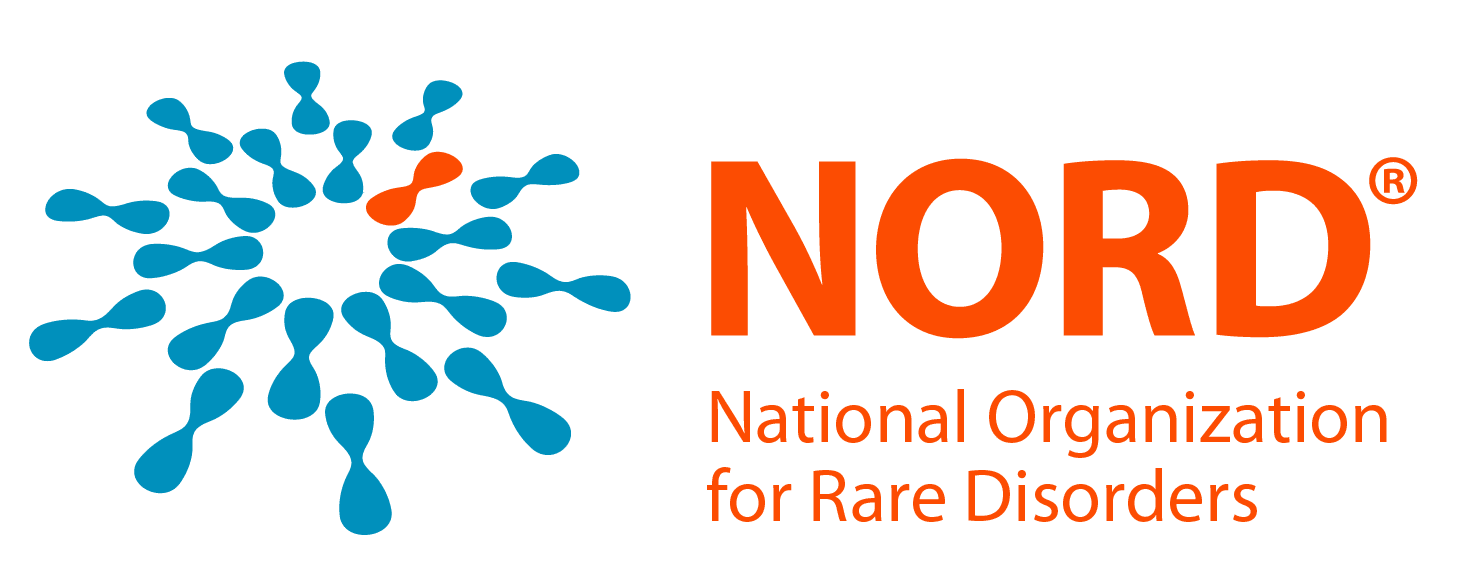
National Organization for Rare Disorders Educational materials for clinicians and patients |
Click here to download the slide presentation

This activity is provided by Integrity CE, LLC.
This activity is supported by an educational grant from Otsuka America Pharmaceutical, Inc.
For a list of other CME activities, please visit us at IntegrityCE.com.
Follow us on social media!

This activity is provided by Integrity CE, LLC.
This activity is supported by independent medical education grants from AstraZeneca Pharmaceuticals and Daiichi Sankyo, Inc.
Recent developments in our understanding of molecular information, the tumor environment, and sequencing of therapies have allowed for greater personalization of therapy for patients with solid tumors and hematologic malignancies. In a practice that’s constantly evolving, keeping up to date with testing strategies, patient assessment, treatment selection and adverse event management can be a challenge.
This case-based archived symposium offers practical guidance for best practices across malignancies. The symposium archive includes algorithms for treatment used in the case discussion by expert faculty and any relevant updates from the 2024 Annual Meeting in early June. The focus will be practical, applicable information you can use in the clinic immediately.
This educational activity was designed for medical oncologists, hematologic oncologists, and oncology nurse practitioners and physician assistants.
Upon completion of this educational activity, participants should be able to:
 |
Jens Hillengass, MD, PhD Professor of Oncology Roswell Park Comprehensive Cancer Center Professor of Internal Medicine University at Buffalo Buffalo, New York |
 |
Ayalew Tefferi, MD Hematologist Professor of Medicine Mayo Clinic |
 |
Saad Z. Usmani, MD, MBA, FACP, FRCP, FASCO Chief of Myeloma Service Member, Memorial Sloan Kettering Cancer Center, New York, NY Attending Physician, Myeloma, Cellular Therapy and Adult BMT Professor of Medicine, Weill Cornell Medical College New York, New York |
Integrity CE, LLC requires instructors, planners, managers, and other individuals who are in a position to control the content of this activity to disclose any financial relationships with ineligible companies. All identified relevant financial relationships are thoroughly vetted by Integrity CE, LLC for fair balance, scientific objectivity of studies mentioned in the materials or used as the basis for content, and appropriateness of patient care recommendations. All relevant financial relationships have been mitigated.
The following faculty/planners reported the financial relationships or relationships to products or devices they have with ineligible companies related to the content of these CME activities:
Jens Hillengass, MD, PhD has no real or apparent conflicts to disclose.
Ayalew Tefferi, MD has no real or apparent conflicts to disclose.
Saad Z. Usmani, MD, MBA, FACP, FRCP, FASCO
Consultation: AbbVie, Amgen, BMS, EdoPharma, Genentech, Gilead, GSK, Janssen, Karyopharm Therapeutics, Merck, Oncopeptides, Sanofi, Seagen, Secura
Research: Amgen, Array Biopharma, BMS, EdoPharm
The Integrity CE, LLC planners and managers do not have any financial relationships or relationships to products or devices with ineligible companies.
There are no fees for participating and receiving CME credit for this activity. During the period of July 31, 2024 through July 31, 2025, participants must:
A statement of credit will be issued only upon receipt of a completed posttest and a completed activity evaluation form.

Integrity CE, LLC is accredited by the Accreditation Council for Continuing Medical Education (ACCME) to provide continuing medical education for physicians.
Integrity CE, LLC designates this enduring material for a maximum of 1.5 AMA PRA Category 1 CreditsTM. Physicians should claim only the credit commensurate with the extent of their participation in the activity.

Successful completion of this CME activity, which includes participation in the evaluation component, enables the participant to earn up to 1.5 MOC points in the American Board of Internal Medicine’s (ABIM) Maintenance of Certification (MOC) program. Participants will earn MOC points equivalent to the amount of CME credits claimed for the activity. It is the CME activity provider’s responsibility to submit participant completion information to ACCME for the purpose of granting ABIM MOC credit.
For information about ACCME accreditation of this activity, please contact Integrity CE, LLC at (855) 835-4004 or cme@integrityce.com.
This educational activity may contain discussion of published and/or investigational uses of agents that are not indicated by the FDA. Integrity CE, LLC does not recommend the use of any agent outside of the labeled indications.
The opinions expressed in the educational activity are those of the faculty and do not necessarily represent the views of any organization associated with this activity. Please refer to the official prescribing information for each product for discussion of approved indications, contraindications, and warnings.
Internet
When you participate in an online educational activity sponsored by Integrity CE, LLC, you will be asked for your name, degree(s), affiliation(s), street address, telephone number and…(continued)
Minimum Processor: Intel Pentium 4, 2.33 + GHz (or equivalent)
Operating Systems: Windows XP, Windows 2000, Windows Vista, Windows 7, Windows 10, and Mac OS
Plug-in: Adobe® Flash® Player 10
For optimal performance, the use of Internet Explorer below 8 is not recommended
For a full listing of recommended operating systems, browsers, and system configurations, please click on the link below:
Click here for more information on minimum system requirements
The information provided at this activity is for continuing education purposes only and is not meant to substitute for the independent medical judgment of a physician relative to diagnostic and treatment options of a specific patient’s medical condition.

This activity is provided by Integrity CE, LLC.
This activity is supported by independent medical education grants from AstraZeneca Pharmaceuticals and Daiichi Sankyo, Inc.
Recent developments in our understanding of molecular information, the tumor environment, and sequencing of therapies have allowed for greater personalization of therapy for patients with solid tumors and hematologic malignancies. In a practice that’s constantly evolving, keeping up to date with testing strategies, patient assessment, treatment selection and adverse event management can be a challenge.
This case-based archived symposium offers practical guidance for best practices across malignancies. The symposium archive includes algorithms for treatment used in the case discussion by expert faculty and any relevant updates from the 2024 Annual Meeting in early June. The focus will be practical, applicable information you can use in the clinic immediately.
This educational activity was designed for medical oncologists, hematologic oncologists, and oncology nurse practitioners and physician assistants.
Upon completion of this educational activity, participants should be able to:
 |
Matthew Cortese, MD, MPH Assistant Professor of Oncology Department of Medicine, Lymphoma Department of Cancer Genetics & Genomics Roswell Park Comprehensive Cancer Center Buffalo, New York |
 |
Alex Niu, MD Staff Physician Assistant Professor of Oncology Department of Medicine Roswell Park Comprehensive Cancer Center Buffalo, New York |
 |
Danielle Wallace, MD Assistant Professor of Medicine Division of Hematology/Oncology University of Rochester Rochester, New York |
Integrity CE, LLC requires instructors, planners, managers, and other individuals who are in a position to control the content of this activity to disclose any financial relationships with ineligible companies. All identified relevant financial relationships are thoroughly vetted by Integrity CE, LLC for fair balance, scientific objectivity of studies mentioned in the materials or used as the basis for content, and appropriateness of patient care recommendations. All relevant financial relationships have been mitigated.
The following faculty/planners reported the financial relationships or relationships to products or devices they have with ineligible companies related to the content of these CME activities:
Matthew J. Cortese, MD, MPH
Advisory Boards: ADC Therapeutics, AstraZeneca, Cellectar Biosciences, Synthekine, Inc.
Consultation: AbbVie, AstraZeneca, Secura Bio, Synthekine, Inc.
Speaker: OncLive, Targeted Oncology, Secura Bio
Alex Niu, MD has no real or apparent conflicts to disclose.
Danielle Wallace, MD
Consultant: Elsevier, Gather-ed
The Integrity CE, LLC planners and managers do not have any financial relationships or relationships to products or devices with ineligible companies.
There are no fees for participating and receiving CME credit for this activity. During the period of July 31, 2024 through July 31, 2025, participants must:
A statement of credit will be issued only upon receipt of a completed posttest and a completed activity evaluation form.

Integrity CE, LLC is accredited by the Accreditation Council for Continuing Medical Education (ACCME) to provide continuing medical education for physicians.
Integrity CE, LLC designates this enduring material for a maximum of 1.5 AMA PRA Category 1 CreditsTM. Physicians should claim only the credit commensurate with the extent of their participation in the activity.

Successful completion of this CME activity, which includes participation in the evaluation component, enables the participant to earn up to 1.5 MOC points in the American Board of Internal Medicine’s (ABIM) Maintenance of Certification (MOC) program. Participants will earn MOC points equivalent to the amount of CME credits claimed for the activity. It is the CME activity provider’s responsibility to submit participant completion information to ACCME for the purpose of granting ABIM MOC credit.
For information about ACCME accreditation of this activity, please contact Integrity CE, LLC at (855) 835-4004 or cme@integrityce.com.
This educational activity may contain discussion of published and/or investigational uses of agents that are not indicated by the FDA. Integrity CE, LLC does not recommend the use of any agent outside of the labeled indications.
The opinions expressed in the educational activity are those of the faculty and do not necessarily represent the views of any organization associated with this activity. Please refer to the official prescribing information for each product for discussion of approved indications, contraindications, and warnings.
Internet
When you participate in an online educational activity sponsored by Integrity CE, LLC, you will be asked for your name, degree(s), affiliation(s), street address, telephone number and…(continued)
Minimum Processor: Intel Pentium 4, 2.33 + GHz (or equivalent)
Operating Systems: Windows XP, Windows 2000, Windows Vista, Windows 7, Windows 10, and Mac OS
Plug-in: Adobe® Flash® Player 10
For optimal performance, the use of Internet Explorer below 8 is not recommended
For a full listing of recommended operating systems, browsers, and system configurations, please click on the link below:
Click here for more information on minimum system requirements
The information provided at this activity is for continuing education purposes only and is not meant to substitute for the independent medical judgment of a physician relative to diagnostic and treatment options of a specific patient’s medical condition.

This activity is provided by Integrity CE, LLC.
This activity is supported by independent medical education grants from AstraZeneca Pharmaceuticals and Daiichi Sankyo, Inc.
Recent developments in our understanding of molecular information, the tumor environment, and sequencing of therapies have allowed for greater personalization of therapy for patients with solid tumors and hematologic malignancies. In a practice that’s constantly evolving, keeping up to date with testing strategies, patient assessment, treatment selection and adverse event management can be a challenge.
This case-based archived symposium offers practical guidance for best practices across malignancies. The symposium archive includes algorithms for treatment used in the case discussion by expert faculty and any relevant updates from the 2024 Annual Meeting in early June. The focus will be practical, applicable information you can use in the clinic immediately.
This educational activity was designed for medical oncologists, hematologic oncologists, and oncology nurse practitioners and physician assistants.
Upon completion of this educational activity, participants should be able to:
 |
Jason Zittel, MD Assistant Professor of Hematology/Oncology Director of Myers Cancer Center Wilmot Cancer Institute University of Rochester Rochester, New York |
Integrity CE, LLC requires instructors, planners, managers, and other individuals who are in a position to control the content of this activity to disclose any financial relationships with ineligible companies. All identified relevant financial relationships are thoroughly vetted by Integrity CE, LLC for fair balance, scientific objectivity of studies mentioned in the materials or used as the basis for content, and appropriateness of patient care recommendations. All relevant financial relationships have been mitigated.
The following faculty/planners reported the financial relationships or relationships to products or devices they have with ineligible companies related to the content of this CME activity:
Jason Zittel, MD has no real or apparent conflicts to disclose.
The Integrity CE, LLC planners and managers do not have any financial relationships or relationships to products or devices with ineligible companies.
There are no fees for participating and receiving CME credit for this activity. During the period of July 31, 2024 through July 31, 2025, participants must:
A statement of credit will be issued only upon receipt of a completed posttest and a completed activity evaluation form.

Integrity CE, LLC is accredited by the Accreditation Council for Continuing Medical Education (ACCME) to provide continuing medical education for physicians.
Integrity CE, LLC designates this enduring material for a maximum of 0.25 AMA PRA Category 1 CreditTM. Physicians should claim only the credit commensurate with the extent of their participation in the activity.

Successful completion of this CME activity, which includes participation in the evaluation component, enables the participant to earn up to 0.25 MOC point in the American Board of Internal Medicine’s (ABIM) Maintenance of Certification (MOC) program. Participants will earn MOC points equivalent to the amount of CME credits claimed for the activity. It is the CME activity provider’s responsibility to submit participant completion information to ACCME for the purpose of granting ABIM MOC credit.
For information about ACCME accreditation of this activity, please contact Integrity CE, LLC at (855) 835-4004 or cme@integrityce.com.
This educational activity may contain discussion of published and/or investigational uses of agents that are not indicated by the FDA. Integrity CE, LLC does not recommend the use of any agent outside of the labeled indications.
The opinions expressed in the educational activity are those of the faculty and do not necessarily represent the views of any organization associated with this activity. Please refer to the official prescribing information for each product for discussion of approved indications, contraindications, and warnings.
Internet
When you participate in an online educational activity sponsored by Integrity CE, LLC, you will be asked for your name, degree(s), affiliation(s), street address, telephone number and…(continued)
Minimum Processor: Intel Pentium 4, 2.33 + GHz (or equivalent)
Operating Systems: Windows XP, Windows 2000, Windows Vista, Windows 7, Windows 10, and Mac OS
Plug-in: Adobe® Flash® Player 10
For optimal performance, the use of Internet Explorer below 8 is not recommended
For a full listing of recommended operating systems, browsers, and system configurations, please click on the link below:
Click here for more information on minimum system requirements
The information provided at this activity is for continuing education purposes only and is not meant to substitute for the independent medical judgment of a physician relative to diagnostic and treatment options of a specific patient’s medical condition.

This activity is provided by Integrity CE, LLC.
This activity is supported by independent medical education grants from AstraZeneca Pharmaceuticals and Daiichi Sankyo, Inc.
Recent developments in our understanding of molecular information, the tumor environment, and sequencing of therapies have allowed for greater personalization of therapy for patients with solid tumors and hematologic malignancies. In a practice that’s constantly evolving, keeping up to date with testing strategies, patient assessment, treatment selection and adverse event management can be a challenge.
This case-based archived symposium offers practical guidance for best practices across malignancies. The symposium archive includes algorithms for treatment used in the case discussion by expert faculty and any relevant updates from the 2024 Annual Meeting in early June. The focus will be practical, applicable information you can use in the clinic immediately.
This educational activity was designed for medical oncologists, hematologic oncologists, and oncology nurse practitioners and physician assistants.
Upon completion of this educational activity, participants should be able to:
 |
Renuka Iyer, MD Professor of Oncology Section Chief, Gastrointestinal Medical Oncology Vice-Chair of Faculty Recruitment & Retention Co-Director, Liver and Pancreas Tumor Program Department of Medicine Buffalo, New York |
 |
Sarbajit Mukherjee, MD, MS Associate Professor of Oncology Department of Medicine, GI Medical Oncology Co-Leader, GI Translational Research Group Buffalo, New York |
 |
Daniel Mulkerin, MD Professor, Hematology/Oncology Vice Chair Regional Operations, Department of Medicine Medical Director, Wilmot Cancer Institute University of Rochester Medical Center Rochester, New York |
 |
Michael Pishvaian, MD, PhD Associate Professor Johns Hopkins University School of Medicine Baltimore, Maryland |
Integrity CE, LLC requires instructors, planners, managers, and other individuals who are in a position to control the content of this activity to disclose any financial relationships with ineligible companies. All identified relevant financial relationships are thoroughly vetted by Integrity CE, LLC for fair balance, scientific objectivity of studies mentioned in the materials or used as the basis for content, and appropriateness of patient care recommendations. All relevant financial relationships have been mitigated.
The following faculty/planners reported the financial relationships or relationships to products or devices they have with ineligible companies related to the content of these CME activities:
Renuka Iyer, MD
Consultant: Abbvie, AstraZeneca, Exelixis, Genentech, Incyte
Speaker: Intellisphere, NANETS
Sarbajit Mukerjee, MD, MS
Advisory Boards: BeiGene, Eisai, Merck
Research: Ipsen
Daniel Mulkerin, MD has no real or apparent conflicts to disclose.
Michael Pishvaian, MD, PhD
Advisory Boards: AstraZeneca, Ideaya, Merck, Merus, Seattle Genetics
Steering Committee: Astellas, Renovo Rx
Stock: Perthera
The Integrity CE, LLC planners and managers do not have any financial relationships or relationships to products or devices with ineligible companies.
There are no fees for participating and receiving CME credit for this activity. During the period of July 31, 2024 through July 31, 2025, participants must:
A statement of credit will be issued only upon receipt of a completed posttest and a completed activity evaluation form.

Integrity CE, LLC is accredited by the Accreditation Council for Continuing Medical Education (ACCME) to provide continuing medical education for physicians.
Integrity CE, LLC designates this enduring material for a maximum of 2.0 AMA PRA Category 1 CreditsTM. Physicians should claim only the credit commensurate with the extent of their participation in the activity.

Successful completion of this CME activity, which includes participation in the evaluation component, enables the participant to earn up to 2.0 MOC points in the American Board of Internal Medicine’s (ABIM) Maintenance of Certification (MOC) program. Participants will earn MOC points equivalent to the amount of CME credits claimed for the activity. It is the CME activity provider’s responsibility to submit participant completion information to ACCME for the purpose of granting ABIM MOC credit.
For information about ACCME accreditation of this activity, please contact Integrity CE, LLC at (855) 835-4004 or cme@integrityce.com.
This educational activity may contain discussion of published and/or investigational uses of agents that are not indicated by the FDA. Integrity CE, LLC does not recommend the use of any agent outside of the labeled indications.
The opinions expressed in the educational activity are those of the faculty and do not necessarily represent the views of any organization associated with this activity. Please refer to the official prescribing information for each product for discussion of approved indications, contraindications, and warnings.
Internet
When you participate in an online educational activity sponsored by Integrity CE, LLC, you will be asked for your name, degree(s), affiliation(s), street address, telephone number and…(continued)
Minimum Processor: Intel Pentium 4, 2.33 + GHz (or equivalent)
Operating Systems: Windows XP, Windows 2000, Windows Vista, Windows 7, Windows 10, and Mac OS
Plug-in: Adobe® Flash® Player 10
For optimal performance, the use of Internet Explorer below 8 is not recommended
For a full listing of recommended operating systems, browsers, and system configurations, please click on the link below:
Click here for more information on minimum system requirements
The information provided at this activity is for continuing education purposes only and is not meant to substitute for the independent medical judgment of a physician relative to diagnostic and treatment options of a specific patient’s medical condition.

This activity is provided by Integrity CE, LLC.
This activity is supported by independent medical education grants from AstraZeneca Pharmaceuticals and Daiichi Sankyo, Inc.
Recent developments in our understanding of molecular information, the tumor environment, and sequencing of therapies have allowed for greater personalization of therapy for patients with solid tumors and hematologic malignancies. In a practice that’s constantly evolving, keeping up to date with testing strategies, patient assessment, treatment selection and adverse event management can be a challenge.
This case-based archived symposium offers practical guidance for best practices across malignancies. The symposium archive includes algorithms for treatment used in the case discussion by expert faculty and any relevant updates from the 2024 Annual Meeting in early June. The focus will be practical, applicable information you can use in the clinic immediately.
This educational activity was designed for medical oncologists, hematologic oncologists, and oncology nurse practitioners and physician assistants.
Upon completion of this educational activity, participants should be able to:
 |
Matt Galsky, MD Professor of Medicine Icahn School of Medicine at Mount Sinai Director, Genitourinary Medical Oncology Associate Director, Translational Research Co-Leader, Cancer Clinical Investigation Program Tisch Cancer Institute New York, New York |
 |
Brendan Guercio, MD Assistant Professor James P. Wilmot Cancer Institute University of Rochester Medical Center Rochester, New York |
 |
Sindhuja Kadambi, MD, MS Assistant Professor Wilmot Cancer Institute University of Rochester Medical Center Strong Memorial Hospital Highland Hospital Rochester, New York |
Integrity CE, LLC requires instructors, planners, managers, and other individuals who are in a position to control the content of this activity to disclose any financial relationships with ineligible companies. All identified relevant financial relationships are thoroughly vetted by Integrity CE, LLC for fair balance, scientific objectivity of studies mentioned in the materials or used as the basis for content, and appropriateness of patient care recommendations. All relevant financial relationships have been mitigated.
The following faculty/planners reported the financial relationships or relationships to products or devices they have with ineligible companies related to the content of these CME activities:
Matthew Galsky, MD
Consultant: Bristol Myers Squibb, Genentech, Janssen, Merck, Pfizer, SeaGen
Brendan Guercio, MD
Advisory Board: Jannsen
Investigator: Acrivon Therapeutics, Exelixis
Research: Genentech
Sindhuja Kadambi, MD, MS has no real or apparent conflicts to disclose.
The Integrity CE, LLC planners and managers do not have any financial relationships or relationships to products or devices with ineligible companies.
There are no fees for participating and receiving CME credit for this activity. During the period of July 31, 2024 through July 31, 2025, participants must:
A statement of credit will be issued only upon receipt of a completed posttest and a completed activity evaluation form.

Integrity CE, LLC is accredited by the Accreditation Council for Continuing Medical Education (ACCME) to provide continuing medical education for physicians.
Integrity CE, LLC designates this enduring material for a maximum of 1.5 AMA PRA Category 1 CreditsTM. Physicians should claim only the credit commensurate with the extent of their participation in the activity.

Successful completion of this CME activity, which includes participation in the evaluation component, enables the participant to earn up to 1.5 MOC points in the American Board of Internal Medicine’s (ABIM) Maintenance of Certification (MOC) program. Participants will earn MOC points equivalent to the amount of CME credits claimed for the activity. It is the CME activity provider’s responsibility to submit participant completion information to ACCME for the purpose of granting ABIM MOC credit.
For information about ACCME accreditation of this activity, please contact Integrity CE, LLC at (855) 835-4004 or cme@integrityce.com.
This educational activity may contain discussion of published and/or investigational uses of agents that are not indicated by the FDA. Integrity CE, LLC does not recommend the use of any agent outside of the labeled indications.
The opinions expressed in the educational activity are those of the faculty and do not necessarily represent the views of any organization associated with this activity. Please refer to the official prescribing information for each product for discussion of approved indications, contraindications, and warnings.
Internet
When you participate in an online educational activity sponsored by Integrity CE, LLC, you will be asked for your name, degree(s), affiliation(s), street address, telephone number and…(continued)
Minimum Processor: Intel Pentium 4, 2.33 + GHz (or equivalent)
Operating Systems: Windows XP, Windows 2000, Windows Vista, Windows 7, Windows 10, and Mac OS
Plug-in: Adobe® Flash® Player 10
For optimal performance, the use of Internet Explorer below 8 is not recommended
For a full listing of recommended operating systems, browsers, and system configurations, please click on the link below:
Click here for more information on minimum system requirements
The information provided at this activity is for continuing education purposes only and is not meant to substitute for the independent medical judgment of a physician relative to diagnostic and treatment options of a specific patient’s medical condition.

This activity is provided by Integrity CE, LLC.
This activity is supported by independent medical education grants from AstraZeneca Pharmaceuticals and Daiichi Sankyo, Inc.
Recent developments in our understanding of molecular information, the tumor environment, and sequencing of therapies have allowed for greater personalization of therapy for patients with solid tumors and hematologic malignancies. In a practice that’s constantly evolving, keeping up to date with testing strategies, patient assessment, treatment selection and adverse event management can be a challenge.
This case-based archived symposium offers practical guidance for best practices across malignancies. The symposium archive includes algorithms for treatment used in the case discussion by expert faculty and any relevant updates from the 2024 Annual Meeting in early June. The focus will be practical, applicable information you can use in the clinic immediately.
This educational activity was designed for medical oncologists, hematologic oncologists, and oncology nurse practitioners and physician assistants.
Upon completion of this educational activity, participants should be able to:
 |
Megan Baumgart, MD Association Professor of Medicine Division of Hematology/Oncology Program Director, Hematology/Oncology Fellowship Program Rochester, New York |
 |
Grace Dy, MD Professor of Oncology Roswell Park Comprehensive Cancer Center Buffalo, New York |
 |
Stephen Liu, MD Director, Thoracic Oncology Head, Developmental Therapeutics Georgetown University Lombardi Comprehensive Cancer Center Washington, DC |
 |
Arpan Patel, MD Assistant Professor of Medicine – Thoracic Oncology Chief Quality Officer, Division of Hematology Oncology Associate Director for Informatics James P. Wilmot Cancer Institute University of Rochester Medical Center Rochester, New York |
Integrity CE, LLC requires instructors, planners, managers, and other individuals who are in a position to control the content of this activity to disclose any financial relationships with ineligible companies. All identified relevant financial relationships are thoroughly vetted by Integrity CE, LLC for fair balance, scientific objectivity of studies mentioned in the materials or used as the basis for content, and appropriateness of patient care recommendations. All relevant financial relationships have been mitigated.
The following faculty/planners reported the financial relationships or relationships to products or devices they have with ineligible companies related to the content of these CME activities:
Megan Baumgart, MD has no real or apparent conflicts to disclose.
Grace Dy, MD
Consultant: Amgen, AstraZeneca, Bayer, Eli Lilly, Mirati, Novartis, Janssen, Regeneron
Stephen Liu, MD
Consultant: Abbvie, Amgen, AstraZeneca, Boehringer Ingehlheim, Bristol Myers Squibb, Catalyst, Daiichi Sankyo, Elevation, Genentech, Gilead, Guardant Health, Janssen, Jazz, Merck, Merus, Mirati, Novartis, Pfizer, RAPT, Regeneron, Revolution Medicines, Sanofi, Takeda
Research: Abbvie, Alkermes, AstraZeneca, Elevation, Ellipses, Genentech, Gilead, Merck, Merus, Nuvalent, OSE Immunotherapeutics, Puma, RAPT, Turning Point Therapeutics
Arpan Patel, MD has no real or apparent conflicts to disclose.
The Integrity CE, LLC planners and managers do not have any financial relationships or relationships to products or devices with ineligible companies.
There are no fees for participating and receiving CME credit for this activity. During the period of July 31, 2024 through July 31, 2025, participants must:
A statement of credit will be issued only upon receipt of a completed posttest and a completed activity evaluation form.

Integrity CE, LLC is accredited by the Accreditation Council for Continuing Medical Education (ACCME) to provide continuing medical education for physicians.
Integrity CE, LLC designates this enduring material for a maximum of 2.0 AMA PRA Category 1 CreditsTM. Physicians should claim only the credit commensurate with the extent of their participation in the activity.

Successful completion of this CME activity, which includes participation in the evaluation component, enables the participant to earn up to 2.0 MOC points in the American Board of Internal Medicine’s (ABIM) Maintenance of Certification (MOC) program. Participants will earn MOC points equivalent to the amount of CME credits claimed for the activity. It is the CME activity provider’s responsibility to submit participant completion information to ACCME for the purpose of granting ABIM MOC credit.
For information about ACCME accreditation of this activity, please contact Integrity CE, LLC at (855) 835-4004 or cme@integrityce.com.
This educational activity may contain discussion of published and/or investigational uses of agents that are not indicated by the FDA. Integrity CE, LLC does not recommend the use of any agent outside of the labeled indications.
The opinions expressed in the educational activity are those of the faculty and do not necessarily represent the views of any organization associated with this activity. Please refer to the official prescribing information for each product for discussion of approved indications, contraindications, and warnings.
Internet
When you participate in an online educational activity sponsored by Integrity CE, LLC, you will be asked for your name, degree(s), affiliation(s), street address, telephone number and…(continued)
Minimum Processor: Intel Pentium 4, 2.33 + GHz (or equivalent)
Operating Systems: Windows XP, Windows 2000, Windows Vista, Windows 7, Windows 10, and Mac OS
Plug-in: Adobe® Flash® Player 10
For optimal performance, the use of Internet Explorer below 8 is not recommended
For a full listing of recommended operating systems, browsers, and system configurations, please click on the link below:
Click here for more information on minimum system requirements
The information provided at this activity is for continuing education purposes only and is not meant to substitute for the independent medical judgment of a physician relative to diagnostic and treatment options of a specific patient’s medical condition.

This activity is provided by Integrity CE, LLC.
This activity is supported by independent medical education grants from AstraZeneca Pharmaceuticals and Daiichi Sankyo, Inc.
Recent developments in our understanding of molecular information, the tumor environment, and sequencing of therapies have allowed for greater personalization of therapy for patients with solid tumors and hematologic malignancies. In a practice that’s constantly evolving, keeping up to date with testing strategies, patient assessment, treatment selection and adverse event management can be a challenge.
This case-based archived symposium offers practical guidance for best practices across malignancies. The symposium archive includes algorithms for treatment used in the case discussion by expert faculty and any relevant updates from the 2024 Annual Meeting in early June. The focus will be practical, applicable information you can use in the clinic immediately.
This educational activity was designed for medical oncologists, hematologic oncologists, and oncology nurse practitioners and physician assistants.
Upon completion of this educational activity, participants should be able to:
 |
Susan Dent, MD Professor of Medicine Duke University Durham, North Carolina |
 |
Shipra Gandhi, MD Assistant Professor of Oncology Department of Breast Medicine and Early Phase Clinical Trials Roswell Park Comprehensive Care Center Clinical Assistant Professor Department of Medicine Jacobs School of Medicine and Biomedical Sciences University at Buffalo (SUNY) Buffalo, New York |
 |
Stefanie Graff, MD Director of Breast Oncology, Lifespan Cancer Institute Co-Lead, Breast Cancer Translational Disease Research Group Legorreta Cancer Center at Brown University Associate Professor of Medicine Warren Alpert Medical School of Brown University Providence, Rhode Island |
Integrity CE, LLC requires instructors, planners, managers, and other individuals who are in a position to control the content of this activity to disclose any financial relationships with ineligible companies. All identified relevant financial relationships are thoroughly vetted by Integrity CE, LLC for fair balance, scientific objectivity of studies mentioned in the materials or used as the basis for content, and appropriateness of patient care recommendations. All relevant financial relationships have been mitigated.
The following faculty/planners reported the financial relationships or relationships to products or devices they have with ineligible companies related to the content of these CME activities:
Susan Dent, MD
Advisory Boards: AstraZeneca, Gilead Sciences, Myocardial Solutions, Novartis, Pfizer
Shipra Gandhi, MD
Consultant: AstraZeneca, Hologic, MedPage Today, Novartis
Stephanie Graff, MD, FACP, FASCO
Consultant: AstraZeneca, Daiichi Sankyo, Genentech, Gilead Sciences, Lilly, Pfizer, SeaGen, Stemline/Menarini
Research Funding: AstraZeneca, Daiichi Sankyo, Lilly, Novartis
Stocks: HCA Healthcare
The Integrity CE, LLC planners and managers do not have any financial relationships or relationships to products or devices with ineligible companies.
There are no fees for participating and receiving CME credit for this activity. During the period of July 31, 2024 through July 31, 2025, participants must:
A statement of credit will be issued only upon receipt of a completed posttest and a completed activity evaluation form.

Integrity CE, LLC is accredited by the Accreditation Council for Continuing Medical Education (ACCME) to provide continuing medical education for physicians.
Integrity CE, LLC designates this enduring material for a maximum of 1.5 AMA PRA Category 1 CreditsTM. Physicians should claim only the credit commensurate with the extent of their participation in the activity.

Successful completion of this CME activity, which includes participation in the evaluation component, enables the participant to earn up to 1.5 MOC points in the American Board of Internal Medicine’s (ABIM) Maintenance of Certification (MOC) program. Participants will earn MOC points equivalent to the amount of CME credits claimed for the activity. It is the CME activity provider’s responsibility to submit participant completion information to ACCME for the purpose of granting ABIM MOC credit.
For information about ACCME accreditation of this activity, please contact Integrity CE, LLC at (855) 835-4004 or cme@integrityce.com.
This educational activity may contain discussion of published and/or investigational uses of agents that are not indicated by the FDA. Integrity CE, LLC does not recommend the use of any agent outside of the labeled indications.
The opinions expressed in the educational activity are those of the faculty and do not necessarily represent the views of any organization associated with this activity. Please refer to the official prescribing information for each product for discussion of approved indications, contraindications, and warnings.
Internet
When you participate in an online educational activity sponsored by Integrity CE, LLC, you will be asked for your name, degree(s), affiliation(s), street address, telephone number and…(continued)
Minimum Processor: Intel Pentium 4, 2.33 + GHz (or equivalent)
Operating Systems: Windows XP, Windows 2000, Windows Vista, Windows 7, Windows 10, and Mac OS
Plug-in: Adobe® Flash® Player 10
For optimal performance, the use of Internet Explorer below 8 is not recommended
For a full listing of recommended operating systems, browsers, and system configurations, please click on the link below:
Click here for more information on minimum system requirements
The information provided at this activity is for continuing education purposes only and is not meant to substitute for the independent medical judgment of a physician relative to diagnostic and treatment options of a specific patient’s medical condition.

This activity is provided by Integrity CE, LLC.
This activity is supported by an educational grant from Otsuka America Pharmaceutical, Inc.
Immunoglobulin A (IgA) nephropathy (IgAN) is a progressive autoimmune kidney disease and leading cause of kidney failure worldwide. Although there have been significant advances in understanding of its pathophysiology and continued development of new therapeutic approaches, challenges in IgAN management persist today, such as delayed diagnoses and available treatments inadequately slowing kidney function decline.
Join our esteemed faculty, Dr. Lafayette in this unique interactive activity that examines key strategies to achieve earlier diagnosis of IgAN, current clinical trial evidence regarding new and emerging therapies, and guidance on optimizing treatment.
This activity addresses the needs of nephrologists, specialty advanced practice providers, and other clinicians involved in the management of patients with IgAN, such as primary care providers.
Upon completion of this educational activity, participants should be able to:
 |
Richard Lafayette, MD Professor of Medicine, Stanford University Medical Center Founder & Director, Stanford Glomerular Disease Center Stanford University Stanford, California |
Integrity CE, LLC requires instructors, planners, managers, and other individuals who are in a position to control the content of this activity to disclose any financial relationships with ineligible companies. All identified relevant financial relationships are thoroughly vetted by Integrity CE, LLC for fair balance, scientific objectivity of studies mentioned in the materials or used as the basis for content, and appropriateness of patient care recommendations. All relevant financial relationships have been mitigated.
The following faculty/planners reported the financial relationships or relationships to products or devices they have with ineligible companies related to the content of these CME activities:
Richard Lafayette, MD
Consultation Fees & Institutional Grants: Alexion, Amgen, BeiGene, Calliditas Therapeutics, Novartis, Omeros, Otsuka, Roche, Travere Therapeutics, Vera Therapeutics, Visterra
Data Safety Monitoring Boards: Amgen, Cara Therapeutics
The Integrity CE, LLC planners and managers do not have any financial relationships or relationships to products or devices with ineligible companies.
There are no fees for participating and receiving CME credit for this activity. During the period of July 26, 2024 through July 26, 2025, participants must:
A statement of credit will be issued only upon receipt of a completed posttest with a score of 70% or better and a completed activity evaluation form.

Integrity CE, LLC is accredited by the Accreditation Council for Continuing Medical Education (ACCME) to provide continuing medical education for physicians.
Integrity CE, LLC designates this enduring material for a maximum of 0.75 AMA PRA Category 1 Credit™. Physicians should claim only the credit commensurate with the extent of their participation in the activity.
For information about ACCME accreditation of this activity, please contact Integrity CE, LLC at (855) 835-4004 or cme@integrityce.com.
This educational activity may contain discussion of published and/or investigational uses of agents that are not indicated by the FDA. Integrity CE, LLC does not recommend the use of any agent outside of the labeled indications.
The opinions expressed in the educational activity are those of the faculty and do not necessarily represent the views of any organization associated with this activity. Please refer to the official prescribing information for each product for discussion of approved indications, contraindications, and warnings.
Internet
When you participate in an online educational activity sponsored by Integrity CE, LLC, you will be asked for your name, degree(s), affiliation(s), street address, telephone number and…(continued)
Minimum Processor: Intel Pentium 4, 2.33 + GHz (or equivalent)
Operating Systems: Windows XP, Windows 2000, Windows Vista, Windows 7, Windows 10, and Mac OS
Plug-in: Adobe® Flash® Player 10
For optimal performance, the use of Internet Explorer below 8 is not recommended
For a full listing of recommended operating systems, browsers, and system configurations, please click on the link below:
Click here for more information on minimum system requirements
The information provided at this activity is for continuing education purposes only and is not meant to substitute for the independent medical judgment of a physician relative to diagnostic and treatment options of a specific patient’s medical condition.

This activity is provided by Integrity CE, LLC.
This activity is supported by an educational grant from Actelion Pharmaceuticals US, Inc., a Janssen Pharmaceutical Company of Johnson & Johnson.
Discoveries about the pathogenesis of pulmonary arterial hypertension (PAH) revealed key molecular pathways that could be targeted to treat this cardiopulmonary disorder. A multitude of new therapies with differing mechanisms of action began to appear in the late 1990s and experts discovered that combination treatments were key to extending life. Today, 5-year survival rates approach 70%.
Premiere clinical guidelines on diagnosing and managing PAH were recently revised and updated and in March 2024, two new treatment choices were approved by the FDA — a fixed-dose, single-tablet combination of the two drug classes that are recommended as initial treatment for most patients, and a first-in-class transforming growth factor inhibitor.
Join PAH expert Dr. John J. Ryan for this on-demand data dive activity that explores recent guideline changes, newly approved treatments, and freshly released data on emerging therapies.
This educational activity has been designed to meet the needs of cardiologists, pulmonologists, rheumatologists, and other physicians, including those in primary care and internal medicine, as well as physician assistants, nurse practitioners, and other healthcare providers who may be involved in managing care for patients with PAH.
Upon completion of this educational activity, participants should be able to:
 |
John J. Ryan, MD, MB, BCh, BAO Professor, University of Utah Director, Pulmonary Hypertension Comprehensive Care Center Director, Cardiovascular Medicine Fellowship Program Interim Chief of General Cardiology University of Utah Hospital University of Utah School of Medicine Salt Lake City, Utah |
Integrity CE, LLC requires instructors, planners, managers, and other individuals who are in a position to control the content of this activity to disclose any financial relationships with ineligible companies. All identified relevant financial relationships are thoroughly vetted by Integrity CE, LLC for fair balance, scientific objectivity of studies mentioned in the materials or used as the basis for content, and appropriateness of patient care recommendations. All relevant financial relationships have been mitigated.
The following faculty/planners reported the financial relationships or relationships to products or devices they have with ineligible companies related to the content of these CME activities:
John J. Ryan, MD, MB, BCh, BAO
Advisor, Researcher, Speaker: Johnson and Johnson, Kiniksa Pharmaceuticals, Merck, United Therapeutics
The Integrity CE, LLC planners and managers do not have any financial relationships or relationships to products or devices with ineligible companies.
There are no fees for participating and receiving CME credit for this activity. During the period of June 21, 2024 through June 21, 2025, participants must:
A statement of credit will be issued only upon receipt of a completed posttest with a score of 75% or better and a completed activity evaluation form.

Integrity CE, LLC is accredited by the Accreditation Council for Continuing Medical Education (ACCME) to provide continuing medical education for physicians.
Integrity CE, LLC designates this enduring material for a maximum of 1.0 AMA PRA Category 1 Credit™. Physicians should claim only the credit commensurate with the extent of their participation in the activity.
For information about ACCME accreditation of this activity, please contact Integrity CE, LLC at (855) 835-4004 or cme@integrityce.com.
This educational activity may contain discussion of published and/or investigational uses of agents that are not indicated by the FDA. Integrity CE, LLC does not recommend the use of any agent outside of the labeled indications.
The opinions expressed in the educational activity are those of the faculty and do not necessarily represent the views of any organization associated with this activity. Please refer to the official prescribing information for each product for discussion of approved indications, contraindications, and warnings.
Internet
When you participate in an online educational activity sponsored by Integrity CE, LLC, you will be asked for your name, degree(s), affiliation(s), street address, telephone number and…(continued)
Minimum Processor: Intel Pentium 4, 2.33 + GHz (or equivalent)
Operating Systems: Windows XP, Windows 2000, Windows Vista, Windows 7, Windows 10, and Mac OS
Plug-in: Adobe® Flash® Player 10
For optimal performance, the use of Internet Explorer below 8 is not recommended
For a full listing of recommended operating systems, browsers, and system configurations, please click on the link below:
Click here for more information on minimum system requirements
The information provided at this activity is for continuing education purposes only and is not meant to substitute for the independent medical judgment of a physician relative to diagnostic and treatment options of a specific patient’s medical condition.

Provided by Integrity CE, LLC.
Supported by educational grants from AstraZeneca Pharmaceuticals, Lilly, Novartis Pharmaceuticals Corporation, and Seagen, Inc.
This case focuses on a young patient diagnosed with triple-negative breast cancer (TNBC) who completes chemotherapy, radiation, and 10 years of endocrine therapy. At that point she has progression.
The faculty provide their approach to choosing the best treatment strategy for this patient. Trials discussed include: KEYNOTE-355, DESTINY-Breast04, and ASCENT.
This educational activity has been designed to meet the needs of medical, surgical, and radiation oncologists, physician assistants, nurse practitioners, nurses, and other healthcare providers involved in the treatment and management of patients with breast cancer.
Upon completion of this educational activity, participants should be able to:
 |
Margaret Gatti-Mays, MD, MPH The Division of Medical Oncology The Ohio State University Comprehensive Cancer Center Cleveland, Ohio |
 |
Nerea Lopetegui-Lia, MD Hematology/Medical Oncology Fellow Cleveland Clinic Taussig Cancer Institute Cleveland, Ohio |
Integrity CE, LLC requires instructors, planners, managers, and other individuals who are in a position to control the content of this activity to disclose any financial relationships with ineligible companies. All identified relevant financial relationships are thoroughly vetted by Integrity CE, LLC for fair balance, scientific objectivity of studies mentioned in the materials or used as the basis for content, and appropriateness of patient care recommendations. All relevant financial relationships have been mitigated.
The following faculty/planners reported the financial relationships or relationships to products or devices they have with ineligible companies related to the content of these CME activities:
Margaret Gatti-Mays, MD, MPH
Advisor: GE Health
Nerea Lopetegui-Lia, MD does not have any financial relationships or relationships to products or devices with ineligible companies.
The Integrity CE, LLC planners and managers do not have any financial relationships or relationships to products or devices with ineligible companies.
There are no fees for participating and receiving CME credit for this activity. During the period of May 24, 2024 through August 24, 2024, participants must:
A statement of credit will be issued only upon receipt of a completed posttest with a score of 50% or better and a completed activity evaluation form.
Integrity CE, LLC is accredited by the Accreditation Council for Continuing Medical Education (ACCME) to provide continuing medical education for physicians.
Integrity CE, LLC designates this enduring material for a maximum of 0.75 AMA PRA Category 1 CreditTM. Physicians should claim only the credit commensurate with the extent of their participation in the activity.
For information about ACCME accreditation of this activity, please contact Integrity CE, LLC at (855) 835-4004 or cme@integrityce.com.
This educational activity may contain discussion of published and/or investigational uses of agents that are not indicated by the FDA. Integrity CE, LLC does not recommend the use of any agent outside of the labeled indications.
The opinions expressed in the educational activity are those of the faculty and do not necessarily represent the views of any organization associated with this activity. Please refer to the official prescribing information for each product for discussion of approved indications, contraindications, and warnings.
Internet
When you participate in an online educational activity sponsored by Integrity CE, LLC, you will be asked for your name, degree(s), affiliation(s), street address, telephone number and…(continued)
Minimum Processor: Intel Pentium 4, 2.33 + GHz (or equivalent)
Operating Systems: Windows XP, Windows 2000, Windows Vista, Windows 7, Windows 10, and Mac OS
Plug-in: Adobe® Flash® Player 10
For optimal performance, the use of Internet Explorer below 8 is not recommended
For a full listing of recommended operating systems, browsers, and system configurations, please click on the link below:
Click here for more information on minimum system requirements
The information provided at this activity is for continuing education purposes only and is not meant to substitute for the independent medical judgment of a physician relative to diagnostic and treatment options of a specific patient’s medical condition.
This CME activity for ACCME credit is provided by Integrity CE, LLC.
This CE activity for AANP credit is jointly provided by Global Education Group and Integrity CE, LLC.
This activity is supported by educational grants from Sanofi and Regeneron Pharmaceuticals.
Uncontrolled atopic dermatitis (AD) can have dire, lifelong consequences for children and their families. However, medical science has developed several treatments that target the molecular drivers of this immuno-inflammatory skin disease that has negative effects on overall health and quality of life. Join AD expert Dr. Peter Lio for this on-demand video activity about systemic therapeutic options for infants, children, and adolescents who are affected by moderate-to-severe AD.
This educational activity has been designed to meet the needs of pediatric dermatologists, dermatologists, pediatricians, family practice physicians, nurse practitioners, physician assistants, and other clinicians who manage pediatric patients with atopic dermatitis.
Upon completion of this educational activity, participants should be able to:
 |
Peter Lio, MD, FAAD Clinical Professor of Dermatology Icahn School of Medicine at Mount Sinai Clinical Assistant Professor of Dermatology & Pediatrics Northwestern University Feinberg School of Medicine Founding Director, Chicago Integrative Eczema Center Founding Partner, Medical Dermatology Associates of Chicago Chicago, Illinois |
Integrity CE, LLC and Global Education Group requires instructors, planners, managers, and other individuals who are in a position to control the content of this activity to disclose any financial relationships with ineligible companies. All identified relevant financial relationships are thoroughly vetted by Integrity CE, LLC and Global Education Group for fair balance, scientific objectivity of studies mentioned in the materials or used as the basis for content, and appropriateness of patient care recommendations. All relevant financial relationships have been mitigated.
The following faculty/planners reported the financial relationships or relationships to products or devices they have with ineligible companies related to the content of this CME/CE activity:
Peter Lio, MD, FAAD
Advisory Boards: AbbVie, Almirall, Altus Labs, Amyris, AOBiome, Arbonne, ASLAN Pharmaceuticals, Bodewell, Boston Skin Science (KPAway), Burt’s Bees, Castle Biosciences, Concerto Biosciences, Dermavant, Dermira, Eli Lilly, Galderma, IntraDerm, Janssen, Johnson & Johnson, Kaleido Biosciences, Kimberly-Clark, LEO, Level Ex, Lipidor AB, L’Oréal, Menlo Therapeutics, Micreos, My-Or Diagnostics, Pfizer, Pierre-Fabre, Realm Therapeutics, Regeneron/Sanofi Genzyme, SkinFix, Theraplex, Unilever, Verrica, YobeeCare
Patent Holder: Theraplex AIM (patent pending)
Research: AbbVie, AOBiome, Regeneron/Sanofi Genzyme
Speaker: AbbVie, Eli Lilly, Galderma, Incyte, LEO, L’Oréal, Pfizer, Regeneron/Sanofi Genzyme
Stock Options: Altus Labs, Boston Skin Science (KPAway), Concerto Biosciences, LearnSkin,
Micreos, YobeeCare
The Integrity CE, LLC and Global Education Group planners and managers do not have any financial relationships or relationships to products or devices with ineligible companies.
There are no fees for participating and receiving CME/CE credit for this activity. During the period of March 13, 2024 through March 13, 2025, participants must:
A statement of credit will be issued only upon receipt of a completed posttest with a score of 67% or better and a completed activity evaluation form.
Physician Continuing Education

Integrity CE, LLC is accredited by the Accreditation Council for Continuing Medical Education (ACCME) to provide continuing medical education for physicians.
Integrity CE, LLC designates this enduring material for a maximum of 1.0 AMA PRA Category 1 CreditTM. Physicians should claim only the credit commensurate with the extent of their participation in the activity.
Nurse Practitioner Continuing Education
This activity has been planned and implemented in accordance with the Accreditation Standards of the American Association of Nurse Practitioners (AANP) through the joint providership of Global Education Group and Integrity CE, LLC. Global Education Group is accredited by the American Association of Nurse Practitioners as an approved provider of nurse practitioner continuing education. Provider number: 110121. This activity is approved for 1.0 contact hours (which includes 0.0 hour(s) of pharmacology).
For information about ACCME accreditation of this activity, please contact Integrity CE, LLC at (855) 835-4004 or cme@integrityce.com.
For information about AANP accreditation of this activity, please contact Global Education Group at (303) 395-1782 or cme@globaleducationgroup.com.
This educational activity may contain discussion of published and/or investigational uses of agents that are not indicated by the FDA. Integrity CE, LLC and Global Education Group do not recommend the use of any agent outside of the labeled indications.
The opinions expressed in the educational activity are those of the faculty and do not necessarily represent the views of any organization associated with this activity. Please refer to the official prescribing information for each product for discussion of approved indications, contraindications, and warnings.
Internet
When you participate in an online educational activity sponsored by Integrity CE, LLC, you will be asked for your name, degree(s), affiliation(s), street address, telephone number and…(continued)
Minimum Processor: Intel Pentium 4, 2.33 + GHz (or equivalent)
Operating Systems: Windows XP, Windows 2000, Windows Vista, Windows 7, Windows 10, and Mac OS
Plug-in: Adobe® Flash® Player 10
For optimal performance, the use of Internet Explorer below 8 is not recommended
For a full listing of recommended operating systems, browsers, and system configurations, please click on the link below:
Click here for more information on minimum system requirements
The information provided at this activity is for continuing education purposes only and is not meant to substitute for the independent medical judgment of a physician relative to diagnostic and treatment options of a specific patient’s medical condition.

This activity is provided by Integrity CE, LLC.
This activity is supported by an educational grant from Sanofi.
Every 5 minutes, someone is diagnosed with multiple sclerosis (MS), according to the Multiple Sclerosis International Federation’s Atlas of MS. Along with 85% of other newly diagnosed patients with MS, they will be diagnosed with relapsing-remitting MS (RRMS), one of the four MS subtypes.
In 2024, five emerging Bruton’s tyrosine kinase (BTK) inhibitors are undergoing late-phase clinical investigation for MS, but most clinicians are likely unaware of their place in the development pipeline and the clinical data regarding their use in MS. This Deep Dive activity into recently published or released data about BTK inhibitors in MS will convey critical information to neurologists and other clinicians about this innovative approach to MS management.
This educational activity has been designed to meet the needs of neurologists, primary care physicians, nurse practitioners, physician assistants, and other clinicians who manage patients with MS.
Upon completion of this educational activity, participants should be able to:
 |
Daniel S. Reich, MD, PhD Senior Investigator and Chief Translational Neuroradiology Section National Institute of Neurological Disorders and Stroke (NINDS) National Institutes of Health (NIH), USA |
He appears here in his private capacity, as an approved Outside Activity, and the views and opinions here do not represent those of NINDS or NIH.
Integrity CE, LLC requires instructors, planners, managers, and other individuals who are in a position to control the content of this activity to disclose any financial relationships with ineligible companies. All identified relevant financial relationships are thoroughly vetted by Integrity CE, LLC for fair balance, scientific objectivity of studies mentioned in the materials or used as the basis for content, and appropriateness of patient care recommendations. All relevant financial relationships have been mitigated.
The following faculty/planners reported the financial relationships or relationships to products or devices they have with ineligible companies related to the content of these CME activities:
Daniel S. Reich, MD, PhD
NIH Cooperative Research and Development Agreements: Abata Therapeutics, Sanofi
The Integrity CE, LLC planners and managers do not have any financial relationships or relationships to products or devices with ineligible companies.
There are no fees for participating and receiving CME credit for this activity. During the period April 8, 2024 through April 8, 2025, participants must:
A statement of credit will be issued only upon receipt of a completed posttest with a score of 50% or better and a completed activity evaluation form.

Integrity CE, LLC is accredited by the Accreditation Council for Continuing Medical Education (ACCME) to provide continuing medical education for physicians.
Integrity CE, LLC designates this enduring material for a maximum of 0.75 AMA PRA Category 1 Credit™. Physicians should claim only the credit commensurate with the extent of their participation in the activity.
For information about ACCME accreditation of this activity, please contact Integrity CE, LLC at (855) 835-4004 or cme@integrityce.com.
This educational activity may contain discussion of published and/or investigational uses of agents that are not indicated by the FDA. Integrity CE, LLC does not recommend the use of any agent outside of the labeled indications.
The opinions expressed in the educational activity are those of the faculty and do not necessarily represent the views of any organization associated with this activity. Please refer to the official prescribing information for each product for discussion of approved indications, contraindications, and warnings.
Internet
When you participate in an online educational activity sponsored by Integrity CE, LLC, you will be asked for your name, degree(s), affiliation(s), street address, telephone number and…(continued)
Minimum Processor: Intel Pentium 4, 2.33 + GHz (or equivalent)
Operating Systems: Windows XP, Windows 2000, Windows Vista, Windows 7, Windows 10, and Mac OS
Plug-in: Adobe® Flash® Player 10
For optimal performance, the use of Internet Explorer below 8 is not recommended
For a full listing of recommended operating systems, browsers, and system configurations, please click on the link below:
Click here for more information on minimum system requirements
The information provided at this activity is for continuing education purposes only and is not meant to substitute for the independent medical judgment of a physician relative to diagnostic and treatment options of a specific patient’s medical condition.
This activity is provided by Integrity Continuing Education, Inc.
This activity is supported by an independent medical education grant from Regeneron Pharmaceuticals, Inc. and Sanofi.
EoE is an immuno-inflammatory disease that affects people of all age groups (including children) and is often triggered by certain foods or aeroallergen microbes. The prevalence of EoE has increased over the past few decades, and few clinicians — including specialists in gastroenterology — are able to recognize the signs and symptoms of this disease. Patients with EoE are often misdiagnosed or go without a correct diagnosis (and appropriate treatment) for several years. What is known to be the appropriate treatment has historically comprised a wide variety of dietary interventions that can be difficult to adhere to and off-label pharmacologics that have mixed efficacy. Since the approval of dupilumab, the first drug ever to be given an EoE indication, treatment options have expanded, offering a new landscape for gastroenterologists, allergists, and other clinicians who manage patients with EoE by giving them a new way to personalize treatment approaches for both their adult and pediatric patients.
Whether you work in primary care, pediatrics, or in gastroenterology, follow along with Drs. Chang and Chehade to improve the diagnosis and management of patients with EoE. This self-paced course will allow for a unique learning path based on your current knowledge and skill level and enhance understanding of EoE disease burden and clinical indicators of EoE, improve rates of referral, and assist in the creation of more individualized treatment plans.
This activity addresses the needs of gastroenterologists, pediatric gastroenterologists, specialty advanced practice providers, pediatricians and pediatric nurse practitioners, and internal medicine clinicians.
Upon completion of this educational activity, participants should be able to:
 |
Joy W. Chang, MD MS Assistant Professor of Internal Medicine Division of Gastroenterology University of Michigan Ann Arbor, Michigan |
 |
Mirna Chehade, MD, MPH, AGAF, FAAAAI Professor of Pediatrics and Medicine Founding Director, Mount Sinai Center for Eosinophilic Disorders Icahn School of Medicine at Mount Sinai New York, New York |
Integrity Continuing Education, Inc. requires instructors, planners, managers, and other individuals who are in a position to control the content of this activity to disclose any financial relationships with ineligible companies. All identified relevant financial relationships are thoroughly vetted by Integrity Continuing Education, Inc. for fair balance, scientific objectivity of studies mentioned in the materials or used as the basis for content, and appropriateness of patient care recommendations. All relevant financial relationships have been mitigated.
The following faculty/planners reported the financial relationships or relationships to products or devices they have with ineligible companies related to the content of these CME activities:
Mirna Chehade, MD, MPH
Consultant: Adare/Ellodi, Allakos, AstraZeneca, Bristol Myers SquibbNexstone Immunology, Phathom, Recludix Pharma, Regeneron, Sanofi, Shire/Takeda,
Research Funding: Adare/Ellodi, Allakos, AstraZeneca Regeneron, Bristol Myers Squibb, Danone, Shire/Takeda
Joy W. Chang, MD MS
Consultant: Sanofi-Regeneron
Speaker: Sanofi-Regeneron
Integrity Continuing Education, Inc. planners and managers do not have any financial relationships or relationships to products or devices with ineligible companies.
There are no fees for participating and receiving CME credit for this activity. During the period of March 15, 2024 through September 15, 2024, participants must:
A statement of credit will be issued only upon receipt of a completed posttest with a score of 75% or better and a completed activity evaluation form.
Integrity Continuing Education, Inc. is accredited by the Accreditation Council for Continuing Medical Education (ACCME) to provide continuing medical education for physicians.
Integrity Continuing Education, Inc. designates this enduring material for a maximum of 1.0 AMA PRA Category 1 CreditTM. Physicians should claim only the credit commensurate with the extent of their participation in the activity.
For information about ACCME accreditation of this activity, please contact Integrity Continuing Education, Inc. at (855) 835-4004 or cme@integrityce.com.
This educational activity may contain discussion of published and/or investigational uses of agents that are not indicated by the FDA. Integrity Continuing Education, Inc. does not recommend the use of any agent outside of the labeled indications.
The opinions expressed in the educational activity are those of the faculty and do not necessarily represent the views of any organization associated with this activity. Please refer to the official prescribing information for each product for discussion of approved indications, contraindications, and warnings.
Internet
When you participate in an online educational activity sponsored by Integrity Continuing Education, Inc. you will be asked for your name, degree(s), affiliation(s), street address, telephone number and…(continued)
Minimum Processor: Intel Pentium 4, 2.33 + GHz (or equivalent)
Operating Systems: Windows XP, Windows 2000, Windows Vista, Windows 7, Windows 10, and Mac OS
Plug-in: Adobe® Flash® Player 10
For optimal performance, the use of Internet Explorer below 8 is not recommended
For a full listing of recommended operating systems, browsers, and system configurations, please click on the link below:
Click here for more information on minimum system requirements
The information provided at this activity is for continuing education purposes only and is not meant to substitute for the independent medical judgment of a physician relative to diagnostic and treatment options of a specific patient’s medical condition.
This CME activity for ACCME credit is provided by Integrity CE, LLC.
This CE activity for AANP credit is jointly provided by Global Education Group and Integrity CE, LLC.
This activity is supported by an educational grant from ALK-Abello, Inc.
Allergic rhinitis usually presents in early childhood and is caused by an immunoglobulin E (IgE)-mediated reaction to various indoor and outdoor allergens. In this video activity, Dr. Michael Blaiss will discuss the burden of symptoms of allergic rhinitis/rhinoconjunctivitis (AR/C), how to implement strategies for early diagnosis, and the role of allergy immunotherapy in the management of patients with AR/C.
This educational activity has been designed to meet the needs of pediatric allergists, allergists, pediatricians, family practice physicians, nurse practitioners, physician assistants, and other clinicians who manage pediatric patients with allergic rhinitis.
Upon completion of this educational activity, participants should be able to:
 |
Michael S. Blaiss, MD, FAAAAI, FACAAI Clinical Professor of Pediatrics Medical College of Georgia at Augusta University Augusta, Georgia |
Integrity CE, LLC and Global Education Group require instructors, planners, managers, and other individuals who are in a position to control the content of this activity to disclose any financial relationships with ineligible companies. All identified relevant financial relationships are thoroughly vetted by Integrity CE, LLC and Global Education Group for fair balance, scientific objectivity of studies mentioned in the materials or used as the basis for content, and appropriateness of patient care recommendations. All relevant financial relationships have been mitigated.
The following faculty/planners reported the financial relationships or relationships to products or devices they have with ineligible companies related to the content of this CME/CE activity:
Michael S. Blaiss, MD, FAAAAI, FACAAI
Consulting Fees: ALK-Abello, Inc., AnaptysBio, AstraZeneca, Bellus, GlaxoSmithKline, Hippo Dx, Lanier Biotherapeutics, Merck, Prollergy, Regeneron, Sanofi
Speaker’s Bureaus: ALK-Abello Inc., Merck, Regeneron, Sanofi
The Integrity CE, LLC and Global Education Group planners and managers do not have any financial relationships or relationships to products or devices with ineligible companies.
There are no fees for participating and receiving CME/CE credit for this activity. During the period of February 28, 2024 through February 28, 2025, participants must:
A statement of credit will be issued only upon receipt of a completed posttest with a score of 60% or better and a completed activity evaluation form.
Physician Continuing Education

Integrity CE, LLC is accredited by the Accreditation Council for Continuing Medical Education (ACCME) to provide continuing medical education for physicians.
Integrity CE, LLC designates this enduring material for a maximum of 1.25 AMA PRA Category 1 CreditsTM. Physicians should claim only the credit commensurate with the extent of their participation in the activity.
Nurse Practitioner Continuing Education
This activity has been planned and implemented in accordance with the Accreditation Standards of the American Association of Nurse Practitioners (AANP) through the joint providership of Global Education Group and Integrity CE, LLC. Global Education Group is accredited by the American Association of Nurse Practitioners as an approved provider of nurse practitioner continuing education. Provider number: 110121. This activity is approved for 1.25 contact hours (which includes 0.125 hour(s) of pharmacology).
For information about ACCME accreditation of this activity, please contact Integrity CE, LLC at (855) 835-4004 or cme@integrityce.com.
For information about AANP approval of this activity, please contact Global Education Group at (303) 395-1782 or cme@globaleducationgroup.com.
This educational activity may contain discussion of published and/or investigational uses of agents that are not indicated by the FDA. Integrity CE, LLC and Global Education Group do not recommend the use of any agent outside of the labeled indications.
The opinions expressed in the educational activity are those of the faculty and do not necessarily represent the views of any organization associated with this activity. Please refer to the official prescribing information for each product for discussion of approved indications, contraindications, and warnings.
Internet
When you participate in an online educational activity sponsored by Integrity CE, LLC, you will be asked for your name, degree(s), affiliation(s), street address, telephone number and…(continued)
Minimum Processor: Intel Pentium 4, 2.33 + GHz (or equivalent)
Operating Systems: Windows XP, Windows 2000, Windows Vista, Windows 7, Windows 10, and Mac OS
Plug-in: Adobe® Flash® Player 10
For optimal performance, the use of Internet Explorer below 8 is not recommended
For a full listing of recommended operating systems, browsers, and system configurations, please click on the link below:
Click here for more information on minimum system requirements
The information provided at this activity is for continuing education purposes only and is not meant to substitute for the independent medical judgment of a physician relative to diagnostic and treatment options of a specific patient’s medical condition.
This activity is provided by Integrity Continuing Education, Inc.
This activity is supported by an independent medical education grant from Regeneron Pharmaceuticals, Inc. and Sanofi.
Although chronic obstructive pulmonary disease (COPD) is the fourth leading cause of death worldwide, current management does not alter progression of the disease. An increased understanding of the pathophysiology of COPD, particularly the eosinophilic phenotype, has shown that the cytokines IL-4, IL-5, and IL-13 play a critical part in the inflammatory process. IL-33 also appears to be involved in this process. The discovery of these cytokines and the role they have in T2 inflammation points to potential therapeutic targets, and predictive biomarkers for treatment response and disease progression. Three newly approved therapies for asthma that target IL-4, IL-5, and/or IL-13 (mepolizumab, benralizumab, and dupilumab) are now in trials for COPD, while iItepekimab is under investigation for both asthma and COPD. Available evidence to date shows the promise for a biologic to potentially be approved and available for the treatment of COPD in the near future. In this activity, Drs. Surya Bhatt and Nicola Hanania will engage in a dynamic discussion and walk you through a series of interactive case-based decision points to help you learn more about T2 inflammation in COPD and how to best manage these patients given currently available data.
This educational activity has been designed to meet the needs of US pulmonologists, specialty advanced practice providers (APPs), and internal medicine clinicians.
Upon completion of this educational activity, participants should be able to:
 |
Surya P. Bhatt, MD Medical Director Pulmonary Function and Exercise Physiology Lab University of Alabama–Birmingham Birmingham, Alabama |
 |
Nicola Alexander Hanania, MD Professor of Medicine Director, Airways Clinical Research Center Baylor College of Medicine Houston, Texas |
Integrity Continuing Education, Inc. requires instructors, planners, managers, and other individuals who are in a position to control the content of this activity to disclose any financial relationships with ineligible companies. All identified relevant financial relationships are thoroughly vetted by Integrity Continuing Education, Inc. for fair balance, scientific objectivity of studies mentioned in the materials or used as the basis for content, and appropriateness of patient care recommendations. All relevant financial relationships have been mitigated.
The following faculty/planners reported the financial relationships or relationships to products or devices they have with ineligible companies related to the content of these CME activities:
Surya P. Bhatt, MD
Advisory Board: Boehringer Ingelheim, GSK, Regeneron, Sanofi
Consulting: Boehringer Ingelheim, Sanofi
Research Support: Nuvaira, Sanofi, Genentech
Nicola Alexander Hanania, MD
Consultant: Amgen, AstraZeneca, Boehringer Ingelheim, Genentech, GSK, Sanofi, Teva
Research Support: AstraZeneca, Boehringer Ingelheim, Genentech, GSK, Novartis, Sanofi, Teva
Speaker: Sanofi
Integrity Continuing Education, Inc. planners and managers do not have any financial relationships or relationships to products or devices with ineligible companies.
There are no fees for participating and receiving CME credit for this activity. During the period of February 15, 2024 through August 15, 2024, participants must:
A statement of credit will be issued only upon receipt of a completed posttest with a score of 65% or better and a completed activity evaluation form.
Integrity Continuing Education, Inc. is accredited by the Accreditation Council for Continuing Medical Education (ACCME) to provide continuing medical education for physicians.
Integrity Continuing Education, Inc. designates this enduring material for a maximum of 1.0 AMA PRA Category 1 CreditTM. Physicians should claim only the credit commensurate with the extent of their participation in the activity.
For information about ACCME accreditation of this activity, please contact Integrity Continuing Education, Inc. at (855) 835-4004 or cme@integrityce.com.
This educational activity may contain discussion of published and/or investigational uses of agents that are not indicated by the FDA. Integrity Continuing Education, Inc. does not recommend the use of any agent outside of the labeled indications.
The opinions expressed in the educational activity are those of the faculty and do not necessarily represent the views of any organization associated with this activity. Please refer to the official prescribing information for each product for discussion of approved indications, contraindications, and warnings.
Internet
When you participate in an online educational activity sponsored by Integrity Continuing Education, Inc. you will be asked for your name, degree(s), affiliation(s), street address, telephone number and…(continued)
Minimum Processor: Intel Pentium 4, 2.33 + GHz (or equivalent)
Operating Systems: Windows XP, Windows 2000, Windows Vista, Windows 7, Windows 10, and Mac OS
Plug-in: Adobe® Flash® Player 10
For optimal performance, the use of Internet Explorer below 8 is not recommended
For a full listing of recommended operating systems, browsers, and system configurations, please click on the link below:
Click here for more information on minimum system requirements
The information provided at this activity is for continuing education purposes only and is not meant to substitute for the independent medical judgment of a physician relative to diagnostic and treatment options of a specific patient’s medical condition.
This activity is provided by Integrity Continuing Education, Inc.
This activity is supported by independent educational grants from AstraZeneca Pharmaceuticals and Daiichi Sankyo, Inc.
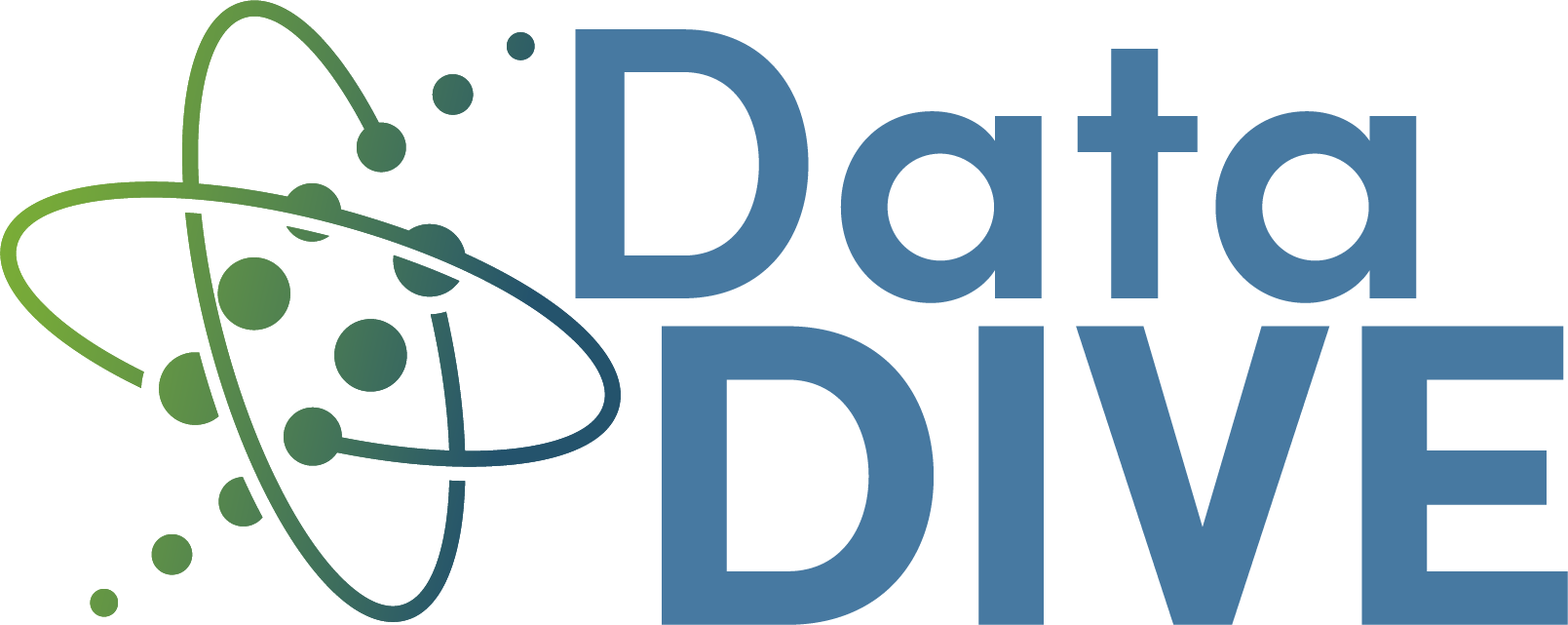
Although immunotherapy has dramatically expanded the treatment landscape for a range of advanced cancers, there are several subtypes, including certain breast and lung cancers, that remain resistant to standard treatments and for which treatment options are limited. As a result, many patients continue to experience declining response rates, disease control, and quality of life. Nevertheless, efforts to identify novel approaches for addressing these significant unmet needs are ongoing. One approach that has shown a great deal of promise and has garnered significant attention recently is the use of antibody-drug conjugates (ADCs) that target Trop-2, a transmembrane glycoprotein that is upregulated in many cancers. By taking advantage of monoclonal antibodies selective for Trop-2, these agents enable the delivery of a potent cytotoxic agent to tumor cells with minimal damage to normal cells. There is currently only one Trop-2 ADC that has been approved by the FDA for TNBC and HR+/HER2- BC. However, evidence continues to emerge in support of the use of multiple Trop-2 ADCs in not only these cancers, but others as well.
Join Drs. Jason Porter and Lee Schwartzberg as they dive deeper into the most relevant data on Trop-2 ADCs and help clinicians incorporate Trop-2-targeted ADCs into evidence-based treatment plans for patients with TNBC, HR+/HER2- BC, and NSCLC.
This educational activity has been designed to meet the needs of community oncologists and advanced practice providers involved in the care of patients with breast or lung cancers.
Upon completion of this educational activity, participants should be able to:
 |
Jason Porter, MD Medical Oncologist/Hematologist West Cancer Center and Research Institute Memphis, Tennessee |
 |
Lee Schwartzberg, MD, FACP Professor of Clinical Medicine University of Nevada – Reno Chief, Medical Oncology/Hematology William N. Pennington Cancer Institute at Renown Health Reno, Nevada |
Integrity Continuing Education, Inc. requires instructors, planners, managers, and other individuals who are in a position to control the content of this activity to disclose any financial relationships with ineligible companies. All identified relevant financial relationships are thoroughly vetted by Integrity Continuing Education, Inc. for fair balance, scientific objectivity of studies mentioned in the materials or used as the basis for content, and appropriateness of patient care recommendations. All relevant financial relationships have been mitigated.
The following faculty/planners reported the financial relationships or relationships to products or devices they have with ineligible companies related to the content of this CME activity:
Jason Porter, MD
Consultant: Amgen, Bristol Myers Squibb, G1 Therapeutics Inc., Jazz, Merck, Mirati, Novartis, Regeneron Pharmaceuticals, Inc.
Speaker: Amgen, Bristol Myers Squibb, G1 Therapeutics Inc., Jazz, Merck, Mirati, Novartis, Regeneron Pharmaceuticals, Inc.
Lee Schwartzberg, MD, FACP
Consultant: AstraZeneca, Daiichi Sankyo, Genentech, Napo, Novartis, Seagen
Speaker: AstraZeneca, Daiichi Sankyo, Merck, Novartis, Pfizer, Seagen
The Integrity Continuing Education, Inc. planners and managers do not have any financial relationships or relationships to products or devices with ineligible companies.
There are no fees for participating and receiving CME credit for this activity. During the period of February 5, 2024 through August 5, 2024, participants must:
A statement of credit will be issued only upon receipt of a completed posttest with a score of 60% or better and a completed activity evaluation form.
Integrity Continuing Education, Inc. is accredited by the Accreditation Council for Continuing Medical Education (ACCME) to provide continuing medical education for physicians.
Integrity Continuing Education, Inc. designates this enduring material for a maximum of 0.75 AMA PRA Category 1 CreditTM. Physicians should claim only the credit commensurate with the extent of their participation in the activity.
For information about ACCME accreditation of this activity, please contact Integrity Continuing Education, Inc. at (855) 835-4004 or cme@integrityce.com.
This educational activity may contain discussion of published and/or investigational uses of agents that are not indicated by the FDA. Integrity Continuing Education, Inc. does not recommend the use of any agent outside of the labeled indications.
The opinions expressed in the educational activity are those of the faculty and do not necessarily represent the views of any organization associated with this activity. Please refer to the official prescribing information for each product for discussion of approved indications, contraindications, and warnings.
Internet
When you participate in an online educational activity sponsored by Integrity Continuing Education, Inc., you will be asked for your name, degree(s), affiliation(s), street address, telephone number and…(continued)
Minimum Processor: Intel Pentium 4, 2.33 + GHz (or equivalent)
Operating Systems: Windows XP, Windows 2000, Windows Vista, Windows 7, Windows 10, and Mac OS
Plug-in: Adobe® Flash® Player 10
For optimal performance, the use of Internet Explorer below 8 is not recommended
For a full listing of recommended operating systems, browsers, and system configurations, please click on the link below:
Click here for more information on minimum system requirements
The information provided at this activity is for continuing education purposes only and is not meant to substitute for the independent medical judgment of a physician relative to diagnostic and treatment options of a specific patient’s medical condition.
This educational activity is provided by Integrity Continuing Education, Inc.
This activity is supported by an educational grant from AstraZeneca Pharmaceuticals.
Stage III non-small cell lung cancer (NSCLC) is a heterogenous disease that is typically treated with multimodal therapeutic approaches, which may include systemic therapies, radiotherapy, and surgery. Individualizing treatment strategies for patients with stage III NSCLC requires accurate clinical and pathological staging. The treatment journey of patients with stage III NSCLC has evolved rapidly over the last few years with improved staging approaches and approval of consolidation immunotherapy following concurrent chemoradiotherapy (cCRT).
Pretreatment multidisciplinary team discussion is crucial in defining the most optimal treatment approach for each patient. This activity will feature Dr. Ticiana Leal sharing her thoughts on the implications for cCRT and consolidation with durvalumab in the perioperative treatment paradigm.
This educational activity was developed to meet the professional needs of medical, surgical, and radiation oncologists, along with other healthcare providers involved in the treatment and management of patients with lung cancer.
Upon completion of this educational activity, participants should be able to:
 |
Ticiana Leal, MD Associate Professor Department of Hematology/Oncology Director, Thoracic Medical Oncology Program Winship Cancer Institute Emory University Atlanta, Georgia |
 |
Aakash Desai, MD Assistant Professor University of Alabama at Birmingham Birmingham, Alabama |
 |
Kristin A. Higgins, MD Professor and Vice Chair of Clinical Research Department of Radiation Oncology Winship Cancer Institute Emory University Atlanta, Georgia |
Integrity Continuing Education, Inc. requires instructors, planners, managers, and other individuals who are in a position to control the content of this activity to disclose any financial relationships with ineligible companies. All identified relevant financial relationships are thoroughly vetted by Integrity Continuing Education, Inc. for fair balance, scientific objectivity of studies mentioned in the materials or used as the basis for content, and appropriateness of patient care recommendations. All relevant financial relationships have been mitigated.
The following faculty/planners reported the financial relationships or relationships to products or devices they have with ineligible companies related to the content of this CME activity:
Aakash Desai, MD
Consultant: Amgen, AstraZeneca, Foundation Medicine, Sanofi
Kristin A. Higgins, MD
Advisory Boards: AstraZeneca, Janssen Pharmaceuticals
Consultant: Picture Health
Funded Research: Jazz Pharmaceuticals
Ticiana Leal, MD, does not have any financial relationships or relationships to products or devices with ineligible companies.
The Integrity Continuing Education, Inc. planners and managers do not have any financial relationships or relationships to products or devices with ineligible companies.
There are no fees for participating and receiving CME credit for this activity. During the period of January 15, 2024 through April 15, 2024, participants must:
A statement of credit will be issued only upon receipt of a completed posttest with a score of 100% and a completed activity evaluation form.

Integrity Continuing Education, Inc. is accredited by the Accreditation Council for Continuing Medical Education (ACCME) to provide continuing medical education for physicians.
Integrity Continuing Education, Inc. designates this enduring material for a maximum of 0.25 AMA PRA Category 1 CreditTM. Physicians should claim only the credit commensurate with the extent of their participation in the activity.
For information about ACCME accreditation of this activity, please contact Integrity Continuing Education, Inc. at (855) 835-4004 or cme@integrityce.com.
This educational activity may contain discussion of published and/or investigational uses of agents that are not indicated by the FDA. Integrity Continuing Education, Inc. does not recommend the use of any agent outside of the labeled indications.
The opinions expressed in the educational activity are those of the faculty and do not necessarily represent the views of any organization associated with this activity. Please refer to the official prescribing information for each product for discussion of approved indications, contraindications, and warnings.
Internet
When you participate in an online educational activity sponsored by Integrity Continuing Education, Inc., you will be asked for your name, degree(s), affiliation(s), street address, telephone number and…(continued)
Minimum Processor: Intel Pentium 4, 2.33 + GHz (or equivalent)
Operating Systems: Windows XP, Windows 2000, Windows Vista, Windows 7, Windows 10, and Mac OS
Plug-in: Adobe® Flash® Player 10
For optimal performance, the use of Internet Explorer below 8 is not recommended
For a full listing of recommended operating systems, browsers, and system configurations, please click on the link below:
Click here for more information on minimum system requirements
The information provided at this activity is for continuing education purposes only and is not meant to substitute for the independent medical judgment of a physician relative to diagnostic and treatment options of a specific patient’s medical condition.
Provided by Integrity Continuing Education, Inc.
Supported by an educational grant from Pharmacyclics LLC, an AbbVie Company and Janssen Biotech, Inc., administered by Janssen Scientific Affairs, LLC.
This activity will provide context and insight on the latest data in multiple myeloma and precursor conditions released at the recent meeting in San Diego, led by expert faculty, Dr. Ola Landgren and Dr. Saad Usmani. The following abstracts will be covered:
This educational activity was designed for community-based medical oncologists and hematologists, as well as other healthcare providers that treat and manage patients with hematologic malignancies.
Upon completion of this educational activity, participants should be able to:
 |
Ola Landgren, MD, PhD Chief of Myeloma Professor of Medicine Director, Slyvester Myeloma Institute University of Miami Miami, Florida |
 |
Saad Usmani, MD, MBA, FACP, FRCP Chief of Myeloma Service Member, Memorial Sloan Kettering Cancer Center Attending Physician, Myeloma, Cellular Therapy and Adult BMT Professor, Weill Cornell Medical College – Cornell University New York, New York |
Integrity Continuing Education, Inc. requires instructors, planners, managers, and other individuals who are in a position to control the content of this activity to disclose any financial relationships with ineligible companies. All identified relevant financial relationships are thoroughly vetted by Integrity Continuing Education, Inc. for fair balance, scientific objectivity of studies mentioned in the materials or used as the basis for content, and appropriateness of patient care recommendations. All relevant financial relationships have been mitigated.
The following faculty/planners reported the financial relationships or relationships to products or devices they have with ineligible companies related to the content of this CME activity:
Ola Landgren, MD, PhD
Advisory Boards: Adaptive Biotech, Amgen, Bristol Myers Squibb, Janssen, Pfizer
Grant Support: Amgen, Janssen, Karyopharm, Takeda
Saad Usmani, MD, MBA, FACP, FRCP
Advisory Boards: AbbVie, Amgen, Bristol Myers Squibb, Celgene, EdoPharma, Genentech, Gilead, GlaxoSmithKline, Janssen, Oncopeptides, Sanofi, Seattle Genetics, SecuraBio, SkylineDX, Takeda, TeneoBio
Consultant: AbbVie, Amgen, Bristol Myers Squibb, Celgene, EdoPharma, Genentech, Gilead, GlaxoSmithKline, Janssen, Oncopeptides, Sanofi, Seattle Genetics, SecuraBio, SkylineDX, Takeda, TeneoBio
Research Funding: Amgen, Array Biopharma, Bristol Myers Squibb, Celgene, GlaxoSmithKline, Janssen, Merck, Pharmacyclics, Sanofi, Seattle Genetics, SkylineDX, Takeda
The Integrity Continuing Education, Inc. planners and managers do not have any financial relationships or relationships to products or devices with ineligible companies.
There are no fees for participating and receiving CME credit for this activity. During the period of January 11, 2024 through January 11, 2025, participants must:
A statement of credit will be issued only upon receipt of a completed posttest with a score of 72% or better and a completed activity evaluation form.

Integrity Continuing Education, Inc. is accredited by the Accreditation Council for Continuing Medical Education (ACCME) to provide continuing medical education for physicians.
Integrity Continuing Education, Inc. designates this enduring material for a maximum of 0.5 AMA PRA Category 1 CreditTM. Physicians should claim only the credit commensurate with the extent of their participation in the activity.
For information about ACCME accreditation of this activity, please contact Integrity Continuing Education, Inc. at (855) 835-4004 or cme@integrityce.com.
This educational activity may contain discussion of published and/or investigational uses of agents that are not indicated by the FDA. Integrity Continuing Education, Inc. does not recommend the use of any agent outside of the labeled indications.
The opinions expressed in the educational activity are those of the faculty and do not necessarily represent the views of any organization associated with this activity. Please refer to the official prescribing information for each product for discussion of approved indications, contraindications, and warnings.
Internet
When you participate in an online educational activity sponsored by Integrity Continuing Education, Inc., you will be asked for your name, degree(s), affiliation(s), street address, telephone number and…(continued)
Minimum Processor: Intel Pentium 4, 2.33 + GHz (or equivalent)
Operating Systems: Windows XP, Windows 2000, Windows Vista, Windows 7, Windows 10, and Mac OS
Plug-in: Adobe® Flash® Player 10
For optimal performance, the use of Internet Explorer below 8 is not recommended
For a full listing of recommended operating systems, browsers, and system configurations, please click on the link below:
Click here for more information on minimum system requirements
The information provided at this activity is for continuing education purposes only and is not meant to substitute for the independent medical judgment of a physician relative to diagnostic and treatment options of a specific patient’s medical condition.
This activity is provided by Integrity Continuing Education, Inc.
This activity is supported by an educational grant from Sanofi and Regeneron Pharmaceuticals.
Prurigo nodularis (PN) is a dermatologic disease that starts at a deep, neuro-immune molecular level and nothing applied to or done to the top of the skin will ever bring relief. The only thing that will work to tame the itch are targeted treatments that address the underlying type 2 immuno-inflammatory molecular drivers of this disease. Fortunately, patients with PN now have an FDA-approved treatment option that does just that, and other treatments in late-phase clinical development may be close behind. Join our expert faculty as they explore PN and its new and emerging treatment options.
This educational activity has been designed to meet the needs of dermatologists as well as nurse practitioners and physician assistants involved in the management of patients with PN.
Upon completion of this educational activity, participants should be able to:
 |
Shawn G. Kwatra, MD Associate Professor of Dermatology Department of Dermatology Director, Johns Hopkins Itch Center Johns Hopkins University School of Medicine Baltimore, Maryland |
 |
Sarina Elmariah, MD, PhD, MPH Associate Professor, Dermatology Director, UCSF Center for Itch and Neurosensory Disorders University of California San Francisco San Francisco, California |
Integrity Continuing Education, Inc. requires instructors, planners, managers, and other individuals who are in a position to control the content of this activity to disclose any financial relationships with ineligible companies. All identified relevant financial relationships are thoroughly vetted by Integrity Continuing Education, Inc. for fair balance, scientific objectivity of studies mentioned in the materials or used as the basis for content, and appropriateness of patient care recommendations. All relevant financial relationships have been mitigated.
The following faculty/planners reported the financial relationships or relationships to products or devices they have with ineligible companies related to the content of this CME activity:
Sarina Elmariah, MD, PhD, MPH
Advisory Board: Bellus Health, Galderma, Lilly, Pfizer, Sanofi-Regeneron, Trevi Therapeutics
Stocks: New Frontier Bio
Shawn G. Kwatra, MD
Consultant: AbbVie, Acrutis Biotherapeutics, Aslan Pharmaceuticals, Castle Bioscience, Celldex Therapeutics, Novartis
Investigator: Incyte, Pfizer, Regeneron, Sanofi
The Integrity Continuing Education, Inc. planners and managers do not have any financial relationships or relationships to products or devices with ineligible companies.
There are no fees for participating and receiving CME credit for this activity. During the period of January 8, 2024, through January 8, 2025, participants must:
A statement of credit will be issued only upon receipt of a completed posttest with a score of 50% or better and a completed activity evaluation form.

Integrity Continuing Education, Inc. is accredited by the Accreditation Council for Continuing Medical Education (ACCME) to provide continuing medical education for physicians.
Integrity Continuing Education, Inc. designates this enduring material for a maximum of 0.75 AMA PRA Category 1 CreditTM. Physicians should claim only the credit commensurate with the extent of their participation in the activity.
For information about ACCME accreditation of this activity, please contact Integrity Continuing Education, Inc. at (855) 835-4004 or cme@integrityce.com.
This educational activity may contain discussion of published and/or investigational uses of agents that are not indicated by the FDA. Integrity Continuing Education, Inc. does not recommend the use of any agent outside of the labeled indications.
The opinions expressed in the educational activity are those of the faculty and do not necessarily represent the views of any organization associated with this activity. Please refer to the official prescribing information for each product for discussion of approved indications, contraindications, and warnings.
Internet
When you participate in an online educational activity sponsored by Integrity Continuing Education, Inc., you will be asked for your name, degree(s), affiliation(s), street address, telephone number and…(continued)
Minimum Processor: Intel Pentium 4, 2.33 + GHz (or equivalent)
Operating Systems: Windows XP, Windows 2000, Windows Vista, Windows 7, Windows 10, and Mac OS
Plug-in: Adobe® Flash® Player 10
For optimal performance, the use of Internet Explorer below 8 is not recommended
For a full listing of recommended operating systems, browsers, and system configurations, please click on the link below:
Click here for more information on minimum system requirements
The information provided at this activity is for continuing education purposes only and is not meant to substitute for the independent medical judgment of a physician relative to diagnostic and treatment options of a specific patient’s medical condition.
This activity is provided by Integrity Continuing Education, Inc.
This activity is supported by an independent medical education grant from Regeneron Pharmaceuticals, Inc and Sanofi.
Treatment with biologic therapy as compared with maintenance corticosteroids (oral or high-dose inhaled) has consistently been shown to reduce disease burden among a wide range of individuals with moderate-to-severe asthma. Nevertheless, a significant subset of patients treated with biologics continues to experience poor asthma control and a high burden of disease, raising important questions regarding how to optimize the use of available therapies. Join our esteemed clinician faculty as they discuss the selection of appropriate initial biologic therapy for patients with moderate-to-severe asthma to improve health outcomes.
This educational activity has been designed for US allergists, pulmonologists, advanced practice providers in allergy and pulmonary settings, and internal medicine clinicians.
Upon completion of this educational activity, participants should be able to:
 |
Linda B. Ford, MD, FAAAAI, FACAAI, AE-C Clinical Assistant Professor Department of Pediatrics University of Nebraska Medical Center President and CEO The Asthma & Allergy Center, PC Omaha, Nebraska |
 |
Reynold A. Panettieri, Jr., MD Vice Chancellor, Translational Medicine and Science Director, Rutgers Institute for Translational Medicine and Science Professor of Medicine, Rutgers University Emeritus Professor of Medicine, University of Pennsylvania New Brunswick, New Jersey |
Integrity Continuing Education, Inc. requires instructors, planners, managers, and other individuals who are in a position to control the content of this activity to disclose any financial relationships with ineligible companies. All identified relevant financial relationships are thoroughly vetted by Integrity Continuing Education, Inc. for fair balance, scientific objectivity of studies mentioned in the materials or used as the basis for content, and appropriateness of patient care recommendations. All relevant financial relationships have been mitigated.
The following faculty/planners reported the financial relationships or relationships to products or devices they have with ineligible companies related to the content of this CME activity:
Linda B. Ford, MD, FAAAAI, FACAAI, AE-C
Independent Contractor: Allergy Therapeutics, AstraZeneca, Bellus, Chiesi, Enanta, Genentech, Koneksa, Regeneron, Sanofi, Suzhou
Reynold A. Panettieri, Jr., MD
Advisor: Praesidia Biotherapies Inc.
Advisory Board: AstraZeneca, Genentech, RIFM
Consultant: AstraZeneca, RIFM, TEVA
Research Grants: ACTIV-1, AgoMab, AstraZeneca, Janssen, Medimmune, RIFM, TEVA, Vault Health
Speaker: AstraZeneca, Merck & Co., Sanofi
The Integrity Continuing Education, Inc. planners and managers do not have any financial relationships or relationships to products or devices with ineligible companies.
There are no fees for participating and receiving CME credit for this activity. During the period of September 1, 2023 through March 31, 2024, participants must:
A statement of credit will be issued only upon receipt of a completed activity evaluation form.

Integrity Continuing Education, Inc. is accredited by the Accreditation Council for Continuing Medical Education (ACCME) to provide continuing medical education for physicians.
Integrity Continuing Education, Inc. designates this enduring material for a maximum of 0.5 AMA PRA Category 1 CreditTM. Physicians should claim only the credit commensurate with the extent of their participation in the activity.
For information about ACCME accreditation of this activity, please contact Integrity Continuing Education, Inc. at (855) 835-4004 or cme@integrityce.com.
This educational activity may contain discussion of published and/or investigational uses of agents that are not indicated by the FDA. Integrity Continuing Education, Inc. does not recommend the use of any agent outside of the labeled indications.
The opinions expressed in the educational activity are those of the faculty and do not necessarily represent the views of any organization associated with this activity. Please refer to the official prescribing information for each product for discussion of approved indications, contraindications, and warnings.
Internet
When you participate in an online educational activity sponsored by Integrity Continuing Education, Inc., you will be asked for your name, degree(s), affiliation(s), street address, telephone number and…(continued)
Minimum Processor: Intel Pentium 4, 2.33 + GHz (or equivalent)
Operating Systems: Windows XP, Windows 2000, Windows Vista, Windows 7, Windows 10, and Mac OS
Plug-in: Adobe® Flash® Player 10
For optimal performance, the use of Internet Explorer below 8 is not recommended
For a full listing of recommended operating systems, browsers, and system configurations, please click on the link below:
Click here for more information on minimum system requirements
The information provided at this activity is for continuing education purposes only and is not meant to substitute for the independent medical judgment of a physician relative to diagnostic and treatment options of a specific patient’s medical condition.
This activity is provided by Integrity Continuing Education, Inc.
This activity is supported by an independent medical education grant from Regeneron Pharmaceuticals, Inc and Sanofi.
Treatment with biologic therapy as compared with maintenance corticosteroids (oral or high-dose inhaled) has consistently been shown to reduce disease burden among a wide range of individuals with moderate-to-severe asthma. Nevertheless, a significant subset of patients treated with biologics continue to experience poor asthma control and a high burden of disease, raising important questions regarding how to optimize the use of available therapies. Join our esteemed clinician faculty as they discuss evaluating biologic therapy responses for patients with moderate-to-severe asthma to improve health outcomes.
This educational activity has been designed for US allergists, pulmonologists, advanced practice providers in allergy and pulmonary settings, and internal medicine clinicians.
Upon completion of this educational activity, participants should be able to:
 |
Linda B. Ford, MD, FAAAAI, FACAAI, AE-C Clinical Assistant Professor Department of Pediatrics University of Nebraska Medical Center President and CEO The Asthma & Allergy Center, PC Omaha, Nebraska |
 |
Reynold A. Panettieri, Jr., MD |
Integrity Continuing Education, Inc. requires instructors, planners, managers, and other individuals who are in a position to control the content of this activity to disclose any financial relationships with ineligible companies. All identified relevant financial relationships are thoroughly vetted by Integrity Continuing Education, Inc. for fair balance, scientific objectivity of studies mentioned in the materials or used as the basis for content, and appropriateness of patient care recommendations. All relevant financial relationships have been mitigated.
The following faculty/planners reported the financial relationships or relationships to products or devices they have with ineligible companies related to the content of this CME activity:
Linda B. Ford, MD, FAAAAI, FACAAI, AE-C
Independent Contractor: Allergy Therapeutics, AstraZeneca, Bellus, Chiesi, Enanta, Genentech, Koneksa, Regeneron, Sanofi, Suzhou
Reynold A. Panettieri, Jr., MD
Advisor: Praesidia Biotherapies Inc.
Advisory Board: AstraZeneca, Genentech, RIFM
Consultant: AstraZeneca, RIFM, TEVA
Research Grants: ACTIV-1, AgoMab, AstraZeneca, Janssen, Medimmune, RIFM, TEVA, Vault Health
Speaker: AstraZeneca, Merck & Co., Sanofi
The Integrity Continuing Education, Inc. planners and managers do not have any financial relationships or relationships to products or devices with ineligible companies.
There are no fees for participating and receiving CME credit for this activity. During the period of September 1, 2023 through March 31, 2024, participants must:
A statement of credit will be issued only upon receipt of a completed activity evaluation form.

Integrity Continuing Education, Inc. is accredited by the Accreditation Council for Continuing Medical Education (ACCME) to provide continuing medical education for physicians.
Integrity Continuing Education, Inc. designates this enduring material for a maximum of 0.25 AMA PRA Category 1 CreditTM. Physicians should claim only the credit commensurate with the extent of their participation in the activity.
For information about ACCME accreditation of this activity, please contact Integrity Continuing Education, Inc. at (855) 835-4004 or cme@integrityce.com.
This educational activity may contain discussion of published and/or investigational uses of agents that are not indicated by the FDA. Integrity Continuing Education, Inc. does not recommend the use of any agent outside of the labeled indications.
The opinions expressed in the educational activity are those of the faculty and do not necessarily represent the views of any organization associated with this activity. Please refer to the official prescribing information for each product for discussion of approved indications, contraindications, and warnings.
Internet
When you participate in an online educational activity sponsored by Integrity Continuing Education, Inc., you will be asked for your name, degree(s), affiliation(s), street address, telephone number and…(continued)
Minimum Processor: Intel Pentium 4, 2.33 + GHz (or equivalent)
Operating Systems: Windows XP, Windows 2000, Windows Vista, Windows 7, Windows 10, and Mac OS
Plug-in: Adobe® Flash® Player 10
For optimal performance, the use of Internet Explorer below 8 is not recommended
For a full listing of recommended operating systems, browsers, and system configurations, please click on the link below:
Click here for more information on minimum system requirements
The information provided at this activity is for continuing education purposes only and is not meant to substitute for the independent medical judgment of a physician relative to diagnostic and treatment options of a specific patient’s medical condition.
This activity is provided by Integrity Continuing Education, Inc.
This activity is supported by an independent medical education grant from Regeneron Pharmaceuticals, Inc and Sanofi.
Treatment with biologic therapy as compared with maintenance corticosteroids (oral or high-dose inhaled) has consistently been shown to reduce disease burden among a wide range of individuals with moderate-to-severe asthma. Nevertheless, a significant subset of patients treated with biologics continue to experience poor asthma control and a high burden of disease, raising important questions regarding how to optimize the use of available therapies. Join our esteemed clinician faculty as they discuss long-term biologic treatment data for patients with moderate-to-severe asthma.
This educational activity has been designed for US allergists, pulmonologists, advanced practice providers in allergy and pulmonary settings, and internal medicine clinicians.
Upon completion of this educational activity, participants should be able to:
 |
Linda B. Ford, MD, FAAAAI, FACAAI, AE-C Clinical Assistant Professor Department of Pediatrics University of Nebraska Medical Center President and CEO The Asthma & Allergy Center, PC Omaha, Nebraska |
 |
Reynold A. Panettieri, Jr., MD Vice Chancellor, Translational Medicine and Science Director, Rutgers Institute for Translational Medicine and Science Professor of Medicine, Rutgers University Emeritus Professor of Medicine, University of Pennsylvania New Brunswick, New Jersey |
Integrity Continuing Education, Inc. requires instructors, planners, managers, and other individuals who are in a position to control the content of this activity to disclose any financial relationships with ineligible companies. All identified relevant financial relationships are thoroughly vetted by Integrity Continuing Education, Inc. for fair balance, scientific objectivity of studies mentioned in the materials or used as the basis for content, and appropriateness of patient care recommendations. All relevant financial relationships have been mitigated.
The following faculty/planners reported the financial relationships or relationships to products or devices they have with ineligible companies related to the content of this CME activity:
Linda B. Ford, MD, FAAAAI, FACAAI, AE-C
Independent Contractor: Allergy Therapeutics, AstraZeneca, Bellus, Chiesi, Enanta, Genentech, Koneksa, Regeneron, Sanofi, Suzhou
Reynold A. Panettieri, Jr., MD
Advisor: Praesidia Biotherapies Inc.
Advisory Board: AstraZeneca, Genentech, RIFM
Consultant: AstraZeneca, RIFM, TEVA
Research Grants: ACTIV-1, AgoMab, AstraZeneca, Janssen, Medimmune, RIFM, TEVA, Vault Health
Speaker: AstraZeneca, Merck & Co., Sanofi
The Integrity Continuing Education, Inc. planners and managers do not have any financial relationships or relationships to products or devices with ineligible companies.
There are no fees for participating and receiving CME credit for this activity. During the period of September 1, 2023 through March 31, 2024, participants must:
A statement of credit will be issued only upon receipt of a completed activity evaluation form.

Integrity Continuing Education, Inc. is accredited by the Accreditation Council for Continuing Medical Education (ACCME) to provide continuing medical education for physicians.
Integrity Continuing Education, Inc. designates this enduring material for a maximum of 0.25 AMA PRA Category 1 CreditTM. Physicians should claim only the credit commensurate with the extent of their participation in the activity.
For information about ACCME accreditation of this activity, please contact Integrity Continuing Education, Inc. at (855) 835-4004 or cme@integrityce.com.
This educational activity may contain discussion of published and/or investigational uses of agents that are not indicated by the FDA. Integrity Continuing Education, Inc. does not recommend the use of any agent outside of the labeled indications.
The opinions expressed in the educational activity are those of the faculty and do not necessarily represent the views of any organization associated with this activity. Please refer to the official prescribing information for each product for discussion of approved indications, contraindications, and warnings.
Internet
When you participate in an online educational activity sponsored by Integrity Continuing Education, Inc., you will be asked for your name, degree(s), affiliation(s), street address, telephone number and…(continued)
Minimum Processor: Intel Pentium 4, 2.33 + GHz (or equivalent)
Operating Systems: Windows XP, Windows 2000, Windows Vista, Windows 7, Windows 10, and Mac OS
Plug-in: Adobe® Flash® Player 10
For optimal performance, the use of Internet Explorer below 8 is not recommended
For a full listing of recommended operating systems, browsers, and system configurations, please click on the link below:
Click here for more information on minimum system requirements
The information provided at this activity is for continuing education purposes only and is not meant to substitute for the independent medical judgment of a physician relative to diagnostic and treatment options of a specific patient’s medical condition.
This activity is provided by Integrity Continuing Education, Inc.
This activity is supported by educational grants from AstraZeneca Pharmaceuticals, Daiichi Sankyo, Inc., and Merck Sharpe & Dohme, LLC.
This activity will provide context and insight on the latest data in breast cancer released at the recent meeting in San Antonio, led by expert faculty. The following abstracts will be covered:
This educational activity was designed for community-based medical oncologists and other healthcare providers that treat and manage patients with breast cancer.
Upon completion of this educational activity, participants should be able to:
 |
Aditya Bardia, MD Director, Breast Cancer Research Associate Professor Harvard Medical School Attending Physician Massachusetts General Hospital Boston, Massachusetts |
 |
Maryam Lustberg, MD, MPH Director, Center for Breast Cancer Smillow Cancer Hospital and Yale Cancer Center Chief, Breast Medical Oncology Yale Cancer Center New Haven, Connecticut |
 |
Paolo Tarantino, MD Advanced Research Fellow Dana-Farber Cancer Institute Harvard Medical School Boston, Massachusetts |
Integrity Continuing Education, Inc. requires instructors, planners, managers, and other individuals who are in a position to control the content of this activity to disclose any financial relationships with ineligible companies. All identified relevant financial relationships are thoroughly vetted by Integrity Continuing Education, Inc. for fair balance, scientific objectivity of studies mentioned in the materials or used as the basis for content, and appropriateness of patient care recommendations. All relevant financial relationships have been mitigated.
The following faculty/planners reported the financial relationships or relationships to products or devices they have with ineligible companies related to the content of this CME activity:
Aditya Bardia, MD
Consultant: AstraZeneca, Daiichi Sankyo, Eli Lilly, Genentech, Gilead, Menarini, Merck, Novartis, Pfizer, Sanofi
Research Grants: AstraZeneca, Daiichi Sankyo, Eli Lilly, Genentech, Gilead, Menarini, Merck, Novartis, Pfizer, Sanofi
Maryam Lustberg, MD, MPH
Consultant: AstraZeneca, Eli Lily, Gilead, Novartis, Pfizer
Paolo Tarantino, MD
Consultant: AstraZeneca, Daiichi Sankyo, Eli Lilly, Genentech, Gilead, Novartis, Roche
Research Funding: AstraZeneca
Speaker: AstraZeneca, Daiichi Sankyo
The Integrity Continuing Education, Inc. planners and managers do not have any financial relationships or relationships to products or devices with ineligible companies.
There are no fees for participating and receiving CME credit for this activity. During the period of January 9, 2024 through January 9, 2025, participants must:
A statement of credit will be issued only upon receipt of a completed posttest with a score of 50% or better and a completed activity evaluation form.

Integrity Continuing Education, Inc. is accredited by the Accreditation Council for Continuing Medical Education (ACCME) to provide continuing medical education for physicians.
Integrity Continuing Education, Inc. designates this enduring material for a maximum of 1.0 AMA PRA Category 1 CreditTM. Physicians should claim only the credit commensurate with the extent of their participation in the activity.
For information about ACCME accreditation of this activity, please contact Integrity Continuing Education, Inc. at (855) 835-4004 or cme@integrityce.com.
This educational activity may contain discussion of published and/or investigational uses of agents that are not indicated by the FDA. Integrity Continuing Education, Inc. does not recommend the use of any agent outside of the labeled indications.
The opinions expressed in the educational activity are those of the faculty and do not necessarily represent the views of any organization associated with this activity. Please refer to the official prescribing information for each product for discussion of approved indications, contraindications, and warnings.
Internet
When you participate in an online educational activity sponsored by Integrity Continuing Education, Inc., you will be asked for your name, degree(s), affiliation(s), street address, telephone number and…(continued)
Minimum Processor: Intel Pentium 4, 2.33 + GHz (or equivalent)
Operating Systems: Windows XP, Windows 2000, Windows Vista, Windows 7, Windows 10, and Mac OS
Plug-in: Adobe® Flash® Player 10
For optimal performance, the use of Internet Explorer below 8 is not recommended
For a full listing of recommended operating systems, browsers, and system configurations, please click on the link below:
Click here for more information on minimum system requirements
The information provided at this activity is for continuing education purposes only and is not meant to substitute for the independent medical judgment of a physician relative to diagnostic and treatment options of a specific patient’s medical condition.
This activity is provided by Integrity Continuing Education, Inc.
This activity is supported by an educational grant from AstraZeneca Pharmaceuticals.
Stage III non-small cell lung cancer (NSCLC) is a heterogeneous disease that is typically treated with multimodal therapeutic approaches, which may include systemic therapies, radiotherapy, and surgery. Individualizing treatment strategies for patients with stage III NSCLC requires accurate clinical and pathological staging. The treatment journey of patients with stage III NSCLC has evolved rapidly over the last few years with improved staging approaches and approval of consolidation immunotherapy following concurrent chemoradiotherapy (cCRT).
Pretreatment multidisciplinary team discussion is crucial in defining the most optimal treatment approach for each patient. This activity will feature a multidisciplinary panel of three expert faculty discussing the current standard of care and the quickly moving science that is changing the treatment paradigm for patients with stage III unresectable NSCLC. The discussion will center around the treatment of a typical case and focus on optimal treatment selection, the challenges faced, and each faculty’s insight on their approach to treatment.
This educational activity was developed to meet the professional needs of medical, surgical, and radiation oncologists, along with other healthcare providers involved in the treatment and management of patients with lung cancer.
Upon completion of this educational activity, participants should be able to:
 |
Kristin A. Higgins, MD Professor and Vice Chair of Clinical Research Department of Radiation Oncology Winship Cancer Institute Emory University Atlanta, Georgia |
 |
Onkar Khullar, MD, MSc, FACS Associate Professor Department of Surgery Winship Cancer Institute Emory University Atlanta, Georgia |
 |
Ticiana Leal, MD Associate Professor Department of Hematology/Oncology Director, Thoracic Medical Oncology Program Winship Cancer Institute Emory University Atlanta, Georgia |
Integrity Continuing Education, Inc. requires instructors, planners, managers, and other individuals who are in a position to control the content of this activity to disclose any financial relationships with ineligible companies. All identified relevant financial relationships are thoroughly vetted by Integrity Continuing Education, Inc. for fair balance, scientific objectivity of studies mentioned in the materials or used as the basis for content, and appropriateness of patient care recommendations. All relevant financial relationships have been mitigated.
The following faculty/planners reported the financial relationships or relationships to products or devices they have with ineligible companies related to the content of this CME activity:
Kristin A. Higgins, MD
Advisory Boards: AstraZeneca, Janssen Pharmaceuticals
Consultant: Picture Health
Funded Research: Jazz Pharmaceuticals
Onkar Khullar, MD, MSc, FACS, does not have any financial relationships or relationships to products or devices with ineligible companies.
Ticiana Leal, MD, does not have any financial relationships or relationships to products or devices with ineligible companies.
The Integrity Continuing Education, Inc. planners and managers do not have any financial relationships or relationships to products or devices with ineligible companies.
There are no fees for participating and receiving CME credit for this activity. During the period of December 22, 2023 through December 22, 2024, participants must:
A statement of credit will be issued only upon receipt of a completed posttest with a score of 50% or better and a completed activity evaluation form.

Integrity Continuing Education, Inc. is accredited by the Accreditation Council for Continuing Medical Education (ACCME) to provide continuing medical education for physicians.
Integrity Continuing Education, Inc. designates this enduring material for a maximum of 1.0 AMA PRA Category 1 CreditTM. Physicians should claim only the credit commensurate with the extent of their participation in the activity.
For information about ACCME accreditation of this activity, please contact Integrity Continuing Education, Inc. at (855) 835-4004 or cme@integrityce.com.
This educational activity may contain discussion of published and/or investigational uses of agents that are not indicated by the FDA. Integrity Continuing Education, Inc. does not recommend the use of any agent outside of the labeled indications.
The opinions expressed in the educational activity are those of the faculty and do not necessarily represent the views of any organization associated with this activity. Please refer to the official prescribing information for each product for discussion of approved indications, contraindications, and warnings.
Internet
When you participate in an online educational activity sponsored by Integrity Continuing Education, Inc., you will be asked for your name, degree(s), affiliation(s), street address, telephone number and…(continued)
Minimum Processor: Intel Pentium 4, 2.33 + GHz (or equivalent)
Operating Systems: Windows XP, Windows 2000, Windows Vista, Windows 7, Windows 10, and Mac OS
Plug-in: Adobe® Flash® Player 10
For optimal performance, the use of Internet Explorer below 8 is not recommended
For a full listing of recommended operating systems, browsers, and system configurations, please click on the link below:
Click here for more information on minimum system requirements
The information provided at this activity is for continuing education purposes only and is not meant to substitute for the independent medical judgment of a physician relative to diagnostic and treatment options of a specific patient’s medical condition.
This activity is provided by Integrity Continuing Education, Inc.
This activity is supported by an independent medical educational grant from Boehringer Ingelheim Pharmaceuticals, Inc.
Characterized by severe flares of painful, pruritic, pus-filled blisters, generalized pustular psoriasis (GPP) is a rare dermatologic disorder that many dermatologists have never seen…at least not that they realized. Historically thought of as a severe form of plaque psoriasis (PsO), recent insights into the pathogenesis of GPP show it to be a distinct immuno-inflammatory disease driven by overactivity of the IL-36 pathway.
Join GPP experts Dr. Mark Lebwohl and Dr. Boni Elewski to find out what dermatologists and other healthcare professionals need to know about the pathogenesis of GPP, the mechanism of action of IL-36 receptor antagonists, and how to recognize, diagnose, and manage patients with this inflammatory cutaneous disease.
This educational activity is designed for dermatologists and other healthcare professionals involved in the management of rare dermatologic conditions such as GPP, including primary care physicians, nurse practitioners, and physician assistants.
Upon completion of this educational activity, participants should be able to:
 |
Boni Elewski, MD Professor and Chair James Elder Endowed Professor of Graduate Medical Education Department of Dermatology Heersink School of Medicine University of Alabama Birmingham, Alabama |
 |
Mark Lebwohl, MD Dean for Clinical Therapeutics Icahn School of Medicine at Mount Sinai Professor and Chairman Emeritus Kimberly and Eric J. Waldman Department of Dermatology New York, New York |
Integrity Continuing Education, Inc. requires instructors, planners, managers, and other individuals who are in a position to control the content of this activity to disclose any financial relationships with ineligible companies. All identified relevant financial relationships are thoroughly vetted by Integrity Continuing Education, Inc. for fair balance, scientific objectivity of studies mentioned in the materials or used as the basis for content, and appropriateness of patient care recommendations. All relevant financial relationships have been mitigated.
The following faculty/planners reported the financial relationships or relationships to products or devices they have with ineligible companies related to the content of this CME activity:
Boni Elewski, MD
Clinical research support: AbbVie, AnaptysBio, Boehringer Ingelheim, Bristol Myers Squibb, Incyte, Janssen, Leo, Lilly, Novartis, Pfizer, UCB
Consulting fees: Amgen, Arcutis, Boehringer Ingelheim, Bristol Myers Squibb, Janssen, Leo, Lilly, Novartis, Ortho Dermatologics, UCB
Mark G. Lebwohl, MD
Research funds: AbbVie, Amgen, Arcutis Biotherapeutics, Inc., Avotres, Boehringer Ingelheim, Cara Therapeutics, Dermavant Sciences, Eli Lilly, Incyte, Inozyme, Janssen Research & Development, LLC, Ortho Dermatologics, Pfizer, Sanofi-Regeneron, UCB
Consulting fees: Almirall, AltruBio, Inc., AnaptysBio, Arcutis Biotherapeutics, Inc., AstraZeneca, Avotres Therapeutics, Brickell Biotech, Boehringer Ingelheim, Bristol Myers Squibb, Castle Biosciences, Celltrion, Corevitas, Dermavant Sciences, EPI Health, Evommune, Inc., Facilitation of International Dermatology Education, Forte Biosciences, Foundation for Research and Education in Dermatology, Galderma, Genentech, Incyte, LEO Pharma, Meiji Seika Pharma, Mindera, Pfizer, Seanergy, Strata, Trevi, Verrica
The Integrity Continuing Education, Inc. planners and managers do not have any financial relationships or relationships to products or devices with ineligible companies.
There are no fees for participating and receiving CME credit for this activity. During the period of December 21, 2023, through December 21, 2024, participants must:
A statement of credit will be issued only upon receipt of a completed posttest with a score of 63% or better and a completed activity evaluation form.

Integrity Continuing Education, Inc. is accredited by the Accreditation Council for Continuing Medical Education (ACCME) to provide continuing medical education for physicians.
Integrity Continuing Education, Inc. designates this enduring material for a maximum of 1.0 AMA PRA Category 1 CreditTM. Physicians should claim only the credit commensurate with the extent of their participation in the activity.
For information about ACCME accreditation of this activity, please contact Integrity Continuing Education, Inc. at (855) 835-4004 or cme@integrityce.com.
This educational activity may contain discussion of published and/or investigational uses of agents that are not indicated by the FDA. Integrity Continuing Education, Inc. does not recommend the use of any agent outside of the labeled indications.
The opinions expressed in the educational activity are those of the faculty and do not necessarily represent the views of any organization associated with this activity. Please refer to the official prescribing information for each product for discussion of approved indications, contraindications, and warnings.
Internet
When you participate in an online educational activity sponsored by Integrity Continuing Education, Inc., you will be asked for your name, degree(s), affiliation(s), street address, telephone number and…(continued)
Minimum Processor: Intel Pentium 4, 2.33 + GHz (or equivalent)
Operating Systems: Windows XP, Windows 2000, Windows Vista, Windows 7, Windows 10, and Mac OS
Plug-in: Adobe® Flash® Player 10
For optimal performance, the use of Internet Explorer below 8 is not recommended
For a full listing of recommended operating systems, browsers, and system configurations, please click on the link below:
Click here for more information on minimum system requirements
The information provided at this activity is for continuing education purposes only and is not meant to substitute for the independent medical judgment of a physician relative to diagnostic and treatment options of a specific patient’s medical condition.
This activity is provided by Integrity Continuing Education, Inc.
This activity is supported by an independent medical educational grant from Boehringer Ingelheim Pharmaceuticals, Inc.
Effective treatments for schizophrenia have been available for decades, but by targeting only the dopamine neuropathway, currently available antipsychotics address only the positive symptoms — the voices, delusions, and hallucinations that are the recognizable hallmarks of the disease. However, two other symptom domains — negative and cognitive — can be just as debilitating, yet frequently go unrecognized and untreated. That’s likely because negative symptoms and cognitive impairment associated with schizophrenia (CIAS) are regulated by different, non-dopamine neurotransmitter pathways. Thus far, there have been no treatments to effectively address the flat affect and reduced motivation that are typical of negative symptoms or the poor memory and disorganized thinking that are characteristic of CIAS. Currently, though, several novel therapies are now in development to address these forgotten symptom domains of schizophrenia.
Join schizophrenia experts Dr. Daniel Javitt and Dr. Richard Keefe as they review the signs and traits of CIAS and negative symptoms and outline ways to address these forgotten domains of schizophrenia with current and emerging interventions.
This educational activity is designed for psychiatrists, psychologists, pharmacists, nurse practitioners, and physician assistants who specialize in psychiatry, and other clinicians and researchers who care for patients with schizophrenia.
Upon completion of this educational activity, participants should be able to:
 |
Daniel C. Javitt, MD, PhD Professor and Director, Division of Experimental Therapeutics Department of Psychiatry Columbia University Irving Medical Center New York, New York Director, Schizophrenia Research Nathan Kline Institute for Psychiatric Research Orangeburg, New York |
 |
Richard Keefe, PhD Emeritus Professor of Psychiatry Duke University Medical Center Durham, North Carolina |
Integrity Continuing Education, Inc. requires instructors, planners, managers, and other individuals who are in a position to control the content of this activity to disclose any financial relationships with ineligible companies. All identified relevant financial relationships are thoroughly vetted by Integrity Continuing Education, Inc. for fair balance, scientific objectivity of studies mentioned in the materials or used as the basis for content, and appropriateness of patient care recommendations. All relevant financial relationships have been mitigated.
The following faculty/planners reported the financial relationships or relationships to products or devices they have with ineligible companies related to the content of this CME activity:
Daniel C. Javitt, MD, PhD
Consultant: SK Life Science
Monitoring Board Member: Biogen
Internal Speaker: Boehringer Ingelheim
Major Shareholder: NRx Pharmaceuticals
Richard Keefe, PhD
Consultant: Biogen, Boehringer Ingelheim, Gedeon Richter, Karuna, Merck, Pangea Pharmaceuticals, Sirtsei Pharmaceuticals, WCG Clinical
The Integrity Continuing Education, Inc. planners and managers do not have any financial relationships or relationships to products or devices with ineligible companies.
There are no fees for participating and receiving CME credit for this activity. During the period of December 22, 2023, through December 22, 2024, participants must:
A statement of credit will be issued only upon receipt of a completed posttest with a score of 55% or better and a completed activity evaluation form.

Integrity Continuing Education, Inc. is accredited by the Accreditation Council for Continuing Medical Education (ACCME) to provide continuing medical education for physicians.
Integrity Continuing Education, Inc. designates this enduring material for a maximum of 1.0 AMA PRA Category 1 CreditTM. Physicians should claim only the credit commensurate with the extent of their participation in the activity.
For information about ACCME accreditation of this activity, please contact Integrity Continuing Education, Inc. at (855) 835-4004 or cme@integrityce.com.
This educational activity may contain discussion of published and/or investigational uses of agents that are not indicated by the FDA. Integrity Continuing Education, Inc. does not recommend the use of any agent outside of the labeled indications.
The opinions expressed in the educational activity are those of the faculty and do not necessarily represent the views of any organization associated with this activity. Please refer to the official prescribing information for each product for discussion of approved indications, contraindications, and warnings.
Internet
When you participate in an online educational activity sponsored by Integrity Continuing Education, Inc., you will be asked for your name, degree(s), affiliation(s), street address, telephone number and…(continued)
Minimum Processor: Intel Pentium 4, 2.33 + GHz (or equivalent)
Operating Systems: Windows XP, Windows 2000, Windows Vista, Windows 7, Windows 10, and Mac OS
Plug-in: Adobe® Flash® Player 10
For optimal performance, the use of Internet Explorer below 8 is not recommended
For a full listing of recommended operating systems, browsers, and system configurations, please click on the link below:
Click here for more information on minimum system requirements
The information provided at this activity is for continuing education purposes only and is not meant to substitute for the independent medical judgment of a physician relative to diagnostic and treatment options of a specific patient’s medical condition.
Provided by Integrity Continuing Education, Inc.
Supported by an educational grant from Pharmacyclics LLC, an AbbVie Company and Janssen Biotech, Inc., administered by Janssen Scientific Affairs, LLC.
This activity will provide context and insight on the latest data in multiple myeloma and precursor conditions released at the recent meeting in San Diego, led by expert faculty, Dr. Ola Landgren. The following abstract will be covered:
This educational activity was designed for community-based medical oncologists and hematologists, as well as other healthcare providers that treat and manage patients with hematologic malignancies.
Upon completion of this educational activity, participants should be able to:
 |
Ola Landgren, MD, PhD Chief of Myeloma Professor of Medicine Director, Slyvester Myeloma Institute University of Miami Miami, Florida |
 |
Ajay Nooka, MD, MPH Professor, Department of Hematology and Medical Oncology Director, Myeloma Program Medical Director, Winship Data and Technology Applications Shared Resource Associate Director of Clinical Research Winship Cancer Institute, Emory University School of Medicine Atlanta, Georgia |
 |
Joshua Richter, MD Associate Professor of Medicine Tisch Cancer Institute Icahn School of Medicine at Mount Sinai New York, New York |
Integrity Continuing Education, Inc. requires instructors, planners, managers, and other individuals who are in a position to control the content of this activity to disclose any financial relationships with ineligible companies. All identified relevant financial relationships are thoroughly vetted by Integrity Continuing Education, Inc. for fair balance, scientific objectivity of studies mentioned in the materials or used as the basis for content, and appropriateness of patient care recommendations. All relevant financial relationships have been mitigated.
The following faculty/planners reported the financial relationships or relationships to products or devices they have with ineligible companies related to the content of this CME activity:
Ola Landgren, MD
Advisory Board: Adaptive Biotech, Amgen, Bristol Myers Squibb, Janssen, Pfizer
Grant Support: Amgen, Janssen, Karyopharm, Takeda
Ajay Nooka, MD, MPH
Consultant: Adaptive Biotechnologies, Amgen, Bristol Myers Squibb, Cellectar Biosciences, GlaxoSmithKline, Janssen, K36 Therapeutics, ONK Therapeutics, Pfizer, Sanofi, Takeda
Joshua Richter, MD
Advisory Boards: Amgen, Array Biopharma, Bristol Myers Squibb, Celgene, GlaxoSmithKline, Janssen, Merck, Pharmacyclics, Sanofi, Seattle Genetics, SkylineDX, Takeda
Consultant: Amgen, Array Biopharma, Bristol Myers Squibb , Celgene, GlaxoSmithKline, Janssen, Merck, Pharmacyclics, Sanofi, Seattle Genetics, SkylineDX, Takeda
Speakers Bureaus: Adaptive Biotechnologies, Bristol Myers Squibb, Janssen, Sanofi
The Integrity Continuing Education, Inc. planners and managers do not have any financial relationships or relationships to products or devices with ineligible companies.
There are no fees for participating and receiving CME credit for this activity. During the period of December 20, 2023 through March 20, 2024, participants must:
A statement of credit will be issued only upon receipt of a completed posttest with a score of 50% or better and a completed activity evaluation form.

Integrity Continuing Education, Inc. is accredited by the Accreditation Council for Continuing Medical Education (ACCME) to provide continuing medical education for physicians.
Integrity Continuing Education, Inc. designates this enduring material for a maximum of 0.25 AMA PRA Category 1 CreditTM. Physicians should claim only the credit commensurate with the extent of their participation in the activity.
For information about ACCME accreditation of this activity, please contact Integrity Continuing Education, Inc. at (855) 835-4004 or cme@integrityce.com.
This educational activity may contain discussion of published and/or investigational uses of agents that are not indicated by the FDA. Integrity Continuing Education, Inc. does not recommend the use of any agent outside of the labeled indications.
The opinions expressed in the educational activity are those of the faculty and do not necessarily represent the views of any organization associated with this activity. Please refer to the official prescribing information for each product for discussion of approved indications, contraindications, and warnings.
Internet
When you participate in an online educational activity sponsored by Integrity Continuing Education, Inc., you will be asked for your name, degree(s), affiliation(s), street address, telephone number and…(continued)
Minimum Processor: Intel Pentium 4, 2.33 + GHz (or equivalent)
Operating Systems: Windows XP, Windows 2000, Windows Vista, Windows 7, Windows 10, and Mac OS
Plug-in: Adobe® Flash® Player 10
For optimal performance, the use of Internet Explorer below 8 is not recommended
For a full listing of recommended operating systems, browsers, and system configurations, please click on the link below:
Click here for more information on minimum system requirements
The information provided at this activity is for continuing education purposes only and is not meant to substitute for the independent medical judgment of a physician relative to diagnostic and treatment options of a specific patient’s medical condition.
This educational activity is provided by Integrity Continuing Education, Inc.
This activity is supported by an educational grant from AstraZeneca Pharmaceuticals.
Stage III non-small cell lung cancer (NSCLC) is a heterogenous disease that is typically treated with multimodal therapeutic approaches, which may include systemic therapies, radiotherapy, and surgery. Individualizing treatment strategies for patients with stage III NSCLC requires accurate clinical and pathological staging. The treatment journey of patients with stage III NSCLC has evolved rapidly over the last few years with improved staging approaches and approval of consolidation immunotherapy following concurrent chemoradiotherapy.
Pretreatment multidisciplinary team discussion is crucial in defining the most optimal treatment approach for each patient. This activity will feature Dr. Ticiana Leal summarizing a case focused on the optimal treatment of a patient diagnosed with stage III unresectable NSCLC.
This educational activity was developed to meet the professional needs of medical, surgical, and radiation oncologists, along with other healthcare providers involved in the treatment and management of patients with lung cancer.
Upon completion of this educational activity, participants should be able to:
 |
Ticiana Leal, MD Associate Professor Department of Hematology/Oncology Director, Thoracic Medical Oncology Program Winship Cancer Institute Emory University Atlanta, Georgia |
 |
Aakash Desai, MD Assistant Professor University of Alabama at Birmingham Birmingham, Alabama |
 |
Kristin A. Higgins, MD Professor and Vice Chair of Clinical Research Department of Radiation Oncology Winship Cancer Institute Emory University Atlanta, Georgia |
Integrity Continuing Education, Inc. requires instructors, planners, managers, and other individuals who are in a position to control the content of this activity to disclose any financial relationships with ineligible companies. All identified relevant financial relationships are thoroughly vetted by Integrity Continuing Education, Inc. for fair balance, scientific objectivity of studies mentioned in the materials or used as the basis for content, and appropriateness of patient care recommendations. All relevant financial relationships have been mitigated.
The following faculty/planners reported the financial relationships or relationships to products or devices they have with ineligible companies related to the content of this CME activity:
Aakash Desai, MD
Consultant: Amgen, AstraZeneca, Foundation Medicine, Sanofi
Kristin A. Higgins, MD
Advisory Boards: AstraZeneca, Janssen Pharmaceuticals
Consultant: Picture Health
Funded Research: Jazz Pharmaceuticals
Ticiana Leal, MD, does not have any financial relationships or relationships to products or devices with ineligible companies.
The Integrity Continuing Education, Inc. planners and managers do not have any financial relationships or relationships to products or devices with ineligible companies.
There are no fees for participating and receiving CME credit for this activity. During the period of December 19, 2023 through March 19, 2024, participants must:
A statement of credit will be issued only upon receipt of a completed posttest with a score of 100% and a completed activity evaluation form.

Integrity Continuing Education, Inc. is accredited by the Accreditation Council for Continuing Medical Education (ACCME) to provide continuing medical education for physicians.
Integrity Continuing Education, Inc. designates this enduring material for a maximum of 0.25 AMA PRA Category 1 CreditTM. Physicians should claim only the credit commensurate with the extent of their participation in the activity.
For information about ACCME accreditation of this activity, please contact Integrity Continuing Education, Inc. at (855) 835-4004 or cme@integrityce.com.
This educational activity may contain discussion of published and/or investigational uses of agents that are not indicated by the FDA. Integrity Continuing Education, Inc. does not recommend the use of any agent outside of the labeled indications.
The opinions expressed in the educational activity are those of the faculty and do not necessarily represent the views of any organization associated with this activity. Please refer to the official prescribing information for each product for discussion of approved indications, contraindications, and warnings.
Internet
When you participate in an online educational activity sponsored by Integrity Continuing Education, Inc., you will be asked for your name, degree(s), affiliation(s), street address, telephone number and…(continued)
Minimum Processor: Intel Pentium 4, 2.33 + GHz (or equivalent)
Operating Systems: Windows XP, Windows 2000, Windows Vista, Windows 7, Windows 10, and Mac OS
Plug-in: Adobe® Flash® Player 10
For optimal performance, the use of Internet Explorer below 8 is not recommended
For a full listing of recommended operating systems, browsers, and system configurations, please click on the link below:
Click here for more information on minimum system requirements
The information provided at this activity is for continuing education purposes only and is not meant to substitute for the independent medical judgment of a physician relative to diagnostic and treatment options of a specific patient’s medical condition.
This activity is provided by Integrity Continuing Education, Inc.
This activity is supported by educational grants from AstraZeneca Pharmaceuticals, Daiichi Sankyo, Inc., and Merck Sharpe & Dohme, LLC.
This activity will provide context and insight on the latest data in breast cancer released at the recent meeting in San Antonio, led by expert faculty. The following abstracts will be covered:
This educational activity was designed for community-based medical oncologists and other healthcare providers that treat and manage patients with breast cancer.
Upon completion of this educational activity, participants should be able to:
 |
Aditya Bardia, MD Director, Breast Cancer Research Associate Professor Harvard Medical School Attending Physician Massachusetts General Hospital Boston, Massachusetts |
 |
Adriana Kahn, MD Assistant Professor of Medicine, Medical Oncology Breast Oncology and Drug Development Yale School of Medicine New Haven, Connecticut |
 |
Marija Sullivan, MD Hematology/Oncology Fellow MD Anderson Cancer Center Houston, Texas |
Integrity Continuing Education, Inc. requires instructors, planners, managers, and other individuals who are in a position to control the content of this activity to disclose any financial relationships with ineligible companies. All identified relevant financial relationships are thoroughly vetted by Integrity Continuing Education, Inc. for fair balance, scientific objectivity of studies mentioned in the materials or used as the basis for content, and appropriateness of patient care recommendations. All relevant financial relationships have been mitigated.
The following faculty/planners reported the financial relationships or relationships to products or devices they have with ineligible companies related to the content of this CME activity:
Aditya Bardia, MD
Consultant: AstraZeneca, Daiichi Sankyo, Eli Lilly, Genentech, Gilead, Menarini, Merck, Novartis, Pfizer, Sanofi
Research Grants: AstraZeneca, Daiichi Sankyo, Eli Lilly, Genentech, Gilead, Menarini, Merck, Novartis, Pfizer, Sanofi
Adriana Kahn, MD does not have any financial relationships or relationships to products or devices with ineligible companies.
Marija Sullivan, MD does not have any financial relationships or relationships to products or devices with ineligible companies.
The Integrity Continuing Education, Inc. planners and managers do not have any financial relationships or relationships to products or devices with ineligible companies.
There are no fees for participating and receiving CME credit for this activity. During the period of December 18, 2023 through March 18, 2024, participants must:
A statement of credit will be issued only upon receipt of a completed posttest with a score of 33% or better and a completed activity evaluation form.

Integrity Continuing Education, Inc. is accredited by the Accreditation Council for Continuing Medical Education (ACCME) to provide continuing medical education for physicians.
Integrity Continuing Education, Inc. designates this enduring material for a maximum of 0.25 AMA PRA Category 1 CreditTM. Physicians should claim only the credit commensurate with the extent of their participation in the activity.
For information about ACCME accreditation of this activity, please contact Integrity Continuing Education, Inc. at (855) 835-4004 or cme@integrityce.com.
This educational activity may contain discussion of published and/or investigational uses of agents that are not indicated by the FDA. Integrity Continuing Education, Inc. does not recommend the use of any agent outside of the labeled indications.
The opinions expressed in the educational activity are those of the faculty and do not necessarily represent the views of any organization associated with this activity. Please refer to the official prescribing information for each product for discussion of approved indications, contraindications, and warnings.
Internet
When you participate in an online educational activity sponsored by Integrity Continuing Education, Inc., you will be asked for your name, degree(s), affiliation(s), street address, telephone number and…(continued)
Minimum Processor: Intel Pentium 4, 2.33 + GHz (or equivalent)
Operating Systems: Windows XP, Windows 2000, Windows Vista, Windows 7, Windows 10, and Mac OS
Plug-in: Adobe® Flash® Player 10
For optimal performance, the use of Internet Explorer below 8 is not recommended
For a full listing of recommended operating systems, browsers, and system configurations, please click on the link below:
Click here for more information on minimum system requirements
The information provided at this activity is for continuing education purposes only and is not meant to substitute for the independent medical judgment of a physician relative to diagnostic and treatment options of a specific patient’s medical condition.
This activity is provided by Integrity Continuing Education, Inc.
This activity is supported by educational grants from AstraZeneca Pharmaceuticals, Daiichi Sankyo, Inc., and Merck Sharpe & Dohme, LLC.
This activity will provide context and insight on the latest data in breast cancer released at the recent meeting in San Antonio, led by expert faculty. The following abstract will be covered:
This educational activity was designed for community-based medical oncologists and other healthcare providers that treat and manage patients with breast cancer.
Upon completion of this educational activity, participants should be able to:
 |
Aditya Bardia, MD Director, Breast Cancer Research Associate Professor Harvard Medical School Attending Physician Massachusetts General Hospital Boston, Massachusetts |
 |
Paolo Tarantino, MD Advanced Research Fellow Dana-Farber Cancer Institute Harvard Medical School Boston, Massachusetts |
 |
Marija Sullivan, MD Hematology/Oncology Fellow MD Anderson Cancer Center Houston, Texas |
 |
Megan Tesch, MD Instructor in Medicine Harvard Medical School Physician Dana-Farber Cancer Institute Breast Oncology Center |
Integrity Continuing Education, Inc. requires instructors, planners, managers, and other individuals who are in a position to control the content of this activity to disclose any financial relationships with ineligible companies. All identified relevant financial relationships are thoroughly vetted by Integrity Continuing Education, Inc. for fair balance, scientific objectivity of studies mentioned in the materials or used as the basis for content, and appropriateness of patient care recommendations. All relevant financial relationships have been mitigated.
The following faculty/planners reported the financial relationships or relationships to products or devices they have with ineligible companies related to the content of this CME activity:
Aditya Bardia, MD
Consultant: AstraZeneca, Daiichi Sankyo, Eli Lilly, Genentech, Gilead, Menarini, Merck, Novartis, Pfizer, Sanofi
Research Grants: AstraZeneca, Daiichi Sankyo, Eli Lilly, Genentech, Gilead, Menarini, Merck, Novartis, Pfizer, Sanofi
Marija Sullivan, MD does not have any financial relationships or relationships to products or devices with ineligible companies.
Paolo Tarantino, MD
Consultant: AstraZeneca, Daiichi Sankyo, Eli Lilly, Genentech, Gilead, Novartis, Roche
Research Funding: AstraZeneca
Speaker: AstraZeneca, Daiichi Sankyo
Megan Tesch, MD does not have any financial relationships or relationships to products or devices with ineligible companies.
The Integrity Continuing Education, Inc. planners and managers do not have any financial relationships or relationships to products or devices with ineligible companies.
There are no fees for participating and receiving CME credit for this activity. During the period of December 15, 2023 through March 15, 2024, participants must:
A statement of credit will be issued only upon receipt of a completed posttest with a score of 33% or better and a completed activity evaluation form.

Integrity Continuing Education, Inc. is accredited by the Accreditation Council for Continuing Medical Education (ACCME) to provide continuing medical education for physicians.
Integrity Continuing Education, Inc. designates this enduring material for a maximum of 0.25 AMA PRA Category 1 CreditTM. Physicians should claim only the credit commensurate with the extent of their participation in the activity.
For information about ACCME accreditation of this activity, please contact Integrity Continuing Education, Inc. at (855) 835-4004 or cme@integrityce.com.
This educational activity may contain discussion of published and/or investigational uses of agents that are not indicated by the FDA. Integrity Continuing Education, Inc. does not recommend the use of any agent outside of the labeled indications.
The opinions expressed in the educational activity are those of the faculty and do not necessarily represent the views of any organization associated with this activity. Please refer to the official prescribing information for each product for discussion of approved indications, contraindications, and warnings.
Internet
When you participate in an online educational activity sponsored by Integrity Continuing Education, Inc., you will be asked for your name, degree(s), affiliation(s), street address, telephone number and…(continued)
Minimum Processor: Intel Pentium 4, 2.33 + GHz (or equivalent)
Operating Systems: Windows XP, Windows 2000, Windows Vista, Windows 7, Windows 10, and Mac OS
Plug-in: Adobe® Flash® Player 10
For optimal performance, the use of Internet Explorer below 8 is not recommended
For a full listing of recommended operating systems, browsers, and system configurations, please click on the link below:
Click here for more information on minimum system requirements
The information provided at this activity is for continuing education purposes only and is not meant to substitute for the independent medical judgment of a physician relative to diagnostic and treatment options of a specific patient’s medical condition.
This activity is provided by Integrity Continuing Education, Inc.
This activity is supported by educational grants from AstraZeneca Pharmaceuticals, Daiichi Sankyo, Inc., and Merck Sharpe & Dohme, LLC.
This activity will provide context and insight on the latest data in breast cancer released at the recent meeting in San Antonio, led by expert faculty. The following abstract will be covered:
This educational activity was designed for community-based medical oncologists and other healthcare providers that treat and manage patients with breast cancer.
Upon completion of this educational activity, participants should be able to:
 |
Maryam Lustberg, MD, MPH Director, Center for Breast Cancer Smillow Cancer Hospital and Yale Cancer Center Chief, Breast Medical Oncology Yale Cancer Center New Haven, Connecticut |
 |
Adriana Kahn, MD Assistant Professor of Medicine, Medical Oncology Breast Oncology and Drug Development Yale School of Medicine New Haven, Connecticut |
 |
Dionisia Quiroga, DO, PhD Assistant Professor Department of Internal Medicine The Ohio State University Columbus, Ohio |
Integrity Continuing Education, Inc. requires instructors, planners, managers, and other individuals who are in a position to control the content of this activity to disclose any financial relationships with ineligible companies. All identified relevant financial relationships are thoroughly vetted by Integrity Continuing Education, Inc. for fair balance, scientific objectivity of studies mentioned in the materials or used as the basis for content, and appropriateness of patient care recommendations. All relevant financial relationships have been mitigated.
The following faculty/planners reported the financial relationships or relationships to products or devices they have with ineligible companies related to the content of this CME activity:
Adriana Kahn, MD has no real or apparent conflicts to disclose.
Maryam Lustberg, MD, MPH
Consultant: AstraZeneca, Eli Lily, Gilead, Novartis, Pfizer
Dionisia Quiroga, DO, PhD has no real or apparent conflicts to disclose.
The Integrity Continuing Education, Inc. planners and managers do not have any financial relationships or relationships to products or devices with ineligible companies.
There are no fees for participating and receiving CME credit for this activity. During the period of December 14, 2023 through March 14, 2024, participants must:
A statement of credit will be issued only upon receipt of a completed posttest with a score of 33% or better and a completed activity evaluation form.

Integrity Continuing Education, Inc. is accredited by the Accreditation Council for Continuing Medical Education (ACCME) to provide continuing medical education for physicians.
Integrity Continuing Education, Inc. designates this enduring material for a maximum of 0.25 AMA PRA Category 1 CreditTM. Physicians should claim only the credit commensurate with the extent of their participation in the activity.
For information about ACCME accreditation of this activity, please contact Integrity Continuing Education, Inc. at (855) 835-4004 or cme@integrityce.com.
This educational activity may contain discussion of published and/or investigational uses of agents that are not indicated by the FDA. Integrity Continuing Education, Inc. does not recommend the use of any agent outside of the labeled indications.
The opinions expressed in the educational activity are those of the faculty and do not necessarily represent the views of any organization associated with this activity. Please refer to the official prescribing information for each product for discussion of approved indications, contraindications, and warnings.
Internet
When you participate in an online educational activity sponsored by Integrity Continuing Education, Inc., you will be asked for your name, degree(s), affiliation(s), street address, telephone number and…(continued)
Minimum Processor: Intel Pentium 4, 2.33 + GHz (or equivalent)
Operating Systems: Windows XP, Windows 2000, Windows Vista, Windows 7, Windows 10, and Mac OS
Plug-in: Adobe® Flash® Player 10
For optimal performance, the use of Internet Explorer below 8 is not recommended
For a full listing of recommended operating systems, browsers, and system configurations, please click on the link below:
Click here for more information on minimum system requirements
The information provided at this activity is for continuing education purposes only and is not meant to substitute for the independent medical judgment of a physician relative to diagnostic and treatment options of a specific patient’s medical condition.
Provided by Integrity Continuing Education, Inc.
Supported by an educational grant from Pharmacyclics LLC, an AbbVie Company and Janssen Biotech, Inc., administered by Janssen Scientific Affairs, LLC.
This activity will provide context and insight on the latest data in multiple myeloma and precursor conditions released at the recent meeting in San Diego, led by expert faculty, Dr. Saad Z. Usmani. The following abstract will be covered:
This educational activity was designed for community-based medical oncologists and hematologists, as well as other healthcare providers that treat and manage patients with hematologic malignancies.
Upon completion of this educational activity, participants should be able to:
 |
Saad Usmani, MD, MBA, FACP, FRCP Chief of Myeloma Service Member, Memorial Sloan Kettering Cancer Center Attending Physician, Myeloma, Cellular Therapy and Adult BMT Professor, Weill Cornel Medical College – Cornell University New York, New York |
 |
Ajay Nooka, MD, MPH Professor, Department of Hematology and Medical Oncology Director, Myeloma Program Medical Director, Winship Data and Technology Applications Shared Resource Associate Director of Clinical Research Winship Cancer Institute, Emory University School of Medicine Atlanta, Georgia |
 |
Joshua Richter, MD Associate Professor of Medicine Tisch Cancer Institute Icahn School of Medicine at Mount Sinai New York, New York |
Integrity Continuing Education, Inc. requires instructors, planners, managers, and other individuals who are in a position to control the content of this activity to disclose any financial relationships with ineligible companies. All identified relevant financial relationships are thoroughly vetted by Integrity Continuing Education, Inc. for fair balance, scientific objectivity of studies mentioned in the materials or used as the basis for content, and appropriateness of patient care recommendations. All relevant financial relationships have been mitigated.
The following faculty/planners reported the financial relationships or relationships to products or devices they have with ineligible companies related to the content of this CME activity:
Ajay Nooka, MD, MPH
Consultant: Adaptive Biotechnologies, Amgen, Bristol Myers Squibb, Cellectar Biosciences, GlaxoSmithKline, Janssen, K36 Therapeutics, ONK Therapeutics, Pfizer, Sanofi, Takeda
Joshua Richter, MD
Advisory Boards: Amgen, Array Biopharma, Bristol Myers Squibb, Celgene, GlaxoSmithKline, Janssen, Merck, Pharmacyclics, Sanofi, Seattle Genetics, SkylineDX, Takeda
Consultant: Amgen, Array Biopharma, Bristol Myers Squibb , Celgene, GlaxoSmithKline, Janssen, Merck, Pharmacyclics, Sanofi, Seattle Genetics, SkylineDX, Takeda
Speakers Bureaus: Adaptive Biotechnologies, Bristol Myers Squibb, Janssen, Sanofi
Saad Usmani, MD, MBA, FACP, FRCP
Advisory Boards: AbbVie, Amgen, Bristol Myers Squibb , Celgene, EdoPharma, Genentech, Gilead, GlaxoSmithKline, Janssen, Oncopeptides, Sanofi, Seattle Genetics, SecuraBio, SkylineDX, Takeda, TeneoBio
Consultant: AbbVie, Amgen, Bristol Myers Squibb, Celgene, EdoPharma, Genentech, Gilead, GlaxoSmithKline, Janssen, Oncopeptides, Sanofi, Seattle Genetics, SecuraBio, SkylineDX, Takeda, TeneoBio
Research Funding: Amgen, Array Biopharma, Bristol Myers Squibb, Celgene, GlaxoSmithKline, Janssen, Merck, Pharmacyclics, Sanofi, Seattle Genetics, SkylineDX, Takeda
The Integrity Continuing Education, Inc. planners and managers do not have any financial relationships or relationships to products or devices with ineligible companies.
There are no fees for participating and receiving CME credit for this activity. During the period of December 15, 2023 through March 15, 2024, participants must:
A statement of credit will be issued only upon receipt of a completed posttest with a score of 50% or better and a completed activity evaluation form.

Integrity Continuing Education, Inc. is accredited by the Accreditation Council for Continuing Medical Education (ACCME) to provide continuing medical education for physicians.
Integrity Continuing Education, Inc. designates this enduring material for a maximum of 0.25 AMA PRA Category 1 CreditTM. Physicians should claim only the credit commensurate with the extent of their participation in the activity.
For information about ACCME accreditation of this activity, please contact Integrity Continuing Education, Inc. at (855) 835-4004 or cme@integrityce.com.
This educational activity may contain discussion of published and/or investigational uses of agents that are not indicated by the FDA. Integrity Continuing Education, Inc. does not recommend the use of any agent outside of the labeled indications.
The opinions expressed in the educational activity are those of the faculty and do not necessarily represent the views of any organization associated with this activity. Please refer to the official prescribing information for each product for discussion of approved indications, contraindications, and warnings.
Internet
When you participate in an online educational activity sponsored by Integrity Continuing Education, Inc., you will be asked for your name, degree(s), affiliation(s), street address, telephone number and…(continued)
Minimum Processor: Intel Pentium 4, 2.33 + GHz (or equivalent)
Operating Systems: Windows XP, Windows 2000, Windows Vista, Windows 7, Windows 10, and Mac OS
Plug-in: Adobe® Flash® Player 10
For optimal performance, the use of Internet Explorer below 8 is not recommended
For a full listing of recommended operating systems, browsers, and system configurations, please click on the link below:
Click here for more information on minimum system requirements
The information provided at this activity is for continuing education purposes only and is not meant to substitute for the independent medical judgment of a physician relative to diagnostic and treatment options of a specific patient’s medical condition.
This activity is provided by Integrity Continuing Education, Inc.
This activity is supported by educational grants from AstraZeneca Pharmaceuticals, Daiichi Sankyo, Inc, and Merck Sharpe & Dohme, LLC.
This activity will provide context and insight on the latest data in breast cancer released at the recent meeting in San Antonio, led by expert faculty. The following abstracts will be covered:
This educational activity was designed for community-based medical oncologists and other healthcare providers that treat and manage patients with breast cancer.
Upon completion of this educational activity, participants should be able to:
 |
Aditya Bardia, MD Director, Breast Cancer Research Associate Professor Harvard Medical School Attending Physician Massachusetts General Hospital Boston, Massachusetts |
 |
Marija Sullivan, MD Hematology/Oncology Fellow MD Anderson Cancer Center Houston, Texas |
 |
Megan Tesch, MD Instructor in Medicine Harvard Medical School Physician Dana-Farber Cancer Institute Breast Oncology Center |
Integrity Continuing Education, Inc. requires instructors, planners, managers, and other individuals who are in a position to control the content of this activity to disclose any financial relationships with ineligible companies. All identified relevant financial relationships are thoroughly vetted by Integrity Continuing Education, Inc. for fair balance, scientific objectivity of studies mentioned in the materials or used as the basis for content, and appropriateness of patient care recommendations. All relevant financial relationships have been mitigated.
The following faculty/planners reported the financial relationships or relationships to products or devices they have with ineligible companies related to the content of this CME activity:
Aditya Bardia, MD
Consultant: AstraZeneca, Daiichi Sankyo, Eli Lilly, Genentech, Gilead, Menarini, Merck, Novartis, Pfizer, Sanofi
Research Grants: AstraZeneca, Daiichi Sankyo, Eli Lilly, Genentech, Gilead, Menarini, Merck, Novartis, Pfizer, Sanofi
Marija Sullivan, MD has no real or apparent conflicts to disclose.
Megan Tesch, MD has no real or apparent conflicts to disclose.
The Integrity Continuing Education, Inc. planners and managers do not have any financial relationships or relationships to products or devices with ineligible companies.
There are no fees for participating and receiving CME credit for this activity. During the period of December 13, 2023 through March 13, 2024, participants must:
A statement of credit will be issued only upon receipt of a completed posttest with a score of 50% or better and a completed activity evaluation form.

Integrity Continuing Education, Inc. is accredited by the Accreditation Council for Continuing Medical Education (ACCME) to provide continuing medical education for physicians.
Integrity Continuing Education, Inc. designates this enduring material for a maximum of 0.25 AMA PRA Category 1 CreditTM. Physicians should claim only the credit commensurate with the extent of their participation in the activity.
For information about ACCME accreditation of this activity, please contact Integrity Continuing Education, Inc. at (855) 835-4004 or cme@integrityce.com.
This educational activity may contain discussion of published and/or investigational uses of agents that are not indicated by the FDA. Integrity Continuing Education, Inc. does not recommend the use of any agent outside of the labeled indications.
The opinions expressed in the educational activity are those of the faculty and do not necessarily represent the views of any organization associated with this activity. Please refer to the official prescribing information for each product for discussion of approved indications, contraindications, and warnings.
Internet
When you participate in an online educational activity sponsored by Integrity Continuing Education, Inc., you will be asked for your name, degree(s), affiliation(s), street address, telephone number and…(continued)
Minimum Processor: Intel Pentium 4, 2.33 + GHz (or equivalent)
Operating Systems: Windows XP, Windows 2000, Windows Vista, Windows 7, Windows 10, and Mac OS
Plug-in: Adobe® Flash® Player 10
For optimal performance, the use of Internet Explorer below 8 is not recommended
For a full listing of recommended operating systems, browsers, and system configurations, please click on the link below:
Click here for more information on minimum system requirements
The information provided at this activity is for continuing education purposes only and is not meant to substitute for the independent medical judgment of a physician relative to diagnostic and treatment options of a specific patient’s medical condition.
Provided by Integrity Continuing Education, Inc.
Supported by educational grants from Janssen Biotech, Inc., administered by Janssen Scientific Affairs, LLC and Merck Sharp & Dohme LLC.
This activity, Clinical Updates in Breast Cancer from Madrid, features expert faculty Dr. Aditya Bardia discussing the most important and clinically relevant data and framing it for integration into clinical practice.
The following abstracts will be covered:
This educational activity was designed for community-based medical oncologists and other healthcare providers that treat and manage patients with breast cancer.
Upon completion of this educational activity, participants should be able to:
 |
Aditya Bardia, MD Director, Breast Cancer Research Associate Professor Harvard Medical School Attending Physician Massachusetts General Hospital Boston, Massachusetts |
Integrity Continuing Education, Inc. requires instructors, planners, managers, and other individuals who are in a position to control the content of this activity to disclose any financial relationships with ineligible companies. All identified relevant financial relationships are thoroughly vetted by Integrity Continuing Education, Inc. for fair balance, scientific objectivity of studies mentioned in the materials or used as the basis for content, and appropriateness of patient care recommendations. All relevant financial relationships have been mitigated.
The following faculty/planners reported the financial relationships or relationships to products or devices they have with ineligible companies related to the content of these CME activities:
Aditya Bardia, MD
Consultant: AstraZeneca, Daiichi Sankyo, Eli Lilly, Genentech, Gilead, Menarini, Merck, Novartis, Pfizer, Sanofi
Research Grants: AstraZeneca, Daiichi Sankyo, Eli Lilly, Genentech, Gilead, Menarini, Merck, Novartis, Pfizer, Sanofi
The Integrity Continuing Education, Inc. planners and managers do not have any financial relationships or relationships to products or devices with ineligible companies.
There are no fees for participating and receiving CME credit for this activity. During the period of December 6, 2023 through December 6, 2024, participants must:
A statement of credit will be issued only upon receipt of a completed posttest with a score of 33% or better and a completed activity evaluation form.

Integrity Continuing Education, Inc. is accredited by the Accreditation Council for Continuing Medical Education (ACCME) to provide continuing medical education for physicians.
Integrity Continuing Education, Inc. designates this enduring material for a maximum of 0.25 AMA PRA Category 1 CreditTM. Physicians should claim only the credit commensurate with the extent of their participation in the activity.
For information about ACCME accreditation of this activity, please contact Integrity Continuing Education, Inc. at (855) 835-4004 or cme@integrityce.com.
This educational activity may contain discussion of published and/or investigational uses of agents that are not indicated by the FDA. Integrity Continuing Education, Inc. does not recommend the use of any agent outside of the labeled indications.
The opinions expressed in the educational activity are those of the faculty and do not necessarily represent the views of any organization associated with this activity. Please refer to the official prescribing information for each product for discussion of approved indications, contraindications, and warnings.
Internet
When you participate in an online educational activity sponsored by Integrity Continuing Education, Inc., you will be asked for your name, degree(s), affiliation(s), street address, telephone number and…(continued)
Minimum Processor: Intel Pentium 4, 2.33 + GHz (or equivalent)
Operating Systems: Windows XP, Windows 2000, Windows Vista, Windows 7, Windows 10, and Mac OS
Plug-in: Adobe® Flash® Player 10
For optimal performance, the use of Internet Explorer below 8 is not recommended
For a full listing of recommended operating systems, browsers, and system configurations, please click on the link below:
Click here for more information on minimum system requirements
The information provided at this activity is for continuing education purposes only and is not meant to substitute for the independent medical judgment of a physician relative to diagnostic and treatment options of a specific patient’s medical condition.
This activity is provided by Integrity Continuing Education, Inc.
This educational activity is supported by an educational grant from GSK.
This educational initiative focuses on improving knowledge of respiratory syncytial virus (RSV) as a pathogen in older adults and the burden of the disease associated with the virus, RSV diagnosis and prevention strategies (including hygiene and vaccination), and data on the safety and efficacy of emerging vaccines. Additionally, expert faculty will provide insight on improving competence to incorporate vaccines into a multidisciplinary approach to healthy aging, with emphasis on the need to increase the rate of vaccination in older adults.
This educational activity has been designed to meet the needs of physicians, physician assistants, nurse practitioners, respiratory therapists, and nurses involved in the management of older adults.
Upon completion of this educational activity, participants should be able to:
 |
Antonio Anzueto, MD Professor of Medicine Pulmonary/Critical Care Medicine University of Texas Health Science Center at San Antonio San Antonio, Texas |
 |
Emily Toth, MPH, PhD Associate Professor of Epidemiology University of Michigan School of Public Health Ann Arbor, Michigan |
Integrity Continuing Education, Inc. requires instructors, planners, managers, and other individuals who are in a position to control the content of this activity to disclose any financial relationships with ineligible companies. All identified relevant financial relationships are thoroughly vetted by Integrity Continuing Education, Inc. for fair balance, scientific objectivity of studies mentioned in the materials or used as the basis for content, and appropriateness of patient care recommendations. All relevant financial relationships have been mitigated.
The following faculty/planners reported the financial relationships or relationships to products or devices they have with ineligible companies related to the content of these CME activities:
Antonio Anzueto, MD
Advisory Board: AstraZeneca, Boehringer Ingelheim, GSK, Novartis, Pfizer, Verona Pharma
Consultant: AstraZeneca, Boehringer Ingelheim, GSK, Novartis, Pfizer, Verona Pharma
Emily Toth Martin, MPH, PhD
Research Funds (Institution): Merck
The Integrity Continuing Education, Inc. planners and managers do not have any financial relationships or relationships to products or devices with ineligible companies.
There are no fees for participating and receiving CME credit for this activity. During the period of December 8, 2023 through June 8, 2023 participants must:
A statement of credit will be issued only upon receipt of a completed posttest with a score of 60% or better and a completed activity evaluation form.

Integrity Continuing Education, Inc. is accredited by the Accreditation Council for Continuing Medical Education (ACCME) to provide continuing medical education for physicians.
Integrity Continuing Education, Inc. designates this enduring material for a maximum of 0.75 AMA PRA Category 1 Credit™. Physicians should claim only the credit commensurate with the extent of their participation in the activity.
For information about ACCME accreditation of this activity, please contact Integrity Continuing Education, Inc. at (855) 835-4004 or cme@integrityce.com.
This educational activity may contain discussion of published and/or investigational uses of agents that are not indicated by the FDA. Integrity Continuing Education, Inc. does not recommend the use of any agent outside of the labeled indications.
The opinions expressed in the educational activity are those of the faculty and do not necessarily represent the views of any organization associated with this activity. Please refer to the official prescribing information for each product for discussion of approved indications, contraindications, and warnings.
Internet
When you participate in an online educational activity sponsored by Integrity Continuing Education, Inc., you will be asked for your name, degree(s), affiliation(s), street address, telephone number and…(continued)
Minimum Processor: Intel Pentium 4, 2.33 + GHz (or equivalent)
Operating Systems: Windows XP, Windows 2000, Windows Vista, Windows 7, Windows 10, and Mac OS
Plug-in: Adobe® Flash® Player 10
For optimal performance, the use of Internet Explorer below 8 is not recommended
For a full listing of recommended operating systems, browsers, and system configurations, please click on the link below:
Click here for more information on minimum system requirements
The information provided at this activity is for continuing education purposes only and is not meant to substitute for the independent medical judgment of a physician relative to diagnostic and treatment options of a specific patient’s medical condition.
This CME activity for ACCME credit is provided by Integrity Continuing Education, Inc.
This CE activity for ANCC and AANP credit is jointly provided by Global Education Group and Integrity Continuing Education, Inc.
This activity is supported by an educational grant from GRAIL, LLC.
Early detection of cancer provides a critical opportunity to alter the course of disease, improving health measures and reducing overall cancer-related mortality. Nevertheless, significant shortcomings in early detection remain persistent, leaving many patients vulnerable to poor outcomes. While suboptimal screening practices are attributable to multiple factors, a key barrier is the limited number of cancer types for which screening methods are available, as well as inadequacies linked to health and sociodemographic disparities, and challenges in patient engagement related to preferences, values, and logistical concerns.
Nurse practitioners (NPs) and advanced practice nurses (APNs) play a critical role in health care delivery across a range of settings and are essential to bettering patient outcomes in many communities, particularly rural and underserved areas. Moreover, studies have shown that educational intervention for NPs and APNs on current cancer screening recommendations increases not only knowledge, but also actual rates of screening.
With this in mind, our program has been designed to provide NPs and APNs with the knowledge and skills needed to implement effective screening practices, including the use of novel technologies.
This educational activity has been designed to meet the needs of nurse practitioners, advanced practice nurses, and physician assistants in primary care and specialty settings.
Upon completion of this educational activity, participants should be able to:
 |
Leigh Simpson, NP Internal Medicine Nurse Practitioner Intermountain Healthcare Sandy, Utah |
Integrity Continuing Education, Inc. and Global Education Group requires instructors, planners, managers, and other individuals who are in a position to control the content of this activity to disclose any financial relationships with ineligible companies. All identified relevant financial relationships are thoroughly vetted by Integrity Continuing Education, Inc. for fair balance, scientific objectivity of studies mentioned in the materials or used as the basis for content, and appropriateness of patient care recommendations. All relevant financial relationships have been mitigated.
The following faculty/planners reported the financial relationships or relationships to products or devices they have with ineligible companies related to the content of this CE/CME activity:
Leigh Simpson, NP has reported no financial relationships or relationships to products or devices with ineligible companies related to the content of this CE activity.
The Integrity Continuing Education, Inc. and the Global Education Group planners and managers do not have any financial relationships or relationships to products or devices with ineligible companies.
There are no fees for participating and receiving CE/CME credit for this activity. During the period of November 30, 2023 through November 30, 2024, participants must:
A statement of credit will be issued only upon receipt of a completed posttest with a score of 75% or better and a completed activity evaluation form.
Physician Continuing Education

Integrity Continuing Education, Inc. is accredited by the Accreditation Council for Continuing Medical Education (ACCME) to provide continuing medical education for physicians.
Integrity Continuing Education, Inc. designates this enduring material for a maximum of 1.0 AMA PRA Category 1 CreditTM. Physicians should claim only the credit commensurate with the extent of their participation in the activity.
Nurse Practitioner Continuing Education
This activity has been planned and implemented in accordance with the Accreditation Standards of the American Association of Nurse Practitioners (AANP) through the joint providership of Global Education Group and Integrity Continuing Education, Inc. Global Education Group is accredited by the American Association of Nurse Practitioners as an approved provider of nurse practitioner continuing education. Provider number: 110121. This activity is approved for 1.0 contact hour (which includes 0.0 hour(s) of pharmacology).
Nursing Continuing Education
Global Education Group is accredited with distinction as a provider of nursing continuing professional development by the American Nurses Credentialing Center’s Commission on Accreditation.
This educational activity for 1.00 contact hour including 0.0 pharmacotherapeutic contact hour(s) is provided by Global Education Group. Nurses should claim only the credit commensurate with the extent of their participation in the activity.
For information about ACCME accreditation of this activity, please contact Integrity Continuing Education, Inc. at (855) 835-4004 or cme@integrityce.com.
For information about AANP or ANCC accreditation of this activity, please contact Global Education Group at (303) 395-1782 or cme@globaleducationgroup.com.
This educational activity may contain discussion of published and/or investigational uses of agents that are not indicated by the FDA. Integrity Continuing Education, Inc. and Global Education Group do not recommend the use of any agent outside of the labeled indications.
The opinions expressed in the educational activity are those of the faculty and do not necessarily represent the views of any organization associated with this activity. Please refer to the official prescribing information for each product for discussion of approved indications, contraindications, and warnings.
Internet
When you participate in an online educational activity sponsored by Integrity Continuing Education, Inc., you will be asked for your name, degree(s), affiliation(s), street address, telephone number and…(continued)
Minimum Processor: Intel Pentium 4, 2.33 + GHz (or equivalent)
Operating Systems: Windows XP, Windows 2000, Windows Vista, Windows 7, Windows 10, and Mac OS
Plug-in: Adobe® Flash® Player 10
For optimal performance, the use of Internet Explorer below 8 is not recommended
For a full listing of recommended operating systems, browsers, and system configurations, please click on the link below:
Click here for more information on minimum system requirements
The information provided at this activity is for continuing education purposes only and is not meant to substitute for the independent medical judgment of a physician relative to diagnostic and treatment options of a specific patient’s medical condition.
This CME activity for ACCME credit is provided by Integrity Continuing Education, Inc.
This CE activity for ANCC and AANP credit is jointly provided by Global Education Group and Integrity Continuing Education, Inc.
This activity is supported by educational grants from Actelion Pharmaceuticals US, Inc., a Janssen Pharmaceutical Company of Johnson & Johnson and Merck Sharp & Dohme LLC.
An orphan disease with a poor prognosis, pulmonary arterial hypertension (PAH) presents in patients in the prime of their lives, inevitably causing right-heart failure and premature death, typically within 3-7 years.
Nurse Practitioners (NPs) are uniquely situated to help ensure earlier diagnosis and treatment initiation for improved outcomes in patients with PAH. This program is therefore designed to provide critical education to NPs and other clinicians on the frontline of cardiopulmonary care to address these shortcomings in practice through improved knowledge and competence of strategies for earlier identification and diagnosis of PAH and implementation of effective treatment regimens.
This educational activity has been designed to meet the needs of nurse practitioners, advanced practice nurses, and physician assistants in primary care and specialty settings.
Upon completion of this educational activity, participants should be able to:
 |
Martha Kingman, DNP, APRN, FNP-C Family Nurse Practitioner Pulmonary Hypertension Clinic University of Texas Southwestern Medical Center Dallas, Texas |
Integrity Continuing Education, Inc. and Global Education Group requires instructors, planners, managers, and other individuals who are in a position to control the content of this activity to disclose any financial relationships with ineligible companies. All identified relevant financial relationships are thoroughly vetted by Integrity Continuing Education, Inc. for fair balance, scientific objectivity of studies mentioned in the materials or used as the basis for content, and appropriateness of patient care recommendations. All relevant financial relationships have been mitigated.
The following faculty/planners reported the financial relationships or relationships to products or devices they have with ineligible companies related to the content of these CE/CME activities:
Martha Kingman, DNP, APRN, FNP-C
Consultant/Advisor: Aerami, Aerovate, Bayer, Gossamer, Janssen, Liquidia, Merck, United Therapeutics
The Integrity Continuing Education, Inc. and the Global Education Group planners and managers do not have any financial relationships or relationships to products or devices with ineligible companies.
There are no fees for participating and receiving CME credit for this activity. During the period of November 30, 2023 through November 30, 2024, participants must:
A statement of credit will be issued only upon receipt of a completed posttest with a score of 60% or better and a completed activity evaluation form.
Physician Continuing Education

Integrity Continuing Education, Inc. is accredited by the Accreditation Council for Continuing Medical Education (ACCME) to provide continuing medical education for physicians.
Integrity Continuing Education, Inc. designates this enduring material for a maximum of 1.0 AMA PRA Category 1 CreditTM. Physicians should claim only the credit commensurate with the extent of their participation in the activity.
Nurse Practitioner Continuing Education
This activity has been planned and implemented in accordance with the Accreditation Standards of the American Association of Nurse Practitioners (AANP) through the joint providership of Global Education Group and Integrity Continuing Education, Inc.. Global Education Group is accredited by the American Association of Nurse Practitioners as an approved provider of nurse practitioner continuing education. Provider number: 110121. This activity is approved for 1.0 contact hour (which includes 0.0 hour(s) of pharmacology).
Nursing Continuing Education
Global Education Group is accredited with distinction as a provider of nursing continuing professional development by the American Nurses Credentialing Center’s Commission on Accreditation.
This educational activity for 1.0 contact hour including 0.0 pharmacotherapeutic contact hour(s) is provided by Global Education Group. Nurses should claim only the credit commensurate with the extent of their participation in the activity.
For information about ACCME accreditation of this activity, please contact Integrity Continuing Education, Inc. at (855) 835-4004 or cme@integrityce.com.
For information about AANP or ANCC accreditation of this activity, please contact Global Education Group at (303) 395-1782 or cme@globaleducationgroup.com.
This educational activity may contain discussion of published and/or investigational uses of agents that are not indicated by the FDA. Integrity Continuing Education, Inc. does not recommend the use of any agent outside of the labeled indications.
The opinions expressed in the educational activity are those of the faculty and do not necessarily represent the views of any organization associated with this activity. Please refer to the official prescribing information for each product for discussion of approved indications, contraindications, and warnings.
Internet
When you participate in an online educational activity sponsored by Integrity Continuing Education, Inc., you will be asked for your name, degree(s), affiliation(s), street address, telephone number and…(continued)
Minimum Processor: Intel Pentium 4, 2.33 + GHz (or equivalent)
Operating Systems: Windows XP, Windows 2000, Windows Vista, Windows 7, Windows 10, and Mac OS
Plug-in: Adobe® Flash® Player 10
For optimal performance, the use of Internet Explorer below 8 is not recommended
For a full listing of recommended operating systems, browsers, and system configurations, please click on the link below:
Click here for more information on minimum system requirements
The information provided at this activity is for continuing education purposes only and is not meant to substitute for the independent medical judgment of a physician relative to diagnostic and treatment options of a specific patient’s medical condition.
Provided by Integrity Continuing Education, Inc.
Supported by educational grants from Janssen Biotech, Inc., administered by Janssen Scientific Affairs, LLC and Merck Sharp & Dohme LLC.
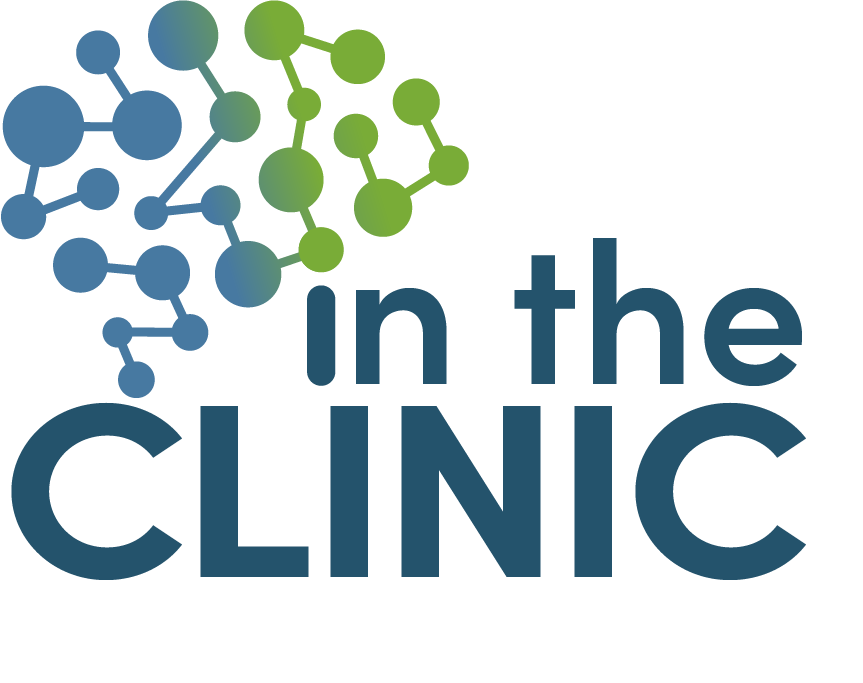
This activity, Clinical Updates in Non-Small Cell Lung Cancer from Madrid, features expert faculty Dr. Ticiana Leal discussing the most important and clinically relevant data and framing it for integration into clinical practice.
Abstracts included in this presentation include:
This educational activity was designed for community based medical oncologists and other healthcare providers that treat and manage patients with lung cancer.
Upon completion of this educational activity, participants should be able to:
 |
Ticiana Leal, MD Associate Professor Department of Hematology/Oncology Director, Thoracic Medical Oncology Program Winship Cancer Institute Emory University Atlanta, Georgia |
Integrity Continuing Education, Inc. requires instructors, planners, managers, and other individuals who are in a position to control the content of this activity to disclose any financial relationships with ineligible companies. All identified relevant financial relationships are thoroughly vetted by Integrity Continuing Education, Inc. for fair balance, scientific objectivity of studies mentioned in the materials or used as the basis for content, and appropriateness of patient care recommendations. All relevant financial relationships have been mitigated.
The following faculty/planners reported the financial relationships or relationships to products or devices they have with ineligible companies related to the content of these CME activities:
Ticiana Leal, MD
Advisory board: AstraZeneca, Bayer, BeyondSpring, Blueprint, Boehringer Ingelheim, Bristol Myers Squibb, EMD Serono, Genentech, InvisionFirst Lung, Janssen, Jazz, Merck, Takeda
Consultant: AstraZeneca, Boehringer Ingelheim, Genentech, Janssen, Jazz, Lilly
The Integrity Continuing Education, Inc. planners and managers do not have any financial relationships or relationships to products or devices with ineligible companies.
There are no fees for participating and receiving CME credit for this activity. During the period of December 1, 2023 through December 1, 2024, participants must:
A statement of credit will be issued only upon receipt of a completed posttest with a score of 33% or better and a completed activity evaluation form.

Integrity Continuing Education, Inc. is accredited by the Accreditation Council for Continuing Medical Education (ACCME) to provide continuing medical education for physicians.
Integrity Continuing Education, Inc. designates this enduring material for a maximum of 0.5 AMA PRA Category 1 CreditTM. Physicians should claim only the credit commensurate with the extent of their participation in the activity.
For information about ACCME accreditation of this activity, please contact Integrity Continuing Education, Inc. at (855) 835-4004 or cme@integrityce.com.
This educational activity may contain discussion of published and/or investigational uses of agents that are not indicated by the FDA. Integrity Continuing Education, Inc. does not recommend the use of any agent outside of the labeled indications.
The opinions expressed in the educational activity are those of the faculty and do not necessarily represent the views of any organization associated with this activity. Please refer to the official prescribing information for each product for discussion of approved indications, contraindications, and warnings.
Internet
When you participate in an online educational activity sponsored by Integrity Continuing Education, Inc., you will be asked for your name, degree(s), affiliation(s), street address, telephone number and…(continued)
Minimum Processor: Intel Pentium 4, 2.33 + GHz (or equivalent)
Operating Systems: Windows XP, Windows 2000, Windows Vista, Windows 7, Windows 10, and Mac OS
Plug-in: Adobe® Flash® Player 10
For optimal performance, the use of Internet Explorer below 8 is not recommended
For a full listing of recommended operating systems, browsers, and system configurations, please click on the link below:
Click here for more information on minimum system requirements
The information provided at this activity is for continuing education purposes only and is not meant to substitute for the independent medical judgment of a physician relative to diagnostic and treatment options of a specific patient’s medical condition.
Provided by Integrity Continuing Education, Inc.
Supported by educational grants from Janssen Biotech, Inc., administered by Janssen Scientific Affairs, LLC and Merck Sharp & Dohme LLC.

This activity, Clinical Updates in Urothelial and Renal Cell Carcinoma from Madrid, features expert faculty Dr. Petros Grivas discussing the most important and clinically relevant data and framing it for integration into clinical practice. These insights are captured during the meeting and made available shortly thereafter to provide the latest information promptly for clinicians.
Abstracts included in the presentation include:
Urothelial Carcinoma
Renal Cell Carcinoma
This educational activity was designed for community based medical oncologists and other healthcare providers that treat and manage patients with cancer.
Upon completion of this educational activity, participants should be able to:
 |
Petros Grivas, MD, PhD Professor, Department of Medicine Division of Hematology/Oncology Clinical Director, Genitourinary Cancers Program University of Washington Professor, Clinical Research Division Fred Hutchinson Cancer Center Seattle, Washington |
Integrity Continuing Education, Inc. requires instructors, planners, managers, and other individuals who are in a position to control the content of this activity to disclose any financial relationships with ineligible companies. All identified relevant financial relationships are thoroughly vetted by Integrity Continuing Education, Inc. for fair balance, scientific objectivity of studies mentioned in the materials or used as the basis for content, and appropriateness of patient care recommendations. All relevant financial relationships have been mitigated.
The following faculty/planners reported the financial relationships or relationships to products or devices they have with ineligible companies related to the content of these CME activities:
Petros Grivas, MD, PhD
Consulting: 4D Pharma PLC, Aadi Bioscience, AstraZeneca, Asieris Pharmaceuticals, Astellas Pharma, Bristol Myers Squibb, Boston Gene, CG Oncology, Dyania Health, Fresenius Kabi, G1 Therapeutics, Gilead, Guardant Health, ImmunityBio, Lucence Health, Infinity Pharmaceuticals, Janssen, Merck KGaA, MSD, Pfizer, PureTech, Roche, Seattle Genetics, Silverback Therapeutics, Strata Oncology, UroGen
Institutional research funding: Acrivon Therapeutics, ALX Oncology, Bavarian Nordic, Bristol Myers Squibb, Clovis Oncology, Debiopharm, G1 Therapeutics, Gilead, GlaxoSmithKline, Merck KGaA, MSD, Mirati Therapeutics, Pfizer, QED Therapeutics
The Integrity Continuing Education, Inc. planners and managers do not have any financial relationships or relationships to products or devices with ineligible companies.
There are no fees for participating and receiving CME credit for this activity. During the period of November 27, 2023 through November 27, 2024, participants must:
A statement of credit will be issued only upon receipt of a completed posttest with a score of 50% or better and a completed activity evaluation form.

Integrity Continuing Education, Inc. is accredited by the Accreditation Council for Continuing Medical Education (ACCME) to provide continuing medical education for physicians.
Integrity Continuing Education, Inc. designates this enduring material for a maximum of 0.75 AMA PRA Category 1 CreditTM. Physicians should claim only the credit commensurate with the extent of their participation in the activity.
For information about ACCME accreditation of this activity, please contact Integrity Continuing Education, Inc. at (855) 835-4004 or cme@integrityce.com.
This educational activity may contain discussion of published and/or investigational uses of agents that are not indicated by the FDA. Integrity Continuing Education, Inc. does not recommend the use of any agent outside of the labeled indications.
The opinions expressed in the educational activity are those of the faculty and do not necessarily represent the views of any organization associated with this activity. Please refer to the official prescribing information for each product for discussion of approved indications, contraindications, and warnings.
Internet
When you participate in an online educational activity sponsored by Integrity Continuing Education, Inc., you will be asked for your name, degree(s), affiliation(s), street address, telephone number and…(continued)
Minimum Processor: Intel Pentium 4, 2.33 + GHz (or equivalent)
Operating Systems: Windows XP, Windows 2000, Windows Vista, Windows 7, Windows 10, and Mac OS
Plug-in: Adobe® Flash® Player 10
For optimal performance, the use of Internet Explorer below 8 is not recommended
For a full listing of recommended operating systems, browsers, and system configurations, please click on the link below:
Click here for more information on minimum system requirements
The information provided at this activity is for continuing education purposes only and is not meant to substitute for the independent medical judgment of a physician relative to diagnostic and treatment options of a specific patient’s medical condition.
This activity is provided by Integrity Continuing Education, Inc.
This activity is supported by an educational grant from Merck Sharp & Dohme LLC.
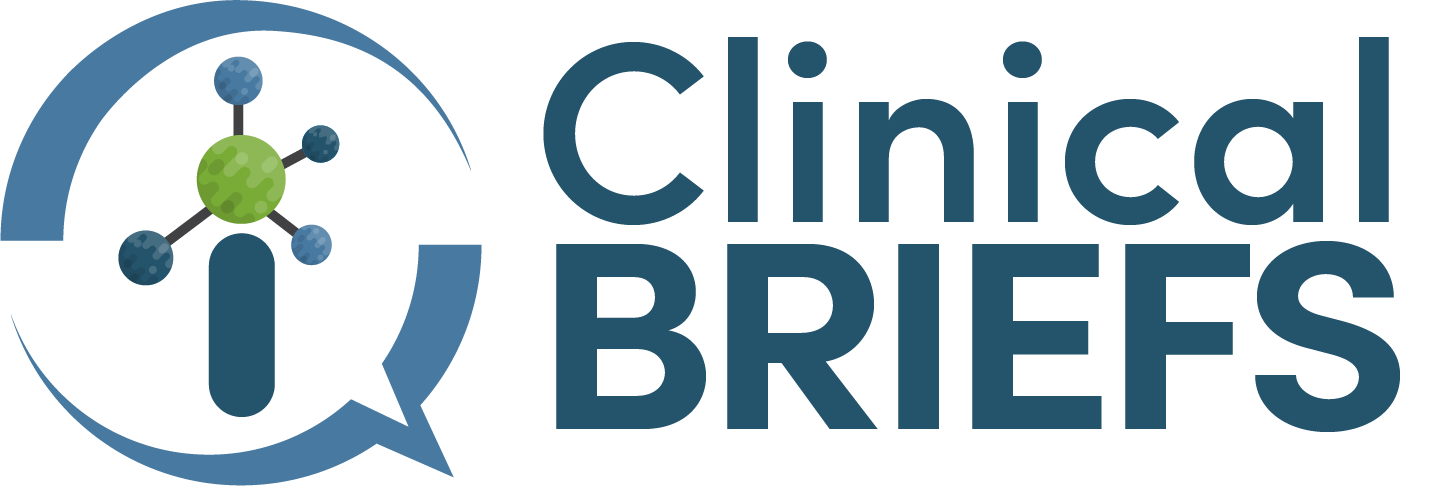
There is an obvious need for treatment options for cervical cancer that provide durable and meaningful improvements in survival – approximately half of the women (48%) who complete first-line (1L) therapy for cervical cancer in community-based care subsequently receive second-line therapy, with a median treatment-free interval of only 2.1 months. However, the treatment landscape is changing, and recent data has shown a survival benefit with the addition of immune checkpoint inhibitors to 1L chemotherapy, which may improve the outlook for many women with cervical cancer. This activity features a case-based discussion with expert faculty that will provide insight on the practical application of this new data.
In this Twitter-based Clinical Brief, Drs. Elenora Teplinsky and Gregg Nelson will discuss approaches to treatment and adverse event management for women with cervical cancer.
This educational activity was designed for medical and gynecologic oncologists who treat gynecologic malignancies.
Upon completion of this educational activity, participants should be able to:
 |
Eleonora Teplinsky, MD Head, Breast Medical Oncology Clinical Assistant Professor of Medicine Icahn School of Medicine at Mount Sinai Paramus, New Jersey |
 |
Gregg Nelson, MD, PhD, FRCSC Professor and Chief of Gynecologic Oncology Department of Obstetrics & Gynecology Cumming School of Medicine University of Calgary Calgary, Alberta |
Integrity Continuing Education, Inc. requires instructors, planners, managers, and other individuals who are in a position to control the content of this activity to disclose any financial relationships with ineligible companies. All identified relevant financial relationships are thoroughly vetted by Integrity Continuing Education, Inc. for fair balance, scientific objectivity of studies mentioned in the materials or used as the basis for content, and appropriateness of patient care recommendations. All relevant financial relationships have been mitigated.
The following faculty/planners reported the financial relationships or relationships to products or devices they have with ineligible companies related to the content of this CME activity:
Gregg Nelson, MD, PhD, FRCSC does not have any financial relationships or relationships to products or devices with ineligible companies.
Elenora Teplinsky, MD
Advisory Board: AstraZeneca
Medical Advisor: FloHealth, Sermo
The Integrity Continuing Education, Inc. planners and managers do not have any financial relationships or relationships to products or devices with ineligible companies.
There are no fees for participating and receiving CME credit for this activity. During the period of November 16, 2023 through February 16, 2024 participants must:
A statement of credit will be issued only upon receipt of a completed posttest with a score of 100% and a completed activity evaluation form.

Integrity Continuing Education, Inc. is accredited by the Accreditation Council for Continuing Medical Education (ACCME) to provide continuing medical education for physicians.
Integrity Continuing Education, Inc. designates this enduring material for a maximum of 0.25 AMA PRA Category 1 CreditTM. Physicians should claim only the credit commensurate with the extent of their participation in the activity.
For information about ACCME accreditation of this activity, please contact Integrity Continuing Education, Inc. at (855) 835-4004 or cme@integrityce.com.
This educational activity may contain discussion of published and/or investigational uses of agents that are not indicated by the FDA. Integrity Continuing Education, Inc. does not recommend the use of any agent outside of the labeled indications.
The opinions expressed in the educational activity are those of the faculty and do not necessarily represent the views of any organization associated with this activity. Please refer to the official prescribing information for each product for discussion of approved indications, contraindications, and warnings.
Internet
When you participate in an online educational activity sponsored by Integrity Continuing Education, Inc., you will be asked for your name, degree(s), affiliation(s), street address, telephone number and…(continued)
Minimum Processor: Intel Pentium 4, 2.33 + GHz (or equivalent)
Operating Systems: Windows XP, Windows 2000, Windows Vista, Windows 7, Windows 10, and Mac OS
Plug-in: Adobe® Flash® Player 10
For optimal performance, the use of Internet Explorer below 8 is not recommended
For a full listing of recommended operating systems, browsers, and system configurations, please click on the link below:
Click here for more information on minimum system requirements
The information provided at this activity is for continuing education purposes only and is not meant to substitute for the independent medical judgment of a physician relative to diagnostic and treatment options of a specific patient’s medical condition.
This activity is provided by Integrity Continuing Education, Inc.
This activity is supported by an educational grant from Merck Sharp & Dohme LLC.

The incidence of cervical cancer may be decreasing due to widespread screening and prevention efforts and improved access to care, but racial and ethnic disparities remain in both cervical cancer incidence and mortality, with higher rates among Black and Hispanic women than White women. Further, there is an obvious need for treatment options that provide durable and meaningful improvements in survival – approximately half of the women (48%) who complete first-line (1L) therapy for cervical cancer in community-based care subsequently receive second-line therapy, with a median treatment-free interval of only 2.1 months. However, the treatment landscape is changing, and recent data has shown a survival benefit with the addition of immune checkpoint inhibitors to 1L chemotherapy, which may improve the outlook for many women with cervical cancer.
This In the Clinic activity features a case-based discussion with expert faculty that will provide insight on the practical application of this new data.
This educational activity was designed for medical and gynecologic oncologists who treat gynecologic malignancies.
Upon completion of this educational activity, participants should be able to:
 |
Martina C. Murphy, MD Associate Professor of Medicine Program Director, Hematology/Oncology Fellowship University of Florida Assistant Director, Clinical Research Education & Professional Development Medical Director, Communication Strategies & Digital Innovation University of Florida Health Cancer Center Gainesville, Florida |
 |
Megan Hutchcraft, MD Gynecologic Oncologist Carle Cancer Institute Assistant Clinical Professor Carle Illinois College of Medicine University of Illinois at Urbana-Champaign Champaign, Illinois |
Integrity Continuing Education, Inc. requires instructors, planners, managers, and other individuals who are in a position to control the content of this activity to disclose any financial relationships with ineligible companies. All identified relevant financial relationships are thoroughly vetted by Integrity Continuing Education, Inc. for fair balance, scientific objectivity of studies mentioned in the materials or used as the basis for content, and appropriateness of patient care recommendations. All relevant financial relationships have been mitigated.
The following faculty/planners reported the financial relationships or relationships to products or devices they have with ineligible companies related to the content of this CME activity:
Megan Hutchcraft, MD does not have any financial relationships or relationships to products or devices with ineligible companies.
Martina C. Murphy, MD does not have any financial relationships or relationships to products or devices with ineligible companies.
The Integrity Continuing Education, Inc. planners and managers do not have any financial relationships or relationships to products or devices with ineligible companies.
There are no fees for participating and receiving CME credit for this activity. During the period of November 8, 2023 through November 8, 2024, participants must:
A statement of credit will be issued only upon receipt of a completed posttest with a score of 66% or better and a completed activity evaluation form.

Integrity Continuing Education, Inc. is accredited by the Accreditation Council for Continuing Medical Education (ACCME) to provide continuing medical education for physicians.
Integrity Continuing Education, Inc. designates this enduring material for a maximum of 0.25 AMA PRA Category 1 CreditTM. Physicians should claim only the credit commensurate with the extent of their participation in the activity.
For information about ACCME accreditation of this activity, please contact Integrity Continuing Education, Inc. at (855) 835-4004 or cme@integrityce.com.
This educational activity may contain discussion of published and/or investigational uses of agents that are not indicated by the FDA. Integrity Continuing Education, Inc. does not recommend the use of any agent outside of the labeled indications.
The opinions expressed in the educational activity are those of the faculty and do not necessarily represent the views of any organization associated with this activity. Please refer to the official prescribing information for each product for discussion of approved indications, contraindications, and warnings.
Internet
When you participate in an online educational activity sponsored by Integrity Continuing Education, Inc., you will be asked for your name, degree(s), affiliation(s), street address, telephone number and…(continued)
Minimum Processor: Intel Pentium 4, 2.33 + GHz (or equivalent)
Operating Systems: Windows XP, Windows 2000, Windows Vista, Windows 7, Windows 10, and Mac OS
Plug-in: Adobe® Flash® Player 10
For optimal performance, the use of Internet Explorer below 8 is not recommended
For a full listing of recommended operating systems, browsers, and system configurations, please click on the link below:
Click here for more information on minimum system requirements
The information provided at this activity is for continuing education purposes only and is not meant to substitute for the independent medical judgment of a physician relative to diagnostic and treatment options of a specific patient’s medical condition.
This program is provided by Integrity Continuing Education, Inc.
This educational activity is supported by an educational grant from GSK.

Anemia occurs in nearly all patients with myelofibrosis and is associated with poor prognosis, worse survival, and reduced quality of life. Patients with anemia will often require blood transfusion, though a subset will derive temporary benefit from androgens, corticosteroids, immunomodulators, or erythropoiesis stimulating agents. Since the majority of patients will not have a prolonged response to these agents, new therapies are needed and may soon enter clinical practice.
Treating and managing the complex etiology of myelofibrosis-associated anemia is challenging, especially for clinicians who practice outside of specialty/academic centers and do not regularly treat patients with myelofibrosis. This Twitter-based Clinical Brief activity will discuss emerging treatment options for patients with myelofibrosis.
This activity has been developed to meet the professional needs of medical oncologists and hematologists, as well as other healthcare professionals who treat and manage patients with hematologic malignancies.
Upon completion of this educational activity, participants should be able to:
 |
Luke Fletcher, MD Hematology/Oncologist Willamette Valley Cancer Institute Eugene, Oregon Clinical Researcher, Executive Committee Member Department of Malignant Hematology-Leukemia Sarah Cannon Research Institute Nashville, Tennessee |
 |
Aaron T. Gerds, MD, MS Associate Professor of Medicine Hematology & Medical Oncology Deputy Director for Clinical Research Cleveland Clinic Taussig Cancer Institute Medical Director, Case Comprehensive Cancer Center Clinical Research Office Cleveland, Ohio |
 |
Andrew Kuykendall, MD Assistant Professor Oncologic Sciences University of South Florida Assistant Member, Moffit Cancer Center Department of Malignant Hematology Tampa, Florida |
 |
Raajit Rampal, MD, PhD Director, Center for Hematologic Malignancies Director, Myeloproliferative Neoplasms Program Memorial Sloan Kettering Cancer Center New York, New York |
Integrity Continuing Education, Inc. requires instructors, planners, managers, and other individuals who are in a position to control the content of this activity to disclose any financial relationships with ineligible companies. All identified relevant financial relationships are thoroughly vetted by Integrity Continuing Education, Inc. for fair balance, scientific objectivity of studies mentioned in the materials or used as the basis for content, and appropriateness of patient care recommendations. All relevant financial relationships have been mitigated.
The following faculty/planners reported the financial relationships or relationships to products or devices they have with ineligible companies related to the content of these CME activities:
Luke Fletcher, MD
Consultant: Genzyme, Morphosys, Novartis, PharmaEssentia, Sanofi, Servier
Speaker: CTI Biopharma
Aaron T. Gerds, MD, MS
Consultant: AbbVie, Bristol Myers Squibb, CTI Biopharma, GSK/Sierra Oncology, Imago, Morphosys, Novartis, PharmaEssentia
Andrew Kyukendall, MD
Consultant: AbbVie, GSK
Honoraria: Bristol Myers Squibb, CTI Biopharma, Incyte, Morphosys
Research support: Bristol Myers Squibb, Janssen, Morphosys
Raajit Rampal, MD, PhD
Consultant: AbbVie, Blueprint, Bristol Myers Squibb, Cogent, Constellation, CTI Biopharma, Galecto, GSK, Incyte, Kartos, Karyopharm, Novartis, PharmaEssentia, Sumitomo Dainippon Pharma Oncology, Servier, Stemline, Zentalis
The Integrity Continuing Education, Inc. planners and managers do not have any financial relationships or relationships to products or devices with ineligible companies.
There are no fees for participating and receiving CME credit for this activity. During the period of November 15, 2023 through March 15, 2024 participants must:
A statement of credit will be issued only upon receipt of a completed posttest with a score of 100% and a completed activity evaluation form.

Integrity Continuing Education, Inc. is accredited by the Accreditation Council for Continuing Medical Education (ACCME) to provide continuing medical education for physicians.
Integrity Continuing Education, Inc. designates this enduring material for a maximum of 0.25 AMA PRA Category 1 CreditTM. Physicians should claim only the credit commensurate with the extent of their participation in the activity.
For information about ACCME accreditation of this activity, please contact Integrity Continuing Education, Inc. at (855) 835-4004 or cme@integrityce.com.
This educational activity may contain discussion of published and/or investigational uses of agents that are not indicated by the FDA. Integrity Continuing Education, Inc. does not recommend the use of any agent outside of the labeled indications.
The opinions expressed in the educational activity are those of the faculty and do not necessarily represent the views of any organization associated with this activity. Please refer to the official prescribing information for each product for discussion of approved indications, contraindications, and warnings.
Internet
When you participate in an online educational activity sponsored by Integrity Continuing Education, Inc., you will be asked for your name, degree(s), affiliation(s), street address, telephone number and…(continued)
Minimum Processor: Intel Pentium 4, 2.33 + GHz (or equivalent)
Operating Systems: Windows XP, Windows 2000, Windows Vista, Windows 7, Windows 10, and Mac OS
Plug-in: Adobe® Flash® Player 10
For optimal performance, the use of Internet Explorer below 8 is not recommended
For a full listing of recommended operating systems, browsers, and system configurations, please click on the link below:
Click here for more information on minimum system requirements
The information provided at this activity is for continuing education purposes only and is not meant to substitute for the independent medical judgment of a physician relative to diagnostic and treatment options of a specific patient’s medical condition.
Provided by Integrity Continuing Education, Inc.
Supported by educational grants from Janssen Biotech, Inc., administered by Janssen Scientific Affairs, LLC and Merck Sharp & Dohme LLC.
International society meetings are a primary source of new data in oncology. Keeping up to date with the fast pace of oncology, sorting through thousands of abstracts, and deciding what is or is not ready for the clinic are daunting tasks. This activity, Clinical Updates in Urothelial Carcinoma from Madrid, features expert faculty Dr. Petros Grivas discussing the most important and clinically relevant data and framing it for integration into clinical practice. These insights are captured during the meeting and made available shortly thereafter to provide the latest information promptly for clinicians.
This Twitter-based activity will focus on first-line therapy for patients with locally advanced/metastatic urothelial carcinoma, irrespective of cisplatin eligibility.
This educational activity was designed for community based medical oncologists and other healthcare providers that treat and manage patients with cancer.
Upon completion of this educational activity, participants should be able to:
 |
Petros Grivas, MD, PhD Professor, Department of Medicine Division of Hematology/Oncology Clinical Director, Genitourinary Cancers Program University of Washington Professor, Clinical Research Division Fred Hutchinson Cancer Center Seattle, WA |
 |
Jonathan Anker, MD, PhD Clinical and Research Fellow Department of Hematology and Medical Oncology The Tisch Cancer Institute Icahn School of Medicine at Mount Sinai Hospital New York, New York |
Integrity Continuing Education, Inc. requires instructors, planners, managers, and other individuals who are in a position to control the content of this activity to disclose any financial relationships with ineligible companies. All identified relevant financial relationships are thoroughly vetted by Integrity Continuing Education, Inc. for fair balance, scientific objectivity of studies mentioned in the materials or used as the basis for content, and appropriateness of patient care recommendations. All relevant financial relationships have been mitigated.
The following faculty/planners reported the financial relationships or relationships to products or devices they have with ineligible companies related to the content of these CME activities:
Jonathan Anker, MD, PhD does not have any financial relationships or relationships to products or devices with ineligible companies.
Petros Grivas, MD, PhD
Consulting: 4D Pharma PLC, Aadi Bioscience, AstraZeneca, Asieris Pharmaceuticals, Astellas Pharma, Bristol Myers Squibb, Boston Gene, CG Oncology, Dyania Health, Fresenius Kabi, G1 Therapeutics, Gilead, Guardant Health, ImmunityBio, Lucence Health, Infinity Pharmaceuticals, Janssen, Merck KGaA, MSD, Pfizer, PureTech, Roche, Seattle Genetics, Silverback Therapeutics, Strata Oncology, UroGen
Institutional research funding: Acrivon Therapeutics, ALX Oncology, Bavarian Nordic, Bristol Myers Squibb, Clovis Oncology, Debiopharm, G1 Therapeutics, Gilead, GlaxoSmithKline, Merck KGaA, MSD, Mirati Therapeutics, Pfizer, QED Therapeutics
The Integrity Continuing Education, Inc. planners and managers do not have any financial relationships or relationships to products or devices with ineligible companies.
There are no fees for participating and receiving CME credit for this activity. During the period of October 27, 2023 through January 27, 2024, participants must:
A statement of credit will be issued only upon receipt of a completed posttest with a score of 50% or better and a completed activity evaluation form.

Integrity Continuing Education, Inc. is accredited by the Accreditation Council for Continuing Medical Education (ACCME) to provide continuing medical education for physicians.
Integrity Continuing Education, Inc. designates this enduring material for a maximum of 0.25 AMA PRA Category 1 CreditTM. Physicians should claim only the credit commensurate with the extent of their participation in the activity.
For information about ACCME accreditation of this activity, please contact Integrity Continuing Education, Inc. at (855) 835-4004 or cme@integrityce.com.
This educational activity may contain discussion of published and/or investigational uses of agents that are not indicated by the FDA. Integrity Continuing Education, Inc. does not recommend the use of any agent outside of the labeled indications.
The opinions expressed in the educational activity are those of the faculty and do not necessarily represent the views of any organization associated with this activity. Please refer to the official prescribing information for each product for discussion of approved indications, contraindications, and warnings.
Internet
When you participate in an online educational activity sponsored by Integrity Continuing Education, Inc., you will be asked for your name, degree(s), affiliation(s), street address, telephone number and…(continued)
Minimum Processor: Intel Pentium 4, 2.33 + GHz (or equivalent)
Operating Systems: Windows XP, Windows 2000, Windows Vista, Windows 7, Windows 10, and Mac OS
Plug-in: Adobe® Flash® Player 10
For optimal performance, the use of Internet Explorer below 8 is not recommended
For a full listing of recommended operating systems, browsers, and system configurations, please click on the link below:
Click here for more information on minimum system requirements
The information provided at this activity is for continuing education purposes only and is not meant to substitute for the independent medical judgment of a physician relative to diagnostic and treatment options of a specific patient’s medical condition.
Provided by Integrity Continuing Education, Inc.
Supported by educational grants from Janssen Biotech, Inc., administered by Janssen Scientific Affairs, LLC and Merck Sharp & Dohme LLC.
International society meetings are a primary source of new data in oncology. Keeping up to date with the fast pace of oncology, sorting through thousands of abstracts, and deciding what is or is not ready for the clinic are daunting tasks. This activity, Clinical Updates in Breast Cancer from Madrid, features expert faculty Dr. Aditya Bardia discussing the most important and clinically relevant data and framing it for integration into clinical practice. These insights are captured during the meeting and made available shortly thereafter to provide the latest information promptly for clinicians.
This Twitter-based activity will focus on neoadjuvant immune checkpoint inhibitor + chemotherapy for high-risk ER+/HER2- breast cancer.
This educational activity was designed for community based medical oncologists and other healthcare providers that treat and manage patients with cancer.
Upon completion of this educational activity, participants should be able to:
 |
Aditya Bardia, MD Director, Breast Cancer Research Associate Professor Harvard Medical School Attending Physician Massachusetts General Hospital Boston, Massachusetts |
 |
Megan Tesch, MD Instructor in Medicine Harvard Medical School Physician Dana-Farber Cancer Institute Breast Oncology Center Boston, Massachusetts |
Integrity Continuing Education, Inc. requires instructors, planners, managers, and other individuals who are in a position to control the content of this activity to disclose any financial relationships with ineligible companies. All identified relevant financial relationships are thoroughly vetted by Integrity Continuing Education, Inc. for fair balance, scientific objectivity of studies mentioned in the materials or used as the basis for content, and appropriateness of patient care recommendations. All relevant financial relationships have been mitigated.
The following faculty/planners reported the financial relationships or relationships to products or devices they have with ineligible companies related to the content of these CME activities:
Aditya Bardia, MD
Consultant: AstraZeneca, Daiichi Sankyo, Eli Lilly, Genentech, Gilead, Menarini, Merck, Novartis, Pfizer, Sanofi
Research Grants: AstraZeneca, Daiichi Sankyo, Eli Lilly, Genentech, Gilead, Menarini, Merck, Novartis, Pfizer, Sanofi
Megan Tesch, MD does not have any financial relationships or relationships to products or devices with ineligible companies.
The Integrity Continuing Education, Inc. planners and managers do not have any financial relationships or relationships to products or devices with ineligible companies.
There are no fees for participating and receiving CME credit for this activity. During the period of November 2, 2023 through February 2, 2024, participants must:
A statement of credit will be issued only upon receipt of a completed posttest with a score of 50% or better and a completed activity evaluation form.

Integrity Continuing Education, Inc. is accredited by the Accreditation Council for Continuing Medical Education (ACCME) to provide continuing medical education for physicians.
Integrity Continuing Education, Inc. designates this enduring material for a maximum of 0.25 AMA PRA Category 1 CreditTM. Physicians should claim only the credit commensurate with the extent of their participation in the activity.
For information about ACCME accreditation of this activity, please contact Integrity Continuing Education, Inc. at (855) 835-4004 or cme@integrityce.com.
This educational activity may contain discussion of published and/or investigational uses of agents that are not indicated by the FDA. Integrity Continuing Education, Inc. does not recommend the use of any agent outside of the labeled indications.
The opinions expressed in the educational activity are those of the faculty and do not necessarily represent the views of any organization associated with this activity. Please refer to the official prescribing information for each product for discussion of approved indications, contraindications, and warnings.
Internet
When you participate in an online educational activity sponsored by Integrity Continuing Education, Inc., you will be asked for your name, degree(s), affiliation(s), street address, telephone number and…(continued)
Minimum Processor: Intel Pentium 4, 2.33 + GHz (or equivalent)
Operating Systems: Windows XP, Windows 2000, Windows Vista, Windows 7, Windows 10, and Mac OS
Plug-in: Adobe® Flash® Player 10
For optimal performance, the use of Internet Explorer below 8 is not recommended
For a full listing of recommended operating systems, browsers, and system configurations, please click on the link below:
Click here for more information on minimum system requirements
The information provided at this activity is for continuing education purposes only and is not meant to substitute for the independent medical judgment of a physician relative to diagnostic and treatment options of a specific patient’s medical condition.
This activity is provided by Integrity Continuing Education, Inc.
This activity is supported by an educational grant from Incyte Corporation.

“If you’ve seen one patient with vitiligo…you’ve seen one patient with vitiligo,” vitiligo expert Dr. David Rosmarin is fond of saying. This relatively common dermatologic disorder can present in a wide variety of ways and its impact on patients’ quality of life can be profound yet highly individual.
In this Twitter-based Clinical Brief, David Rosmarin, MD, Colleen Cotton, MD, FAAD, and Seemal Desai, MD, FAAD will discuss switching therapies to align with patients’ vitiligo treatment goals.
This educational activity has been designed to meet the needs of dermatologists, family practice physicians, nurse practitioners, physician assistants, and other clinicians who manage patients with vitiligo.
Upon completion of this educational activity, participants should be able to:
 |
David Rosmarin, MD Chair of Dermatology Kampen-Norins Scholar Indiana University School of Medicine Indianapolis, Indiana |
 |
Colleen Cotton, MD, FAAD Assistant Professor of Dermatology and Pediatrics George Washington School of Medicine and Health Sciences Attending Physician Division of Dermatology, Children’s National Hospital Washington, District of Columbia |
 |
Seemal Desai, MD, FAAD Founder and Medical Director Innovative Dermatology Clinical Assistant Professor Department of Dermatology The University of Texas Southwestern Dallas, Texas |
Integrity Continuing Education, Inc. requires instructors, planners, managers, and other individuals who are in a position to control the content of this activity to disclose any financial relationships with ineligible companies. All identified relevant financial relationships are thoroughly vetted by Integrity Continuing Education, Inc. for fair balance, scientific objectivity of studies mentioned in the materials or used as the basis for content, and appropriateness of patient care recommendations. All relevant financial relationships have been mitigated.
The following faculty/planners reported the financial relationships or relationships to products or devices they have with ineligible companies related to the content of these CME activities:
Colleen Cotton, MD, FAAD
Advisor: Avita, Bristol Myers Squibb, Janssen Biotech, LEO Pharma
Consultant: Pierre Fabre
Salary Support: Eli Lilly, Regeneron, Target RWA
Research: AbbVie, Arcutis Biotherapeutics
Seemal Desai, MD, FAAD
Advisory Board: Foundation for Research & Education of Dermatology
Board of Directors: Global Vitiligo Foundation, International Society of Dermatology, Women’s Derm Society
Consultant: AbbVie, Allergan, Inc., Almirall, Amgen, Apogee Therapeutics, Avita, Ballature Beauty, Beiersdorf, Inc., Bristol Myers Squibb, Candela Corporation, Cassiopea S.p.A., Castle Biosciences, Cutera, Inc., Dermavant Sciences, Dermira, Eli Lilly and Company, EPI Health, Ferndale Laboratories, Inc., Foamix, Galderma Laboratories, LP, Gore Range Capital, Hyphens Pharma, Incyte Corporation, Janssen Pharmaceuticals, Inc., Johnson and Johnson, Leo Pharma Inc., L’Oreal USA Inc., Lyceum Health, Ortho Dermatologics, Pfizer Inc., Revision Skincare, Sanofi/Regeneron, Scientis, Skin Science Advisors, UCB, Verrica Pharmaceuticals Inc., VYNE Therapeutics
Investigator: AOBiome, LLC., Atacama Therapeutics, Dermavant Sciences, Incyte Corporation, SkinMedica, Inc.
Other: Medscape, National Psoriasis Foundation, PDH Holdings LLC
Founder: Illuminate Skin Care LLC
Speaker: AbbVie, Dermira, Galderma Laboratories, LP., Pfizer Inc.
Stockholder: Gore Range Capital
David Rosmarin, MD
Consultant: AbbVie, Abcuro, AltruBio, Arena, Boehringer Ingelheim, Bristol Myers Squibb, Celgene, Concert, CSL Behring, Dermavant, Dermira, Incyte, Janssen, Kyowa Kirin, Lilly, Novartis, Pfizer, Recludix, Regeneron, Revolo Biotherapeutics, Sanofi, Sun Pharma, UCB, Viela Bio
Research: AbbVie, Amgen, Bristol Myers Squibb, Celgene, Dermira, Galderma, Incyte, Janssen, Lilly, Merck, Novartis, Pfizer, Regeneron
Speaker: AbbVie, Amgen, Bristol Myers Squibb, Celgene, Dermavant, Incyte, Janssen, Lilly, Novartis, Pfizer, Regeneron, Sanofi
The Integrity Continuing Education, Inc. planners and managers do not have any financial relationships or relationships to products or devices with ineligible companies.
There are no fees for participating and receiving CME credit for this activity. During the period of November 9, 2023 through February 9, 2024, participants must:
A statement of credit will be issued only upon receipt of a completed posttest with a score of 100% and a completed activity evaluation form.

Integrity Continuing Education, Inc. is accredited by the Accreditation Council for Continuing Medical Education (ACCME) to provide continuing medical education for physicians.
Integrity Continuing Education, Inc. designates this enduring material for a maximum of 0.25 AMA PRA Category 1 CreditTM. Physicians should claim only the credit commensurate with the extent of their participation in the activity.
For information about ACCME accreditation of this activity, please contact Integrity Continuing Education, Inc. at (855) 835-4004 or cme@integrityce.com.
This educational activity may contain discussion of published and/or investigational uses of agents that are not indicated by the FDA. Integrity Continuing Education, Inc. does not recommend the use of any agent outside of the labeled indications.
The opinions expressed in the educational activity are those of the faculty and do not necessarily represent the views of any organization associated with this activity. Please refer to the official prescribing information for each product for discussion of approved indications, contraindications, and warnings.
Internet
When you participate in an online educational activity sponsored by Integrity Continuing Education, Inc., you will be asked for your name, degree(s), affiliation(s), street address, telephone number and…(continued)
Minimum Processor: Intel Pentium 4, 2.33 + GHz (or equivalent)
Operating Systems: Windows XP, Windows 2000, Windows Vista, Windows 7, Windows 10, and Mac OS
Plug-in: Adobe® Flash® Player 10
For optimal performance, the use of Internet Explorer below 8 is not recommended
For a full listing of recommended operating systems, browsers, and system configurations, please click on the link below:
Click here for more information on minimum system requirements
The information provided at this activity is for continuing education purposes only and is not meant to substitute for the independent medical judgment of a physician relative to diagnostic and treatment options of a specific patient’s medical condition.
Provided by Integrity Continuing Education, Inc.
Supported by educational grants from Janssen Biotech, Inc., administered by Janssen Scientific Affairs, LLC and Merck Sharp & Dohme LLC.
International society meetings are a primary source of new data in oncology. Keeping up to date with the fast pace of oncology, sorting through thousands of abstracts, and deciding what is or is not ready for the clinic are daunting tasks. This activity, Clinical Updates in Non-Small Cell Lung Cancer from Madrid, features expert faculty Dr. Ticiana Leal discussing the most important and clinically relevant data and framing it for integration into clinical practice. These insights are captured during the meeting and made available shortly thereafter to provide the latest information promptly for clinicians.
This Twitter-based activity will focus on the new first-line standard of care for epidermal growth factor receptor (EGFR) exon 20 insertion-mutated advanced non-small cell lung cancer.
This educational activity was designed for community based medical oncologists and other healthcare providers that treat and manage patients with cancer.
Upon completion of this educational activity, participants should be able to:
 |
Ticiana Leal, MD Associate Professor Department of Hematology/Oncology Director, Thoracic Medical Oncology Program Winship Cancer Institute Emory University Atlanta, Georgia |
 |
Aakash Desai, MD, MPH Assistant Professor University of Alabama at Birmingham Birmingham, Alabama |
Integrity Continuing Education, Inc. requires instructors, planners, managers, and other individuals who are in a position to control the content of this activity to disclose any financial relationships with ineligible companies. All identified relevant financial relationships are thoroughly vetted by Integrity Continuing Education, Inc. for fair balance, scientific objectivity of studies mentioned in the materials or used as the basis for content, and appropriateness of patient care recommendations. All relevant financial relationships have been mitigated.
The following faculty/planners reported the financial relationships or relationships to products or devices they have with ineligible companies related to the content of these CME activities:
Ticiana Leal, MD
Advisory board: AstraZeneca, Bayer, BeyondSpring, Blueprint, Boehringer Ingelheim, Bristol Myers Squibb, EMD Serono, Genentech, InvisionFirst Lung, Janssen, Jazz, Merck, Takeda
Consultant: AstraZeneca, Boehringer Ingelheim, Genentech, Janssen, Jazz, Lilly
Aakash Desai, MD, MPH
Consultant: Amgen, AstraZeneca, Foundation Medicine, Sanofi
The Integrity Continuing Education, Inc. planners and managers do not have any financial relationships or relationships to products or devices with ineligible companies.
There are no fees for participating and receiving CME credit for this activity. During the period of November 1, 2023 through February 1, 2024, participants must:
A statement of credit will be issued only upon receipt of a completed posttest with a score of 50% or better and a completed activity evaluation form.

Integrity Continuing Education, Inc. is accredited by the Accreditation Council for Continuing Medical Education (ACCME) to provide continuing medical education for physicians.
Integrity Continuing Education, Inc. designates this enduring material for a maximum of 0.25 AMA PRA Category 1 CreditTM. Physicians should claim only the credit commensurate with the extent of their participation in the activity.
For information about ACCME accreditation of this activity, please contact Integrity Continuing Education, Inc. at (855) 835-4004 or cme@integrityce.com.
This educational activity may contain discussion of published and/or investigational uses of agents that are not indicated by the FDA. Integrity Continuing Education, Inc. does not recommend the use of any agent outside of the labeled indications.
The opinions expressed in the educational activity are those of the faculty and do not necessarily represent the views of any organization associated with this activity. Please refer to the official prescribing information for each product for discussion of approved indications, contraindications, and warnings.
Internet
When you participate in an online educational activity sponsored by Integrity Continuing Education, Inc., you will be asked for your name, degree(s), affiliation(s), street address, telephone number and…(continued)
Minimum Processor: Intel Pentium 4, 2.33 + GHz (or equivalent)
Operating Systems: Windows XP, Windows 2000, Windows Vista, Windows 7, Windows 10, and Mac OS
Plug-in: Adobe® Flash® Player 10
For optimal performance, the use of Internet Explorer below 8 is not recommended
For a full listing of recommended operating systems, browsers, and system configurations, please click on the link below:
Click here for more information on minimum system requirements
The information provided at this activity is for continuing education purposes only and is not meant to substitute for the independent medical judgment of a physician relative to diagnostic and treatment options of a specific patient’s medical condition.
This program is provided by Integrity Continuing Education, Inc.
This educational activity is supported by an educational grant from GSK.

Anemia occurs in nearly all patients with myelofibrosis and is associated with poor prognosis, worse survival, and reduced quality of life. Patients with anemia will often require blood transfusion, though a subset will derive temporary benefit from androgens, corticosteroids, immunomodulators, or erythropoiesis stimulating agents. Since the majority of patients will not have a prolonged response to these agents, new therapies are needed and may soon enter clinical practice.
Treating and managing the complex etiology of myelofibrosis-associated anemia is challenging, especially for clinicians who practice outside of specialty/academic centers and do not regularly treat patients with myelofibrosis. This Twitter-based Clinical Brief activity will discuss the unmet needs in patients with myelofibrosis, with a focus on prognostic factors and how they impact treatment choices.
This activity has been developed to meet the professional needs of medical oncologists and hematologists, as well as other healthcare professionals who treat and manage patients with hematologic malignancies.
Upon completion of this educational activity, participants should be able to:
 |
Luke Fletcher, MD Hematology/Oncologist Willamette Valley Cancer Institute Eugene, Oregon Clinical Researcher, Executive Committee Member Department of Malignant Hematology-Leukemia Sarah Cannon Research Institute Nashville, Tennessee |
 |
Aaron T. Gerds, MD, MS Associate Professor of Medicine Hematology & Medical Oncology Deputy Director for Clinical Research Cleveland Clinic Taussig Cancer Institute Medical Director, Case Comprehensive Cancer Center Clinical Research Office Cleveland, Ohio |
 |
Talha Badar, MD, MBBS Department of Hematology and Oncology Mayo Clinic Jacksonville, Florida |
 |
Vikas Gupta, MD, FRCP, FRCPath Professor, Department of Medicine Department of Medical Oncology and Hematology University of Toronto Site Group Lead, Leukemia/MPN Programs Princess Margaret Cancer Centre Ontario, Canada |
Integrity Continuing Education, Inc. requires instructors, planners, managers, and other individuals who are in a position to control the content of this activity to disclose any financial relationships with ineligible companies. All identified relevant financial relationships are thoroughly vetted by Integrity Continuing Education, Inc. for fair balance, scientific objectivity of studies mentioned in the materials or used as the basis for content, and appropriateness of patient care recommendations. All relevant financial relationships have been mitigated.
The following faculty/planners reported the financial relationships or relationships to products or devices they have with ineligible companies related to the content of these CME activities:
Talha Badar, MD, MBBS
Advisory Boards: Pfizer, Takeda
Luke Fletcher, MD
Consultant: Genzyme, Morphosys, Novartis, PharmaEssentia, Sanofi, Servier
Speaker: CTI Biopharma
Aaron T. Gerds, MD, MS
Consultant: AbbVie, Bristol Myers Squibb/Celgene, CTI Biopharma, GSK/Sierra Oncology, Imago, Morphosys, Novartis, PharmaEssentia
Vikas Gupta, MD, FRCP, FRCPath
Consultant: AbbVie, Bristol Myers Squibb/Celgene, CTI Biopharma, Incyte, Morphosys, Novartis, Sierra Oncology, Takeda
Research Support: Novartis
Scientific Advisory Board: AbbVie, Bristol Myers Squibb/Celgene, CTI Biopharma, Incyte, Morphosys, Novartis, Sierra Oncology, Takeda
The Integrity Continuing Education, Inc. planners and managers do not have any financial relationships or relationships to products or devices with ineligible companies.
There are no fees for participating and receiving CME credit for this activity. During the period of November 1, 2023 through March 1, 2024, participants must:
A statement of credit will be issued only upon receipt of a completed posttest with a score of 100% and a completed activity evaluation form.

Integrity Continuing Education, Inc. is accredited by the Accreditation Council for Continuing Medical Education (ACCME) to provide continuing medical education for physicians.
Integrity Continuing Education, Inc. designates this enduring material for a maximum of 0.25 AMA PRA Category 1 CreditTM. Physicians should claim only the credit commensurate with the extent of their participation in the activity.
For information about ACCME accreditation of this activity, please contact Integrity Continuing Education, Inc. at (855) 835-4004 or cme@integrityce.com.
This educational activity may contain discussion of published and/or investigational uses of agents that are not indicated by the FDA. Integrity Continuing Education, Inc. does not recommend the use of any agent outside of the labeled indications.
The opinions expressed in the educational activity are those of the faculty and do not necessarily represent the views of any organization associated with this activity. Please refer to the official prescribing information for each product for discussion of approved indications, contraindications, and warnings.
Internet
When you participate in an online educational activity sponsored by Integrity Continuing Education, Inc., you will be asked for your name, degree(s), affiliation(s), street address, telephone number and…(continued)
Minimum Processor: Intel Pentium 4, 2.33 + GHz (or equivalent)
Operating Systems: Windows XP, Windows 2000, Windows Vista, Windows 7, Windows 10, and Mac OS
Plug-in: Adobe® Flash® Player 10
For optimal performance, the use of Internet Explorer below 8 is not recommended
For a full listing of recommended operating systems, browsers, and system configurations, please click on the link below:
Click here for more information on minimum system requirements
The information provided at this activity is for continuing education purposes only and is not meant to substitute for the independent medical judgment of a physician relative to diagnostic and treatment options of a specific patient’s medical condition.
This activity is provided by Integrity Continuing Education, Inc.
This activity is supported by an independent medical education grant from Regeneron Pharmaceuticals, Inc., and Sanofi.
Chronic rhinosinusitis (CRS) is among the most prevalent and expensive chronic disorders in the US. According to the Centers for Disease Control and Prevention, 28.9 million adults (11.6%) have CRS, and at least one economic analysis ranks the disease among the top 10 most costly conditions. Among patients with CRS, an estimated 25%–30% have concurrent nasal polyps (CRSwNP). CRSwNP is most commonly observed in patients between 40 and 60 years of age, and while polyps are more common in men, women are more likely to have severe disease, comorbid asthma, and aspirin-exacerbated respiratory disease. Compared to their counterparts without polyps (CRSsNP), patients with CRSwNP carry a much higher disease burden, greater risk for comorbidities, the need for functional endoscopic sinus surgery (ESS), repeat revision surgeries, and dependence on oral corticosteroids (OCS).
This activity will improve patient care through improved ability to assess disease severity and burden, selection of patients for surgical or biologic treatment options, and evidence on comparative safety and efficacy and real-world data of available treatments for CRSwNP. Listen in as Drs. Lee, Peters, and Platt present a brief lecture, then participate in an interactive poster session where they dive deeper into these topics.
This activity addresses the needs of otolaryngic allergists, physicians, physician assistants, and nurse practitioners involved in the management of patients with CRSwNP.
Upon completion of this educational activity, participants should be able to:
 |
Stella Lee, MD Section Chief Rhinology Brigham and Women’s Hospital Harvard Medical School Weston, Massachusetts |
 |
Anju T. Peters, MD Professor of Medicine Director of Clinical Research Division of Allergy/Immunology and Otolaryngology Northwestern University Feinberg School of Medicine Chicago, Illinois |
 |
Michael Platt, MD, MSc Associate Professor and Residency Director Director of Rhinology and Endoscopic Skull Base Surgery Department of Otolaryngology- Head and Neck Surgery Chobanian and Avedesian School of Medicine Boston University Boston, Massachusetts |
Integrity Continuing Education, Inc. requires instructors, planners, managers, and other individuals who are in a position to control the content of this activity to disclose any financial relationships with ineligible companies. All identified relevant financial relationships are thoroughly vetted by Integrity Continuing Education, Inc. for fair balance, scientific objectivity of studies mentioned in the materials or used as the basis for content, and appropriateness of patient care recommendations. All relevant financial relationships have been mitigated.
The following faculty/planners reported the financial relationships or relationships to products or devices they have with ineligible companies related to the content of this CME activity:
Stella Lee, MD
Advisory Board: AstraZeneca, Genentech, GSK, Lyra Therapeutics, OptiNose, Sanofi Regeneron
Anju Peters, MD
Advisory Board: AstraZeneca, GSK, Merck, Sanofi Regeneron
Consulting: OptiNose
Research: AstraZeneca, Merck, Sanofi Regeneron
Michael Platt, MD, MSc
Consulting: GI Reviewers, LLC. Independent reader for CRS biologics studies
The Integrity Continuing Education, Inc. planners and managers do not have any financial relationships or relationships to products or devices with ineligible companies.
There are no fees for participating and receiving CME credit for this activity. During the period of October 31, 2023 through April 30, 2024, participants must:
A statement of credit will be issued only upon receipt of a completed posttest with a score of 75% or better and a completed activity evaluation form.

Integrity Continuing Education, Inc. is accredited by the Accreditation Council for Continuing Medical Education (ACCME) to provide continuing medical education for physicians.
Integrity Continuing Education, Inc. designates this enduring material for a maximum of 0.75 AMA PRA Category 1 CreditTM. Physicians should claim only the credit commensurate with the extent of their participation in the activity.
For information about ACCME accreditation of this activity, please contact Integrity Continuing Education, Inc. at (855) 835-4004 or cme@integrityce.com.
This educational activity may contain discussion of published and/or investigational uses of agents that are not indicated by the FDA. Integrity Continuing Education, Inc. does not recommend the use of any agent outside of the labeled indications.
The opinions expressed in the educational activity are those of the faculty and do not necessarily represent the views of any organization associated with this activity. Please refer to the official prescribing information for each product for discussion of approved indications, contraindications, and warnings.
Internet
When you participate in an online educational activity sponsored by Integrity Continuing Education, Inc., you will be asked for your name, degree(s), affiliation(s), street address, telephone number and…(continued)
Minimum Processor: Intel Pentium 4, 2.33 + GHz (or equivalent)
Operating Systems: Windows XP, Windows 2000, Windows Vista, Windows 7, Windows 10, and Mac OS
Plug-in: Adobe® Flash® Player 10
For optimal performance, the use of Internet Explorer below 8 is not recommended
For a full listing of recommended operating systems, browsers, and system configurations, please click on the link below:
Click here for more information on minimum system requirements
The information provided at this activity is for continuing education purposes only and is not meant to substitute for the independent medical judgment of a physician relative to diagnostic and treatment options of a specific patient’s medical condition.
Provided by Integrity Continuing Education, Inc.
Supported by educational grants from Janssen Biotech, Inc., administered by Janssen Scientific Affairs, LLC and Merck Sharp & Dohme LLC.
International society meetings are a primary source of new data in oncology. Keeping up to date with the fast pace of oncology, sorting through thousands of abstracts, and deciding what is or is not ready for the clinic are daunting tasks. This activity, Clinical Updates in Renal Cell Carcinoma from Madrid, features expert faculty Dr. Petros Grivas discussing the most important and clinically relevant data and framing it for integration into clinical practice. These insights are captured during the meeting and made available shortly thereafter to provide the latest information promptly for clinicians.
This Twitter-based activity will focus on post-immunotherapy tyrosine kinase inhibitor (TKI) therapy in renal cell carcinoma.
This educational activity was designed for community based medical oncologists and other healthcare providers that treat and manage patients with cancer.
Upon completion of this educational activity, participants should be able to:
 |
Petros Grivas, MD, PhD Professor, Department of Medicine Division of Hematology/Oncology Clinical Director, Genitourinary Cancers Program University of Washington Professor, Clinical Research Division Fred Hutchinson Cancer Center Seattle, Washington |
 |
Jonathan Anker, MD, PhD Clinical and Research Fellow Department of Hematology and Medical Oncology The Tisch Cancer Institute Icahn School of Medicine at Mount Sinai Hospital New York, New York |
Integrity Continuing Education, Inc. requires instructors, planners, managers, and other individuals who are in a position to control the content of this activity to disclose any financial relationships with ineligible companies. All identified relevant financial relationships are thoroughly vetted by Integrity Continuing Education, Inc. for fair balance, scientific objectivity of studies mentioned in the materials or used as the basis for content, and appropriateness of patient care recommendations. All relevant financial relationships have been mitigated.
The following faculty/planners reported the financial relationships or relationships to products or devices they have with ineligible companies related to the content of these CME activities:
Jonathan Anker, MD, PhD does not have any financial relationships or relationships to products or devices with ineligible companies.
Petros Grivas, MD, PhD
Consulting: 4D Pharma PLC, Aadi Bioscience, AstraZeneca, Asieris Pharmaceuticals, Astellas Pharma, Bristol Myers Squibb, Boston Gene, CG Oncology, Dyania Health, Fresenius Kabi, G1 Therapeutics, Gilead, Guardant Health, ImmunityBio, Lucence Health, Infinity Pharmaceuticals, Janssen, Merck KGaA, MSD, Pfizer, PureTech, Roche, Seattle Genetics, Silverback Therapeutics, Strata Oncology, UroGen
Institutional research funding: Acrivon Therapeutics, ALX Oncology, Bavarian Nordic, Bristol Myers Squibb, Clovis Oncology, Debiopharm, G1 Therapeutics, Gilead, GlaxoSmithKline, Merck KGaA, MSD, Mirati Therapeutics, Pfizer, QED Therapeutics
The Integrity Continuing Education, Inc. planners and managers do not have any financial relationships or relationships to products or devices with ineligible companies.
There are no fees for participating and receiving CME credit for this activity. During the period of October 30, 2023 through January 30, 2024, participants must:
A statement of credit will be issued only upon receipt of a completed posttest with a score of 50% or better and a completed activity evaluation form.

Integrity Continuing Education, Inc. is accredited by the Accreditation Council for Continuing Medical Education (ACCME) to provide continuing medical education for physicians.
Integrity Continuing Education, Inc. designates this enduring material for a maximum of 0.25 AMA PRA Category 1 CreditTM. Physicians should claim only the credit commensurate with the extent of their participation in the activity.
For information about ACCME accreditation of this activity, please contact Integrity Continuing Education, Inc. at (855) 835-4004 or cme@integrityce.com.
This educational activity may contain discussion of published and/or investigational uses of agents that are not indicated by the FDA. Integrity Continuing Education, Inc. does not recommend the use of any agent outside of the labeled indications.
The opinions expressed in the educational activity are those of the faculty and do not necessarily represent the views of any organization associated with this activity. Please refer to the official prescribing information for each product for discussion of approved indications, contraindications, and warnings.
Internet
When you participate in an online educational activity sponsored by Integrity Continuing Education, Inc., you will be asked for your name, degree(s), affiliation(s), street address, telephone number and…(continued)
Minimum Processor: Intel Pentium 4, 2.33 + GHz (or equivalent)
Operating Systems: Windows XP, Windows 2000, Windows Vista, Windows 7, Windows 10, and Mac OS
Plug-in: Adobe® Flash® Player 10
For optimal performance, the use of Internet Explorer below 8 is not recommended
For a full listing of recommended operating systems, browsers, and system configurations, please click on the link below:
Click here for more information on minimum system requirements
The information provided at this activity is for continuing education purposes only and is not meant to substitute for the independent medical judgment of a physician relative to diagnostic and treatment options of a specific patient’s medical condition.
This activity is provided by Integrity Continuing Education, Inc.
This activity is supported by an independent medical education grant from Regeneron Pharmaceuticals, Inc.
Homozygous familial hypercholesterolemia (HoFH) is a genetic disorder characterized by markedly elevated levels of low-density lipoprotein cholesterol (LDL-C), leading to premature cardiovascular disease. Affected individuals are typically less responsive or unresponsive to standard lipid-lowering therapies (ie, statins and PCSK9 inhibitors) and may benefit from treatments with alternative mechanisms of action, such as the recently FDA-approved ANGPTL3 inhibitor evinacumab. With this in mind, this program has been designed to educate clinicians about the prevalence of HoFH, the importance of HoFH screening, and the benefits and limitations of current therapies for lipid management in patients with the disease. The nationally-recognized expert faculty in HoFH presenting this activity will provide practical advice geared for an audience of primary care providers regarding the best strategies to improve patient access to newer lipid-lowering therapies.
This educational activity has been designed for US internal medicine physicians, nurse practitioners, and physician assistants involved in the identification, diagnosis, and management of patients with HoFH.
Upon completion of this educational activity, participants should be able to:
 |
Mary P. McGowan, MD Assistant Professor of Medicine Geisel School of Medicine at Dartmouth Co-Director, Lipid Clinic Dartmouth Hitchcock Medical Center Lebanon, New Hampshire |
Integrity Continuing Education, Inc. requires instructors, planners, managers, and other individuals who are in a position to control the content of this activity to disclose any financial relationships with ineligible companies. All identified relevant financial relationships are thoroughly vetted by Integrity Continuing Education, Inc. for fair balance, scientific objectivity of studies mentioned in the materials or used as the basis for content, and appropriateness of patient care recommendations. All relevant financial relationships have been mitigated.
The following faculty/planners reported the financial relationships or relationships to products or devices they have with ineligible companies related to the content of this CME activity:
Mary P. McGowan, MD
Consultant: Novartis
Speaker: Abbott
The Integrity Continuing Education, Inc. planners and managers do not have any financial relationships or relationships to products or devices with ineligible companies.
There are no fees for participating and receiving CME credit for this activity. During the period of September 29, 2023 through March 29, 2024, participants must:
A statement of credit will be issued only upon receipt of a completed posttest with a score of 70% or better and a completed activity evaluation form.

Integrity Continuing Education, Inc. is accredited by the Accreditation Council for Continuing Medical Education (ACCME) to provide continuing medical education for physicians.
Integrity Continuing Education, Inc. designates this enduring material for a maximum of 0.5 AMA PRA Category 1 CreditTM. Physicians should claim only the credit commensurate with the extent of their participation in the activity.
For information about ACCME accreditation of this activity, please contact Integrity Continuing Education, Inc. at (855) 835-4004 or cme@integrityce.com.
This educational activity may contain discussion of published and/or investigational uses of agents that are not indicated by the FDA. Integrity Continuing Education, Inc. does not recommend the use of any agent outside of the labeled indications.
The opinions expressed in the educational activity are those of the faculty and do not necessarily represent the views of any organization associated with this activity. Please refer to the official prescribing information for each product for discussion of approved indications, contraindications, and warnings.
Internet
When you participate in an online educational activity sponsored by Integrity Continuing Education, Inc., you will be asked for your name, degree(s), affiliation(s), street address, telephone number and…(continued)
Minimum Processor: Intel Pentium 4, 2.33 + GHz (or equivalent)
Operating Systems: Windows XP, Windows 2000, Windows Vista, Windows 7, Windows 10, and Mac OS
Plug-in: Adobe® Flash® Player 10
For optimal performance, the use of Internet Explorer below 8 is not recommended
For a full listing of recommended operating systems, browsers, and system configurations, please click on the link below:
Click here for more information on minimum system requirements
The information provided at this activity is for continuing education purposes only and is not meant to substitute for the independent medical judgment of a physician relative to diagnostic and treatment options of a specific patient’s medical condition.
This activity is provided by Integrity Continuing Education, Inc.
This activity is supported by an educational grant from Incyte Corporation.

“If you’ve seen one patient with vitiligo…you’ve seen one patient with vitiligo,” vitiligo expert Dr. David Rosmarin is fond of saying. This relatively common dermatologic disorder can present in a wide variety of ways and its impact on patients’ quality of life can be profound yet highly individual.
In this Twitter-based Clinical Brief, David Rosmarin, MD, Colleen Cotton, MD, FAAD, and Seemal Desai, MD, FAAD will discuss therapy options available to younger patients who have been diagnosed with vitiligo.
This educational activity has been designed to meet the needs of dermatologists, family practice physicians, nurse practitioners, physician assistants, and other clinicians who manage patients with vitiligo.
Upon completion of this educational activity, participants should be able to:
 |
David Rosmarin, MD Chair of Dermatology Kampen-Norins Scholar Indiana University School of Medicine Indianapolis, Indiana |
 |
Colleen Cotton, MD, FAAD Assistant Professor of Dermatology and Pediatrics George Washington School of Medicine and Health Sciences Attending Physician Division of Dermatology, Children’s National Hospital Washington, District of Columbia |
 |
Seemal Desai, MD, FAAD Founder and Medical Director Innovative Dermatology Clinical Assistant Professor Department of Dermatology The University of Texas Southwestern Dallas, Texas |
Integrity Continuing Education, Inc. requires instructors, planners, managers, and other individuals who are in a position to control the content of this activity to disclose any financial relationships with ineligible companies. All identified relevant financial relationships are thoroughly vetted by Integrity Continuing Education, Inc. for fair balance, scientific objectivity of studies mentioned in the materials or used as the basis for content, and appropriateness of patient care recommendations. All relevant financial relationships have been mitigated.
The following faculty/planners reported the financial relationships or relationships to products or devices they have with ineligible companies related to the content of these CME activities:
Colleen Cotton, MD, FAAD
Advisor: Avita, Bristol Myers Squibb, Janssen Biotech, LEO Pharma
Consultant: Pierre Fabre
Salary Support: Eli Lilly, Regeneron, Target RWA
Research: AbbVie, Arcutis Biotherapeutics
Seemal Desai, MD, FAAD
Advisory Board: Foundation for Research & Education of Dermatology
Board of Directors: Global Vitiligo Foundation, International Society of Dermatology, Women’s Derm Society
Consultant: AbbVie, Allergan, Inc., Almirall, Amgen, Apogee Therapeutics, Avita, Ballature Beauty, Beiersdorf, Inc., Bristol Myers Squibb, Candela Corporation, Cassiopea S.p.A., Castle Biosciences, Cutera, Inc., Dermavant Sciences, Dermira, Eli Lilly and Company, EPI Health, Ferndale Laboratories, Inc., Foamix, Galderma Laboratories, LP, Gore Range Capital, Hyphens Pharma, Incyte Corporation, Janssen Pharmaceuticals, Inc., Johnson and Johnson, Leo Pharma Inc., L’Oreal USA Inc., Lyceum Health, Ortho Dermatologics, Pfizer Inc., Revision Skincare, Sanofi/Regeneron, Scientis, Skin Science Advisors, UCB, Verrica Pharmaceuticals Inc., VYNE Therapeutics
Investigator: AOBiome, LLC., Atacama Therapeutics, Dermavant Sciences, Incyte Corporation, SkinMedica, Inc.
Other: Medscape, National Psoriasis Foundation, PDH Holdings LLC
Founder: Illuminate Skin Care LLC
Speaker: AbbVie, Dermira, Galderma Laboratories, LP., Pfizer Inc.
Stockholder: Gore Range Capital
David Rosmarin, MD
Consultant: AbbVie, Abcuro, AltruBio, Arena, Boehringer Ingelheim, Bristol Myers Squibb, Celgene, Concert, CSL Behring, Dermavant, Dermira, Incyte, Janssen, Kyowa Kirin, Lilly, Novartis, Pfizer, Recludix, Regeneron, Revolo Biotherapeutics, Sanofi, Sun Pharma, UCB, Viela Bio
Research: AbbVie, Amgen, Bristol Myers Squibb, Celgene, Dermira, Galderma, Incyte, Janssen, Lilly, Merck, Novartis, Pfizer, Regeneron
Speaker: AbbVie, Amgen, Bristol Myers Squibb, Celgene, Dermavant, Incyte, Janssen, Lilly, Novartis, Pfizer, Regeneron, Sanofi
The Integrity Continuing Education, Inc. planners and managers do not have any financial relationships or relationships to products or devices with ineligible companies.
There are no fees for participating and receiving CME credit for this activity. During the period of October 26, 2023 through January 26, 2023, participants must:
A statement of credit will be issued only upon receipt of a completed posttest with a score of 100% and a completed activity evaluation form.

Integrity Continuing Education, Inc. is accredited by the Accreditation Council for Continuing Medical Education (ACCME) to provide continuing medical education for physicians.
Integrity Continuing Education, Inc. designates this enduring material for a maximum of 0.25 AMA PRA Category 1 CreditTM. Physicians should claim only the credit commensurate with the extent of their participation in the activity.
For information about ACCME accreditation of this activity, please contact Integrity Continuing Education, Inc. at (855) 835-4004 or cme@integrityce.com.
This educational activity may contain discussion of published and/or investigational uses of agents that are not indicated by the FDA. Integrity Continuing Education, Inc. does not recommend the use of any agent outside of the labeled indications.
The opinions expressed in the educational activity are those of the faculty and do not necessarily represent the views of any organization associated with this activity. Please refer to the official prescribing information for each product for discussion of approved indications, contraindications, and warnings.
Internet
When you participate in an online educational activity sponsored by Integrity Continuing Education, Inc., you will be asked for your name, degree(s), affiliation(s), street address, telephone number and…(continued)
Minimum Processor: Intel Pentium 4, 2.33 + GHz (or equivalent)
Operating Systems: Windows XP, Windows 2000, Windows Vista, Windows 7, Windows 10, and Mac OS
Plug-in: Adobe® Flash® Player 10
For optimal performance, the use of Internet Explorer below 8 is not recommended
For a full listing of recommended operating systems, browsers, and system configurations, please click on the link below:
Click here for more information on minimum system requirements
The information provided at this activity is for continuing education purposes only and is not meant to substitute for the independent medical judgment of a physician relative to diagnostic and treatment options of a specific patient’s medical condition.
This activity is provided by Integrity Continuing Education, Inc.
This activity is supported by an educational grant from Merck Sharp & Dohme LLC.

The incidence of cervical cancer may be decreasing due to widespread screening and prevention efforts and improved access to care, but racial and ethnic disparities remain in both cervical cancer incidence and mortality, with higher rates among Black and Hispanic women than White women.
In this Twitter-based Clinical Brief, Drs. Martina C. Murphy and Bhavana Pothuri will discuss the disparities among Black and Hispanic women versus White women, ways to reduce these disparities, and the importance of inclusive clinical trial participation.
This educational activity was designed for medical and gynecologic oncologists who treat gynecologic malignancies.
Upon completion of this educational activity, participants should be able to:
 |
Bhavana Pothuri, MD, MS Professor, Department of Obstetrics and Gynecology Division of Gynecologic Oncology Grossman School of Medicine New York University Gynecologic Oncologist NYU Langone Health New York, New York |
 |
Martina C. Murphy, MD Associate Professor of Medicine Program Director, Hematology/Oncology Fellowship University of Florida Assistant Director, Clinical Research Education & Professional Development Medical Director, Communication Strategies & Digital Innovation University of Florida Health Cancer Center Gainesville, Florida |
Integrity Continuing Education, Inc. requires instructors, planners, managers, and other individuals who are in a position to control the content of this activity to disclose any financial relationships with ineligible companies. All identified relevant financial relationships are thoroughly vetted by Integrity Continuing Education, Inc. for fair balance, scientific objectivity of studies mentioned in the materials or used as the basis for content, and appropriateness of patient care recommendations. All relevant financial relationships have been mitigated.
The following faculty/planners reported the financial relationships or relationships to products or devices they have with ineligible companies related to the content of this CME activity:
Martina Murphy, MD does not have any financial relationships or relationships to products or devices with ineligible companies.
Bhavana Pothuri, MD, MS
Consulting Fees: AstraZeneca, Celsion, Curio Science, Eisai, GOG Foundation, Imvax Inc, Immunogen, Incyte, Inxmed, Lilly, Merck, Regeneron, R Pharm, Seattle Genetics, Signatera, Sutro Biopharma, Tesaro/GSK
Executive Role: GOG Partners, NYOB Society Treasurer, SGO Board of Directors, SGO Clinical Practice Committee Chair, SGO COVID-19 Taskforce Co-Chair
Grant/Research Funding: Acrivon, Agenus, AstraZeneca, Celgene, Celsion/Immunon, Clovis Oncology, Eisai, Imab, Immunogen, Incyte, Inxmed, Merck, Mersana, Novocure, NRG Oncology, Onconova, Roche/Genentech, Seagen, Sutro Biopharma, Takeda, Tesaro/GSK, Toray, VBL Therapeutics, Xencor
Honoraria: Bioascend, OncLive PERS, PeerView, Vanium, WebMD, Yale University
The Integrity Continuing Education, Inc. planners and managers do not have any financial relationships or relationships to products or devices with ineligible companies.
There are no fees for participating and receiving CME credit for this activity. During the period of October 25, 2023 through January 25, 2024 participants must:
A statement of credit will be issued only upon receipt of a completed posttest with a score of 100% and a completed activity evaluation form.

Integrity Continuing Education, Inc. is accredited by the Accreditation Council for Continuing Medical Education (ACCME) to provide continuing medical education for physicians.
Integrity Continuing Education, Inc. designates this enduring material for a maximum of 0.25 AMA PRA Category 1 CreditTM. Physicians should claim only the credit commensurate with the extent of their participation in the activity.
For information about ACCME accreditation of this activity, please contact Integrity Continuing Education, Inc. at (855) 835-4004 or cme@integrityce.com.
This educational activity may contain discussion of published and/or investigational uses of agents that are not indicated by the FDA. Integrity Continuing Education, Inc. does not recommend the use of any agent outside of the labeled indications.
The opinions expressed in the educational activity are those of the faculty and do not necessarily represent the views of any organization associated with this activity. Please refer to the official prescribing information for each product for discussion of approved indications, contraindications, and warnings.
Internet
When you participate in an online educational activity sponsored by Integrity Continuing Education, Inc., you will be asked for your name, degree(s), affiliation(s), street address, telephone number and…(continued)
Minimum Processor: Intel Pentium 4, 2.33 + GHz (or equivalent)
Operating Systems: Windows XP, Windows 2000, Windows Vista, Windows 7, Windows 10, and Mac OS
Plug-in: Adobe® Flash® Player 10
For optimal performance, the use of Internet Explorer below 8 is not recommended
For a full listing of recommended operating systems, browsers, and system configurations, please click on the link below:
Click here for more information on minimum system requirements
The information provided at this activity is for continuing education purposes only and is not meant to substitute for the independent medical judgment of a physician relative to diagnostic and treatment options of a specific patient’s medical condition.
This activity is provided by Integrity Continuing Education, Inc.
This activity is supported by an educational grant from Incyte Corporation.

“If you’ve seen one patient with vitiligo…you’ve seen one patient with vitiligo,” vitiligo expert Dr. David Rosmarin is fond of saying. This relatively common dermatologic disorder can present in a wide variety of ways and its impact on patients’ quality of life can be profound yet highly individual. As the pathogenesis of vitiligo began to reveal itself, it became clear that this autoimmune inflammatory disease is medical, not cosmetic, and can be managed by blocking aberrant signaling through the Janus kinase (JAK)/signal transducer and activator of transcription (STAT) pathway. However, until July 2022, there was no FDA-approved treatment that could accomplish this and restore the pigment lost to the destruction of melanocytes on the face, hands, or anywhere on the body. There is now a new treatment, ruxolitinib cream 1.5%, approved for use by adolescents and adults with nonsegmental vitiligo of any severity and in all parts of the body.
Join Dr. Rosmarin as he presents information about this and other emerging JAK inhibitors and offers ideas and treatment recommendations for case study patients that are likely to resemble, but not replicate, your highly individual vitiligo patients.
This educational activity has been designed to meet the needs of dermatologists, family practice physicians, nurse practitioners, physician assistants, and other clinicians who manage patients with vitiligo.
Upon completion of this educational activity, participants should be able to:
 |
David Rosmarin, MD Chair of Dermatology Kampen-Norins Scholar Indiana University School of Medicine Indianapolis, Indiana |
Integrity Continuing Education, Inc. requires instructors, planners, managers, and other individuals who are in a position to control the content of this activity to disclose any financial relationships with ineligible companies. All identified relevant financial relationships are thoroughly vetted by Integrity Continuing Education, Inc. for fair balance, scientific objectivity of studies mentioned in the materials or used as the basis for content, and appropriateness of patient care recommendations. All relevant financial relationships have been mitigated.
The following faculty/planners reported the financial relationships or relationships to products or devices they have with ineligible companies related to the content of these CME activities:
David Rosmarin, MD
Consultant: AbbVie, Abcuro, AltruBio, Arena, Boehringer Ingelheim, Bristol Myers Squibb, Celgene, Concert, CSL Behring, Dermavant, Dermira, Incyte, Janssen, Kyowa Kirin, Lilly, Novartis, Pfizer, Recludix, Regeneron, Revolo Biotherapeutics, Sanofi, Sun Pharma, UCB, Viela Bio
Research: AbbVie, Amgen, Bristol Myers Squibb, Celgene, Dermira, Galderma, Incyte, Janssen, Lilly, Merck, Novartis, Pfizer, Regeneron
Speaker: AbbVie, Amgen, Bristol Myers Squibb, Celgene, Dermavant, Incyte, Janssen, Lilly, Novartis, Pfizer, Regeneron, Sanofi
The Integrity Continuing Education, Inc. planners and managers do not have any financial relationships or relationships to products or devices with ineligible companies.
There are no fees for participating and receiving CME credit for this activity. During the period of October 23, 2023 through October 23, 2024, participants must:
A statement of credit will be issued only upon receipt of a completed posttest with a score of 55% or better and a completed activity evaluation form.

Integrity Continuing Education, Inc. is accredited by the Accreditation Council for Continuing Medical Education (ACCME) to provide continuing medical education for physicians.
Integrity Continuing Education, Inc. designates this enduring material for a maximum of 0.75 AMA PRA Category 1 CreditTM. Physicians should claim only the credit commensurate with the extent of their participation in the activity.
For information about ACCME accreditation of this activity, please contact Integrity Continuing Education, Inc. at (855) 835-4004 or cme@integrityce.com.
This educational activity may contain discussion of published and/or investigational uses of agents that are not indicated by the FDA. Integrity Continuing Education, Inc. does not recommend the use of any agent outside of the labeled indications.
The opinions expressed in the educational activity are those of the faculty and do not necessarily represent the views of any organization associated with this activity. Please refer to the official prescribing information for each product for discussion of approved indications, contraindications, and warnings.
Internet
When you participate in an online educational activity sponsored by Integrity Continuing Education, Inc., you will be asked for your name, degree(s), affiliation(s), street address, telephone number and…(continued)
Minimum Processor: Intel Pentium 4, 2.33 + GHz (or equivalent)
Operating Systems: Windows XP, Windows 2000, Windows Vista, Windows 7, Windows 10, and Mac OS
Plug-in: Adobe® Flash® Player 10
For optimal performance, the use of Internet Explorer below 8 is not recommended
For a full listing of recommended operating systems, browsers, and system configurations, please click on the link below:
Click here for more information on minimum system requirements
The information provided at this activity is for continuing education purposes only and is not meant to substitute for the independent medical judgment of a physician relative to diagnostic and treatment options of a specific patient’s medical condition.
This program is provided by Integrity Continuing Education, Inc.
This educational activity is supported by an educational grant from GlaxoSmithKline LLC.

Anemia occurs in nearly all patients with myelofibrosis and is associated with poor prognosis, worse survival, and reduced quality of life. Patients with anemia will often require blood transfusion, though a subset will derive temporary benefit from androgens, corticosteroids, immunomodulators, or erythropoiesis stimulating agents. Since the majority of patients will not have a prolonged response to these agents, new therapies are needed and may soon enter clinical practice.
Treating and managing the complex etiology of myelofibrosis-associated anemia is challenging, especially for clinicians who practice outside of specialty/academic centers and do not regularly treat patients with myelofibrosis.
This interactive, on-demand program features a clinical case and allows you to assess the patient and select treatment. Insight and guidance on the case and treatment approach are provided by two expert faculty in video discussions.
This activity has been designed to meet the professional needs of medical oncologists and hematologists, as well as other healthcare professionals who treat and manage patients with hematologic malignancies.
Upon completion of this educational activity, participants should be able to:
 |
Luke Fletcher, MD Hematology/Oncologist Willamette Valley Cancer Institute Eugene, Oregon Clinical Researcher, Executive Committee Member Department of Malignant Hematology-Leukemia Sarah Cannon Research Institute Nashville, Tennessee |
 |
Aaron T. Gerds, MD, MS Associate Professor of Medicine Hematology & Medical Oncology Deputy Director for Clinical Research Cleveland Clinic Taussig Cancer Institute Medical Director, Case Comprehensive Cancer Center Clinical Research Office Cleveland, Ohio |
Integrity Continuing Education, Inc. requires instructors, planners, managers, and other individuals who are in a position to control the content of this activity to disclose any financial relationships with ineligible companies. All identified relevant financial relationships are thoroughly vetted by Integrity Continuing Education, Inc. for fair balance, scientific objectivity of studies mentioned in the materials or used as the basis for content, and appropriateness of patient care recommendations. All relevant financial relationships have been mitigated.
The following faculty/planners reported the financial relationships or relationships to products or devices they have with ineligible companies related to the content of these CME activities:
Luke Fletcher, MD
Consultant: Genzyme, Morphosys, Novartis, Pharmaessentia, Sanofi, Servier
Speaker: CTI Biopharma
Aaron T. Gerds, MD, MS
Consultant: AbbVie, Bristol Myers Squibb, CTI Biopharma, GlaxoSmithKline/Sierra Oncology, Imago, Morphosys, Novartis, PharmaEssentia
The Integrity Continuing Education, Inc. planners and managers do not have any financial relationships or relationships to products or devices with ineligible companies.
There are no fees for participating and receiving CME credit for this activity. During the period of October 25, 2023 through October 25, 2024 participants must:
A statement of credit will be issued only upon receipt of a completed posttest with a score of 66% or better and a completed activity evaluation form.

Integrity Continuing Education, Inc. is accredited by the Accreditation Council for Continuing Medical Education (ACCME) to provide continuing medical education for physicians.
Integrity Continuing Education, Inc. designates this enduring material for a maximum of 0.75 AMA PRA Category 1 CreditTM. Physicians should claim only the credit commensurate with the extent of their participation in the activity.
For information about ACCME accreditation of this activity, please contact Integrity Continuing Education, Inc. at (855) 835-4004 or cme@integrityce.com.
This educational activity may contain discussion of published and/or investigational uses of agents that are not indicated by the FDA. Integrity Continuing Education, Inc. does not recommend the use of any agent outside of the labeled indications.
The opinions expressed in the educational activity are those of the faculty and do not necessarily represent the views of any organization associated with this activity. Please refer to the official prescribing information for each product for discussion of approved indications, contraindications, and warnings.
Internet
When you participate in an online educational activity sponsored by Integrity Continuing Education, Inc., you will be asked for your name, degree(s), affiliation(s), street address, telephone number and…(continued)
Minimum Processor: Intel Pentium 4, 2.33 + GHz (or equivalent)
Operating Systems: Windows XP, Windows 2000, Windows Vista, Windows 7, Windows 10, and Mac OS
Plug-in: Adobe® Flash® Player 10
For optimal performance, the use of Internet Explorer below 8 is not recommended
For a full listing of recommended operating systems, browsers, and system configurations, please click on the link below:
Click here for more information on minimum system requirements
The information provided at this activity is for continuing education purposes only and is not meant to substitute for the independent medical judgment of a physician relative to diagnostic and treatment options of a specific patient’s medical condition.
This program is provided by Integrity Continuing Education, Inc.
This educational activity is supported by an educational grant from GSK.

Anemia occurs in nearly all patients with myelofibrosis and is associated with poor prognosis, worse survival, and reduced quality of life. Patients with anemia will often require blood transfusion, though a subset will derive temporary benefit from androgens, corticosteroids, immunomodulators, or erythropoiesis stimulating agents. Since the majority of patients will not have a prolonged response to these agents, new therapies are needed and may soon enter clinical practice.
Treating and managing the complex etiology of myelofibrosis-associated anemia is challenging, especially for clinicians who practice outside of specialty/academic centers and do not regularly treat patients with myelofibrosis. This Twitter-based Clinical Brief activity will discuss the unmet needs in patients with myelofibrosis, with a focus on anemia and transfusion-dependency.
This activity has been developed to meet the professional needs of medical oncologists and hematologists, as well as other healthcare professionals who treat and manage patients with hematologic malignancies.
Upon completion of this educational activity, participants should be able to:
 |
Luke Fletcher, MD Hematology/Oncologist Willamette Valley Cancer Institute Eugene, Oregon Clinical Researcher, Executive Committee Member Department of Malignant Hematology-Leukemia Sarah Cannon Research Institute Nashville, Tennessee |
 |
Aaron T. Gerds, MD, MS Associate Professor of Medicine Hematology & Medical Oncology Deputy Director for Clinical Research Cleveland Clinic Taussig Cancer Institute Medical Director, Case Comprehensive Cancer Center Clinical Research Office Cleveland, Ohio |
 |
Tania Jain, MBBS Assistant Professor Department of Oncology Johns Hopkins University Baltimore, Maryland |
 |
Andrew Kuykendall, MD Assistant Professor Oncologic Sciences University of South Florida Assistant Member, Moffit Cancer Center Department of Malignant Hematology Tampa, Florida |
Integrity Continuing Education, Inc. requires instructors, planners, managers, and other individuals who are in a position to control the content of this activity to disclose any financial relationships with ineligible companies. All identified relevant financial relationships are thoroughly vetted by Integrity Continuing Education, Inc. for fair balance, scientific objectivity of studies mentioned in the materials or used as the basis for content, and appropriateness of patient care recommendations. All relevant financial relationships have been mitigated.
The following faculty/planners reported the financial relationships or relationships to products or devices they have with ineligible companies related to the content of these CME activities:
Luke Fletcher, MD
Consultant: Genzyme, Morphosys, Novartis, Pharmaessentia, Sanofi, Servier
Speaker: CTI Biopharma
Aaron T. Gerds, MD, MS
Consultant: AbbVie, Bristol Myers Squibb, CTI Biopharma, GSK/Sierra Oncology, Imago, Morphosys, Novartis, PharmaEssentia
Tania Jain, MBBS
Advisory Boards: AbbVie, Blueprint Medicine, Cogent Biosciences, CTI Biopharma, Kite, Protagonist therapeutics, Telios Pharma
Andrew Kyukendall, MD
Consultant: AbbVie, GSK
Honoraria: Bristol Myers Squibb, CTI Biopharma, Incyte, MorphoSys
Research support: Bristol Myers Squibb, Janssen, MorphoSys
The Integrity Continuing Education, Inc. planners and managers do not have any financial relationships or relationships to products or devices with ineligible companies.
There are no fees for participating and receiving CME credit for this activity. During the period of October 18, 2023 through January 18, 2024, participants must:
A statement of credit will be issued only upon receipt of a completed posttest with a score of 100% and a completed activity evaluation form.

Integrity Continuing Education, Inc. is accredited by the Accreditation Council for Continuing Medical Education (ACCME) to provide continuing medical education for physicians.
Integrity Continuing Education, Inc. designates this enduring material for a maximum of 0.25 AMA PRA Category 1 CreditTM. Physicians should claim only the credit commensurate with the extent of their participation in the activity.
For information about ACCME accreditation of this activity, please contact Integrity Continuing Education, Inc. at (855) 835-4004 or cme@integrityce.com.
This educational activity may contain discussion of published and/or investigational uses of agents that are not indicated by the FDA. Integrity Continuing Education, Inc. does not recommend the use of any agent outside of the labeled indications.
The opinions expressed in the educational activity are those of the faculty and do not necessarily represent the views of any organization associated with this activity. Please refer to the official prescribing information for each product for discussion of approved indications, contraindications, and warnings.
Internet
When you participate in an online educational activity sponsored by Integrity Continuing Education, Inc., you will be asked for your name, degree(s), affiliation(s), street address, telephone number and…(continued)
Minimum Processor: Intel Pentium 4, 2.33 + GHz (or equivalent)
Operating Systems: Windows XP, Windows 2000, Windows Vista, Windows 7, Windows 10, and Mac OS
Plug-in: Adobe® Flash® Player 10
For optimal performance, the use of Internet Explorer below 8 is not recommended
For a full listing of recommended operating systems, browsers, and system configurations, please click on the link below:
Click here for more information on minimum system requirements
The information provided at this activity is for continuing education purposes only and is not meant to substitute for the independent medical judgment of a physician relative to diagnostic and treatment options of a specific patient’s medical condition.
This activity is provided by Integrity Continuing Education, Inc.
This activity is supported by an independent medical education grant from Regeneron Pharmaceuticals, Inc.
Homozygous familial hypercholesterolemia (HoFH) is a genetic disorder characterized by markedly elevated levels of low-density lipoprotein cholesterol (LDL-C), leading to premature cardiovascular disease. Affected individuals are typically less responsive or unresponsive to standard lipid-lowering therapies (ie, statins and PCSK9 inhibitors) and may benefit from treatments with alternative mechanisms of action, such as the recently FDA-approved ANGPTL3 inhibitor evinacumab. With this in mind, this program has been designed to educate clinicians about the prevalence of HoFH, the importance of HoFH screening, and the benefits and limitations of current therapies for lipid management in patients with the disease.
This educational activity has been designed for US internal medicine physicians, nurse practitioners, and physician assistants involved in the identification, diagnosis, and management of patients with HoFH.
Upon completion of this educational activity, participants should be able to:
 |
Robert S. Rosenson, MD, FACC Director, Metabolism and Lipids Unit Mount Sinai Health System Professor of Medicine, Cardiology Zena and Michael A. Weiner Cardiovascular Institute Marie Josee and Henry R. Kravis Center for Cardiovascular Health Mount Sinai Heart, Icahn School of Medicine at Mount Sinai New York, New York |
Integrity Continuing Education, Inc. requires instructors, planners, managers, and other individuals who are in a position to control the content of this activity to disclose any financial relationships with ineligible companies. All identified relevant financial relationships are thoroughly vetted by Integrity Continuing Education, Inc. for fair balance, scientific objectivity of studies mentioned in the materials or used as the basis for content, and appropriateness of patient care recommendations. All relevant financial relationships have been mitigated.
The following faculty/planners reported the financial relationships or relationships to products or devices they have with ineligible companies related to the content of this CME activity:
Robert S. Rosenson, MD, FACC
Consultant: Amgen, Avilar, CRISPER Therapeutics, Eli Lilly, Lipigon, Novartis, New Amsterdam, Novartis, Precision Biosciences, Regeneron, UltraGenyx, Verve Therapeutics
Honoraria: Kowa
Patent Beneficiary: PCT/US2019/026364, PCT/US2020/63104926, PCT/US2021/63248837
Research: Amgen, Arrowhead, Eli Lilly, NIH, Novartis, Regeneron
Stock Holder: Medimergent, LLC
The Integrity Continuing Education, Inc. planners and managers do not have any financial relationships or relationships to products or devices with ineligible companies.
There are no fees for participating and receiving CME credit for this activity. During the period of October 6, 2023 through April 6, 2024, participants must:
A statement of credit will be issued only upon receipt of a completed posttest and a completed activity evaluation form.

Integrity Continuing Education, Inc. is accredited by the Accreditation Council for Continuing Medical Education (ACCME) to provide continuing medical education for physicians.
Integrity Continuing Education, Inc. designates this enduring material for a maximum of 0.25 AMA PRA Category 1 CreditTM. Physicians should claim only the credit commensurate with the extent of their participation in the activity.
For information about ACCME accreditation of this activity, please contact Integrity Continuing Education, Inc. at (855) 835-4004 or cme@integrityce.com.
This educational activity may contain discussion of published and/or investigational uses of agents that are not indicated by the FDA. Integrity Continuing Education, Inc. does not recommend the use of any agent outside of the labeled indications.
The opinions expressed in the educational activity are those of the faculty and do not necessarily represent the views of any organization associated with this activity. Please refer to the official prescribing information for each product for discussion of approved indications, contraindications, and warnings.
Internet
When you participate in an online educational activity sponsored by Integrity Continuing Education, Inc., you will be asked for your name, degree(s), affiliation(s), street address, telephone number and…(continued)
Minimum Processor: Intel Pentium 4, 2.33 + GHz (or equivalent)
Operating Systems: Windows XP, Windows 2000, Windows Vista, Windows 7, Windows 10, and Mac OS
Plug-in: Adobe® Flash® Player 10
For optimal performance, the use of Internet Explorer below 8 is not recommended
For a full listing of recommended operating systems, browsers, and system configurations, please click on the link below:
Click here for more information on minimum system requirements
The information provided at this activity is for continuing education purposes only and is not meant to substitute for the independent medical judgment of a physician relative to diagnostic and treatment options of a specific patient’s medical condition.
This activity is provided by Integrity Continuing Education, Inc.
This activity is supported by an independent medical education grant from Regeneron Pharmaceuticals, Inc.
Homozygous familial hypercholesterolemia (HoFH) is a genetic disorder characterized by markedly elevated levels of low-density lipoprotein cholesterol (LDL-C), leading to premature cardiovascular disease. Affected individuals are typically less responsive or unresponsive to standard lipid-lowering therapies (ie, statins and PCSK9 inhibitors) and may benefit from treatments with alternative mechanisms of action, such as the recently FDA-approved ANGPTL3 inhibitor evinacumab. With this in mind, this program has been designed to educate clinicians about the prevalence of HoFH, the importance of HoFH screening, and the benefits and limitations of current therapies for lipid management in patients with the disease.
This educational activity has been designed for US cardiologists involved in the identification, diagnosis, and management of patients with HoFH.
Upon completion of this educational activity, participants should be able to:
 |
Mary P. McGowan, MD Assistant Professor of Medicine Geisel School of Medicine at Dartmouth Co-Director, Lipid Clinic Dartmouth Hitchcock Medical Center Lebanon, New Hampshire |
Integrity Continuing Education, Inc. requires instructors, planners, managers, and other individuals who are in a position to control the content of this activity to disclose any financial relationships with ineligible companies. All identified relevant financial relationships are thoroughly vetted by Integrity Continuing Education, Inc. for fair balance, scientific objectivity of studies mentioned in the materials or used as the basis for content, and appropriateness of patient care recommendations. All relevant financial relationships have been mitigated.
The following faculty/planners reported the financial relationships or relationships to products or devices they have with ineligible companies related to the content of this CME activity:
Mary P. McGowan, MD
Consultant: Novartis
Speaker: Abbott
The Integrity Continuing Education, Inc. planners and managers do not have any financial relationships or relationships to products or devices with ineligible companies.
There are no fees for participating and receiving CME credit for this activity. During the period of October 6, 2023 through April 6, 2024, participants must:
A statement of credit will be issued only upon receipt of a completed posttest and a completed activity evaluation form.

Integrity Continuing Education, Inc. is accredited by the Accreditation Council for Continuing Medical Education (ACCME) to provide continuing medical education for physicians.
Integrity Continuing Education, Inc. designates this enduring material for a maximum of 0.25 AMA PRA Category 1 CreditTM. Physicians should claim only the credit commensurate with the extent of their participation in the activity.
For information about ACCME accreditation of this activity, please contact Integrity Continuing Education, Inc. at (855) 835-4004 or cme@integrityce.com.
This educational activity may contain discussion of published and/or investigational uses of agents that are not indicated by the FDA. Integrity Continuing Education, Inc. does not recommend the use of any agent outside of the labeled indications.
The opinions expressed in the educational activity are those of the faculty and do not necessarily represent the views of any organization associated with this activity. Please refer to the official prescribing information for each product for discussion of approved indications, contraindications, and warnings.
Internet
When you participate in an online educational activity sponsored by Integrity Continuing Education, Inc., you will be asked for your name, degree(s), affiliation(s), street address, telephone number and…(continued)
Minimum Processor: Intel Pentium 4, 2.33 + GHz (or equivalent)
Operating Systems: Windows XP, Windows 2000, Windows Vista, Windows 7, Windows 10, and Mac OS
Plug-in: Adobe® Flash® Player 10
For optimal performance, the use of Internet Explorer below 8 is not recommended
For a full listing of recommended operating systems, browsers, and system configurations, please click on the link below:
Click here for more information on minimum system requirements
The information provided at this activity is for continuing education purposes only and is not meant to substitute for the independent medical judgment of a physician relative to diagnostic and treatment options of a specific patient’s medical condition.
This educational activity is provided by Integrity Continuing Education, Inc.
This educational activity is supported by educational grants from AstraZeneca Pharmaceuticals, GSK, and Merck Sharp & Dohme LLC.

Ovarian cancer is a less common type of cancer but one of the deadliest. Diagnoses at a more advanced stage are typical and associated with significantly worse outcomes. Poor outcomes are exacerbated by healthcare disparities associated with ovarian cancer and patient-reported communication challenges.
In this Twitter-based Clinical Brief, experts Martina Murphy, MD, Eleonora Teplinsky, MD, Mollie Finkel, RN, MSN, WHNP-BC, AOCNP-BC, Gregg Nelson, MD, PhD, FRCSC, and Brian Slomovitz, MD, MS, FACOG will discuss a succinct clinical case – written by a practicing gynecologic oncologist – with insight and guidance on the emerging role of first line polymerase inhibitors as it relates to ovarian cancer.
This activity is designed to meet the professional educational needs of gynecologic and medical oncologists, as well as other clinicians involved in the treatment and management of patients with ovarian cancer.
Upon completion of this educational activity, participants should be able to:
 |
Martina C. Murphy, MD Associate Professor of Medicine Program Director, Hematology/Oncology Fellowship University of Florida Assistant Director, Clinical Research Education & Professional Development Medical Director, Communication Strategies & Digital Innovation University of Florida Health Cancer Center Gainesville, Florida |
 |
Eleonora Teplinsky, MD Head, Breast Medical Oncology Clinical Assistant Professor of Medicine Icahn School of Medicine at Mount Sinai Paramus, New Jersey |
 |
Mollie Finkel, RN, MSN, WHNP-BC, AOCNP-BC Clinical Program Director of GYN Oncology Mount Sinai Health System New York, New York |
 |
Gregg Nelson, MD, PhD, FRCSC Professor and Chief of Gynecologic Oncology Department of Obstetrics & Gynecology Cumming School of Medicine University of Calgary Calgary, Alberta |
 |
Brian Slomovitz, MD, MS, FACOG Director, Gynecologic Oncology Co-Chair, Cancer Research Committee Mount Sinai Medical Center Board of Directors and Uterine Cancer Lead GOG Foundation Miami, Florida |
Integrity Continuing Education, Inc. requires instructors, planners, managers, and other individuals who are in a position to control the content of this activity to disclose any financial relationships with ineligible companies. All identified relevant financial relationships are thoroughly vetted by Integrity Continuing Education, Inc. for fair balance, scientific objectivity of studies mentioned in the materials or used as the basis for content, and appropriateness of patient care recommendations. All relevant financial relationships have been mitigated.
The following faculty/planners reported the financial relationships or relationships to products or devices they have with ineligible companies related to the content of this CME activity:
Mollie Finkel, RN, MSN, WHNP-BC, AOCNP-BC does not have any financial relationships or relationships to products or devices with ineligible companies.
Martina Murphy, MD does not have any financial relationships or relationships to products or devices with ineligible companies.
Gregg Nelson, MD, PhD, FRCSC does not have any financial relationships or relationships to products or devices with ineligible companies.
Brian Slomovitz, MD
Consultation: Aadi, AstraZeneca, Eisai, Genentech, GOG Foundation, GSK, Immunogen, Incyte, Merck, Novocure, Regeneron, Seagen, Verastem
Fees: Seagen
Research: Incyte, Merck, Novartis
Eleonora Teplinsky, MD
Advisory Board: AstraZeneca
Medical Advisor: FloHealth, Sermo
The Integrity Continuing Education, Inc. planners and managers do not have any financial relationships or relationships to products or devices with ineligible companies.
There are no fees for participating and receiving CME credit for this activity. During the period of October 4, 2023 through January 4, 2023, participants must:
A statement of credit will be issued only upon receipt of a completed posttest with a score of 100% and a completed activity evaluation form.

Integrity Continuing Education, Inc. is accredited by the Accreditation Council for Continuing Medical Education (ACCME) to provide continuing medical education for physicians.
Integrity Continuing Education, Inc. designates this enduring material for a maximum of 0.25 AMA PRA Category 1 CreditTM. Physicians should claim only the credit commensurate with the extent of their participation in the activity.
For information about ACCME accreditation of this activity, please contact Integrity Continuing Education, Inc. at (855) 835-4004 or cme@integrityce.com.
This educational activity may contain discussion of published and/or investigational uses of agents that are not indicated by the FDA. Integrity Continuing Education, Inc. does not recommend the use of any agent outside of the labeled indications.
The opinions expressed in the educational activity are those of the faculty and do not necessarily represent the views of any organization associated with this activity. Please refer to the official prescribing information for each product for discussion of approved indications, contraindications, and warnings.
Internet
When you participate in an online educational activity sponsored by Integrity Continuing Education, Inc., you will be asked for your name, degree(s), affiliation(s), street address, telephone number and…(continued)
Minimum Processor: Intel Pentium 4, 2.33 + GHz (or equivalent)
Operating Systems: Windows XP, Windows 2000, Windows Vista, Windows 7, Windows 10, and Mac OS
Plug-in: Adobe® Flash® Player 10
For optimal performance, the use of Internet Explorer below 8 is not recommended
For a full listing of recommended operating systems, browsers, and system configurations, please click on the link below:
Click here for more information on minimum system requirements
The information provided at this activity is for continuing education purposes only and is not meant to substitute for the independent medical judgment of a physician relative to diagnostic and treatment options of a specific patient’s medical condition.
This activity is provided by Integrity Continuing Education, Inc.
This activity is supported by an independent medical education grant from Regeneron Pharmaceuticals, Inc.
Homozygous familial hypercholesterolemia (HoFH) is a genetic disorder characterized by markedly elevated levels of low-density lipoprotein cholesterol (LDL-C), leading to premature cardiovascular disease. Affected individuals are typically less responsive or unresponsive to standard lipid-lowering therapies (ie, statins and PCSK9 inhibitors) and may benefit from treatments with alternative mechanisms of action, such as the recently FDA-approved ANGPTL3 inhibitor evinacumab. With this in mind, this program has been designed to educate clinicians about the prevalence of HoFH, the importance of HoFH screening, and the benefits and limitations of current therapies for lipid management in patients with the disease. The nationally-recognized expert faculty in HoFH presenting this activity will provide practical advice geared for an audience of cardiologists regarding the best strategies to improve patient access to newer lipid-lowering therapies.
This educational activity has been designed for US cardiologists involved in the identification, diagnosis, and management of patients with HoFH.
Upon completion of this educational activity, participants should be able to:
 |
Robert S. Rosenson, MD, FACC Director, Metabolism and Lipids Unit Mount Sinai Health System Professor of Medicine, Cardiology Zena and Michael A. Weiner Cardiovascular Institute, Marie Josee and Henry R. Kravis Center for Cardiovascular Health Mount Sinai Heart, Icahn School of Medicine at Mount Sinai New York, New York |
Integrity Continuing Education, Inc. requires instructors, planners, managers, and other individuals who are in a position to control the content of this activity to disclose any financial relationships with ineligible companies. All identified relevant financial relationships are thoroughly vetted by Integrity Continuing Education, Inc. for fair balance, scientific objectivity of studies mentioned in the materials or used as the basis for content, and appropriateness of patient care recommendations. All relevant financial relationships have been mitigated.
The following faculty/planners reported the financial relationships or relationships to products or devices they have with ineligible companies related to the content of this CME activity:
Robert S. Rosenson, MD, FACC
Consultant: Amgen, Avilar, CRISPER Therapeutics, Eli Lilly, Lipigon, Novartis, New Amsterdam, Novartis, Precision Biosciences, Regeneron, UltraGenyx, Verve Therapeutics
Honoraria: Kowa
Patent Beneficiary: PCT/US2019/026364, PCT/US2020/63104926, PCT/US2021/ 63248837
Research: Amgen, Arrowhead, Eli Lilly, NIH, Novartis, Regeneron
Stock Holder: Medimergent, LLC
The Integrity Continuing Education, Inc. planners and managers do not have any financial relationships or relationships to products or devices with ineligible companies.
There are no fees for participating and receiving CME credit for this activity. During the period of September 29, 2023 through March 29, 2024, participants must:
A statement of credit will be issued only upon receipt of a completed posttest with a score of 70% or better and a completed activity evaluation form.

Integrity Continuing Education, Inc. is accredited by the Accreditation Council for Continuing Medical Education (ACCME) to provide continuing medical education for physicians.
Integrity Continuing Education, Inc. designates this enduring material for a maximum of 0.5 AMA PRA Category 1 CreditTM. Physicians should claim only the credit commensurate with the extent of their participation in the activity.
For information about ACCME accreditation of this activity, please contact Integrity Continuing Education, Inc. at (855) 835-4004 or cme@integrityce.com.
This educational activity may contain discussion of published and/or investigational uses of agents that are not indicated by the FDA. Integrity Continuing Education, Inc. does not recommend the use of any agent outside of the labeled indications.
The opinions expressed in the educational activity are those of the faculty and do not necessarily represent the views of any organization associated with this activity. Please refer to the official prescribing information for each product for discussion of approved indications, contraindications, and warnings.
Internet
When you participate in an online educational activity sponsored by Integrity Continuing Education, Inc., you will be asked for your name, degree(s), affiliation(s), street address, telephone number and…(continued)
Minimum Processor: Intel Pentium 4, 2.33 + GHz (or equivalent)
Operating Systems: Windows XP, Windows 2000, Windows Vista, Windows 7, Windows 10, and Mac OS
Plug-in: Adobe® Flash® Player 10
For optimal performance, the use of Internet Explorer below 8 is not recommended
For a full listing of recommended operating systems, browsers, and system configurations, please click on the link below:
Click here for more information on minimum system requirements
The information provided at this activity is for continuing education purposes only and is not meant to substitute for the independent medical judgment of a physician relative to diagnostic and treatment options of a specific patient’s medical condition.
This program is provided by Integrity Continuing Education, Inc., in partnership with U=U plus, a fiscally sponsored project of Social and Environmental Entrepreneurs, Inc. (SEE).
This program has been supported by an independent educational grant from Gilead Sciences, Inc.
Recent advances in antiretroviral therapy have improved the outlook for people living with human immunodeficiency virus (HIV), allowing them greater freedom to focus on their lives, rather than their diagnosis. When considering prevention and treatment, patients have many options, including single-tablet, once-daily, and long-acting injectable antiretroviral regimens. Most recently, the approval of a novel, long-acting treatment for patients with multidrug-resistant HIV has been added to the treatment armamentarium.
Join our distinguished faculty and patient ambassadors to learn more about advances in HIV prevention and treatment, including holistic approaches to care. Discussion will include strategies to reduce disparities, increasing prevention efforts and patient engagement, and the current and emerging approaches to HIV treatment and prevention.
This educational program is designed for HIV specialists, infectious disease practitioners, advanced nurse practitioners and physician assistants, nurses, and other clinicians who manage PLWH, as well as the patient population of PLWH.
Upon completion of this educational activity, participants should be able to:
 |
Onyema Ogbuagu, MD, MBBCh, FACP, FIDSA Associate Professor of Medicine Section of Infectious Diseases, Yale School of Medicine New Haven, Connecticut |
 |
Sorana Segal Maurer, MD Professor of Clinical Medicine Weill Cornell Medicine Cornell University New York, New York |
Cameron Kinker
Senior Director, Projects and Operations
U=U, Plus
Bryan-Tyler Orr
Research Fellow
U=U, Plus
Integrity Continuing Education, Inc. requires instructors, planners, managers, and other individuals who are in a position to control the content of this activity to disclose any financial relationships with ineligible companies. All identified relevant financial relationships are thoroughly vetted by Integrity Continuing Education, Inc. for fair balance, scientific objectivity of studies mentioned in the materials or used as the basis for content, and appropriateness of patient care recommendations. All relevant financial relationships have been mitigated.
The following faculty/planners reported the financial relationships or relationships to products or devices they have with ineligible companies related to the content of this CME activity:
Cameron Kinker does not have any financial relationships or relationships to products or devices with ineligible companies.
Onyema Ogbuagu, MD, MBBCh, FACP, FIDSA
Advisor: Gilead Sciences, Viiv
Speaker: Gilead Sciences
Bryan-Tyler Orr does not have any financial relationships or relationships to products or devices with ineligible companies.
Sorana Segal-Maurer, MD
Advisor: Gilead Sciences, Janssen Therapeutics, Theratechnologies Inc., ViiV
Consultant: Gilead Sciences, Janssen Therapeutics, Theratechnologies Inc., ViiV
Speaker: Gilead Sciences
The Integrity Continuing Education, Inc. planners and managers do not have any financial relationships or relationships to products or devices with ineligible companies.
There are no fees for participating and receiving CME credit for this activity. During the period of September 14, 2023 through September 14, 2024 participants must:
A statement of credit will be issued only upon receipt of a completed posttest with a score of 66% or better and a completed activity evaluation form.

Integrity Continuing Education, Inc. is accredited by the Accreditation Council for Continuing Medical Education (ACCME) to provide continuing medical education for physicians.
Integrity Continuing Education, Inc. designates this enduring material for a maximum of 1.5 AMA PRA Category 1 CreditsTM. Physicians should claim only the credit commensurate with the extent of their participation in the activity.

Successful completion of this CME activity, which includes participation in the evaluation component, enables the participant to earn up to 1.5 MOC points in the American Board of Internal Medicine’s (ABIM) Maintenance of Certification (MOC) program. Participants will earn MOC points equivalent to the amount of CME credits claimed for the activity. It is the CME activity provider’s responsibility to submit participant completion information to ACCME for the purpose of granting ABIM MOC credit.
For information about ACCME accreditation of this activity, please contact Integrity Continuing Education, Inc. at (855) 835-4004 or cme@integrityce.com.
This educational activity may contain discussion of published and/or investigational uses of agents that are not indicated by the FDA. Integrity Continuing Education, Inc. does not recommend the use of any agent outside of the labeled indications.
The opinions expressed in the educational activity are those of the faculty and do not necessarily represent the views of any organization associated with this activity. Please refer to the official prescribing information for each product for discussion of approved indications, contraindications, and warnings.
Internet
When you participate in an online educational activity sponsored by Integrity Continuing Education, Inc., you will be asked for your name, degree(s), affiliation(s), street address, telephone number and…(continued)
Minimum Processor: Intel Pentium 4, 2.33 + GHz (or equivalent)
Operating Systems: Windows XP, Windows 2000, Windows Vista, Windows 7, Windows 10, and Mac OS
Plug-in: Adobe® Flash® Player 10
For optimal performance, the use of Internet Explorer below 8 is not recommended
For a full listing of recommended operating systems, browsers, and system configurations, please click on the link below:
Click here for more information on minimum system requirements
The information provided at this activity is for continuing education purposes only and is not meant to substitute for the independent medical judgment of a physician relative to diagnostic and treatment options of a specific patient’s medical condition.
This educational activity is provided by Integrity Continuing Education, Inc.
This educational activity is supported by educational grants from AstraZeneca Pharmaceuticals, GSK, and Merck Sharp & Dohme LLC.

Ovarian cancer is a less common type of cancer but one of the deadliest. Diagnoses at a more advanced stage are typical and associated with significantly worse outcomes. Poor outcomes are exacerbated by healthcare disparities associated with ovarian cancer and patient-reported communication challenges.
In this Twitter-based Clinical Brief, experts Martina Murphy, MD, Eleonora Teplinsky, MD, Mollie Finkel, RN, MSN, WHNP-BC, AOCNP-BC, Katherine Fuh, MD, PhD, and Brian Slomovitz, MD, MS, FACOG will discuss a succinct clinical case – written by a practicing gynecologic oncologist – with insight and guidance on selecting treatment as it relates to platinum-resistant ovarian cancer.
This activity is designed to meet the professional educational needs of gynecologic and medical oncologists, as well as other clinicians involved in the treatment and management of patients with ovarian cancer.
Upon completion of this educational activity, participants should be able to:
 |
Martina C. Murphy, MD Associate Professor of Medicine Program Director, Hematology/Oncology Fellowship University of Florida Assistant Director, Clinical Research Education & Professional Development Medical Director, Communication Strategies & Digital Innovation University of Florida Health Cancer Center Gainesville, Florida |
 |
Eleonora Teplinsky, MD Head, Breast Medical Oncology Clinical Assistant Professor of Medicine Icahn School of Medicine at Mount Sinai Paramus, New Jersey |
 |
Mollie Finkel, RN, MSN, WHNP-BC, AOCNP-BC Clinical Program Director of GYN Oncology Mount Sinai Health System New York, New York |
 |
Katherine Fuh, MD, PhD Associate Professor, Division of Gynecologic Oncology Director of Basic and Translational Research in Gynecologic Oncology Department of Obstetrics and Gynecology University of California, San Franscisco San Franscisco, California |
 |
Brian Slomovitz, MD, MS, FACOG Director, Gynecologic Oncology Co-Chair, Cancer Research Committee Mount Sinai Medical Center Board of Directors and Uterine Cancer Lead GOG Foundation Miami, Florida |
Integrity Continuing Education, Inc. requires instructors, planners, managers, and other individuals who are in a position to control the content of this activity to disclose any financial relationships with ineligible companies. All identified relevant financial relationships are thoroughly vetted by Integrity Continuing Education, Inc. for fair balance, scientific objectivity of studies mentioned in the materials or used as the basis for content, and appropriateness of patient care recommendations. All relevant financial relationships have been mitigated.
The following faculty/planners reported the financial relationships or relationships to products or devices they have with ineligible companies related to the content of this CME activity:
Mollie Finkel, RN, MSN, WHNP-BC, AOCNP-BC does not have any financial relationships or relationships to products or devices with ineligible companies.
Katherine Fuh, MD
Advisor: Aravive, GSK, Immunogen, Mersana
Martina Murphy, MD does not have any financial relationships or relationships to products or devices with ineligible companies.
Brian Slomovitz, MD
Consultation: Aadi, AstraZeneca, Eisai, Genentech, GOG Foundation, GSK, Immunogen, Incyte, Merck, Novocure, Regeneron, Seagen, Verastem
Fees: Seagen
Research: Incyte, Merck, Novartis
Eleonora Teplinsky, MD
Advisory Board: AstraZeneca
Medical Advisor: FloHealth, Sermo
The Integrity Continuing Education, Inc. planners and managers do not have any financial relationships or relationships to products or devices with ineligible companies.
There are no fees for participating and receiving CME credit for this activity. During the period of September 13, 2023 through December 13, 2023, participants must:
A statement of credit will be issued only upon receipt of a completed posttest with a score of 100% and a completed activity evaluation form.

Integrity Continuing Education, Inc. is accredited by the Accreditation Council for Continuing Medical Education (ACCME) to provide continuing medical education for physicians.
Integrity Continuing Education, Inc. designates this enduring material for a maximum of 0.25 AMA PRA Category 1 CreditTM. Physicians should claim only the credit commensurate with the extent of their participation in the activity.
For information about ACCME accreditation of this activity, please contact Integrity Continuing Education, Inc. at (855) 835-4004 or cme@integrityce.com.
This educational activity may contain discussion of published and/or investigational uses of agents that are not indicated by the FDA. Integrity Continuing Education, Inc. does not recommend the use of any agent outside of the labeled indications.
The opinions expressed in the educational activity are those of the faculty and do not necessarily represent the views of any organization associated with this activity. Please refer to the official prescribing information for each product for discussion of approved indications, contraindications, and warnings.
Internet
When you participate in an online educational activity sponsored by Integrity Continuing Education, Inc., you will be asked for your name, degree(s), affiliation(s), street address, telephone number and…(continued)
Minimum Processor: Intel Pentium 4, 2.33 + GHz (or equivalent)
Operating Systems: Windows XP, Windows 2000, Windows Vista, Windows 7, Windows 10, and Mac OS
Plug-in: Adobe® Flash® Player 10
For optimal performance, the use of Internet Explorer below 8 is not recommended
For a full listing of recommended operating systems, browsers, and system configurations, please click on the link below:
Click here for more information on minimum system requirements
The information provided at this activity is for continuing education purposes only and is not meant to substitute for the independent medical judgment of a physician relative to diagnostic and treatment options of a specific patient’s medical condition.
This educational activity is provided by Integrity Continuing Education, Inc.
This educational activity is supported by educational grants from AstraZeneca Pharmaceuticals, GSK, and Merck Sharp & Dohme LLC.

Ovarian cancer is a less common type of cancer but one of the deadliest. Diagnoses at a more advanced stage are typical and associated with significantly worse outcomes. Poor outcomes are exacerbated by healthcare disparities associated with ovarian cancer and patient-reported communication challenges.
In this Twitter-based Clinical Brief, experts Martina Murphy, MD, Eleonora Teplinsky, MD, Mollie Finkel, RN, MSN, WHNP-BC, AOCNP-BC, Lindsey McAlarnen, MD, FACOG, and Gregg Nelson, MD, PhD, FRCSC will discuss a succinct clinical case – written by a practicing gynecologic oncologist – with insight and guidance on appropriate testing, selecting treatment, and assessing adverse events (AEs) as they relate to first-line poly (ADP-ribose) polymerase inhibitor (PARPi) maintenance therapy.
This activity is designed to meet the professional educational needs of gynecologic and medical oncologists, as well as other clinicians involved in the treatment and management of patients with ovarian cancer.
Upon completion of this educational activity, participants should be able to:
 |
Martina C. Murphy, MD Associate Professor of Medicine Program Director, Hematology/Oncology Fellowship University of Florida Assistant Director, Clinical Research Education & Professional Development Medical Director, Communication Strategies & Digital Innovation University of Florida Health Cancer Center Gainesville, Florida |
 |
Eleonora Teplinsky, MD Head, Breast Medical Oncology Clinical Assistant Professor of Medicine Icahn School of Medicine at Mount Sinai Paramus, New Jersey |
 |
Mollie Finkel, RN, MSN, WHNP-BC, AOCNP-BC Clinical Program Director of GYN Oncology Mount Sinai Health System New York, New York |
 |
Lindsey McAlarnen, MD, FACOG Assistant Professor Division of Gynecological Oncology Department of Obstetrics and Gynecology University of Nebraska Medical Center Omaha, Nebraska |
 |
Gregg Nelson, MD, PhD, FRCSC Professor and Chief of Gynecologic Oncology Department of Obstetrics & Gynecology Cumming School of Medicine University of Calgary Calgary, Alberta |
Integrity Continuing Education, Inc. requires instructors, planners, managers, and other individuals who are in a position to control the content of this activity to disclose any financial relationships with ineligible companies. All identified relevant financial relationships are thoroughly vetted by Integrity Continuing Education, Inc. for fair balance, scientific objectivity of studies mentioned in the materials or used as the basis for content, and appropriateness of patient care recommendations. All relevant financial relationships have been mitigated.
The following faculty/planners reported the financial relationships or relationships to products or devices they have with ineligible companies related to the content of this CME activity:
Mollie Finkel, RN, MSN, WHNP-BC, AOCNP-BC does not have any financial relationships or relationships to products or devices with ineligible companies.
Lindsey McAlarnen, MD, FACOG does not have any financial relationships or relationships to products or devices with ineligible companies.
Martina Murphy, MD does not have any financial relationships or relationships to products or devices with ineligible companies.
Gregg Nelson, MD, PhD, FRCSC does not have any financial relationships or relationships to products or devices with ineligible companies.
Eleonora Teplinsky, MD
Advisory Board: Astra Zeneca
Medical Advisor: FloHealth, Sermo
The Integrity Continuing Education, Inc. planners and managers do not have any financial relationships or relationships to products or devices with ineligible companies.
There are no fees for participating and receiving CME credit for this activity. During the period of August 30, 2023 through November 30, 2023, participants must:
A statement of credit will be issued only upon receipt of a completed posttest with a score of 100% and a completed activity evaluation form.

Integrity Continuing Education, Inc. is accredited by the Accreditation Council for Continuing Medical Education (ACCME) to provide continuing medical education for physicians.
Integrity Continuing Education, Inc. designates this enduring material for a maximum of 0.25 AMA PRA Category 1 CreditTM. Physicians should claim only the credit commensurate with the extent of their participation in the activity.
For information about ACCME accreditation of this activity, please contact Integrity Continuing Education, Inc. at (855) 835-4004 or cme@integrityce.com.
This educational activity may contain discussion of published and/or investigational uses of agents that are not indicated by the FDA. Integrity Continuing Education, Inc. does not recommend the use of any agent outside of the labeled indications.
The opinions expressed in the educational activity are those of the faculty and do not necessarily represent the views of any organization associated with this activity. Please refer to the official prescribing information for each product for discussion of approved indications, contraindications, and warnings.
Internet
When you participate in an online educational activity sponsored by Integrity Continuing Education, Inc., you will be asked for your name, degree(s), affiliation(s), street address, telephone number and…(continued)
Minimum Processor: Intel Pentium 4, 2.33 + GHz (or equivalent)
Operating Systems: Windows XP, Windows 2000, Windows Vista, Windows 7, Windows 10, and Mac OS
Plug-in: Adobe® Flash® Player 10
For optimal performance, the use of Internet Explorer below 8 is not recommended
For a full listing of recommended operating systems, browsers, and system configurations, please click on the link below:
Click here for more information on minimum system requirements
The information provided at this activity is for continuing education purposes only and is not meant to substitute for the independent medical judgment of a physician relative to diagnostic and treatment options of a specific patient’s medical condition.
This educational activity is provided by Integrity Continuing Education, Inc.
This educational activity is supported by educational grants from AstraZeneca Pharmaceuticals, GSK, and Merck Sharp & Dohme LLC.

Ovarian cancer is a less common type of cancer but one of the deadliest. Diagnoses at a more advanced stage are typical and associated with significantly worse outcomes. Poor outcomes are exacerbated by healthcare disparities associated with ovarian cancer and patient-reported communication challenges.
A series of three succinct clinical cases – written by a practicing gynecologic oncologist – will allow you to choose appropriate testing, select treatment, and assess adverse events, with insight and guidance on decisions and management provided by expert faculty after each case.
Join OC experts Martina Murphy, MD, Eleonora Teplinksy, MD, and Mollie Finkel, RN, MSN, WHNP-BC, AOCNP-BC as they address the ongoing disparities in care, strategies to improve communication between patients and their healthcare team, and patient management.
This activity is designed to meet the professional educational needs of gynecologic and medical oncologists, as well as other clinicians involved in the treatment and management of patients with ovarian cancer.
Upon completion of this educational activity, participants should be able to:
 |
Martina C. Murphy, MD Associate Professor of Medicine Program Director, Hematology/Oncology Fellowship University of Florida Assistant Director, Clinical Research Education & Professional Development Medical Director, Communication Strategies & Digital Innovation University of Florida Health Cancer Center Gainesville, Florida |
 |
Eleonora Teplinsky, MD Head, Breast Medical Oncology Clinical Assistant Professor of Medicine Icahn School of Medicine at Mount Sinai Paramus, New Jersey |
 |
Mollie Finkel, RN, MSN, WHNP-BC, AOCNP-BC Clinical Program Director of GYN Oncology Mount Sinai Health System New York, New York |
 |
Megan Hutchcraft, MD Gynecologic Oncologist Carle Cancer Institute Assistant Clinical Professor Carle Illinois College of Medicine University of Illinois at Urbana-Champaign Champaign, Illinois |
Integrity Continuing Education, Inc. requires instructors, planners, managers, and other individuals who are in a position to control the content of this activity to disclose any financial relationships with ineligible companies. All identified relevant financial relationships are thoroughly vetted by Integrity Continuing Education, Inc. for fair balance, scientific objectivity of studies mentioned in the materials or used as the basis for content, and appropriateness of patient care recommendations. All relevant financial relationships have been mitigated.
The following faculty/planners reported the financial relationships or relationships to products or devices they have with ineligible companies related to the content of this CME activity:
Mollie Finkel, RN, MSN, WHNP-BC, AOCNP-BC, does not have any financial relationships or relationships to products or devices with ineligible companies.
Megan Hutchcraft, MD does not have any financial relationships or relationships to products or devices with ineligible companies.
Martina Murphy, MD does not have any financial relationships or relationships to products or devices with ineligible companies.
Eleonora Teplinsky, MD
Advisory Board: Astra Zeneca
Medical Advisor: FloHealth, Sermo
The Integrity Continuing Education, Inc. planners and managers do not have any financial relationships or relationships to products or devices with ineligible companies.
There are no fees for participating and receiving CME credit for this activity. During the period of August 31, 2023 through August 31, 2024, participants must:
A statement of credit will be issued only upon receipt of a completed posttest with a score of 66% or better and a completed activity evaluation form.

Integrity Continuing Education, Inc. is accredited by the Accreditation Council for Continuing Medical Education (ACCME) to provide continuing medical education for physicians.
Integrity Continuing Education, Inc. designates this enduring material for a maximum of 0.75 AMA PRA Category 1 CreditTM. Physicians should claim only the credit commensurate with the extent of their participation in the activity.
For information about ACCME accreditation of this activity, please contact Integrity Continuing Education, Inc. at (855) 835-4004 or cme@integrityce.com.
This educational activity may contain discussion of published and/or investigational uses of agents that are not indicated by the FDA. Integrity Continuing Education, Inc. does not recommend the use of any agent outside of the labeled indications.
The opinions expressed in the educational activity are those of the faculty and do not necessarily represent the views of any organization associated with this activity. Please refer to the official prescribing information for each product for discussion of approved indications, contraindications, and warnings.
Internet
When you participate in an online educational activity sponsored by Integrity Continuing Education, Inc., you will be asked for your name, degree(s), affiliation(s), street address, telephone number and…(continued)
Minimum Processor: Intel Pentium 4, 2.33 + GHz (or equivalent)
Operating Systems: Windows XP, Windows 2000, Windows Vista, Windows 7, Windows 10, and Mac OS
Plug-in: Adobe® Flash® Player 10
For optimal performance, the use of Internet Explorer below 8 is not recommended
For a full listing of recommended operating systems, browsers, and system configurations, please click on the link below:
Click here for more information on minimum system requirements
The information provided at this activity is for continuing education purposes only and is not meant to substitute for the independent medical judgment of a physician relative to diagnostic and treatment options of a specific patient’s medical condition.
This activity is provided by Integrity Continuing Education, Inc.
This activity is supported by an educational grant from Merck Sharp & Dohme LLC.

The treatment options for endometrial cancer (EC) have expanded in the last five years to include immunotherapy (IO) alone or combined with chemotherapy or tyrosine kinase inhibitors (TKIs), and DNA mismatch repair deficiency (dMMR) and microsatellite instability (MSI) have emerged as an actionable biomarker in advanced EC. These IO regimens have well-documented safety and efficacy. Obtaining optimal outcomes, therefore, necessitates a precision-medicine approach that tailors therapy based on patient and disease characteristics and incorporates the patient’s individual circumstances and personal wishes into the treatment planning process.
Check out this Twitter-based Clinical Brief with expert faculty Drs. Martina Murphy and Megan Hutchcraft as they discuss the monitoring and management of immune-related adverse events (irAEs).
This educational activity was designed for medical and gynecologic oncologists, advanced practice professionals, and fellows who treat and/or manage patients with EC.
Upon completion of this educational activity, participants should be able to:
 |
Martina C. Murphy, MD Associate Professor of Medicine Director, UFCOM Introduction to Clinical Medicine 1A & 1B Program Director Hematology/Oncology Fellowship University of Florida Gainesville, Florida |
 |
Megan Hutchcraft, MD Gynecologic Oncologist Carle Cancer Institute Assistant Clinical Professor Carle Illinois College of Medicine University of Illinois at Urbana-Champaign Champaign, Illinois |
Integrity Continuing Education, Inc. requires instructors, planners, managers, and other individuals who are in a position to control the content of this activity to disclose any financial relationships with ineligible companies. All identified relevant financial relationships are thoroughly vetted by Integrity Continuing Education, Inc. for fair balance, scientific objectivity of studies mentioned in the materials or used as the basis for content, and appropriateness of patient care recommendations. All relevant financial relationships have been mitigated.
The following faculty/planners reported the financial relationships or relationships to products or devices they have with ineligible companies related to the content of this CME activity:
Megan Hutchcraft, MD does not have any financial relationships or relationships to products or devices with ineligible companies.
Martina Murphy, MD does not have any financial relationships or relationships to products or devices with ineligible companies.
The Integrity Continuing Education, Inc. planners and managers do not have any financial relationships or relationships to products or devices with ineligible companies.
There are no fees for participating and receiving CME credit for this activity. During the period of July 12, 2023 through October 12, 2023, participants must:
A statement of credit will be issued only upon receipt of a completed posttest with a score of 100% and a completed activity evaluation form.
Internet

Integrity Continuing Education, Inc. is accredited by the Accreditation Council for Continuing Medical Education (ACCME) to provide continuing medical education for physicians.
Integrity Continuing Education, Inc. designates this enduring material for a maximum of 0.25 AMA PRA Category 1 CreditTM. Physicians should claim only the credit commensurate with the extent of their participation in the activity.
For information about ACCME accreditation of this activity, please contact Integrity Continuing Education, Inc. at (855) 835-4004 or cme@integrityce.com.
This educational activity may contain discussion of published and/or investigational uses of agents that are not indicated by the FDA. Integrity Continuing Education, Inc. does not recommend the use of any agent outside of the labeled indications.
The opinions expressed in the educational activity are those of the faculty and do not necessarily represent the views of any organization associated with this activity. Please refer to the official prescribing information for each product for discussion of approved indications, contraindications, and warnings.
When you participate in an online educational activity sponsored by Integrity Continuing Education, Inc., you will be asked for your name, degree(s), affiliation(s), street address, telephone number and…(continued)
Minimum Processor: Intel Pentium 4, 2.33 + GHz (or equivalent)
Operating Systems: Windows XP, Windows 2000, Windows Vista, Windows 7, Windows 10, and Mac OS
Plug-in: Adobe® Flash® Player 10
For optimal performance, the use of Internet Explorer below 8 is not recommended
For a full listing of recommended operating systems, browsers, and system configurations, please click on the link below:
Click here for more information on minimum system requirements
The information provided at this activity is for continuing education purposes only and is not meant to substitute for the independent medical judgment of a physician relative to diagnostic and treatment options of a specific patient’s medical condition.
This activity is provided by Integrity Continuing Education, Inc.
This activity is supported by an educational grant from Merck Sharp & Dohme LLC.

The treatment options for endometrial cancer (EC) have expanded in the last five years to include immunotherapy (IO) alone or combined with chemotherapy or tyrosine kinase inhibitors (TKIs), and DNA mismatch repair deficiency (dMMR) and microsatellite instability (MSI) have emerged as an actionable biomarker in advanced EC. These IO regimens have well-documented safety and efficacy. Obtaining optimal outcomes, therefore, necessitates a precision-medicine approach that tailors therapy based on patient and disease characteristics and incorporates the patient’s individual circumstances and personal wishes into the treatment planning process.
Check out this Twitter-based Clinical Brief with expert faculty Drs. Martina Murphy and Megan Hutchcraft as they discuss the monitoring and management of immune-related adverse events (irAEs).
This educational activity was designed for medical and gynecologic oncologists, advanced practice professionals, and fellows who treat and/or manage patients with EC.
Upon completion of this educational activity, participants should be able to:
 |
Martina C. Murphy, MD Associate Professor of Medicine Director, UFCOM Introduction to Clinical Medicine 1A & 1B Program Director Hematology/Oncology Fellowship University of Florida Gainesville, Florida |
 |
Megan Hutchcraft, MD Gynecologic Oncologist Carle Cancer Institute Assistant Clinical Professor Carle Illinois College of Medicine University of Illinois at Urbana-Champaign Champaign, Illinois |
Integrity Continuing Education, Inc. requires instructors, planners, managers, and other individuals who are in a position to control the content of this activity to disclose any financial relationships with ineligible companies. All identified relevant financial relationships are thoroughly vetted by Integrity Continuing Education, Inc. for fair balance, scientific objectivity of studies mentioned in the materials or used as the basis for content, and appropriateness of patient care recommendations. All relevant financial relationships have been mitigated.
The following faculty/planners reported the financial relationships or relationships to products or devices they have with ineligible companies related to the content of this CME activity:
Megan Hutchcraft, MD does not have any financial relationships or relationships to products or devices with ineligible companies.
Martina Murphy, MD does not have any financial relationships or relationships to products or devices with ineligible companies.
The Integrity Continuing Education, Inc. planners and managers do not have any financial relationships or relationships to products or devices with ineligible companies.
There are no fees for participating and receiving CME credit for this activity. During the period of July 12, 2023 through October 12, 2023, participants must:
A statement of credit will be issued only upon receipt of a completed posttest with a score of 100% and a completed activity evaluation form.
Internet

Integrity Continuing Education, Inc. is accredited by the Accreditation Council for Continuing Medical Education (ACCME) to provide continuing medical education for physicians.
Integrity Continuing Education, Inc. designates this enduring material for a maximum of 0.25 AMA PRA Category 1 CreditTM. Physicians should claim only the credit commensurate with the extent of their participation in the activity.
For information about ACCME accreditation of this activity, please contact Integrity Continuing Education, Inc. at (855) 835-4004 or cme@integrityce.com.
This educational activity may contain discussion of published and/or investigational uses of agents that are not indicated by the FDA. Integrity Continuing Education, Inc. does not recommend the use of any agent outside of the labeled indications.
The opinions expressed in the educational activity are those of the faculty and do not necessarily represent the views of any organization associated with this activity. Please refer to the official prescribing information for each product for discussion of approved indications, contraindications, and warnings.
When you participate in an online educational activity sponsored by Integrity Continuing Education, Inc., you will be asked for your name, degree(s), affiliation(s), street address, telephone number and…(continued)
Minimum Processor: Intel Pentium 4, 2.33 + GHz (or equivalent)
Operating Systems: Windows XP, Windows 2000, Windows Vista, Windows 7, Windows 10, and Mac OS
Plug-in: Adobe® Flash® Player 10
For optimal performance, the use of Internet Explorer below 8 is not recommended
For a full listing of recommended operating systems, browsers, and system configurations, please click on the link below:
Click here for more information on minimum system requirements
The information provided at this activity is for continuing education purposes only and is not meant to substitute for the independent medical judgment of a physician relative to diagnostic and treatment options of a specific patient’s medical condition.
This activity is provided by Integrity Continuing Education, Inc.
This activity is supported by an educational grant from Merck Sharp & Dohme LLC.

The treatment options for endometrial cancer (EC) have expanded in the last five years to include immunotherapy (IO) alone or combined with chemotherapy or tyrosine kinase inhibitors (TKIs), and DNA mismatch repair deficiency (dMMR) and microsatellite instability (MSI) have emerged as an actionable biomarker in advanced EC. These IO regimens have well-documented safety and efficacy. Obtaining optimal outcomes, therefore, necessitates a precision-medicine approach that tailors therapy based on patient and disease characteristics and incorporates the patient’s individual circumstances and personal wishes into the treatment planning process.
Check out this Twitter-based Clinical Brief with expert faculty Drs. Martina Murphy and Megan Hutchcraft as they discuss the monitoring and management of immune-related adverse events (irAEs).
This educational activity was designed for medical and gynecologic oncologists, advanced practice professionals, and fellows who treat and/or manage patients with EC.
Upon completion of this educational activity, participants should be able to:
 |
Martina C. Murphy, MD Associate Professor of Medicine Director, UFCOM Introduction to Clinical Medicine 1A & 1B Program Director Hematology/Oncology Fellowship University of Florida Gainesville, Florida |
 |
Megan Hutchcraft, MD Gynecologic Oncologist Carle Cancer Institute Assistant Clinical Professor Carle Illinois College of Medicine University of Illinois at Urbana-Champaign Champaign, Illinois |
Integrity Continuing Education, Inc. requires instructors, planners, managers, and other individuals who are in a position to control the content of this activity to disclose any financial relationships with ineligible companies. All identified relevant financial relationships are thoroughly vetted by Integrity Continuing Education, Inc. for fair balance, scientific objectivity of studies mentioned in the materials or used as the basis for content, and appropriateness of patient care recommendations. All relevant financial relationships have been mitigated.
The following faculty/planners reported the financial relationships or relationships to products or devices they have with ineligible companies related to the content of this CME activity:
Megan Hutchcraft, MD does not have any financial relationships or relationships to products or devices with ineligible companies.
Martina Murphy, MD does not have any financial relationships or relationships to products or devices with ineligible companies.
The Integrity Continuing Education, Inc. planners and managers do not have any financial relationships or relationships to products or devices with ineligible companies.
There are no fees for participating and receiving CME credit for this activity. During the period of July 12, 2023 through October 12, 2023, participants must:
A statement of credit will be issued only upon receipt of a completed posttest with a score of 100% and a completed activity evaluation form.
Internet

Integrity Continuing Education, Inc. is accredited by the Accreditation Council for Continuing Medical Education (ACCME) to provide continuing medical education for physicians.
Integrity Continuing Education, Inc. designates this enduring material for a maximum of 0.25 AMA PRA Category 1 CreditTM. Physicians should claim only the credit commensurate with the extent of their participation in the activity.
For information about ACCME accreditation of this activity, please contact Integrity Continuing Education, Inc. at (855) 835-4004 or cme@integrityce.com.
This educational activity may contain discussion of published and/or investigational uses of agents that are not indicated by the FDA. Integrity Continuing Education, Inc. does not recommend the use of any agent outside of the labeled indications.
The opinions expressed in the educational activity are those of the faculty and do not necessarily represent the views of any organization associated with this activity. Please refer to the official prescribing information for each product for discussion of approved indications, contraindications, and warnings.
When you participate in an online educational activity sponsored by Integrity Continuing Education, Inc., you will be asked for your name, degree(s), affiliation(s), street address, telephone number and…(continued)
Minimum Processor: Intel Pentium 4, 2.33 + GHz (or equivalent)
Operating Systems: Windows XP, Windows 2000, Windows Vista, Windows 7, Windows 10, and Mac OS
Plug-in: Adobe® Flash® Player 10
For optimal performance, the use of Internet Explorer below 8 is not recommended
For a full listing of recommended operating systems, browsers, and system configurations, please click on the link below:
Click here for more information on minimum system requirements
The information provided at this activity is for continuing education purposes only and is not meant to substitute for the independent medical judgment of a physician relative to diagnostic and treatment options of a specific patient’s medical condition.
